36 Wonderful Things to do in Umbria, Italy (PLUS Map of Umbria)
From medieval hilltop hamlets to the world's tallest man-made waterfall, here are the very best things to do in umbria - italy's green heart.
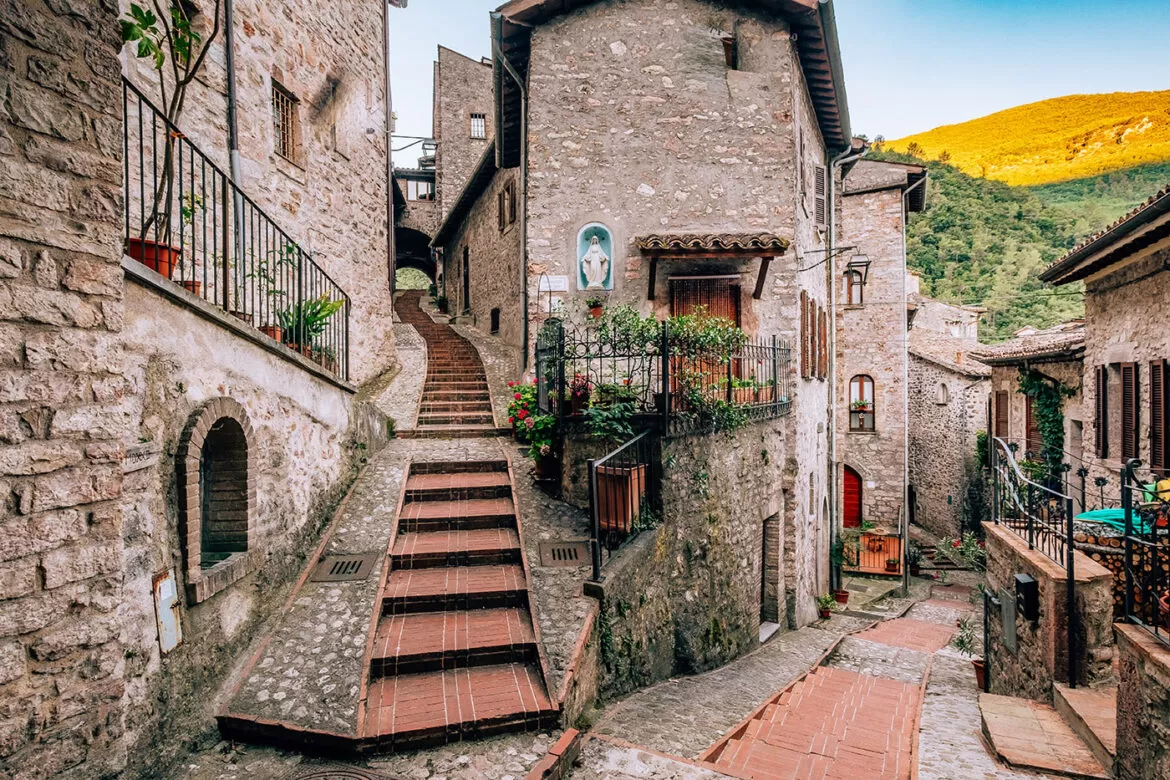
One thing’s for sure is it’s practically impossible to run out of things to do in Umbria. From exploring walled medieval hamlets to hiking in beautiful nature parks, it’s less about finding things to do than narrowing your list down!
So, where do you start in this magnificent Italian region? Don’t worry, I’ll share everything you need to know. In this comprehensive travel guide, I’ve gathered a bucket list of 36 of the best things to do in Umbria . There’s a good chance you won’t be able to fit them all into one trip, which is a great excuse to plan anotlher one.
To help you plan your Umbrian adventure, I’ve included a map of Umbria indicating all the places and activities mentioned in this guide. Make sure you save it in your Google account so you can easily access it during your trip.

Why you should visit Umbria
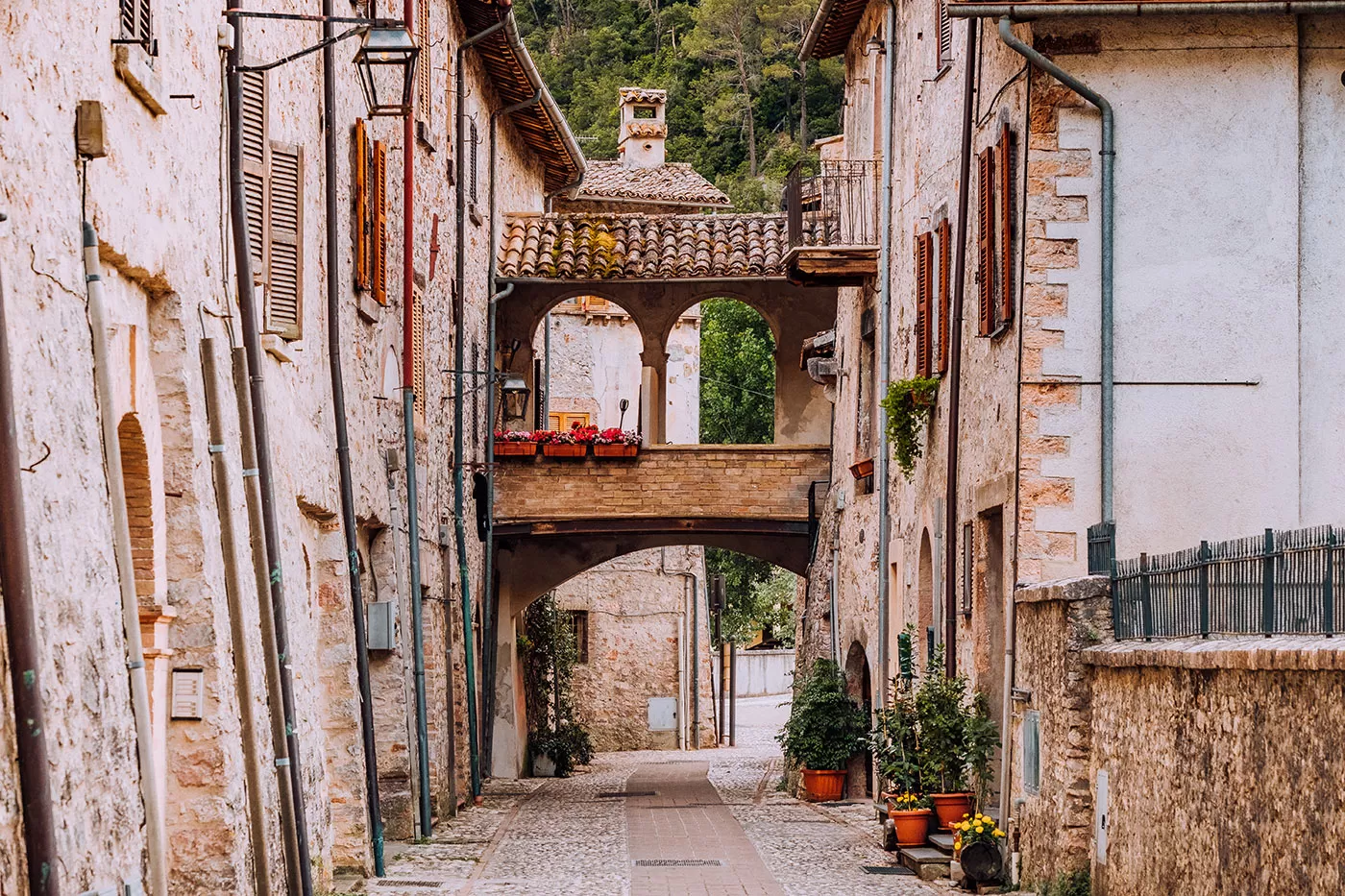
Across this corner of Italy, you’ll uncover exceptional natural beauty, fresco-clad churches, plates piled with cured meats, and a never-ending list of festivals. And the great thing is that, unlike its rockstar neighbour Tuscany, Umbria still maintains a wild, untouched feel, perfect for those who enjoy a slower, more laid-back pace.
How to visit Umbria and travel around
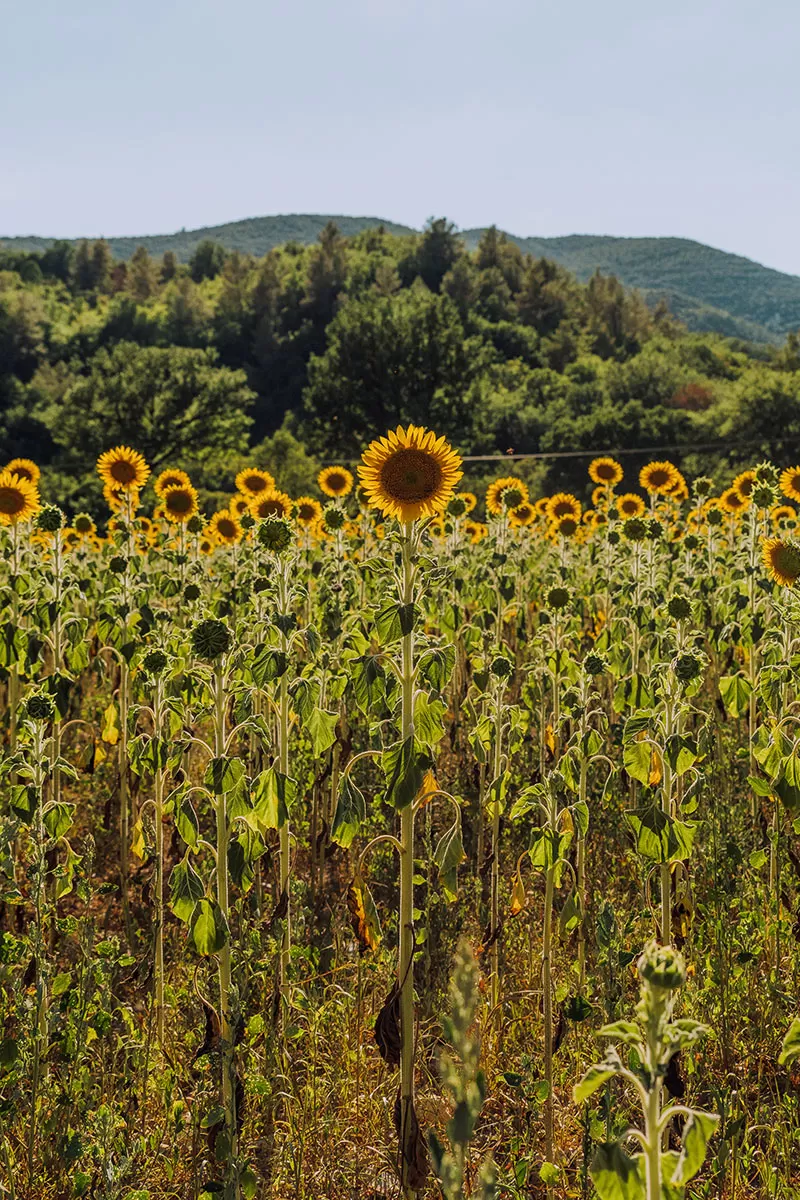
Fields of sunflowers dot the Umbrian landscape
Umbria is a relatively easy place to travel to and around. The San Francesco d’Assisi international airport in Perugia ensures connections with major European cities. Alternatively, you can fly into Rome or Florence and reach Umbria by train or with a rental car. Check availability and rent your car here.
The easiest way to explore the region is by car. This will allow you to make the most of your time there and give you the freedom to see all the best things to do in Umbria at your own pace. You can rent a car in Perugia ; from here, all key places in Umbria are within a 1-hour drive.
By public transport
Another way of travelling around the region is by public transport. There’s a good local bus network connecting the main towns and villages. Routes and timetables are available on the FS Busitalia website . Trains, too, are good options. The Frecciarossa high-speed line connects Umbria with major Italian cities. At the same time, regional trains ensure connections to all the main destinations within the region. Take a look at either the Trenitalia website or Trainline for more details and to book your journey.
You can purchase the UMBRIA.GO travel ticket which gives you unlimited trips throughout the Region. This includes urban and suburban buses, Minimetrò of Perugia, Trasimeno Lake ferry service, regional trains and the funicular in Orvieto. To get your travel pass, visit any Busitalia and Trenitalia ticket offices in Umbria or visit any of the authorized resellers here. ( Note: this page is in Italian. Click on the “ DOVE SI ACQUISTANO ” [WHERE TO BUY] tab for details)
By guided tour
Alternatively, if you’re based in any of the surrounding regions and short on time, you can join a guided day tour like this one from Rome which will ensure you see the highlights of Umbria without the fuss of organising it all yourself.
Map of Umbria
To help you plan your trip, here’s a map of Umbria that highlights everything listed in this article. You can also download it to your phone and take it with you.
Top things to do in Umbria
Umbria has so much to offer, but I’ve narrowed the list down to 36 of my favourites. You’ll find a good mix of the best natural, cultural, and historical attractions to be explored in Italy’s green region. So, here are the best things to do in Umbria that will help you make the most of the region.
1. Visit Perugia, the capital of Umbria
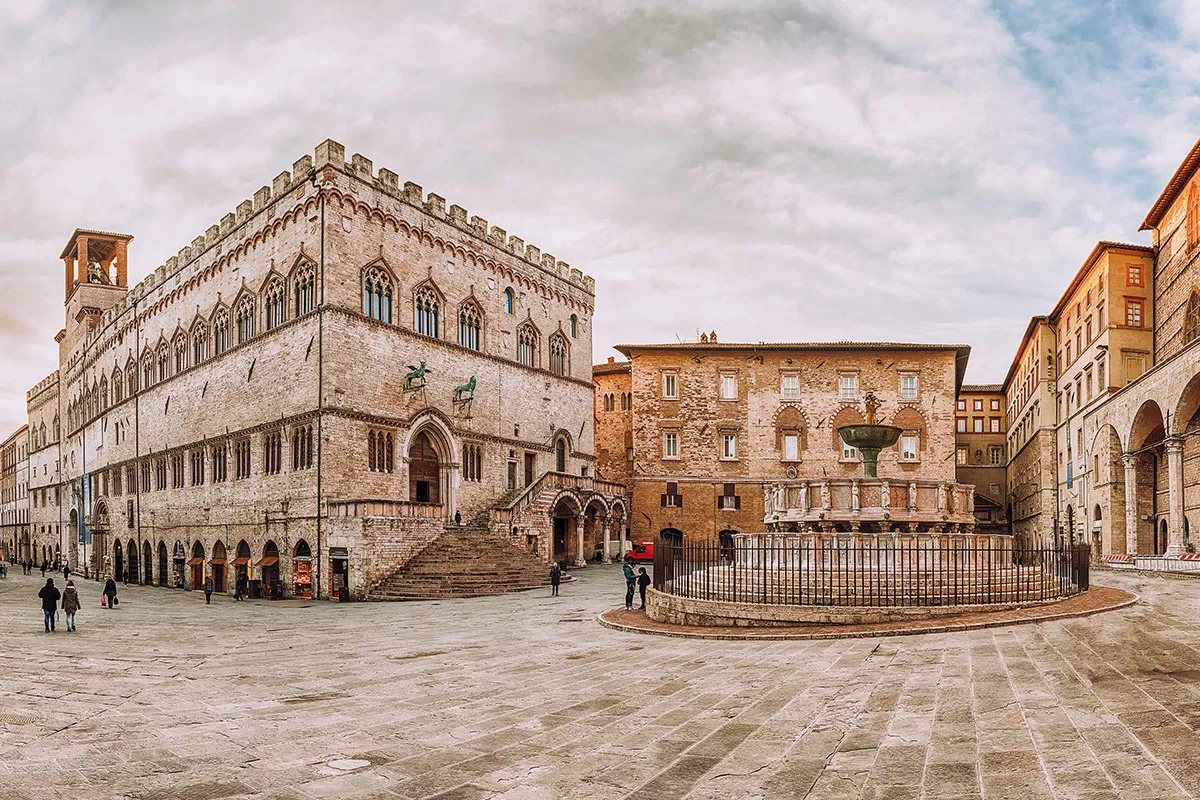
Piazza IV Novembre in Perugia
In the centre of Umbria, Perugia is the region’s main town. It boasts an impressive cultural history, with roots in its Etruscan past. The old town is packed with interesting sights, including the Palazzo dei Priori located in Piazza IV Novembre which hosts the prime art collection of Umbria’s National Gallery.
With one of Italy’s most prominent academic institutions and the first wine school in the world, the town has a cosmopolitan student population that makes it truly lively. Also, chocolate is an essential ingredient on local tables. The famous Perugina brand is based here and Eurochocolate , the biggest European festival dedicated to chocolate, takes place here every October.
Don’t miss: visit the Perugina Museum (Casa del Cioccolato Perugina), n ot just for the chocolate but to learn about the history of one of Italy’s beloved brands.
2. Discover Orvieto’s stunning cathedral
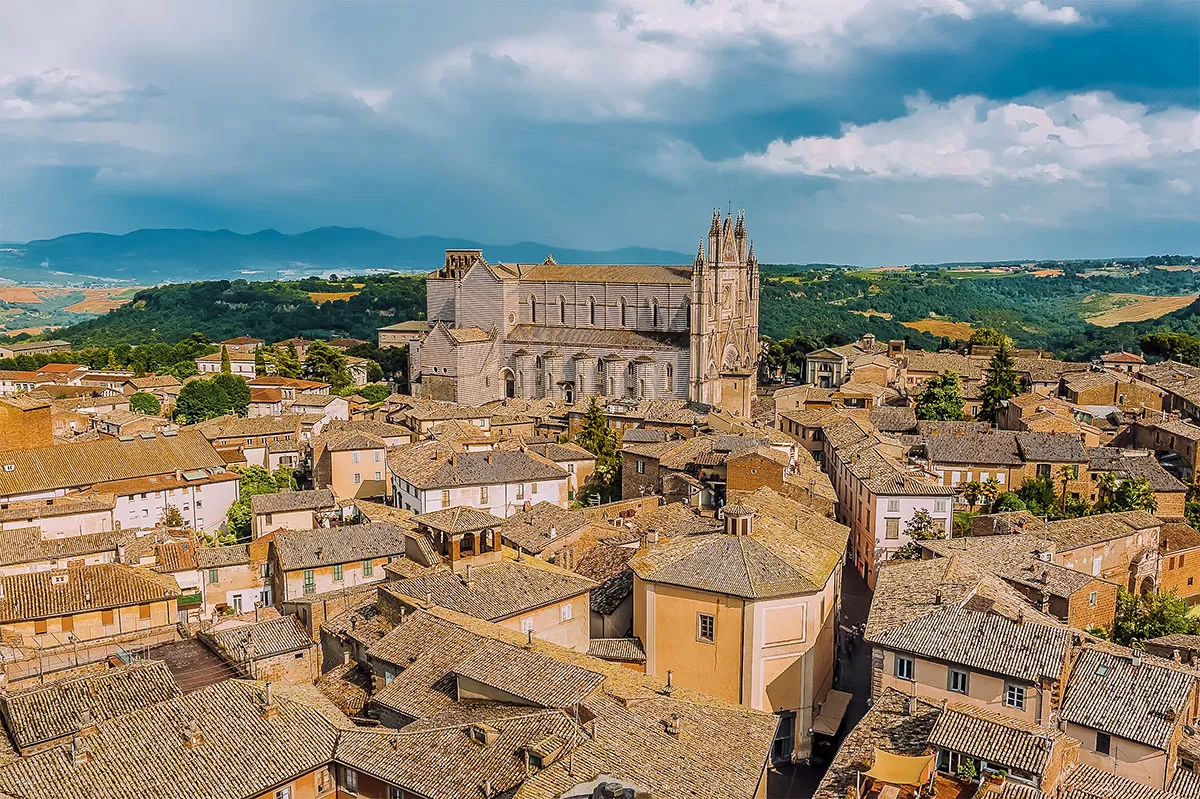
The town’s Gothic cathedral definitely calls attention to itself, adorning the main piazza with a grand display of spires, elaborate carvings, and stained glass, making it one of Italy’s most beautiful churches. Plus, its mosaicked facade is a visual treat.
Don’t miss: St Patrick’s Well (Pozzo di San Patrizio) is a unique piece of Renaissance engineering 200 feet deep and 42 feet wide, it was built in the 16th century to ensure the water supply was protected if the town was besieged. You can climb into it and admire the ingenious helix system of steps designed to make traffic flow efficiently. The round trip is 496 steps.
3. See Lake Trasimeno, the “sea” of Umbria
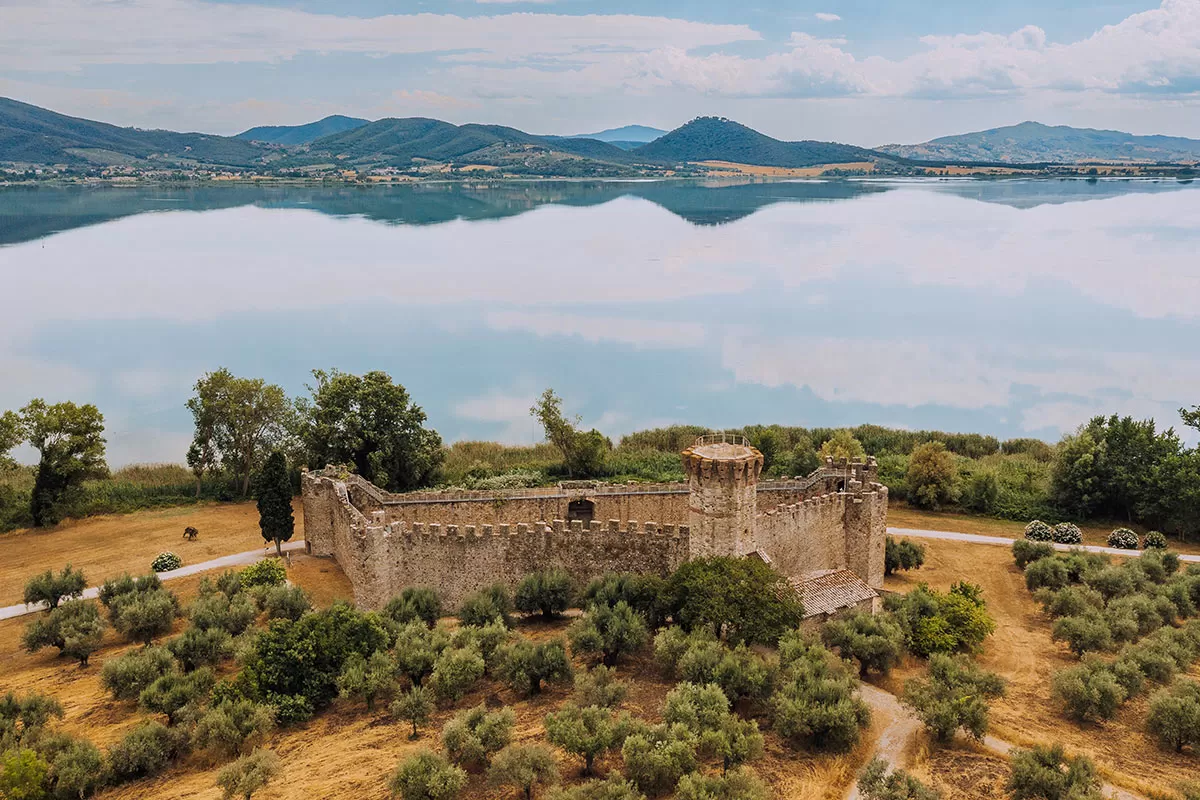
Isola Polvese Castello
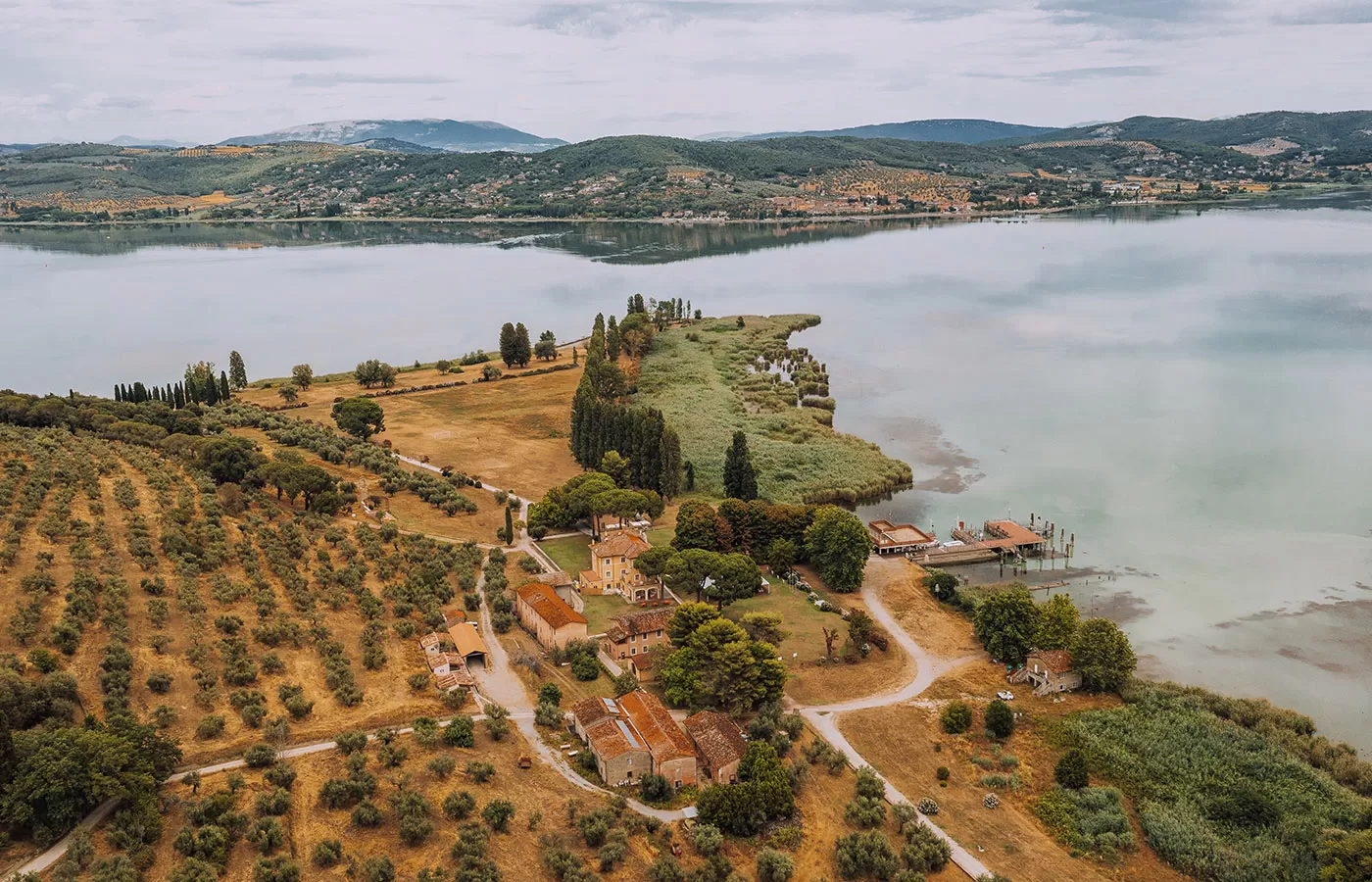
Today, all is calm and blissful here. The area was made a regional park in 1995 and is now the habitat of many fish and bird species. All around the lake, olive groves, sunflower fields and vineyards frame quaint medieval towns such as Passignano and Castiglione del Lago, which are well worth a visit.
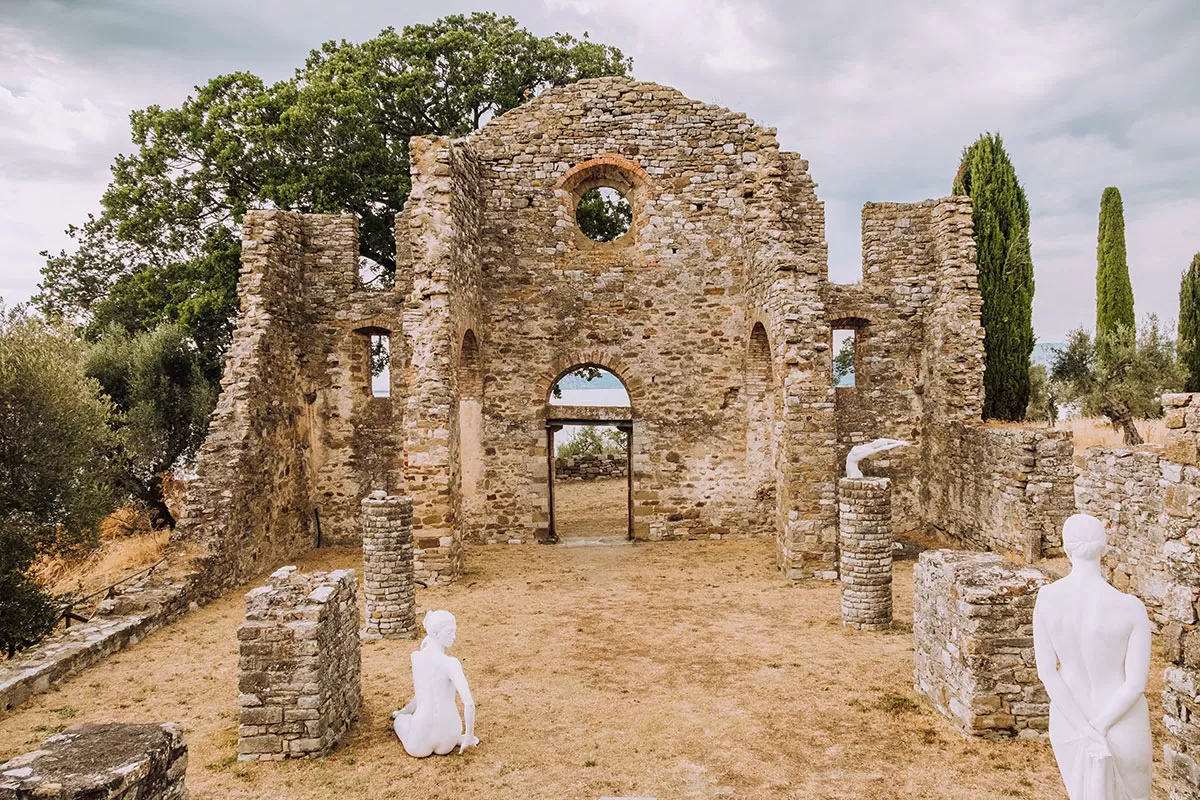
Monastero di San Secondo
Take a boat from the medieval village of Passignano site of the 14th-century Ponente tower, to reach Maggiore Island (which is still inhabited). This magnificent place with a fishing village dating back to the 15th century is also the location of the Romanesque church of San Salvatore (12th century), the church of San Michele Arcangelo (14th century) and Villa Isabella of the Marquis of Guglielmi.
Maggiore Island can also be reached from Tuoro sul Trasimeno, an ancient Etruscan city that became well-known as the battleground for the decisive stages of the battle between Hannibal and Caio Flaminio. Renaissance Palazzo Capra was erected precisely on the tomb of the Roman commander.
The largest island on the lake (there are three) is Polvese (from ‘ pol vento ‘, meaning ‘covered by wind’), which is not inhabited and is now a public park. It is also the location of the S. Secondo monastery, the Church of San Giuliano and a 14th-Century castle which was recently restored.
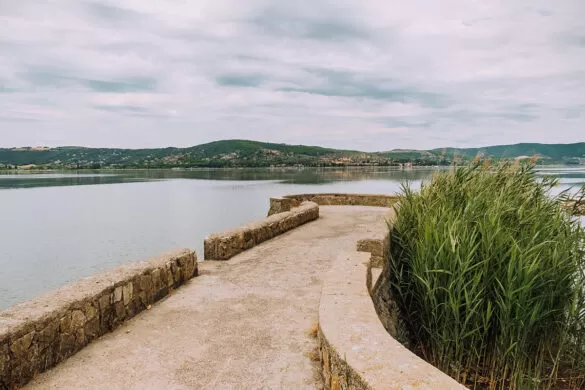
San Giuliano Church
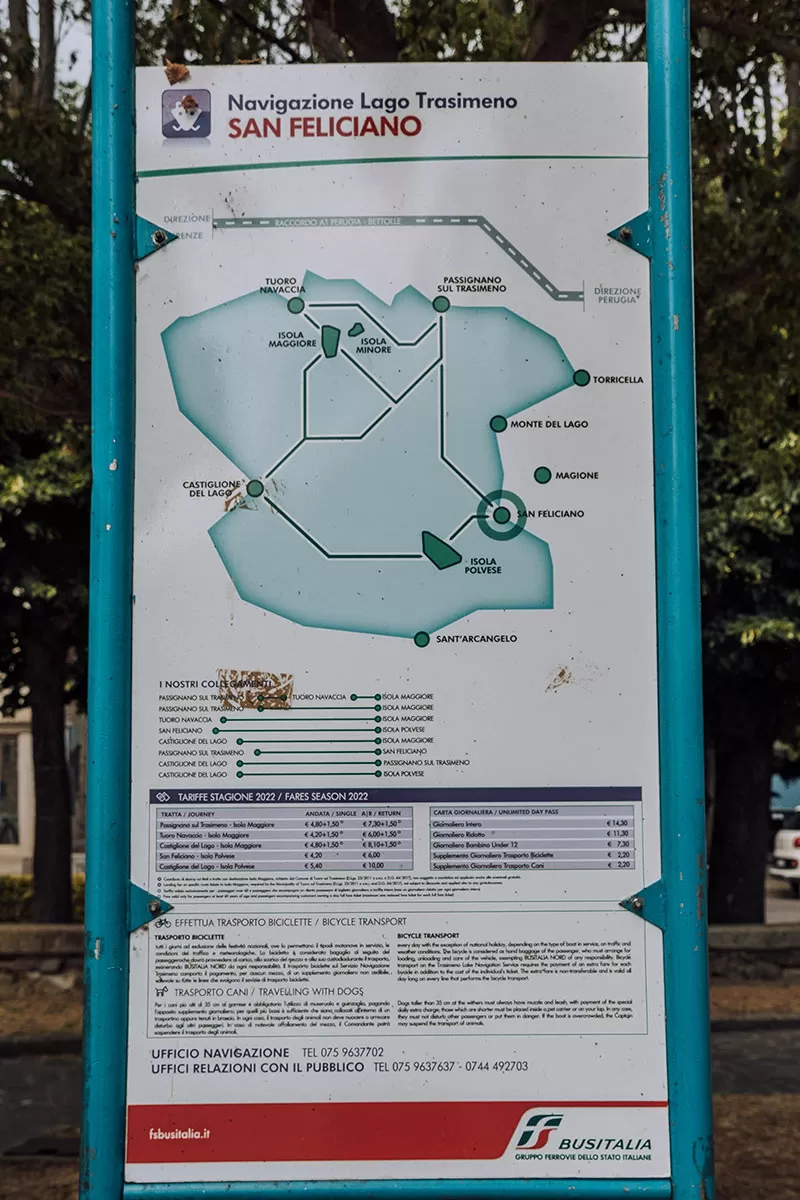
Ferry around Lake Trasimeno
Don’t miss: hop on a ferry and explore two of the beautiful islands dotting the lake. Check the ferry timetable here to plan your visit.
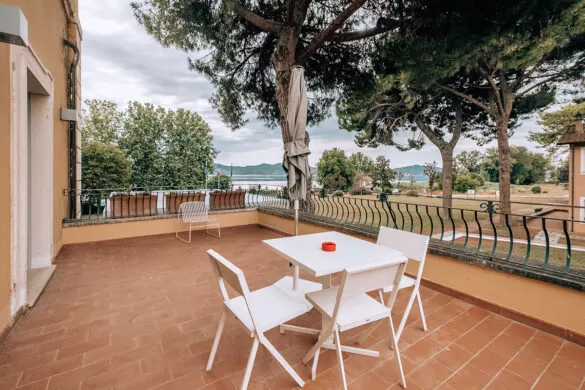
Extend your stay and spend a night or two at Villa Polvese Resort. Each suite is elegantly designed and furnished and comes with a cosy king-sized bed. Bathrooms are spacious and luminous, with hand-decorated majolica and a wide shower cabin. After waking up to lake-side views, enjoy a continental breakfast on the sun terrace before spending your day exploring the island on foot or bike. In the evening, tuck in for a delicious meal at the on-site restaurant, Dolce Agogia, for an opportunity to taste the flavours of the Lake. Check availability and book your stay here.
4. Experience traditional net fishing with a local fisherman
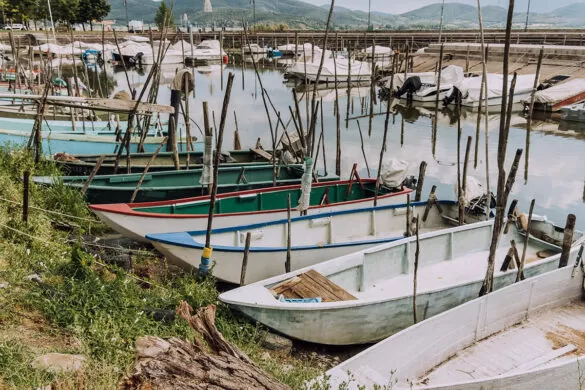
For a fascinating insight into Lake Trasimeno’s fishing culture and history, head to the village of San Feliciano, home of the Museo della Pesca sul Lago Trasimeno and join the fishermen of the Trasimeno Fishermen Cooperative (Cooperativa Pescatori del Trasimeno) for a memorable fishing adventure at dawn.
Here there are just 28 fisherman who engage in passive fishing, which has changed in 1,000 years. One of them, the charismatic Aurelio Cocchini (pictured below in blue), has been fishing on Lake Trasimeno since 1980. Aurelio explained to me, they simply lay down the nets and allow the fish to be caught without enticing them or rounding them up. This means each catch varies in quantity. They are then cleaned and filleteèd by hand. This is because the fish vary in size so industrial machines can’t be used even if they wanted to. This also allows for less waste, all supporting their ethos for the sustainability of the lake.
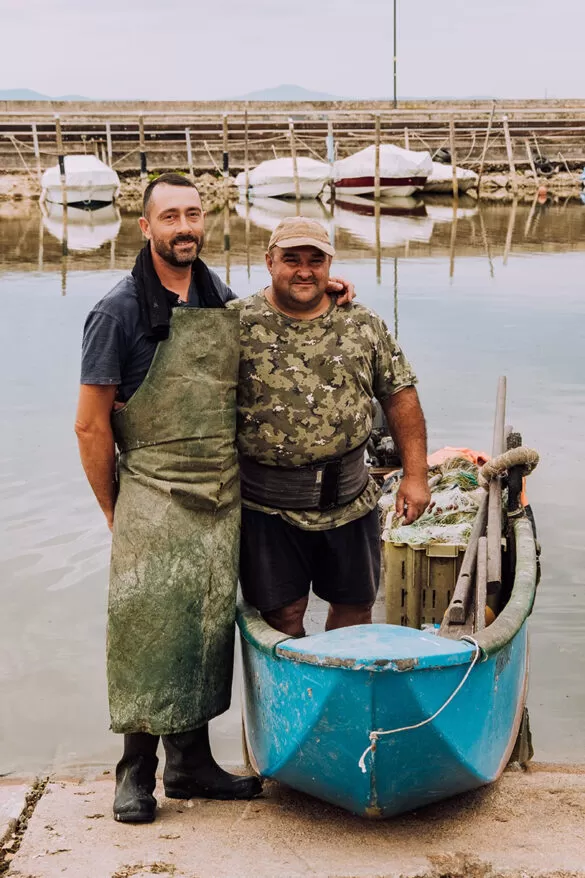
Aboard a traditional wooden boat, you’ll learn everything about lake fish and fishing techniques based exclusively on handmade nets called giacchi . The beautiful scenery around the lake provides the perfect backdrop to the experience.
Don’t miss: If you are in San Feliciano at the end of July, don’t miss the Sagra del Giacchio (Giacchio Festival) . It’s a popular event where you can enjoy delicious lake fish-based dishes.
5. See Polvese Fortress on Polvese Island Nature Reserve
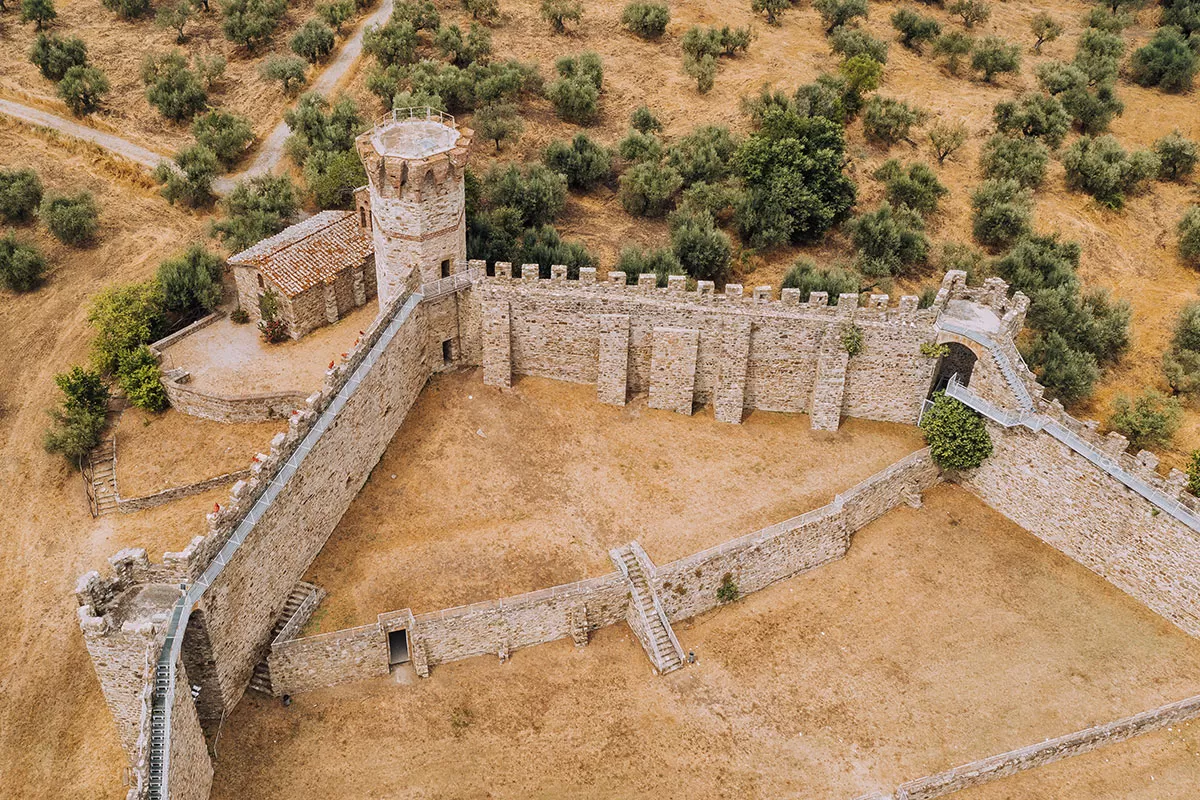
Hop on a ferry from San Feliciano and visit Polvese, the largest of the three islands dotting the placid waters of Lake Trasimeno. In just 10 minutes, you’ll feel like you’re in a green paradise surrounded by wildlife, lush oak woodlands, and millenary olive groves. Check the ferry timetable here to plan your visit.
The island was first inhabited by the Romans, as evident from the remains of opus reticulatum in the small church of San Giuliano. It’s guarded by a big 15th-century fortress, whose perimeter walls are all that’s left. Following the path to the top of the hill, you’ll also find the ruins of San Secondo, an ancient monastery dating from the 11th century.
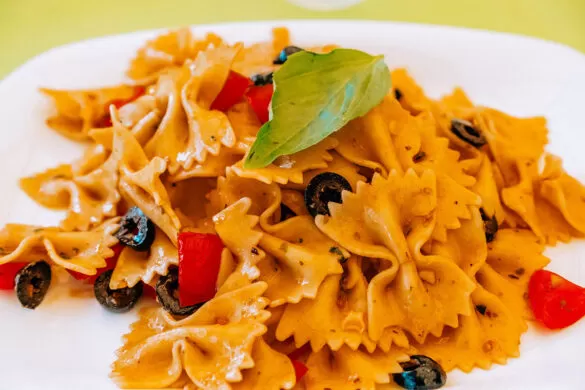
Don’t miss: Enjoy a unique dining experience at Impact 0 Beach Bar, the first place on the lake that lives off the land’s energy. Raw food is on the menu to reduce CO2 emissions, and the sound system runs entirely on solar power. Ferries run daily and depart every 40 minutes. Free parking is available at San Feliciano.
6. Explore the pretty hamlet of Monte del Lago
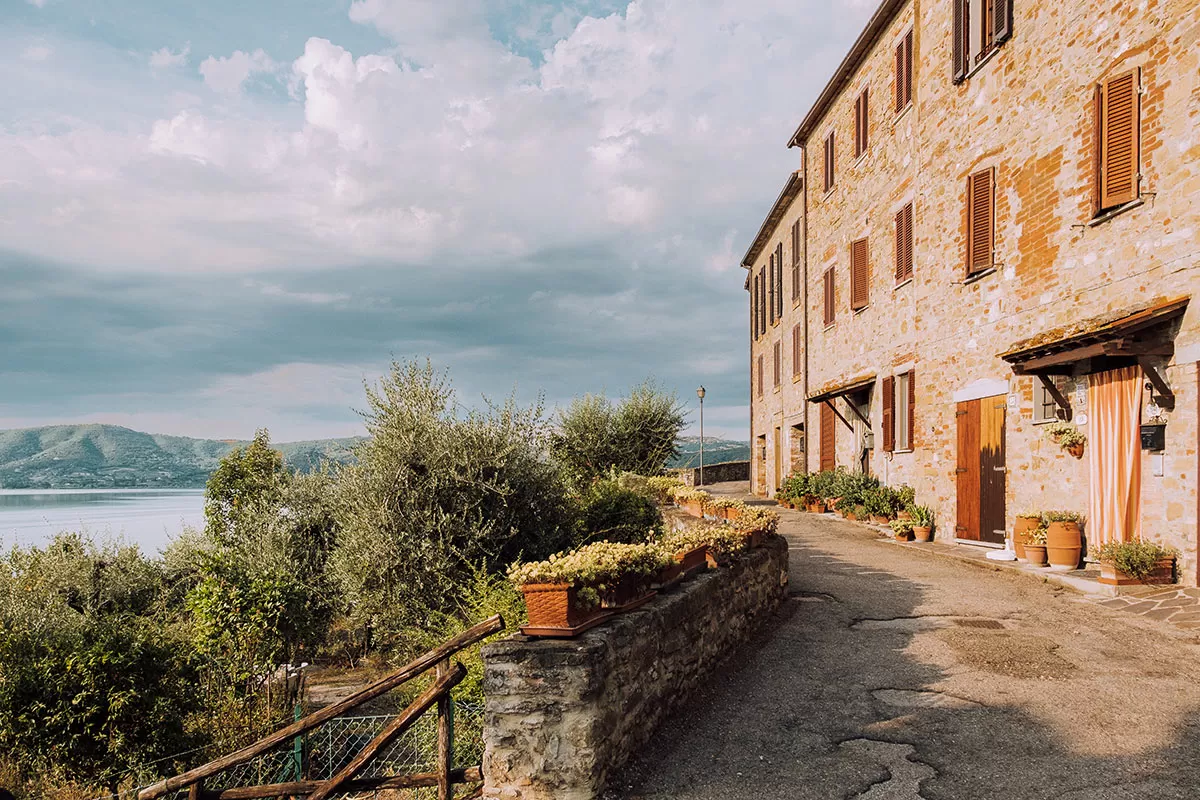
Poem by Vittoria Aganoor Pompilj
There are a lot of stories to tell for such a small center. Monte del Lago is where Bartolomeo Borghi wrote the first Italian geographical atlas, and where the love story of Vittoria Aganoor and Guido Pompilj took a tragic turn; after Vittoria died of cancer, Guido, very dramatically killed himself, just hours after her death. The village was also a favourite destination of composer Giacomo Puccini, who often stayed at Villa Palombaro.
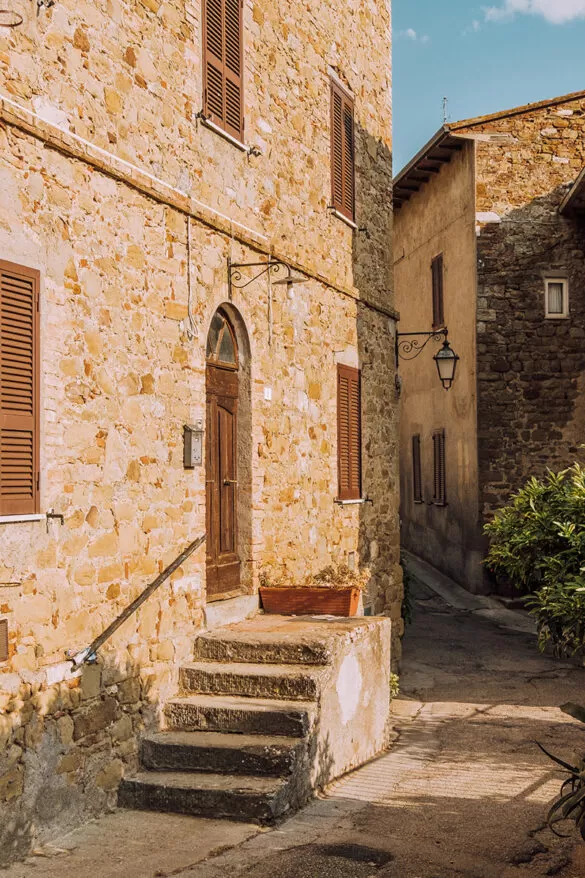
Don’t miss: the Church of Sant’Andrea is worth a look if you find it open. It boasts valuable frescoes dating from the 15th century and attributed to an artist from Perugia.
7. Sample local wine at the Decugnano dei Barbi winery
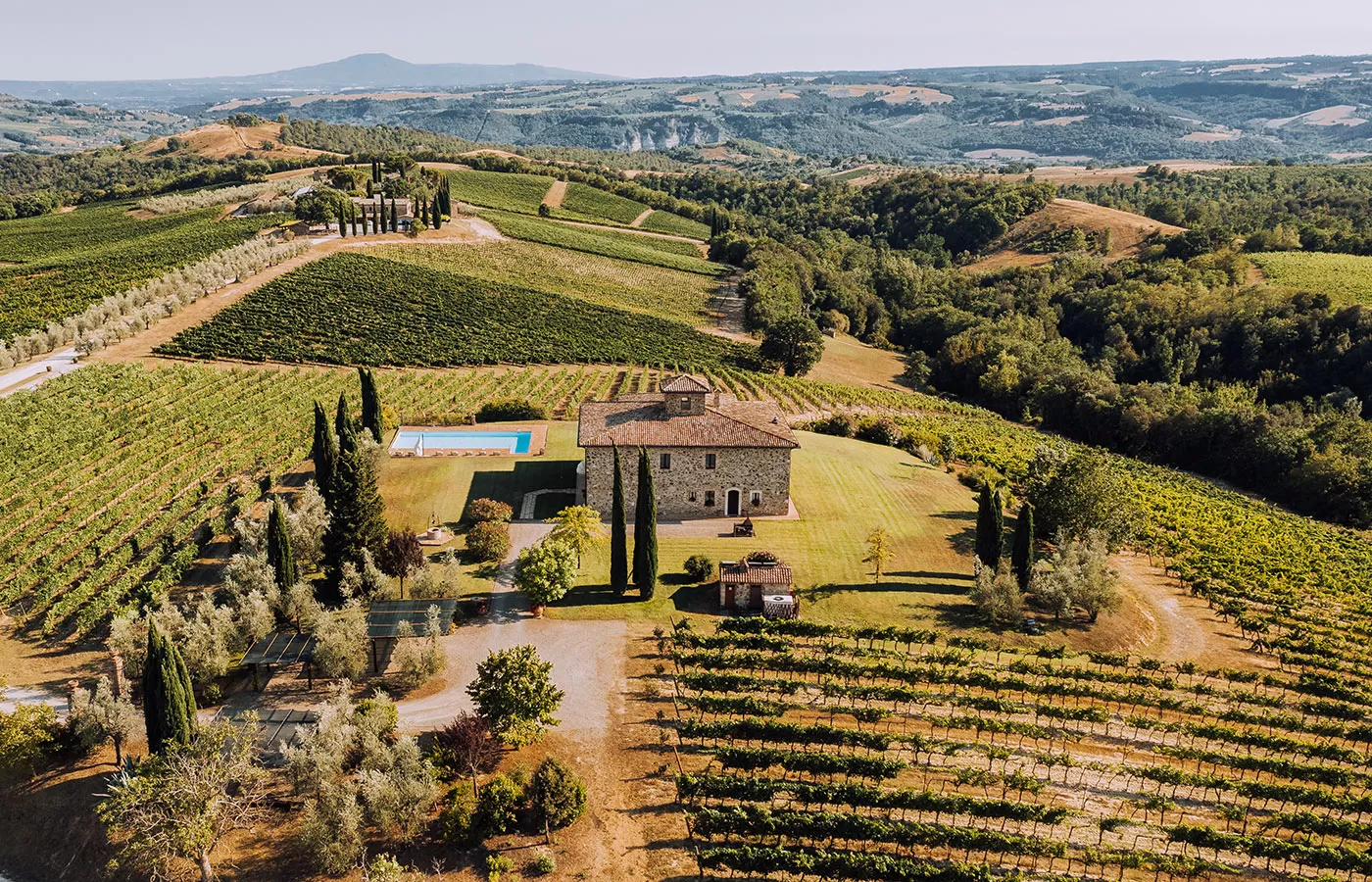
Decugnano is the name of the hill on which it’s located while dei barbi is the family name of the owner. The family are the winemakers who were the first to introduce sparkling wines to Umbria back in 1978. Today, they make elegant blends from a terroir that was initially an ocean floor millions of years ago and give the wine a distinctive character.
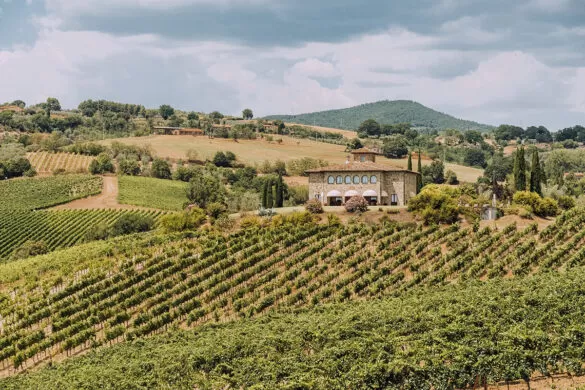
During your visit be guided by Maurizio who will take you on a journey as you savour their rose, white and red wines. He also explains the Etruscans who lived in the area created 18 caves which were most likely tombs. These were later used to store wine which slowed the second fermentation, creating something closer to a beer or cider, it was much sweeter and this sweet taste is a characteristic in Umbrian wines.
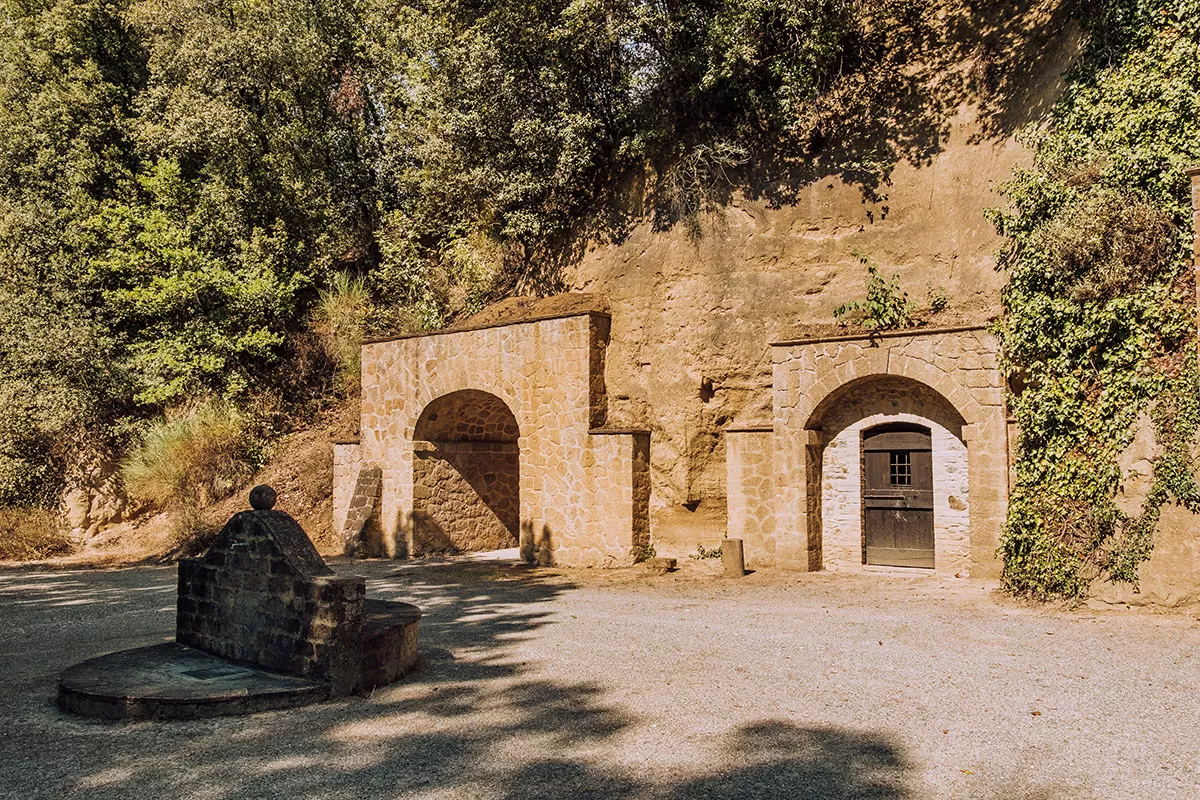
Etruscan caves
Since this area was once on a sea bed some 3.5 million years ago, when you visit the repurposed caves, you can actually spot sea shells in the layers of the walls as the sea bed rose and rose throughout the Millenia.
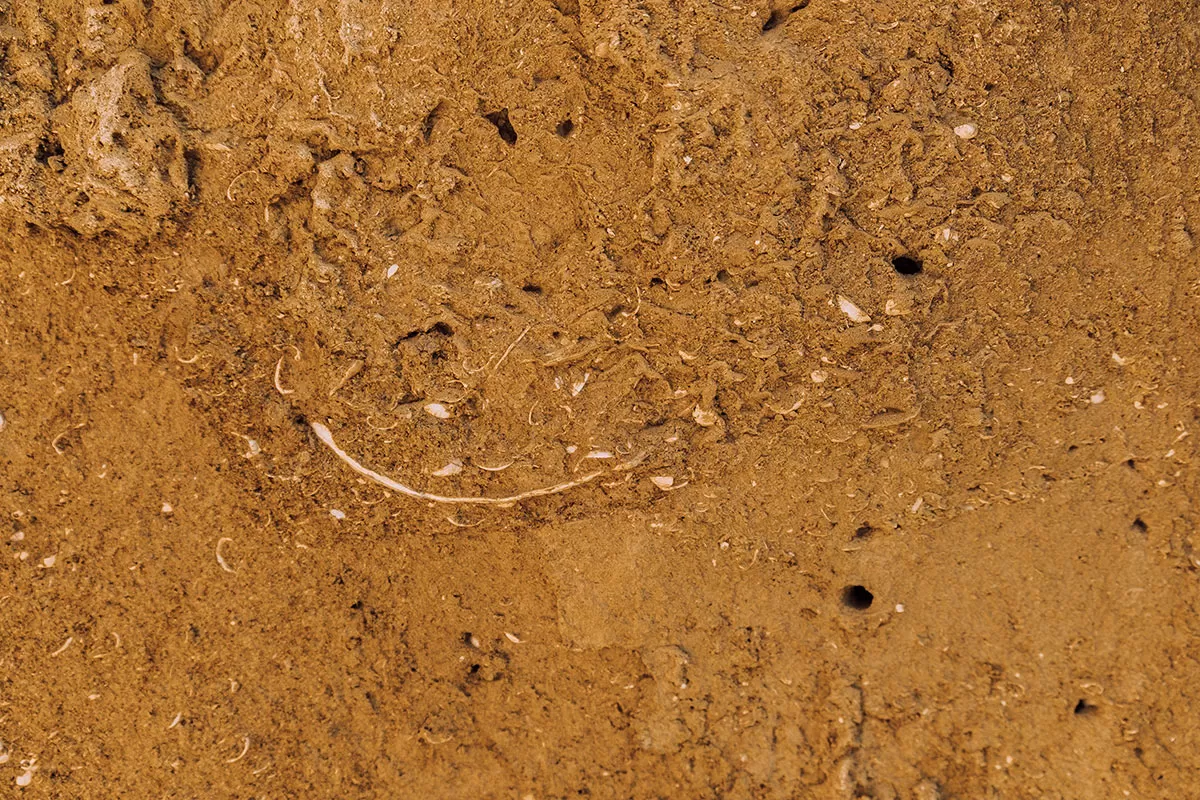
Spot the sea shells in the walls
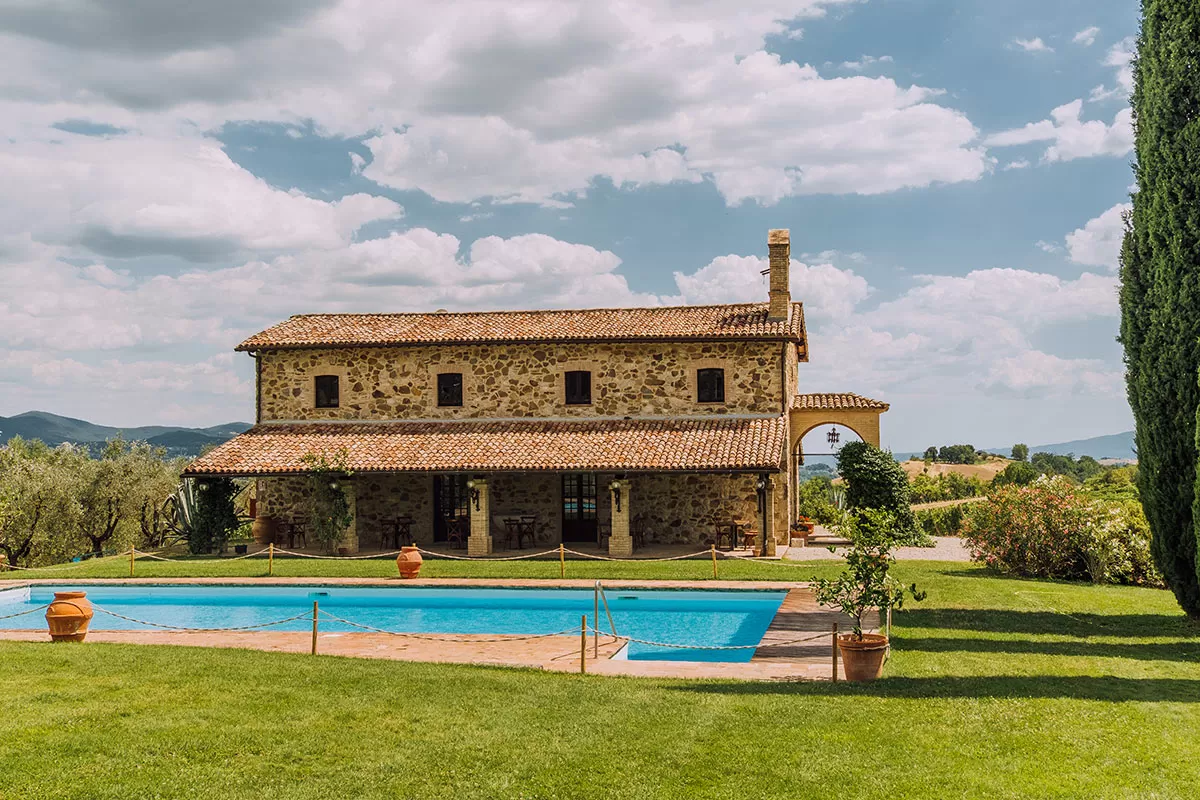
For more information and to book a tour, visit: decugnanodeibarbi.com
8. Visit an olive oil mill
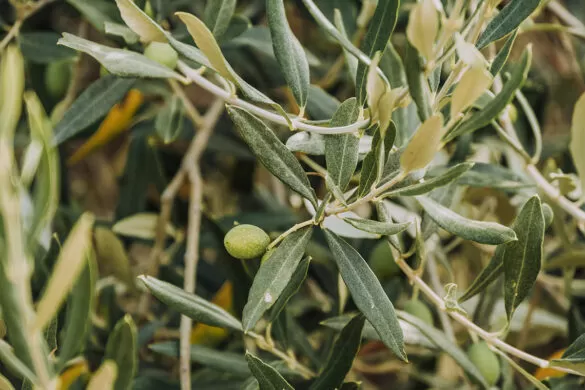
What would Italian cuisine be without olive oil? And since the one produced in Umbria is appreciated worldwide for its quality and texture, visiting a local oil factory is one of the best things to do while touring the region.
The best place to learn about Umbria’s “green gold” is Frantoio Fattoria Luca Palombaro , an olive mill and farm that’s been producing high-quality extra-virgin olive oil from its estate in Monte del Lago for almost a century. The whole process is handled personally by the family, who only use olives grown on their property. The Fattoria has approximately 12,000 olive trees that reach across 200 hectares of these splendid hills that surround Lake Trasimeno in the heart of Umbria.
They produce Trasimeno DOP (Protected Designation of Origin) extra virgin olive oil, and dolce agogia which is only produced here. It’s dolce (meaning, sweet) which means it’s perfect to consume with fish dishes over meat.
Don’t miss: After the mouthwatering olive oil and wine tasting, visit the ziraia , a room filled with stone mill-wheels, antique presses, and century-old oil jars all representing Italian olive oil made according to tradition.
9. Visit the Olive Oil Museum in Torgiano
To learn about local olive oil in more detail, book a visit to the Olive Tree and Olive Oil Museum housed in an old olive oil mill in the village of Torgiano. Using archaeological finds, books, and other materials, it retraces the history of the olive tree and olive oil.
The exhibit covers the mythological origins of this plant, its production, diffusion, and different uses. There is also an extensive collection of oil lamps, with some dating from pre-Roman times, and a section dedicated to the use of oil in traditions and folklore.
Don’t miss: one of the top pieces on display is an Attic alabastron from the 5th century BC decorated with a beautiful red pattern. For more information visit: muvit.it/museodellolio
10. Enjoy old-school local cuisine at Relais La Fattoria in Castel Rigione
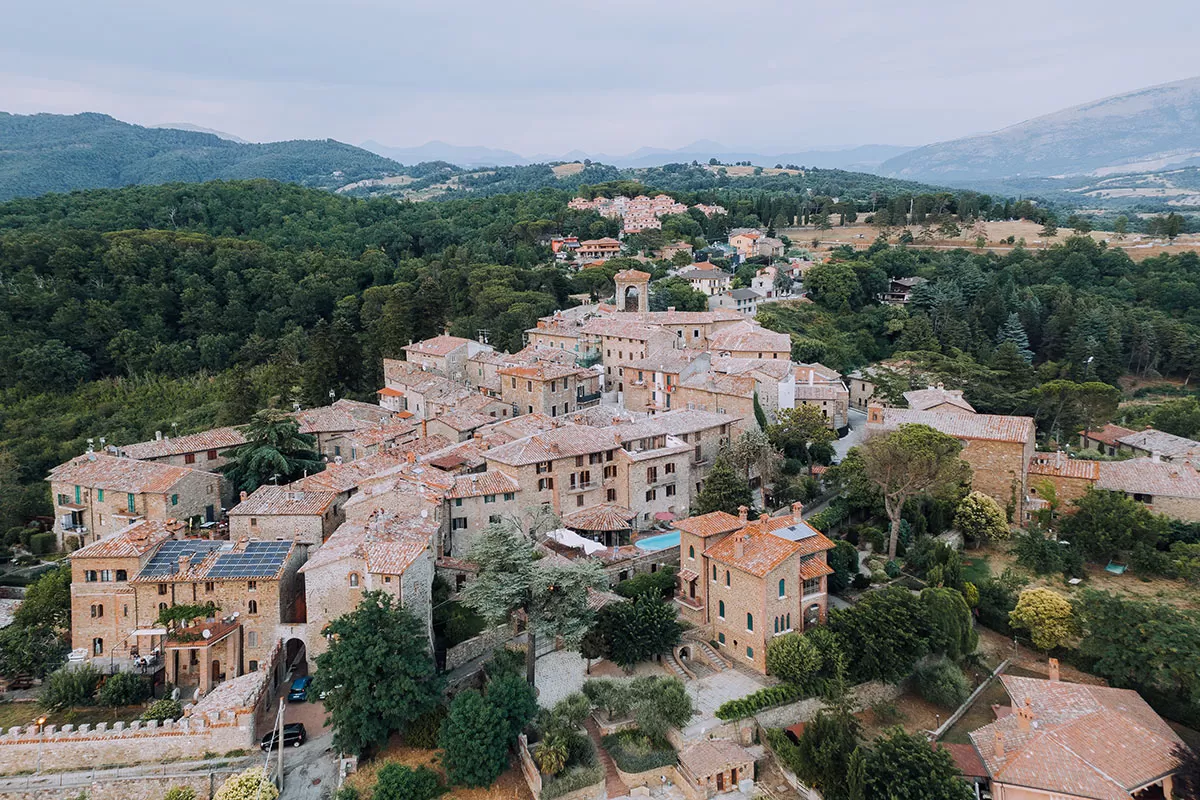
Castel Rigione at sunset
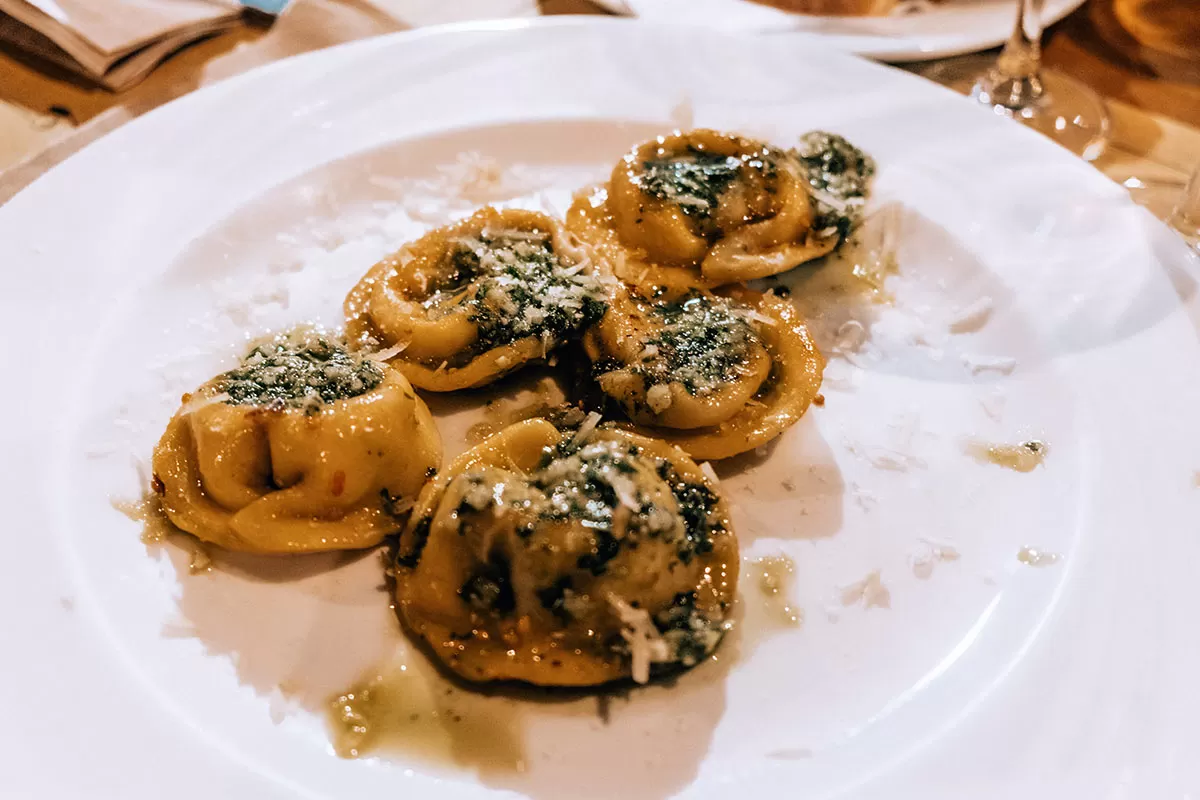
Relais La Fattoria is the kind of place that evokes nostalgia for the past. It’s located in the hilltop village of Castel Rigone, on the remains of an ancient stronghold that once guarded the entire valley, and with gorgeous views of Lake Trasimeno. Its restaurant, evocatively called “Da Lidia, the kitchen of the past”, serves traditional staples of Umbrian cuisine made according to tradition. On the menu, you’ll find delicacies like tagliatelle with Umbrian ragout, lamb cooked in Rubesco wine, and Norcia-style fusilli pasta.
Don’t miss: the most indulgent treat on the menu is the Perugina chocolate salami, a true delight for sweet-toothed guests.
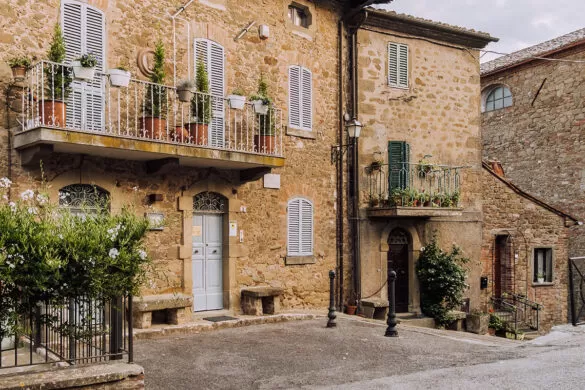
11. Journey to the Middle Ages in Bevagna
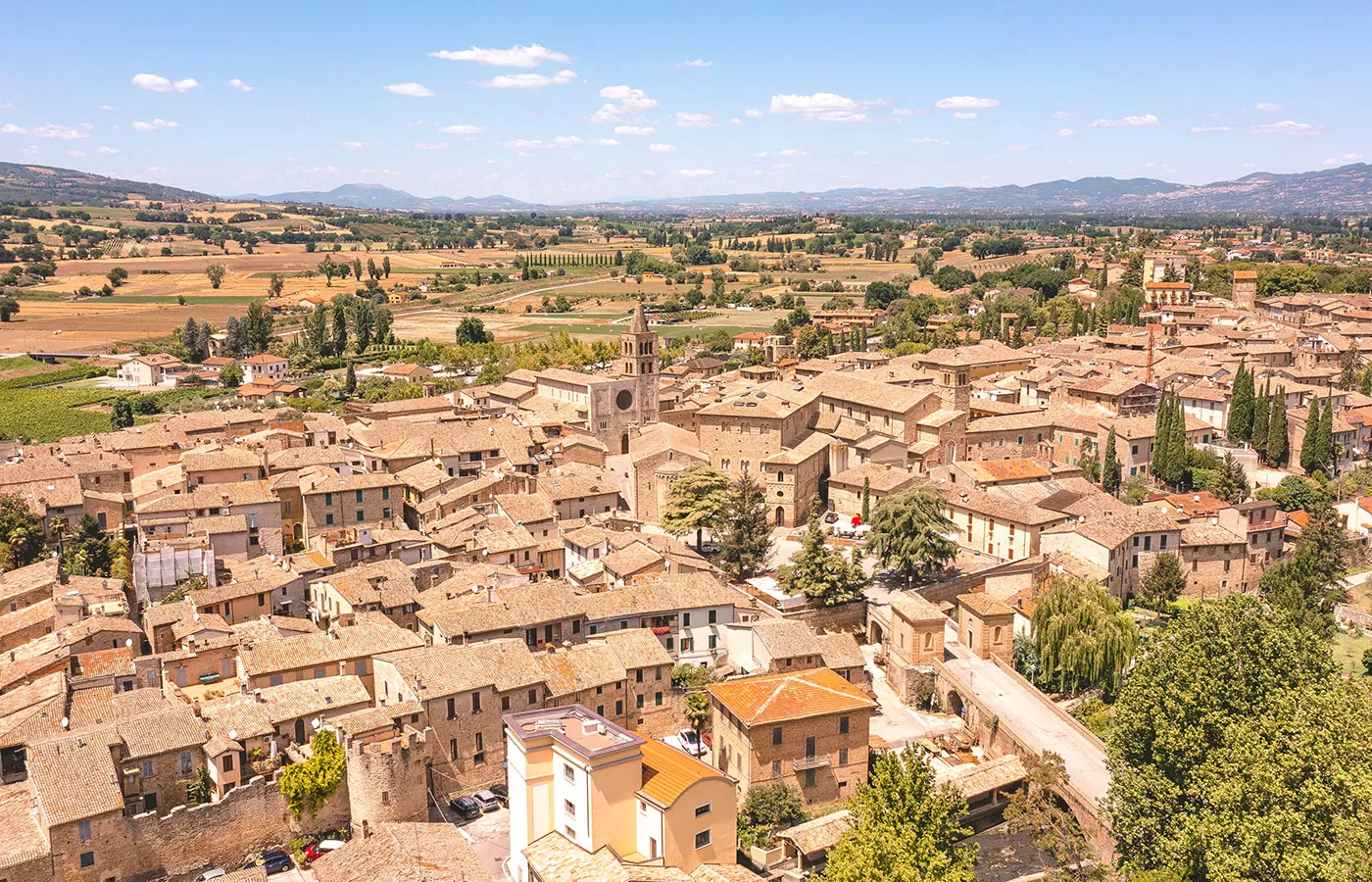
Chiesa di San Michele Arcangelo
Bevagna is one of the best towns to visit in Umbria for its Medieval character and ancient Roman roots. There are beautiful stone buildings, atmospheric alleys, and ancient monuments revealing hundreds of years of history – including a mosaic floor from a Roman public bath dating from the first century AD during the time of Emperor Hadrian.
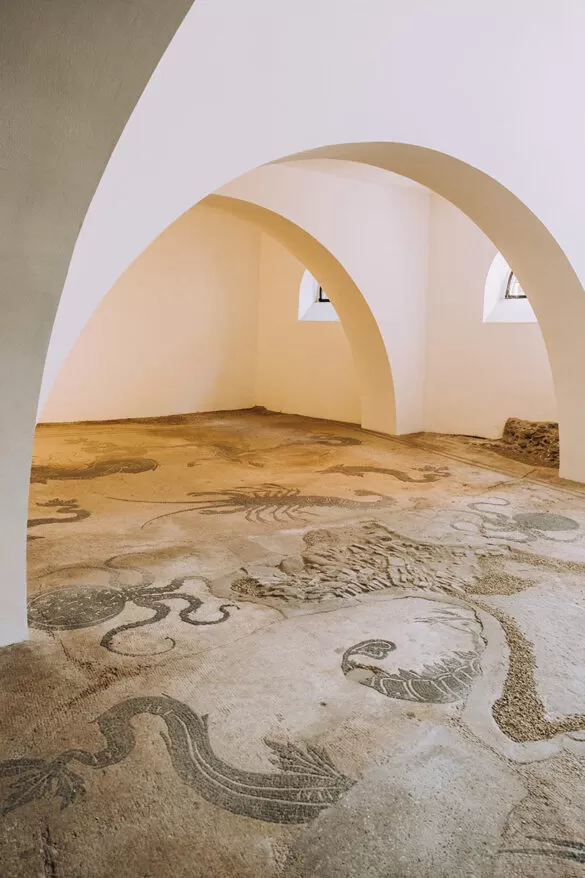
Monastero Delle Agostiniane Di S. Margherita
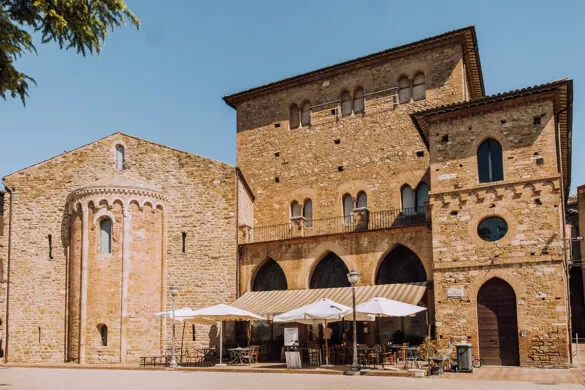
In June, the village celebrates its old crafts such as hemp, money, silk and candle production with the Mercato delle Gaite , a unique festival that takes visitors on a journey into medieval daily life through the reconstruction of workshops and locals dressed in period customs.
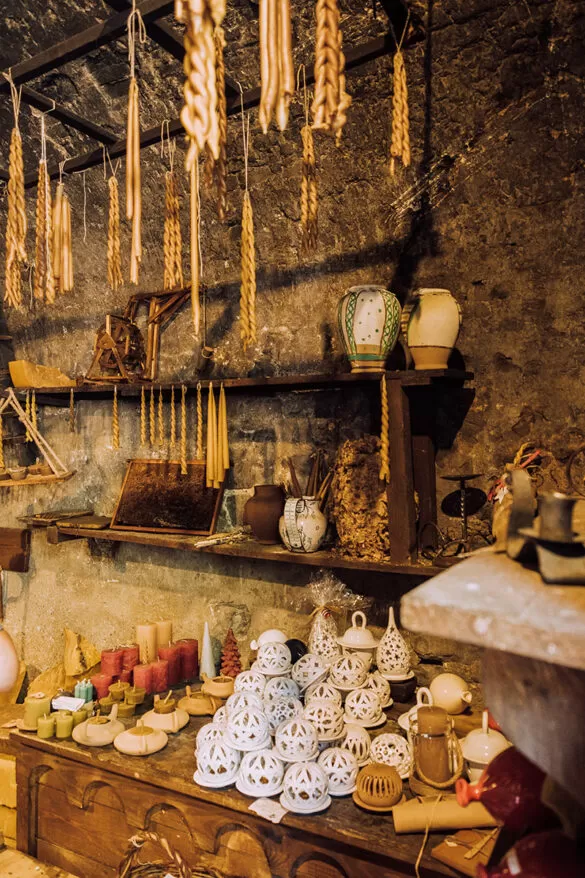
Don’t miss: treat yourself to a delicious plate of stringozzi pasta with artichokes, pork jowl, and pecorino cheese at Le Barbatelle , a wine bar in the centre of Bevagna specialised in seasonal dishes paired with natural wines.
12. Visit Scheggino and go truffle hunting
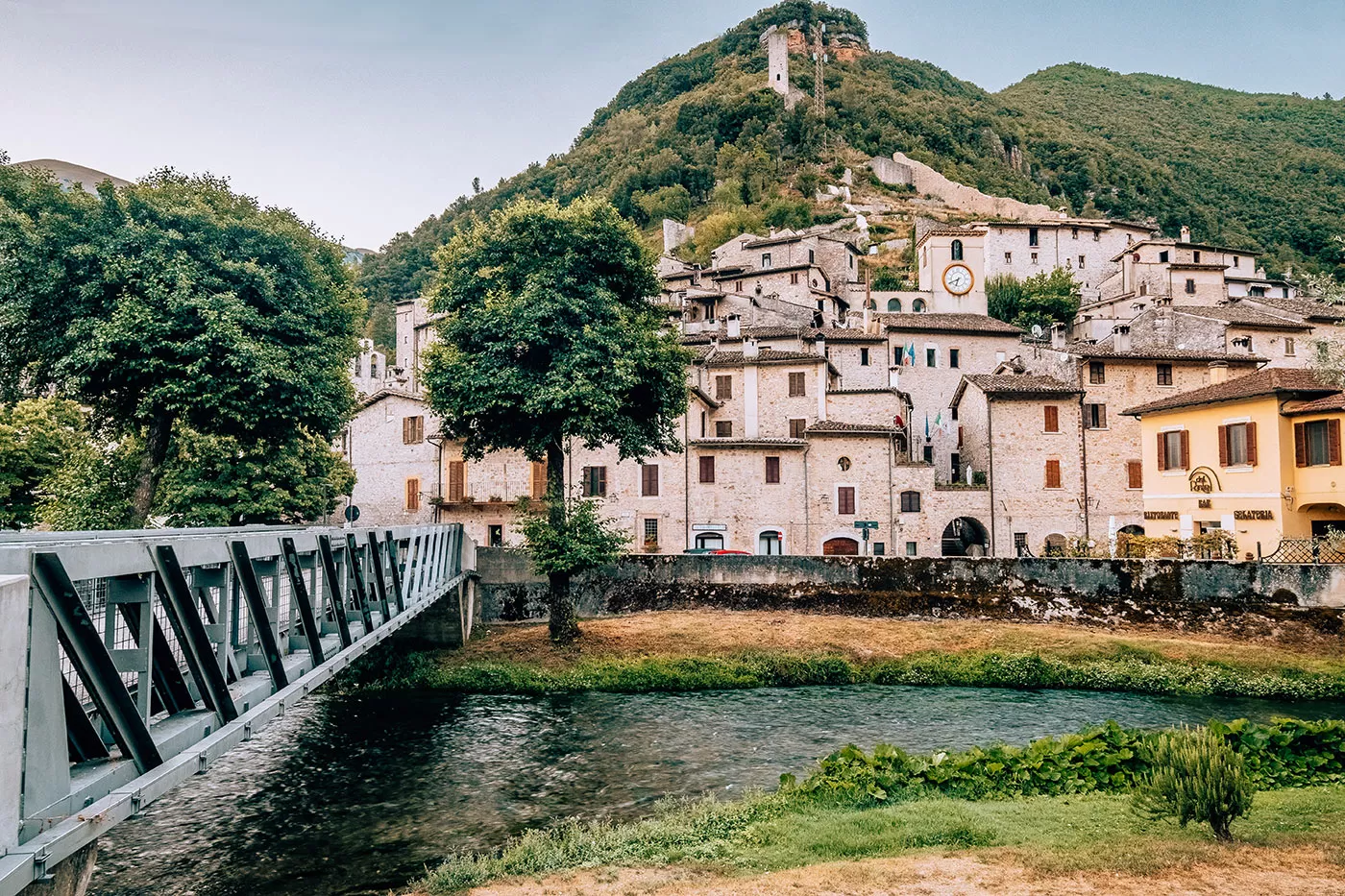
The old town is a little jewel of stone houses and colourful alleys. A steep path leads to an ancient fortress that dominates the village from above. A top sight in Scheggino is the 12th-century Church of San Nicolò, which has frescoes by Spanish painter Giovanni di Pietro, who trained under Perugino.
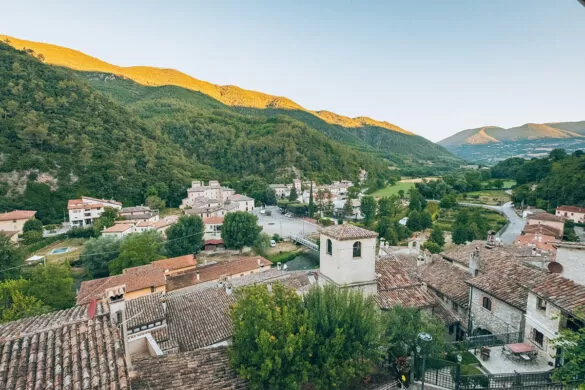
Don’t miss: Visiting the town of truffle isn’t complete without some truffle-based meals, and you can’t go wrong with ristorante del Ponte Scatolini . The menu offers a great selection of truffle dishes, from classic tagliolini to trout and omelettes. Another great truffle-filled menu is Borgo 209, located in Piazza Carlo Urbani it has lovely views of Scheggino from its front terrace.
Why not stay the night? Boasting beautiful views of Valnerina, Torre Del Nera Albergo diffuso & Spa is a hotel with each room and apartment spread throughout the town. I stayed here for two wonderful nights in one of their country-style rooms. There are also 16 independent “houses”, each named after the original inhabitants and featuring their family crest. Apartments feature a log fire, rustic furnishings in wood and stone, and a fully fitted kitchenette. Two apartments are located in a former 13th-century lookout tower. Check availability and book your stay here.
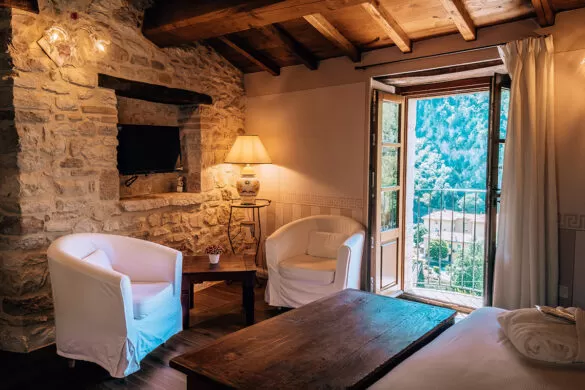
13. Become a cheesemaker for a day
Simple, genuine, and characterful, Umbrian cheeses are a staple of local cuisine and boast an ancient history. Local pecorino, for example, was already mentioned by Pliny the Elder in the 1st century AD when describing the various cheeses known in Rome.
Visiting a cheese factory is definitely one of the best things to do in Umbria. Many organic farms and artisanal workshops open their doors to visitors who want to learn how cheese is made. One is Caseificio Broccatelli , a family-run business that has been making cheeses since the 1950s.
Don’t miss: stock up on pecorino and caciotta , the region’s most popular cheeses. These make for wonderful gifts and souvenirs! Plan your visit here
14. Explore Valnerina with a memorable mountain bike experience
Featuring ancient abbeys, medieval hamlets, and spectacular waterfalls immersed in pristine nature, Valnerina is a stunning mountain valley bordering Le Marche in southeastern Umbria. Crossed by the Nera River, it offers timeless sights like the Plain of Castelluccio di Norcia and the Marmore Waterfalls.
SpoletoNorcia MTB Experience , the biggest cycling event in central Italy, is a great way to explore this part of Umbria. Hundreds of bikers and nature lovers come here every September to ride the four different routes around the old Spoleto-Norcia railway, which range from 10km to 65km.
Don’t miss: If you can’t make it to the event, you can explore the beauty of Valnerina at any time by using the permanent trails. You can easily rent a bike at this handy bike point or bring your own and move around with the Bus & Bike service .
15. Explore Umbria on two wheels

Exploring Vallo di Nera on a bike tour
While there are do-it-yourself options, I actually recommend joining a tour with Ciclostazione who offer everything from half-day to multi-day bike tours along the old railway between Spoleto-Norcia and the Green Way of Nera River. For something more personalised, you can get a customised cycling route and itinerary based on your needs and preferences, including historical, cultural, and culinary delights. Choose from mountain bikes, and e-bikes and if you’re a family you can add a child seat. I joined a 3-hour afternoon tour along the old railway with Luca where our group chose to visit Vallo di Nera one of the borghi più belli d’italia (most beautiful villages in Italy) and wow is it beautiful! For more details , book your trip here.
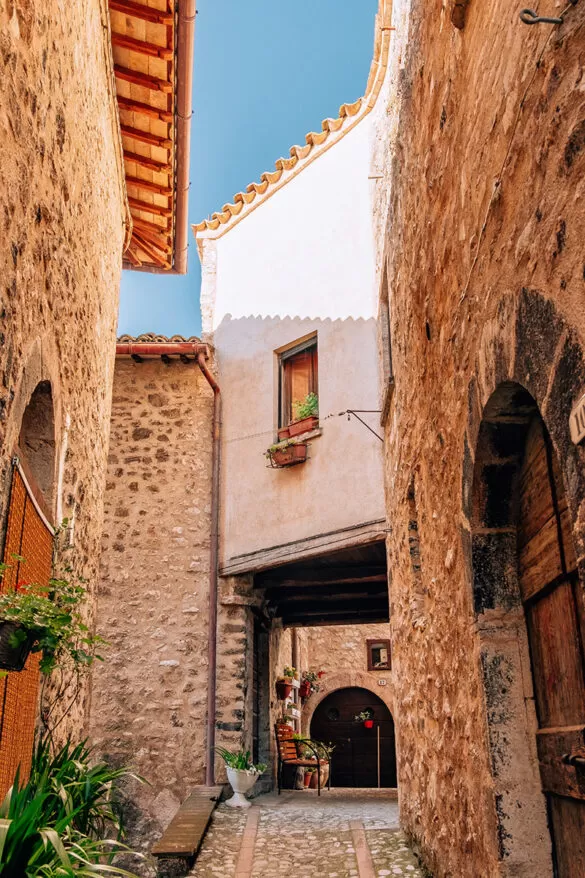
16. Take the Gorges of River Nera trail
There is no better introduction to the great outdoors of Umbria than taking the Nera Gorges trail. This pathway winds along the Nera River, revealing enchanting corners. You’ll find it near the town of Narni and is one of the best things to do in Umbria for nature lovers.
The trail unfolds through the old railway tracks running along the Nera River for 5km. You can do it in many ways: trekking, running, mountain bike and horseback rides, and canoeing. All around, the landscape is fabulous and reveals exciting attractions such as the remains of a Roman harbour and caves once inhabited by hermits.
Don’t miss: Along the trail, you can see an ancient Roman port and shipyard as well as the ruins of old water mills at the hamlet of Stifone.
17. Sleep in a former monastery in Ferentillo
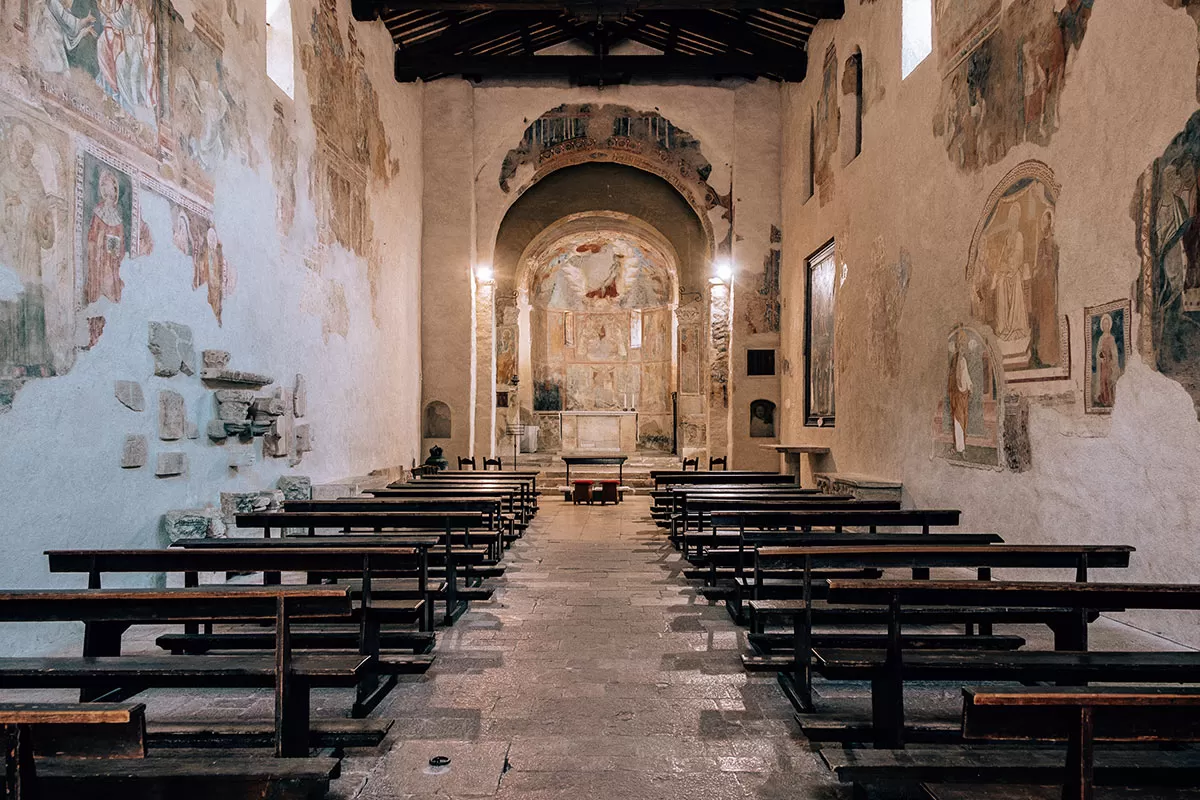
Chiesa dell’Abbazia di San Pietro in Valle
Ferentillo is a village of very ancient origins. Located in Valnerina Park, it’s perfect for outdoorsy types who want to try their hand at free climbing, canoeing, and rafting. There are also interesting sites to explore including the Museum of the Mummies below the Church of Santo Stefano.
Ferentillo’s history is closely tied to that of the Abbazia San Pietro in Valle (Abbey of San Pietro in Valle), a medieval monastery built on the site of a cave where hermits lived between the 4th and 6th centuries. The Abbey Church of San Pietro in Valle is one of the most important monuments in Umbria. Here you’ll find three tombs of hermit saints and the largest collection of Roman sarcophagi of Umbria and Romanesque frescos which inspired Giotto’s work in Assisi. Thanks to its location, it boasts commanding views of the valley below.
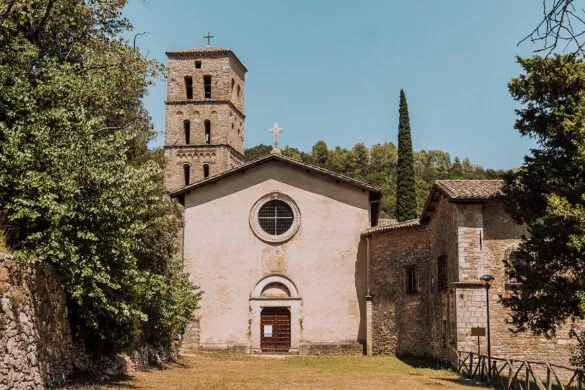
The former monastery has been completely restored and offers luxury lodgings to travellers seeking a peaceful retreat. What could be more unique than staying in a former monastery? Now home to Relais Abbazia San Pietro In Valle, a residenza storica (historical residence), this hotel is run by three sisters (Federica, Letizia and Chiara) and is a popular choice for weddings and special events thanks to its gorgeous panoramic garden. Offering everything from standard rooms to family and decadent suites, there is something to suit all budgets. Note that the hotel is only open from April to October. Check availability and book your stay here.
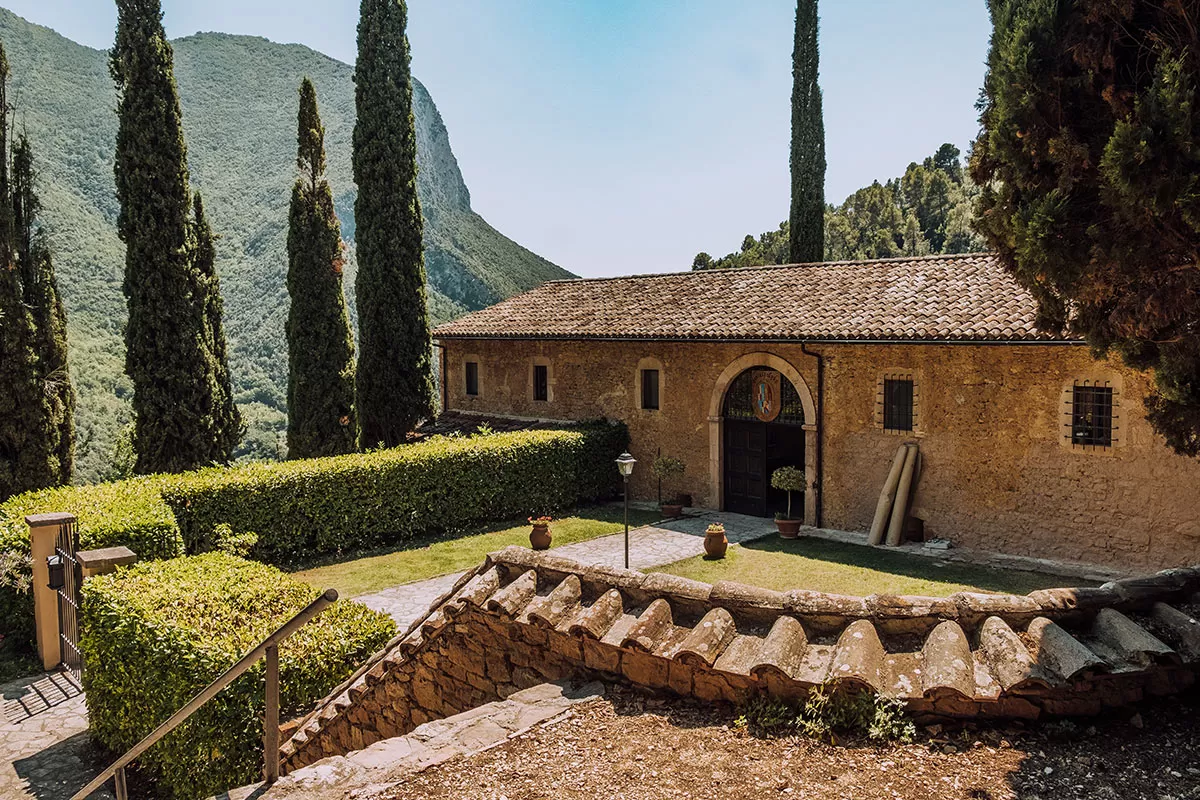
18. Go underground in Narni
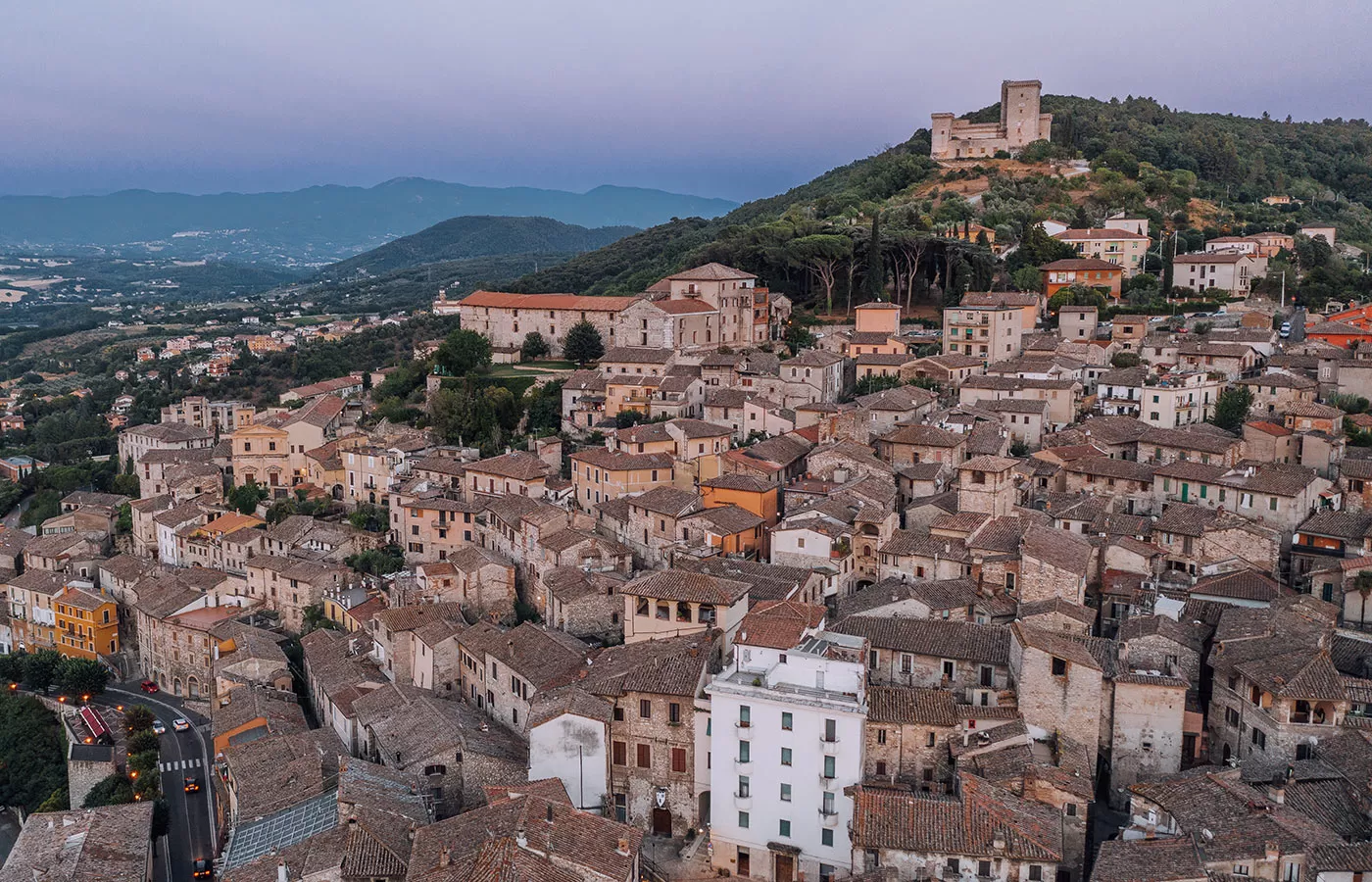
Located east of the Tiber river is Narni. This fine and unspoilt hilltop town is located above a bend in the River Nera and is the geographical centre of Italy. Its origins date back to the Umbri people, who founded Nequinum. The settlement was conquered by Rome in 299 BC and was renamed Narnia , after the nearby river. Its importance under the Romans derived from the fact that it was the birthplace of Emperor Nerva, in AD 32, and also a major stopping point on the Via Flaminia. The Via Flaminia was an important Roman consular road that connected Rome to Rimini.
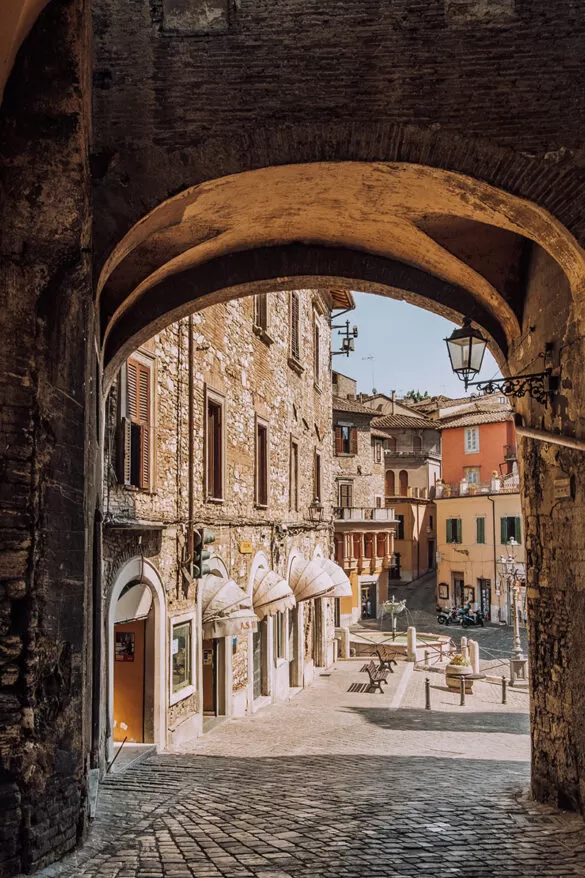
Beneath the streets of Narni, the town that inspired “The Chronicles of Narnia”, there’s a tangle of underground tunnels and rooms that feel like another world. You’ll find remains of a Roman home, a church covered in frescoes, a cistern used to collect rainwater, a torture chamber, a Tribunal of the Inquisition and a cell with graffitied walls with a chilling message.
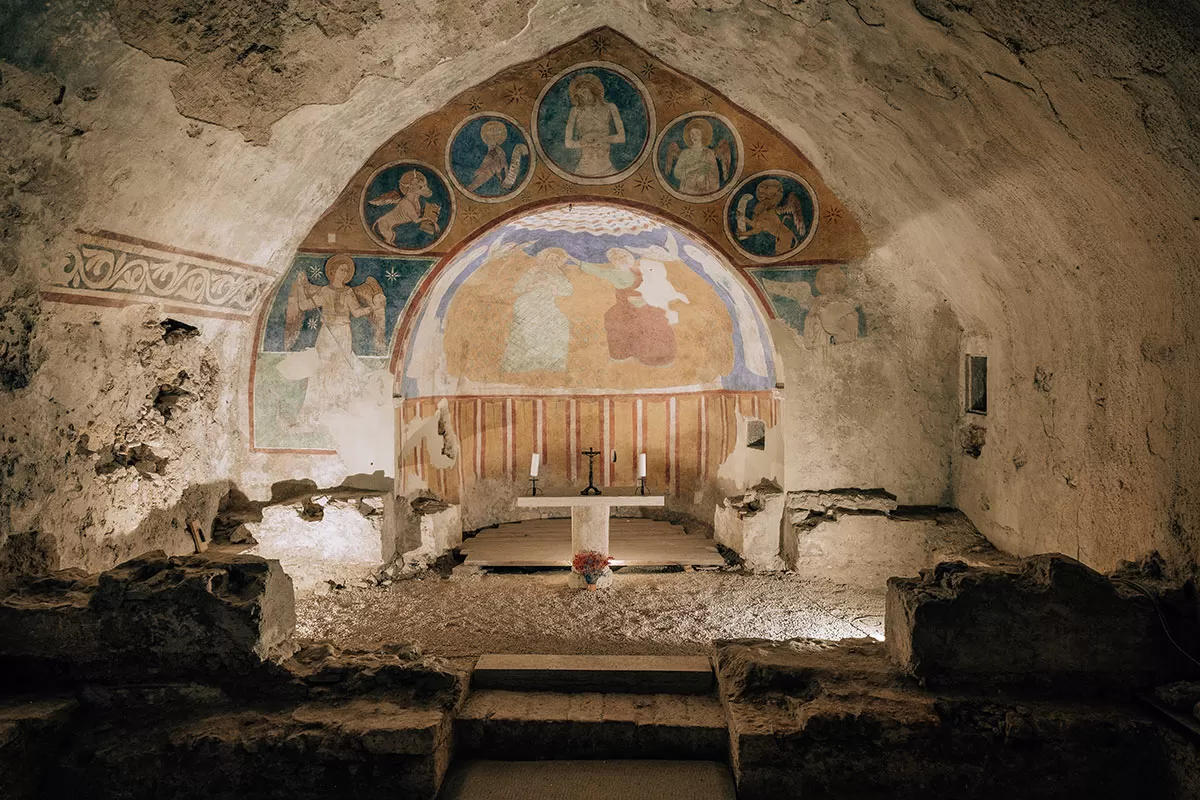
Benedictine church
Covered or purposely hidden for centuries, this fascinating complex was re-discovered in 1979 by Roberto Nini and his friends when he was just 17 years old! Becoming his life work, Nini established Narni Sotterranea (Narni Underground) and wrote a book about his long journey that took him to the Vatican and Trinity College in Dublin to piece together the truth behind these forgotten rooms. Roberto now offers guided tours which must be booked in advance. For more information, visit narnisotterranea.it
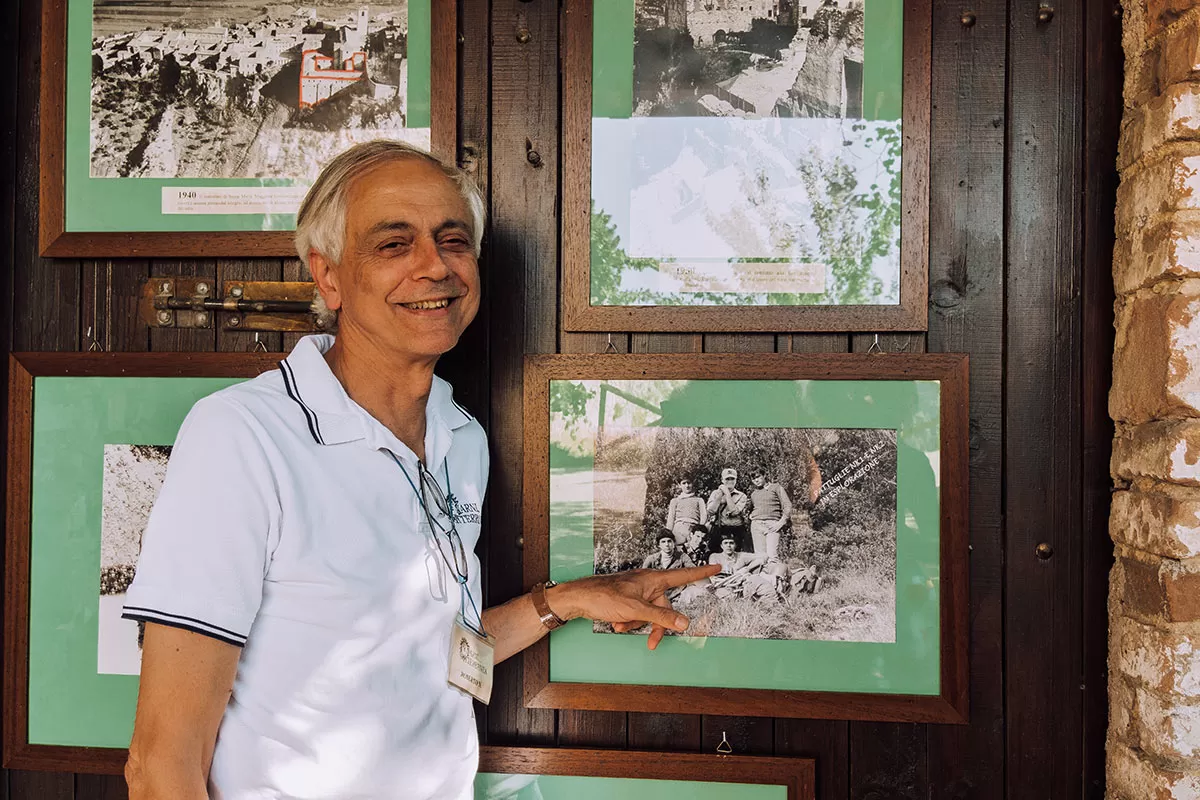
Roberto Nini at Narni Sotteranea
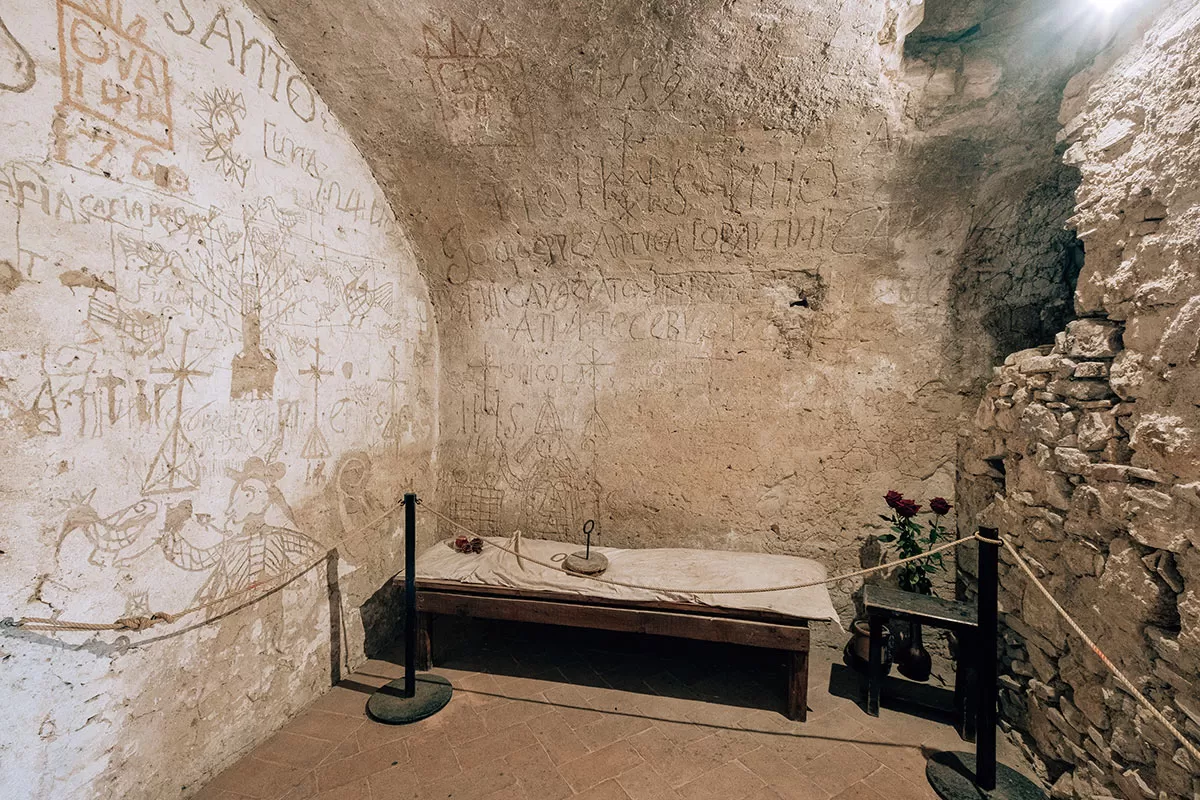
Inside cell of the condemed
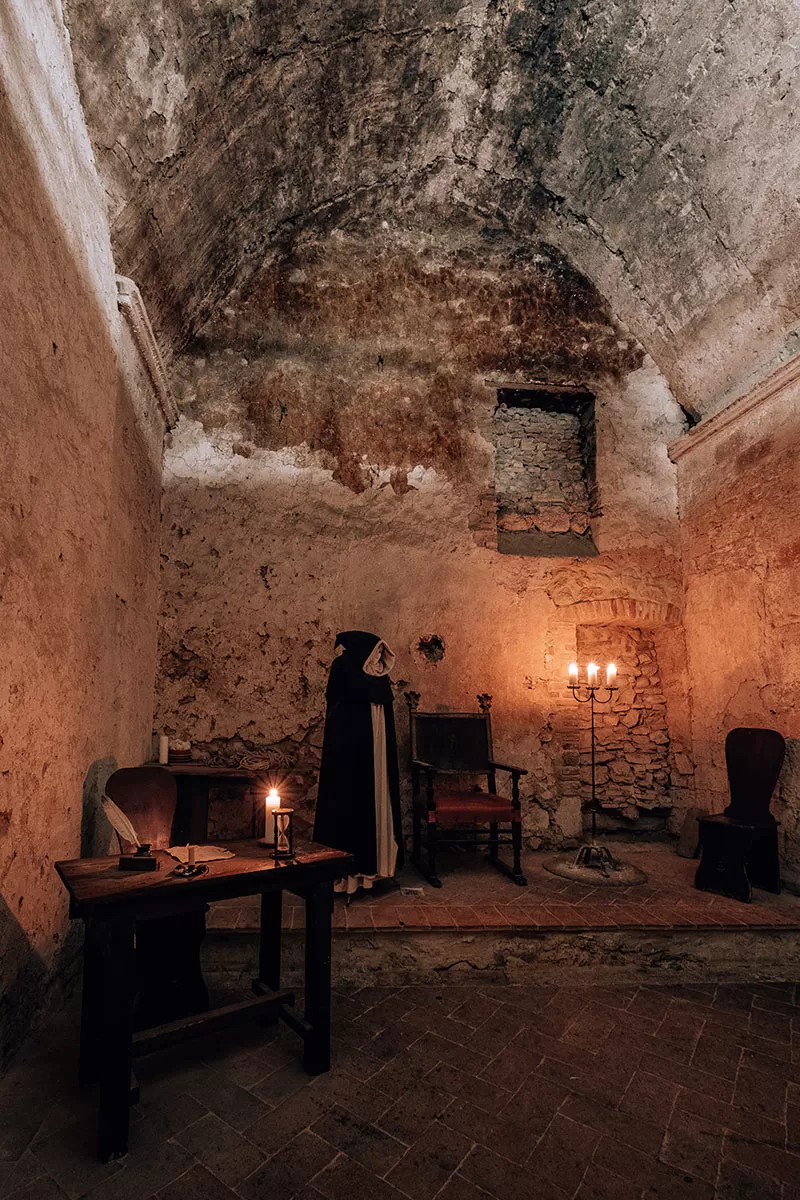
Tribunal of the Inquisition
Like many other towns and villages in Umbria, Narni preserves a strikingly medieval appearance, with stone buildings and narrow cobblestone streets. Its attractions include one of the largest Roman bridges ever built and the Eroli Museum with an altarpiece by Domenico Ghirlandaio. Outside the city walls, Ponte Cardona marks the precise geographical centre of Italy. To learn more about Narni during your visit, consider joining this private guided tour.
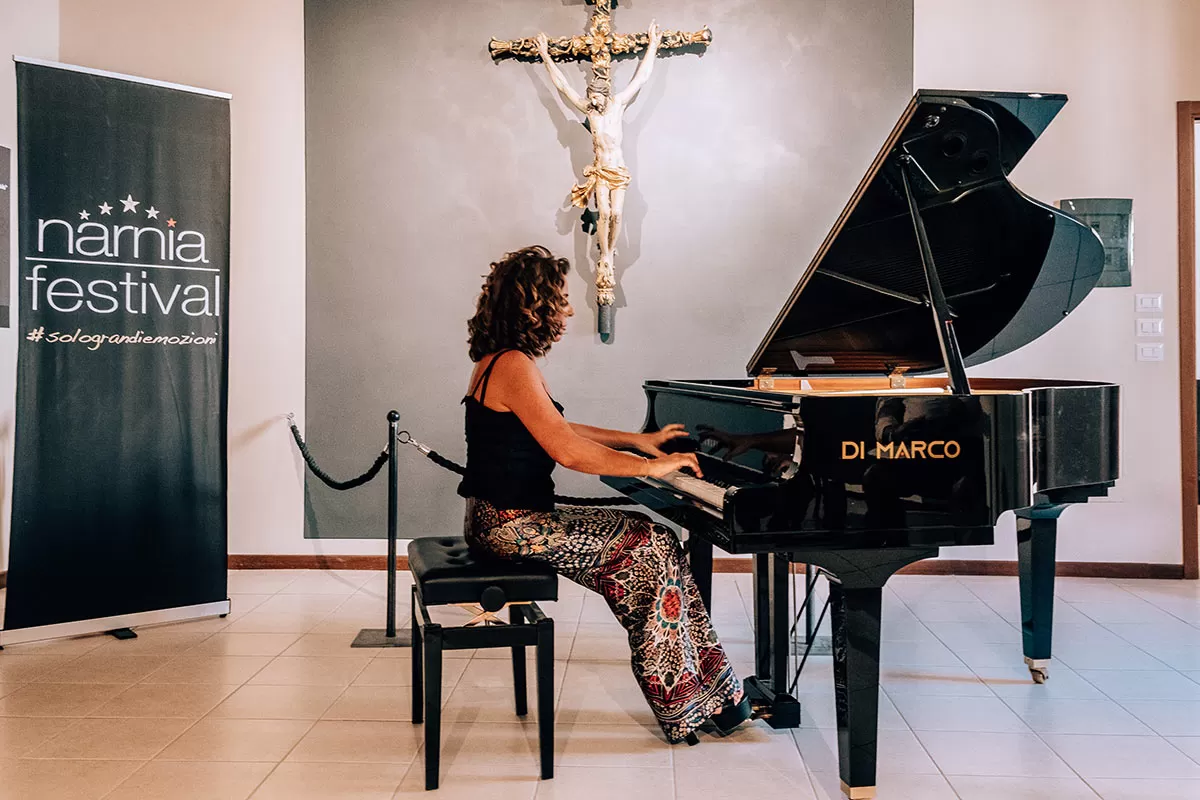
Narnia Festival performance
Don’t miss: Every year in July, Narni hosts the famous Narnia Festival , which celebrates arts, music and culture with shows and performances by international artists.
19. Visit Cascata delle marmore – the world’s tallest man-made waterfall
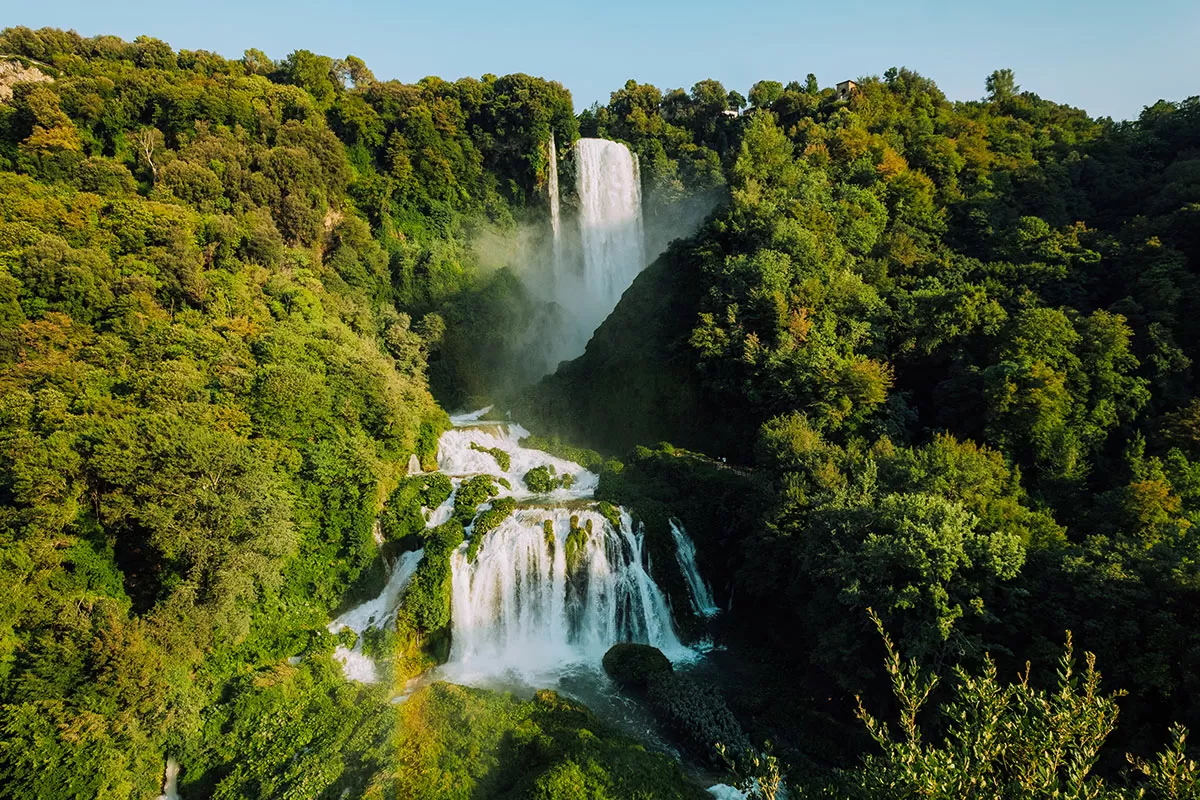
In ancient times, the Velino river flowed through the highlands that surround the city of Rieti and fed a wetland in the Rieti Valley that was thought to bring illness (probably malaria). To remove this threat, in 271 BC, the Roman consul Manius Curius Dentatus ordered the construction of a canal (called the Curiano Trench) that diverted the course of the river and formed the Marmore Falls.
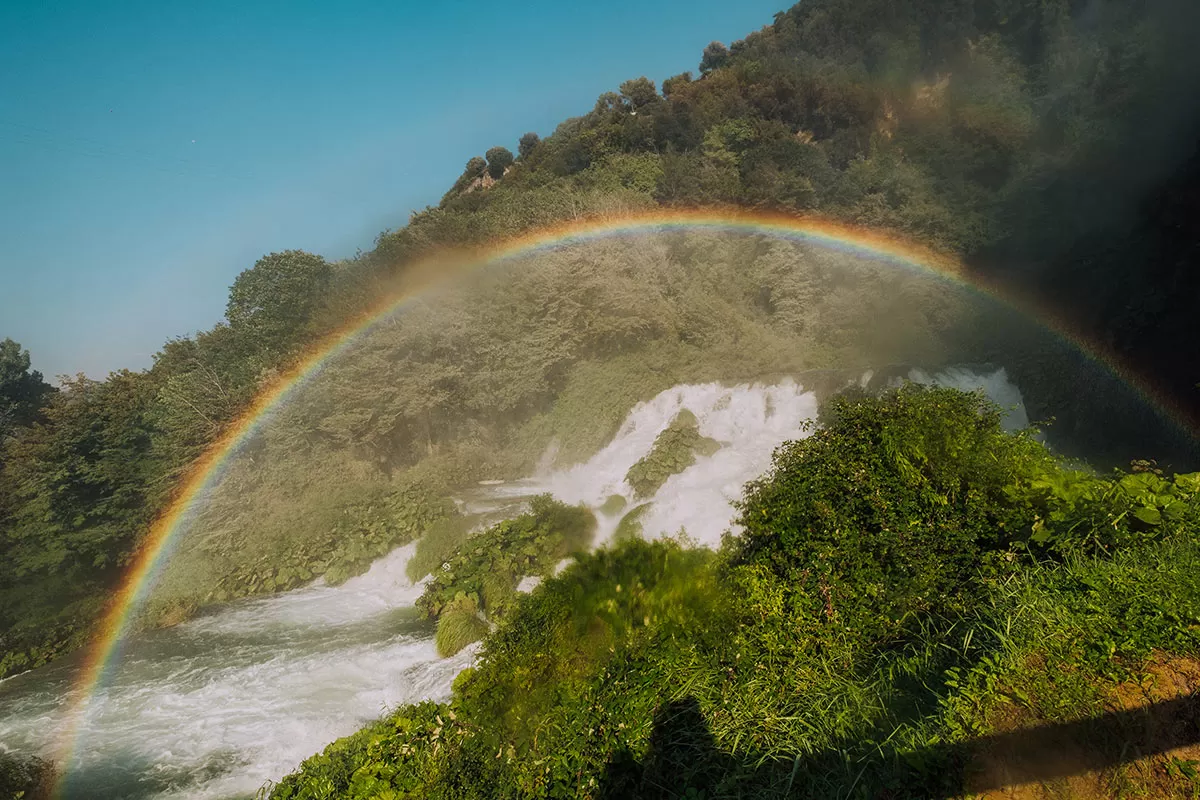
View from trail 2
From there, the water fell into the Nera river below. However, that solution created a different problem: when the Velino river was in flood, its water flowed toward the city of Terni, threatening its population. Over the next 300 years, other measures were taken to prevent additional flooding thanks to the construction of the Curiano Trench and in 1787, Pope Pius 6th ordered architect Andrea Vici to modify the leaps below the falls, giving the falls their present look, and finally resolving the majority of the problems.
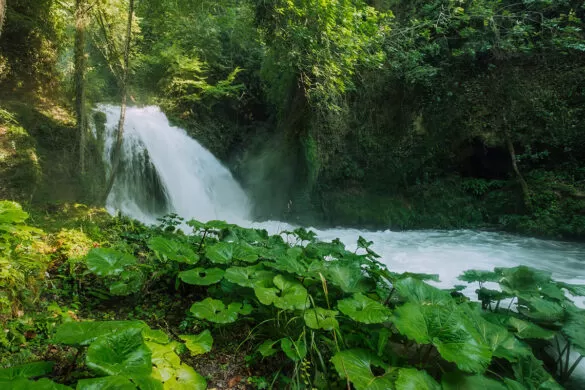
In 1896, the newly formed steel mills in Terni began using the water flow in the Curiano Trench to power their operation. In the following years, engineers began using the water flow to generate electricity. Most of the time, the water in the canals above the Cascata delle Marmore is diverted to a hydroelectric power plant, so the flow in the falls themselves is heavily reduced.
The waterfall is controlled by a power plant and is “switched on” only at certain times during the day. Make sure you check the website before you go. Check the published schedule here.
Today, you can admire the waterfalls from different angles with a series of paths immersed in greenery by following any of the 6 scenic sentieri (paths) around the valley and area above the waterfall. Trails 1, 2, 3 and 4 are the most impressive and shouldn’t be missed.
- Trail 1 will take you to a belvedere (viewpoint) towards the top of the waterfall with a view looking down towards the valley. Allow a 30-minute round trip.
- Trails 2 and 3 are connected and take you along the lower falls. Look out for a stunning reflection rainbow caused by the heavy flow of water and spray in the air. Allow a 15-minute round trip.
- Trail 4 is located across the road outside the main waterfall complex area. Show your ticket to a member of staff and then take the 10-minute walk up the mountain which will give you fantastic views of the waterfall.
Entrance is 10 euros and for another 3.5 euros, you can visit il balcone degli innamorati (the lover’s balcony) as part of a small guided tour. A small corridor built into the mountain opens up to a small terrace that puts you right in the waterfall. If it’s not a hot day or you don’t want to get soaked, I recommend picking up a poncho for 2 euros at the shop at the base of the waterfall. Click here for a full map of the park and paths.
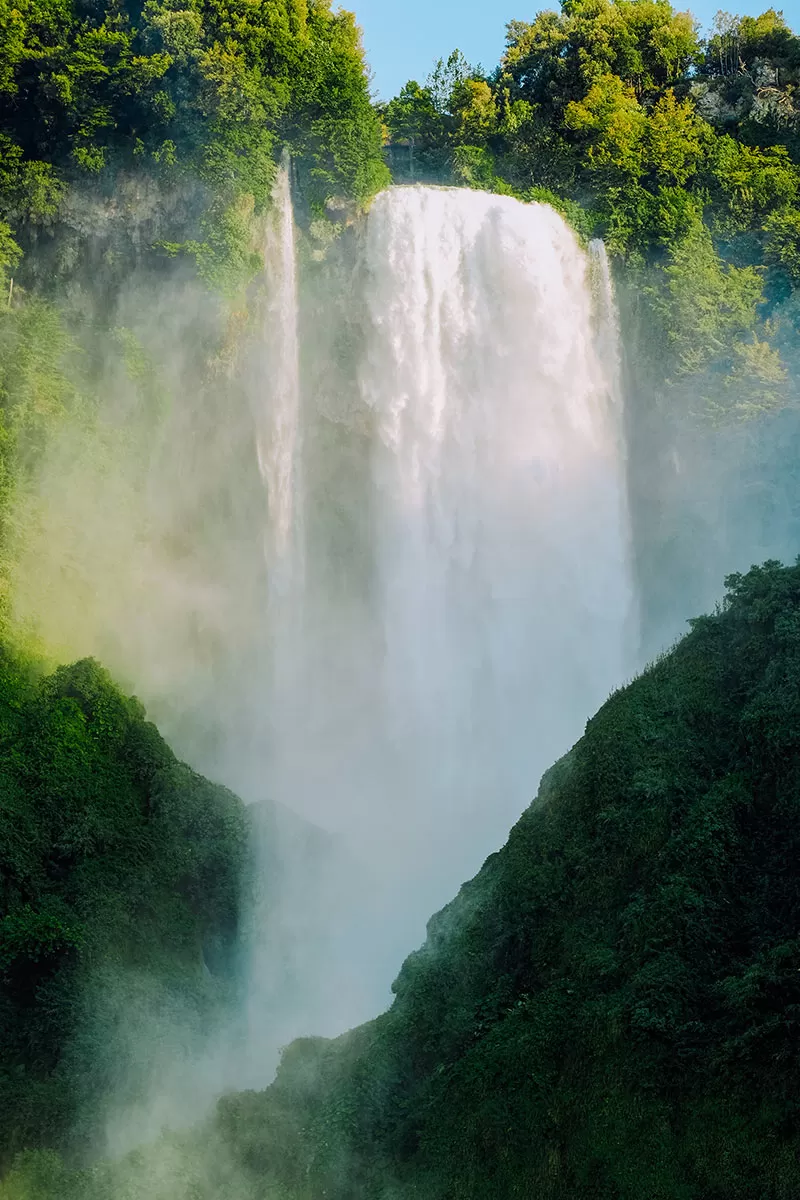
20. Dine and stay the night at Borgo dei conti Resort Relais & Chateaux
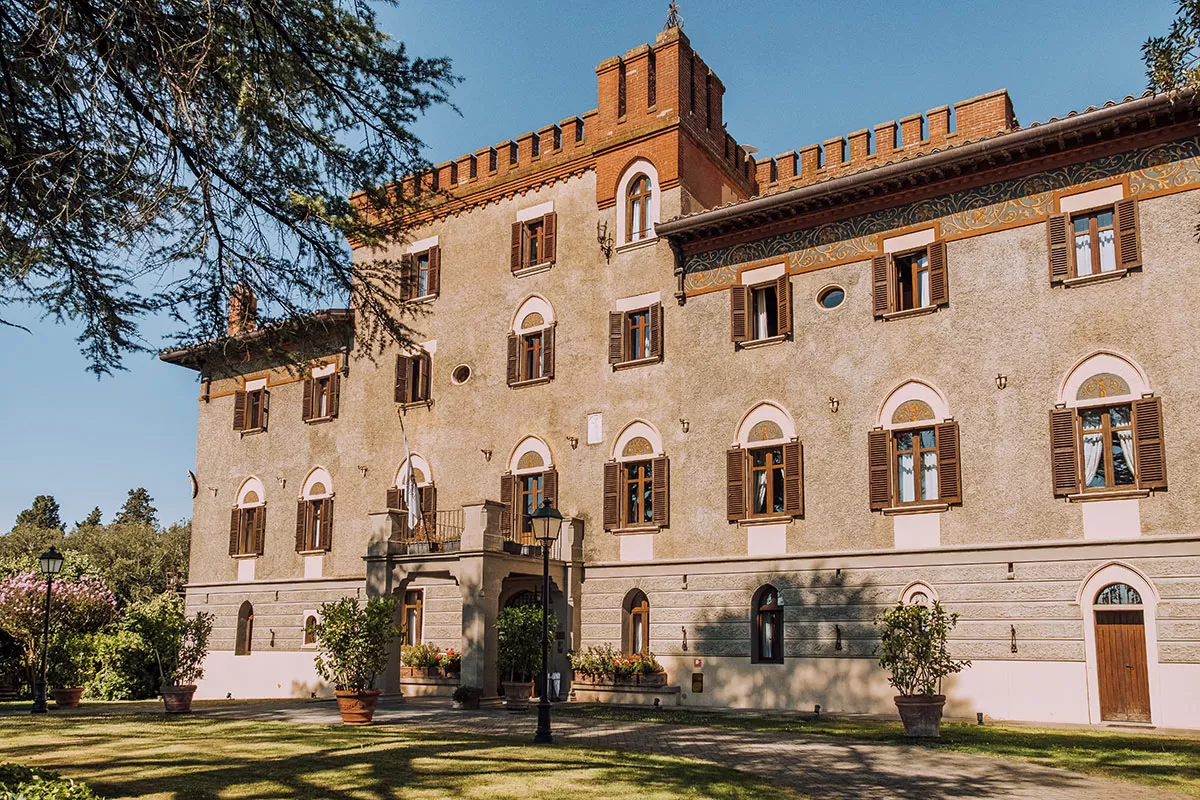
This residence was erected on the site of an ancient fortress, which dates as far back as the 13th century when it was then inhabited by about 500 people. The name borgo dei conti translates to ‘village of the counts’ and as its name suggests, over the years it was owned by a succession of nobles from counts to aristocrats.
There is also an imbarcadero a kind of jetty which historically gave underground access to a stream which the Countess took to reach a lake and her private hideaway where she painted and took refuge.
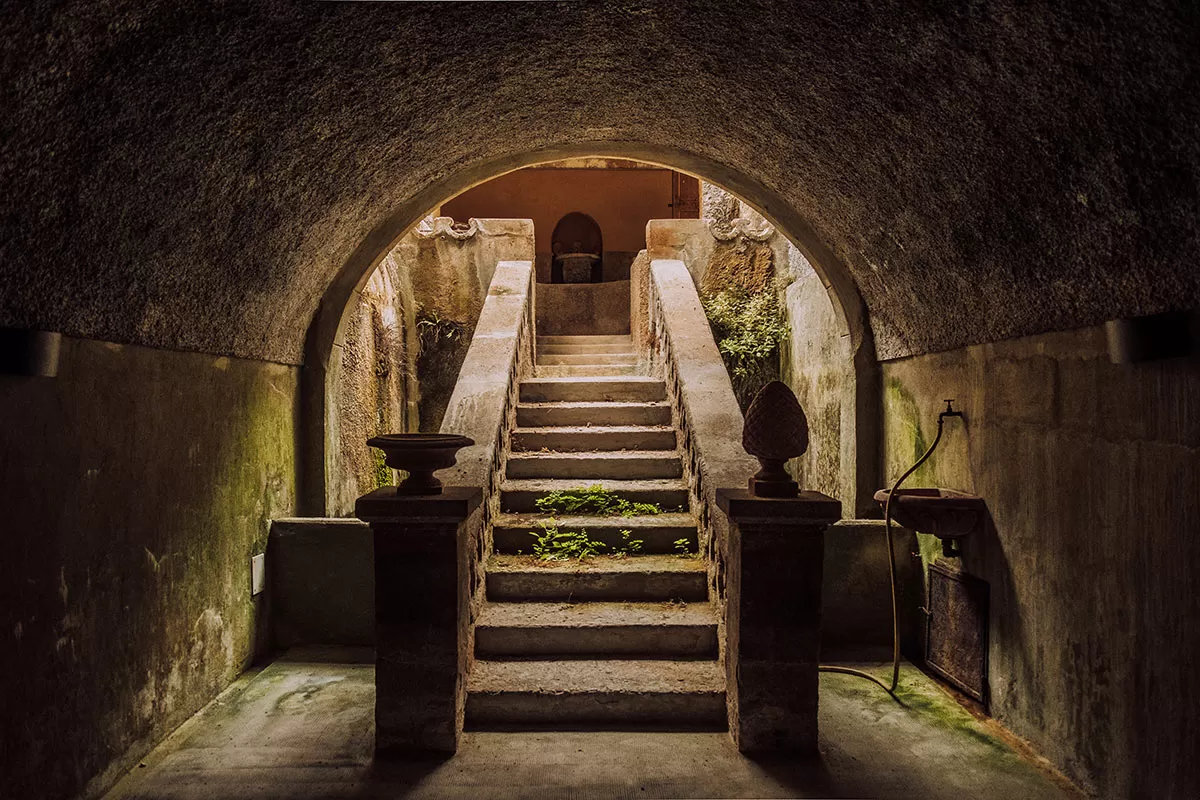
imbarcadero – an ancient jetty
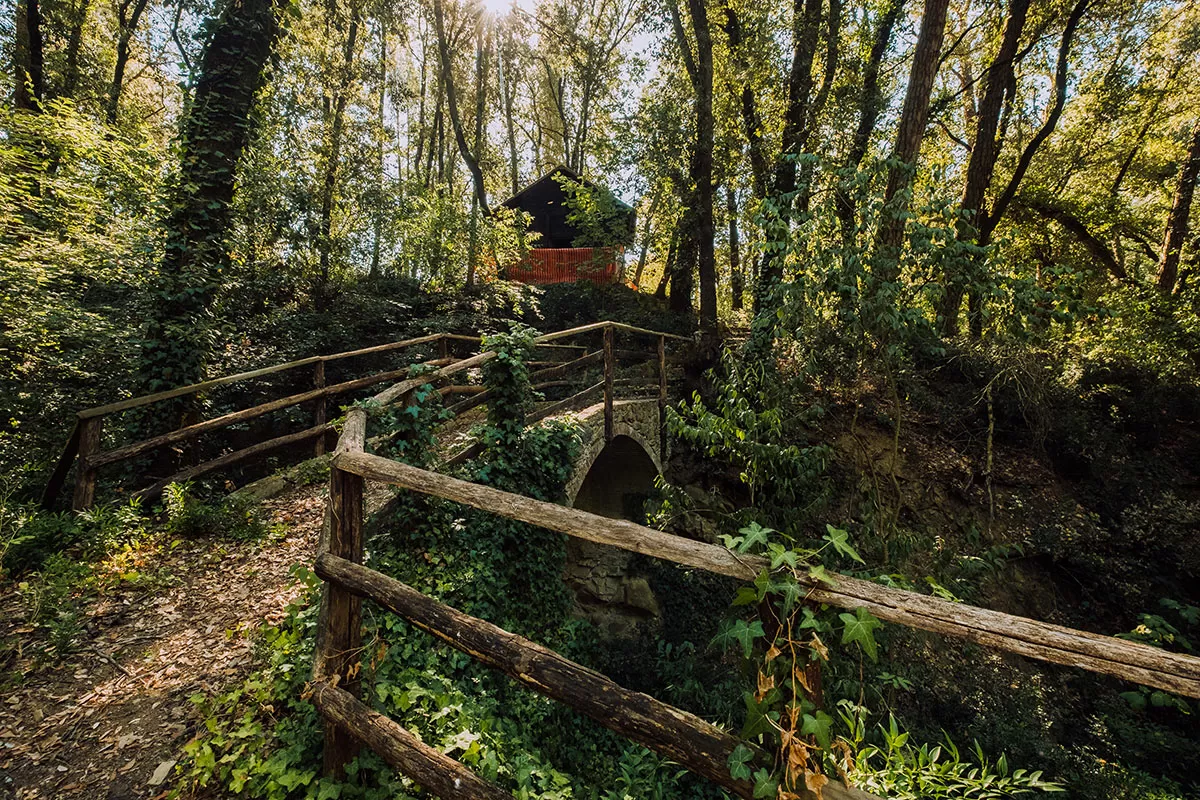
The private refuge of the countess on what was once a lake
Today, this converted castle offers its guests a free spa and gym, billiards room, and an on-site restaurant serving Umbrian specialities. Each room is elegantly furnished with designer bathrooms, dark-wood furniture and fine fabrics. You can even choose to stay in either the Count and Countess’ suites. Check availability and book your stay here .
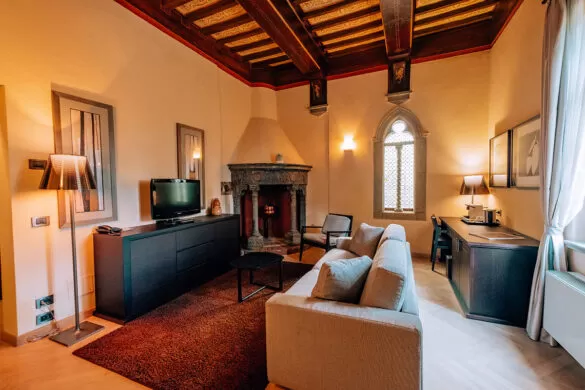
21. Go whitewater rafting
Though Umbria looks peaceful and idyllic, it offers its fair share of adrenaline too. For example, there are some great spots for whitewater rafting on the Nera River, under the waterfall Marmore – the kind of adventure that any adrenaline junky visiting Umbria shouldn’t miss. Check availability and book your experience here.
Depending on your level, there are different courses you can pick, and even beginner rafters are guaranteed some seriously accelerated heartbeats. Added bonus: the river winds through some of Umbria’s most stunning scenery.
Don’t miss: besides rafting, there are tons of other sports you can practice in the area, including canyoning, hydrospeed, and thrilling river walks at night. For more information visit: umbriaexperience.it
22. Discover Umbria’s wine routes (and bring a bottle or two home)
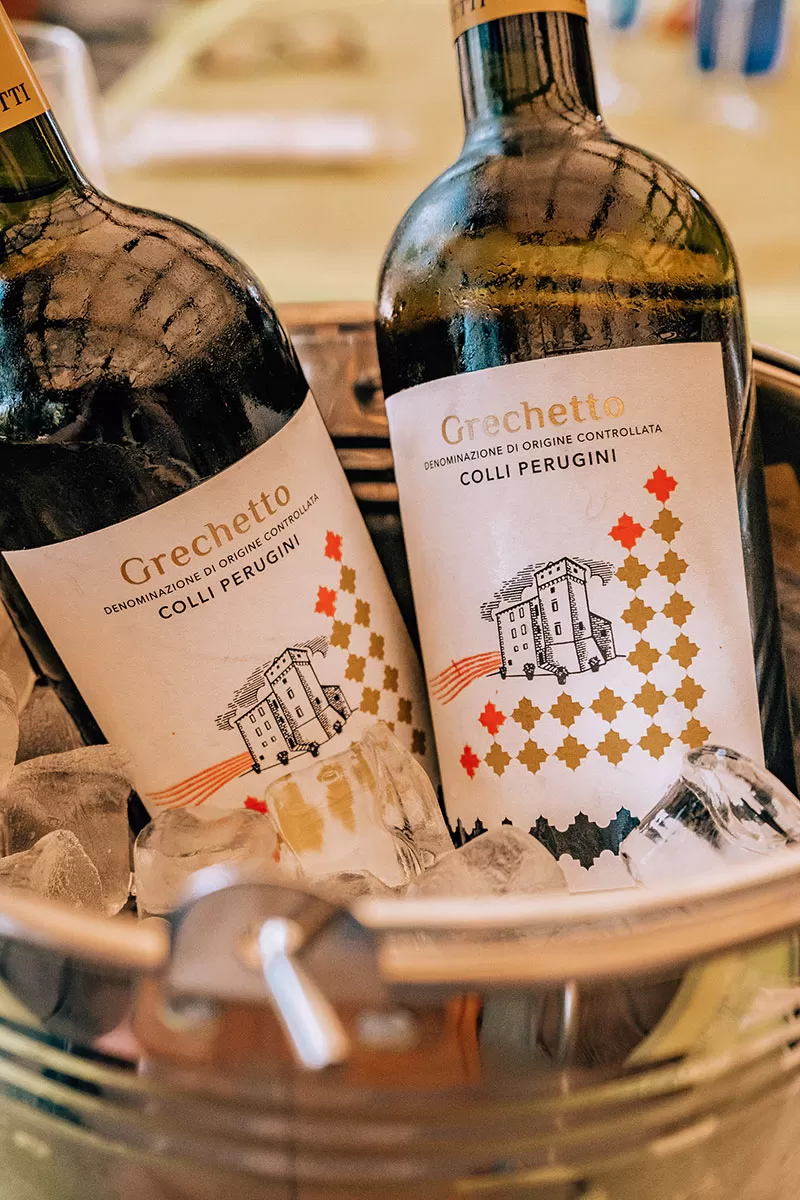
A total of four wine routes have been designed to guide visitors through excellent wines, marvellous landscapes, and enchanting villages across the region. These are: “Strada del Sagrantino” on the slopes of Montefalco, “Strada del Vino dei Colli del Trasimeno”, “Strada dei Vini del Cantico” in central Umbria, and “Strada dei Vini Etrusco Romana” through the hills of Orvieto.
Don’t miss: Whatever route you take, make sure you stop at Arnaldo Caprai , a fantastic winery famous for its Sagrantino red. You can tour the cellars and enjoy lunch on a beautiful panoramic terrace.
23. Tour Rasiglia, Umbria’s little Venice
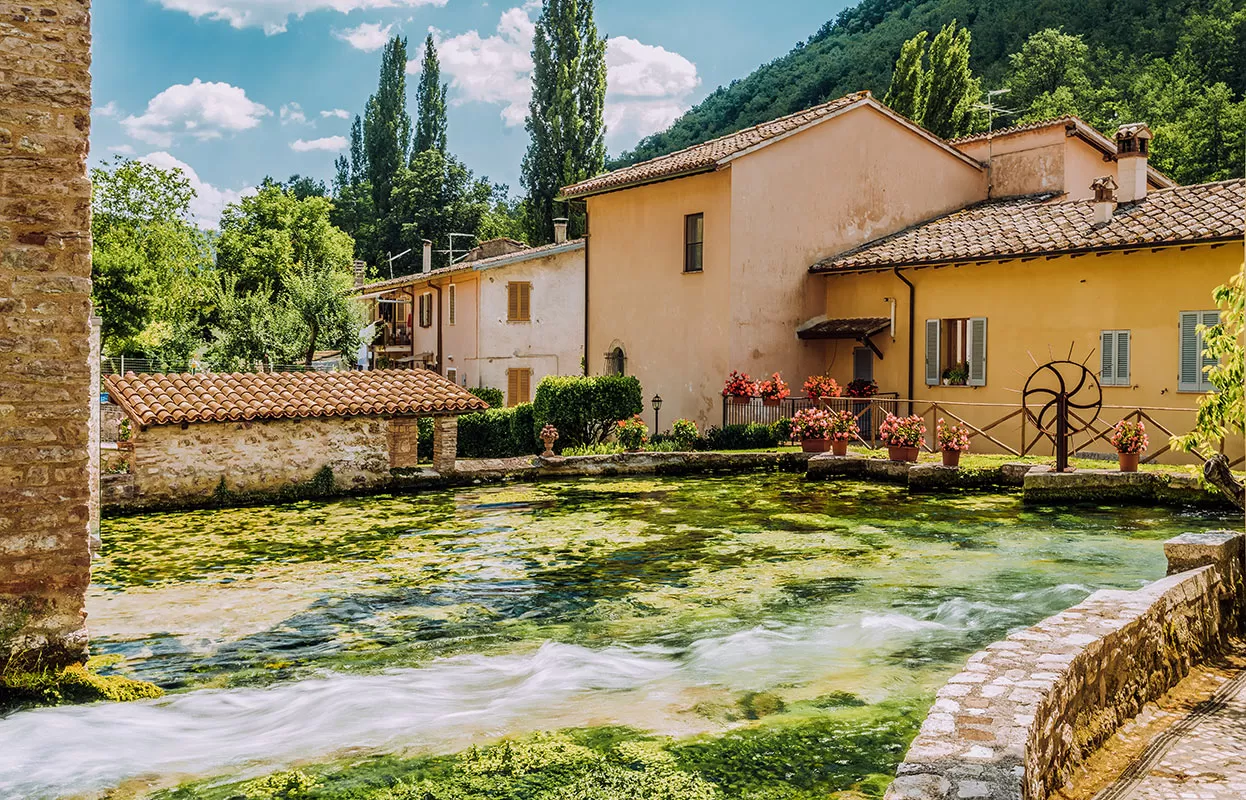
Rasiglia welcomes you with the soothing sound of flowing water. This town gets its nickname – “Umbria’s little Venice ” – from a fascinating system of creeks and canals that wind through the streets, providing enchanting views. Cute wooden and stone bridges are all over town, perfect for photos.
Don’t miss: In June, you can watch re-enactments of historic activities and participate in traditional workshops at “Penelope a Rasiglia”, the town’s main event.
24. Take an Umbrian cooking class
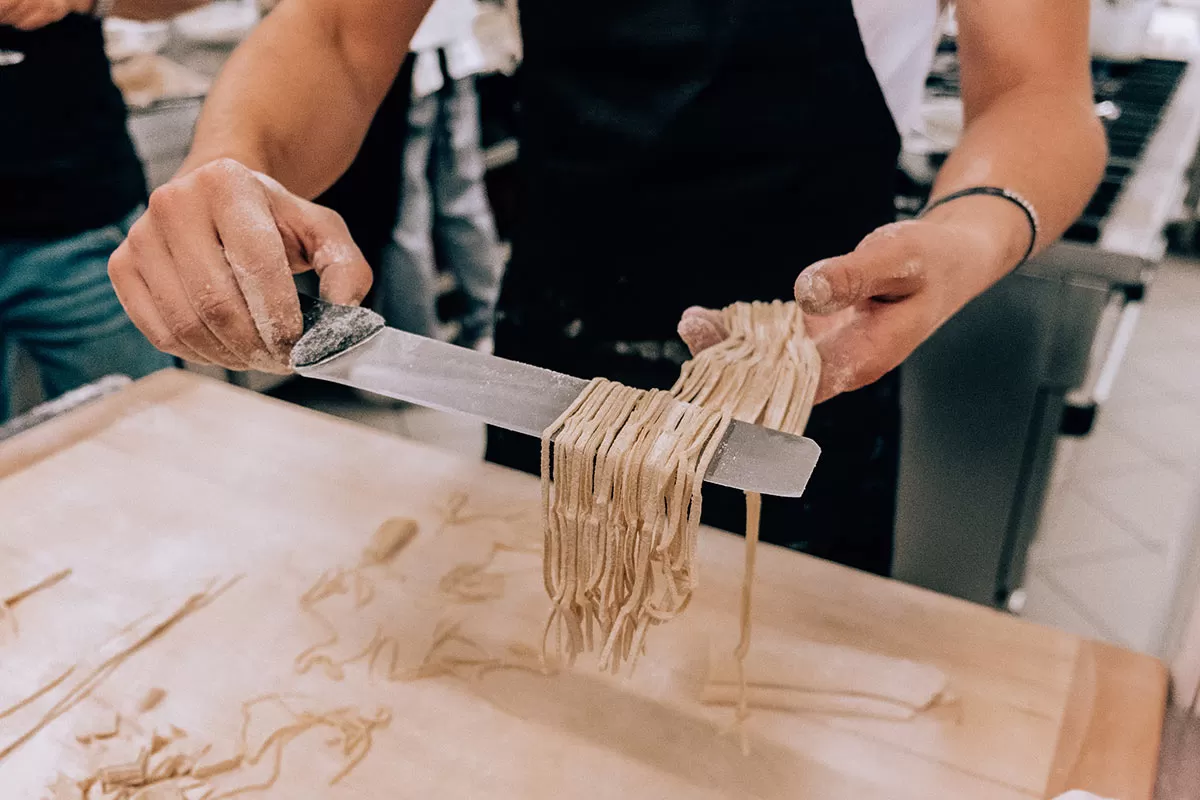
Among the many options on the market, Percorsi con Gusto in San Gemini stands out for keeping traditions alive. Home cooking is the focus of its courses, which take place in a beautiful 16th-century private residence. Another top-rated cooking class is this one where you’ll enjoy a five-course meal along with wine from the estate, as you learn about traditional recipes from Umbria. Plus you get a recipe book to take home. Book your class here.
Don’t miss: Don’t leave without visiting the village after the cooking class. San Gemini is included in the list of Italy’s most beautiful villages and offers important attractions, including a Roman archaeological area.
25. Discover the great outdoors in the Monte Cucco Regional Park
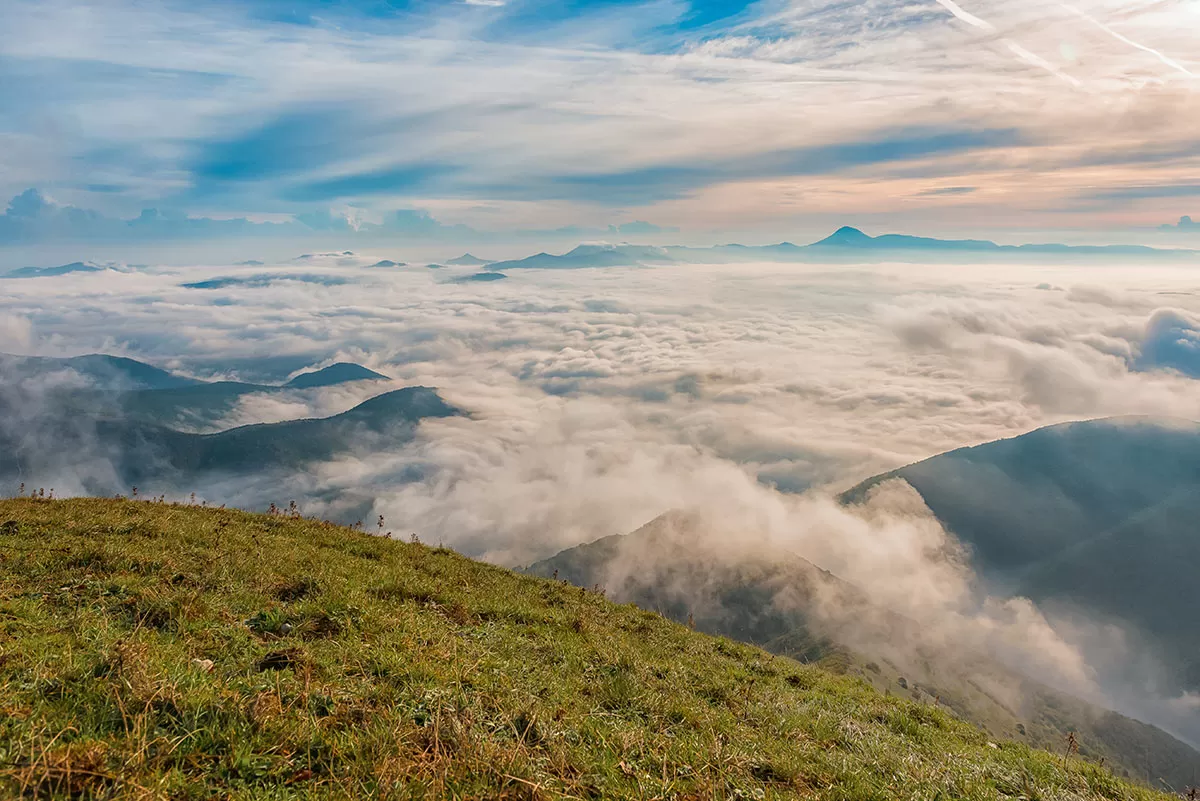
Monte Cucco at sunrise
The Monte Cucco Regional Park is the ultimate paradise for nature lovers in Umbria, on the border with Le Marche. It’s got pristine woods, waterways, and spectacular gorges. There are also some incredible underground caves where others have left their traces through the centuries.
This park is full of hermitages and quaint hamlets rich in history and culture, such as Fossato di Vico, where every year in May the Feast of the Statutes brings the village’s 14th-century Municipal Statutes back to life.
Don’t miss: Featuring 30km of tunnels, the Monte Cucco Cave is an underground system of great importance in Europe.
26. Explore the Sibillini Mountains National Park
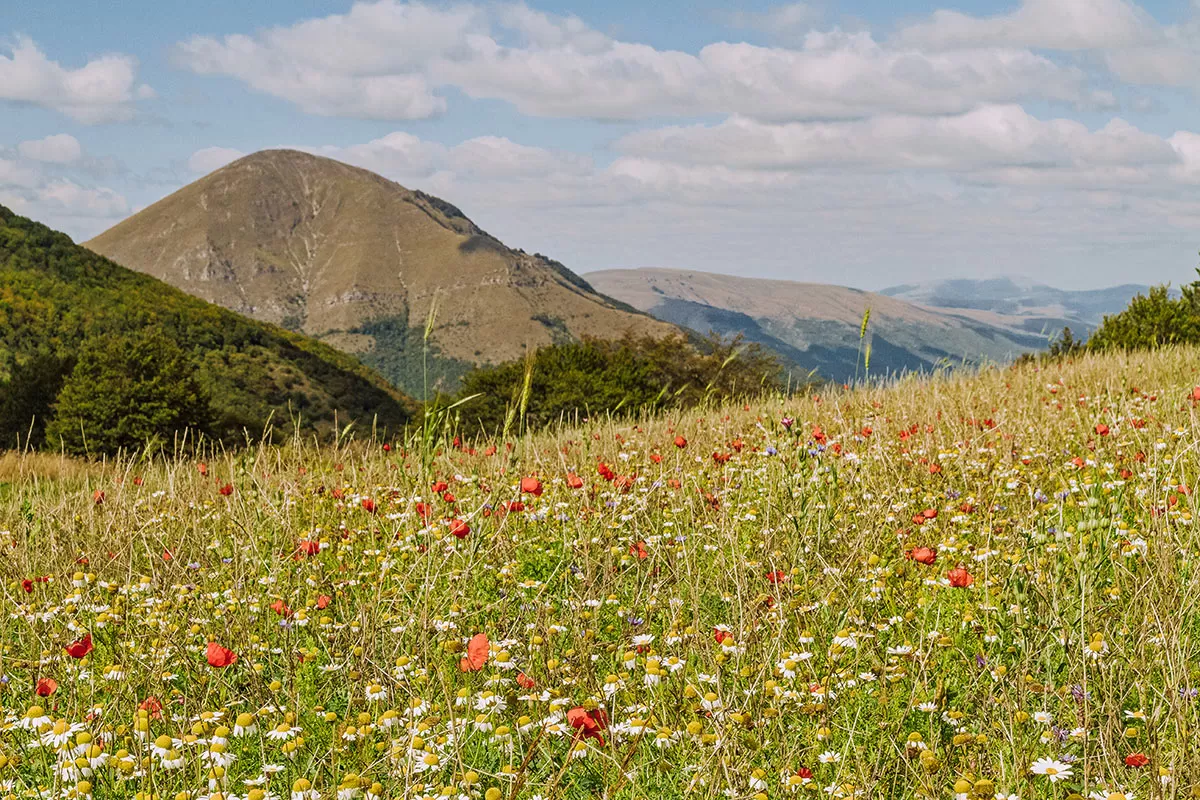
Sibillini mountains
Stretching over 70,000 hectares between Le Marche and Umbria, the Sibillini Mountains National Park is Umbria’s natural wonderland. Legends about the Prophetess Sibyl haunt the area, making a visit all the more thrilling.
Hiking, biking, or paragliding are the best ways to see the park’s natural treasures. There are also old hamlets to explore, like Visso, which is thought to have been founded 907 years before Rome, and Arquata del Tronto, Europe’s only territory with two national parks (Monti Sibillini in the north and Gran Sasso in the south).
Don’t miss: Visit between May and July, when the lentil fields around Castelluccio di Norcia are in full bloom, turning the valley into a beautiful mosaic of colours.
27. Visit the earthquake-stricken town of Norcia
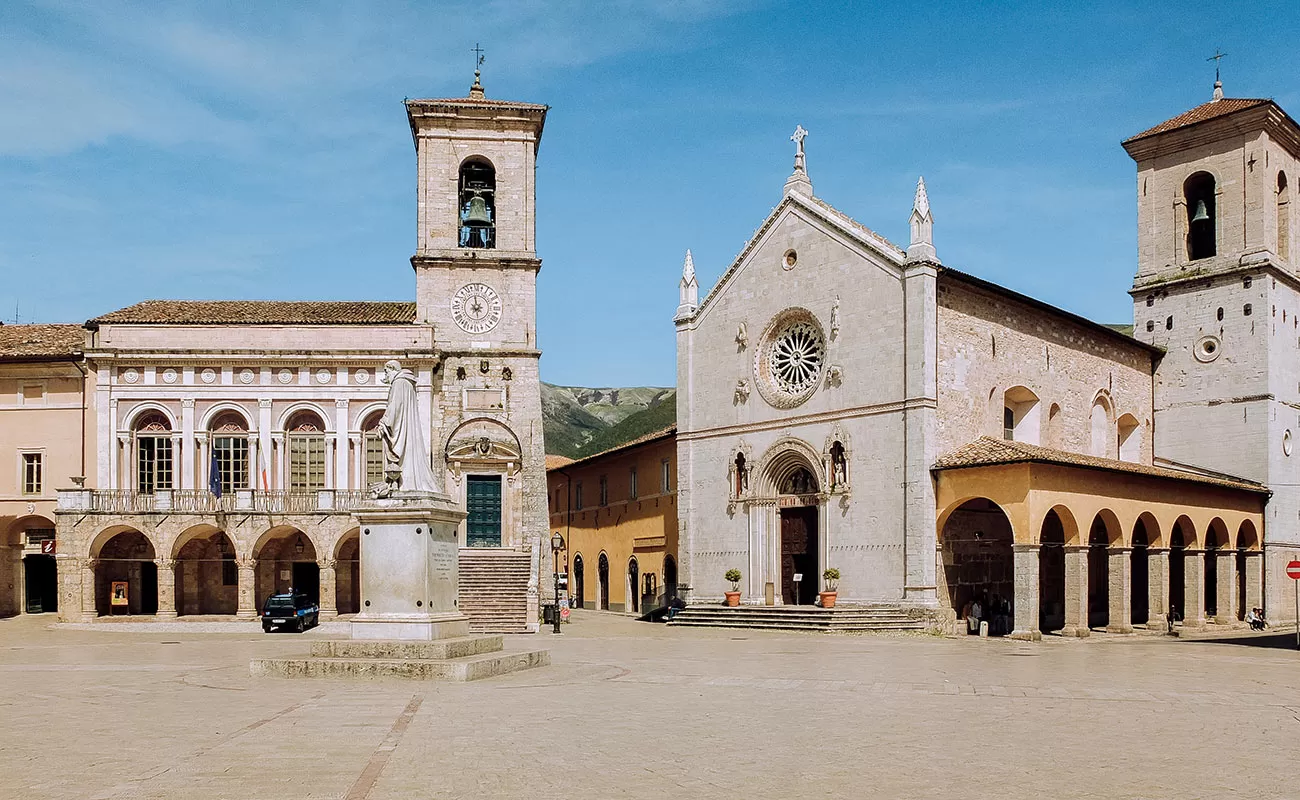
Despite being hit by earthquakes that destroyed many of its treasures, Norcia remains firmly on Umbria’s map as a prime spot for hikers and foodies. The town is surrounded by the stunning landscape of the Sibillini Mountains National Park, which you can explore on foot, bike, or horseback. This way, you won’t feel guilty about stuffing yourself with its delicious tasty pork-meat products and cheeses.
Norcia’s historic centre is surrounded by walls and develops around Piazza San Benedetto, the saint born here. Part of it is still inaccessible to the public, but you can see what’s left after the quakes, like the facade of the 13th-century basilica and the statue of St Benedict. But what makes this little Umbrian town so special is its people, who are fighting hard to rebuild it.
Don’t miss: Pay a visit to the earthquake-stricken shops housed inside prefabricated wooden buildings along Via della Stazione. They were moved here from the historic centre, and our support is vital for their survival.
28. Treat yourself to a fancy meal
Why not try one of Umbria’s three Michelin-starred restaurants while in Norcia? The restaurant is called Vespasia and you’ll find it inside the 16th-century Palazzo Seneca Hotel in the historic centre. Promoting an ethical, sustainable cuisine, the restaurant uses strictly seasonal ingredients from a network of local suppliers. The result is dishes that showcase local specialities without shying away from sacrificing innovation.
Don’t miss: the restaurant has three tasting menus, but if you can only pick one dish, go for the homemade Umbricelli with Norcia’s black truffles – pure heaven! For more information visit: vespasianorcia.com
29. Visit the birthplace of St. Francis in Assisi
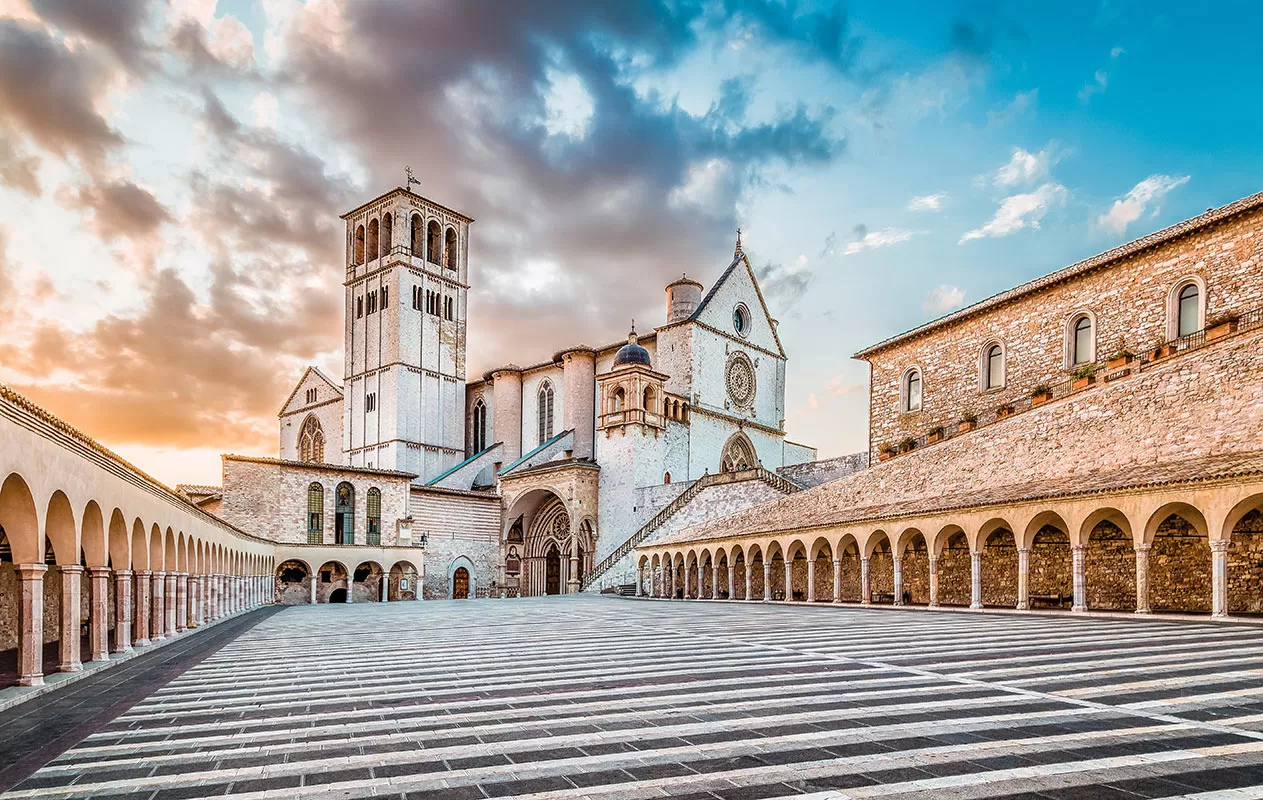
Basilica of San Francesco d’Assisi
A classic stop in Umbria, Assisi is a hilltop town best known as the birthplace of St Francis, one of Italy’s most famous patron saints. Its centrepiece is the stunning 13th-century Basilica of San Francesco d’Assisi, which hosts the saint’s remains and boasts a beautiful fresco cycle depicting his life. Plus, the views of Assisi’s skyline from the Basilica’s upper square are unbeatable.
While the Basilica is the main draw, Assisi also has a magnificent historic center that contributed to the town’s UNESCO listing. Other attractions worth exploring include the Temple of Minerva, the Basilica of St Chiara, and the 14th-century castle.
Don’t miss: The Calendimaggio festival in May celebrates spring and nature’s awakening with three days of historical reenactments and ancient traditions.
30. Walk the Franciscan Peace Path
One of the most interesting things to do in Umbria is walking in the footsteps of St Francis along the trail that connects Assisi to Gubbio. It follows the same route the saint took several times after returning his possessions to his father.
The trail is well marked and extends for about 50km (31 miles), perfectly capturing the spirit of young Francis. Whatever your reason for taking the walk, you’ll be surrounded by peace and beauty.
Don’t miss: look out for the small Church of Vittorina, the legendary spot where St Francis tamed the wolf of Gubbio.
For more information visit: ilsentierodifrancesco.it
31. See Todi, one of the best things to do in Umbria
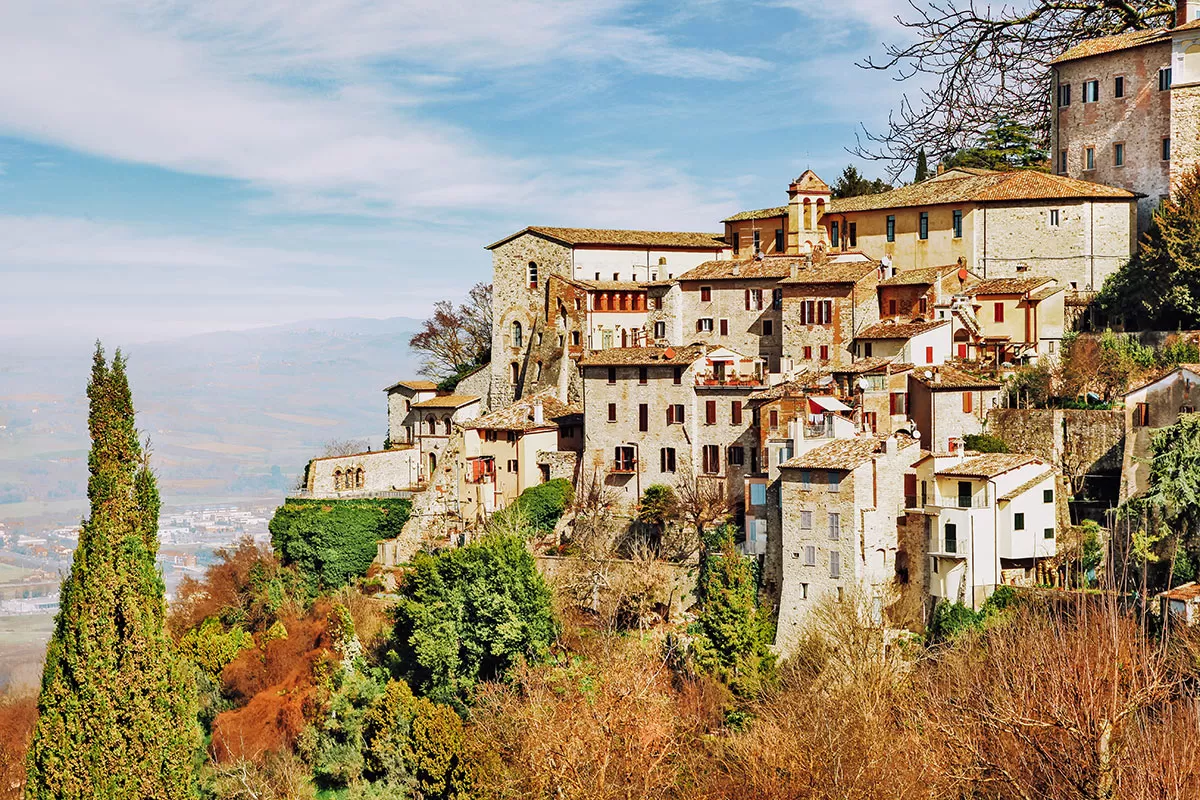
The impressive Temple of Santa Maria della Consolazione is a great place to begin your exploration. The old town is full of monuments and museums, but if you can visit only one place, make it to the Duomo to see the beautiful fresco of the Last Judgment by Farraù di Faenza. It’s inspired by Michelangelo’s more famous work in the Sistine Chapel in Rome.
Don’t miss: Todi is famous for its grilled meat paired with a glass of Grechetto di Todi DOC, a fine white wine produced in the area for centuries.
For more information visit: visitodi.eu
32. Stroll around Spoleto
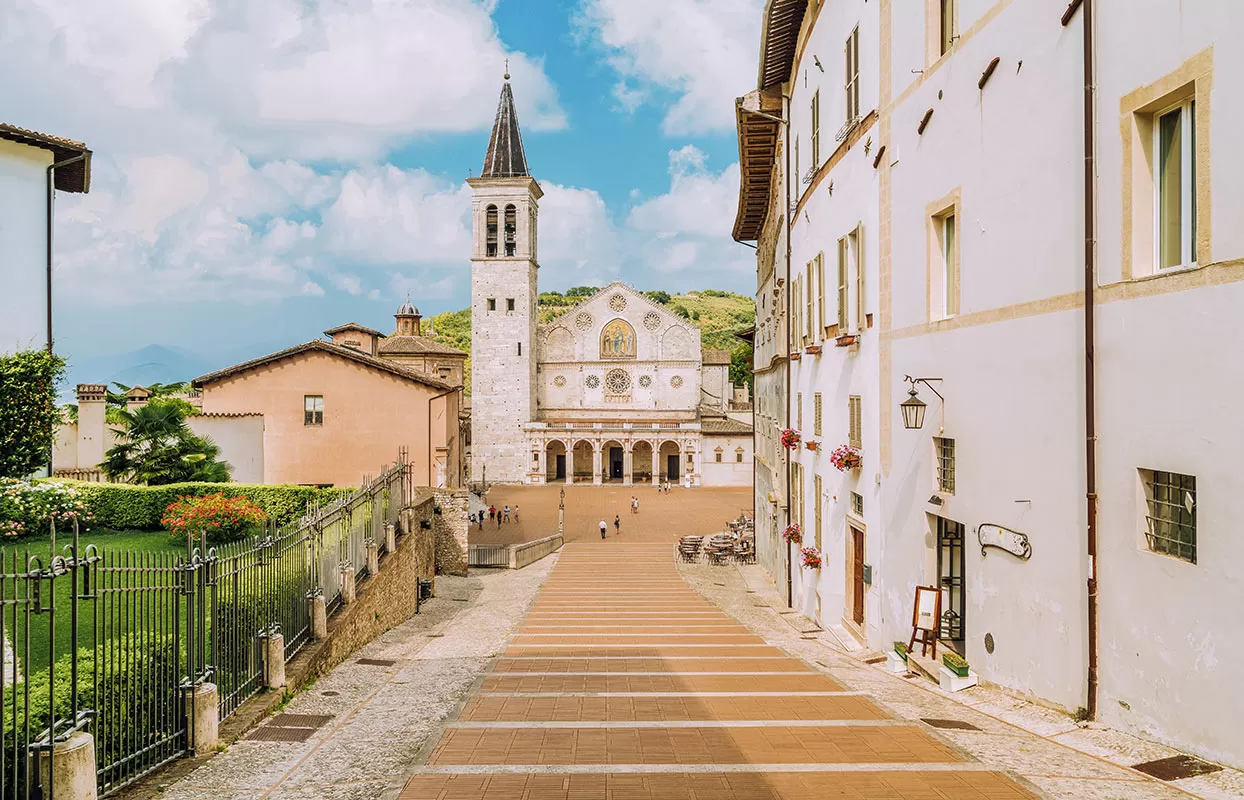
This town in the foothills of the Apennines also features a 1st-century AD Roman theatre often hosting ballet performances. The grand Ponte delle Torri bridge, built as an aqueduct in the 13th century, is one of the symbols of Spoleto. Possibly built on Roman foundations, today you can walk along its elevated path to the sacred wood of Monteluco, a spot of pristine natural beauty.
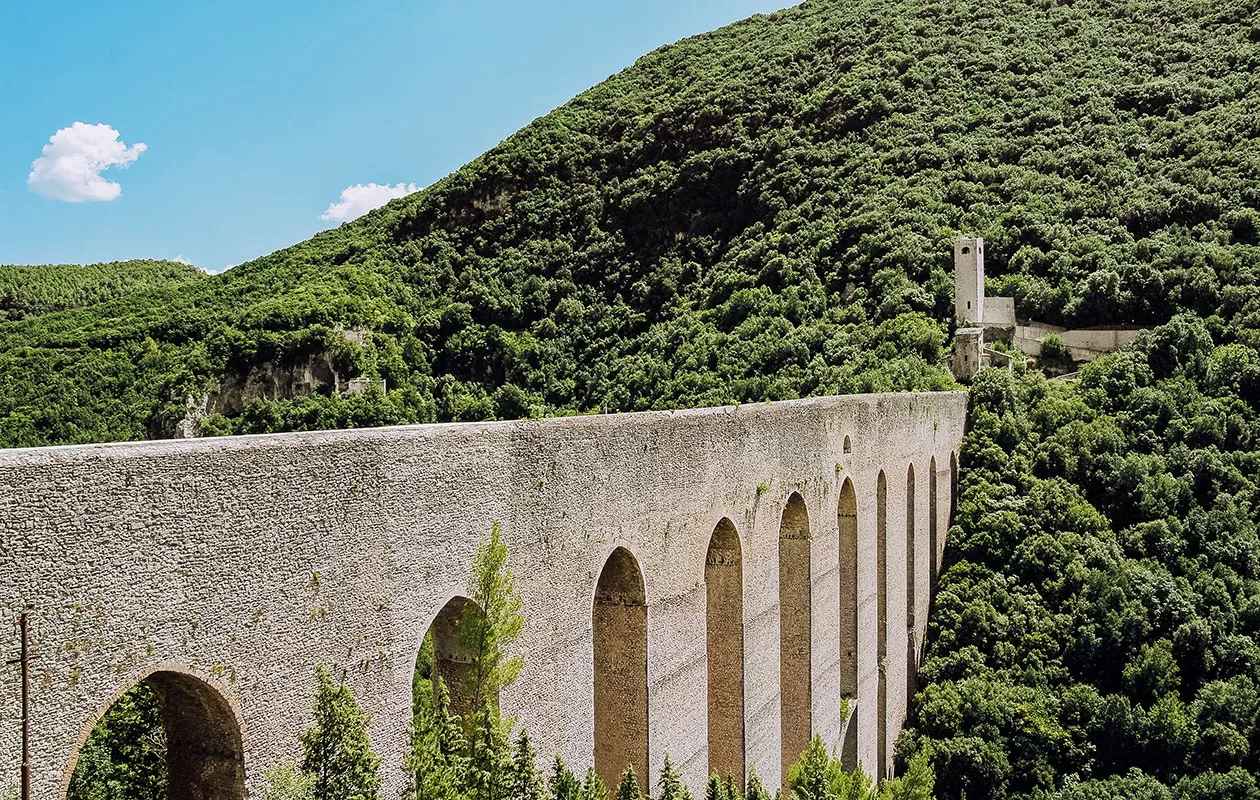
Ponte delle Torri
Don’t miss: between June and July, Spoleto stages the Festival dei Due Mondi, an annual summer music and opera event that attracts artists from all over the world.
33. Visit Spello and its flower festival
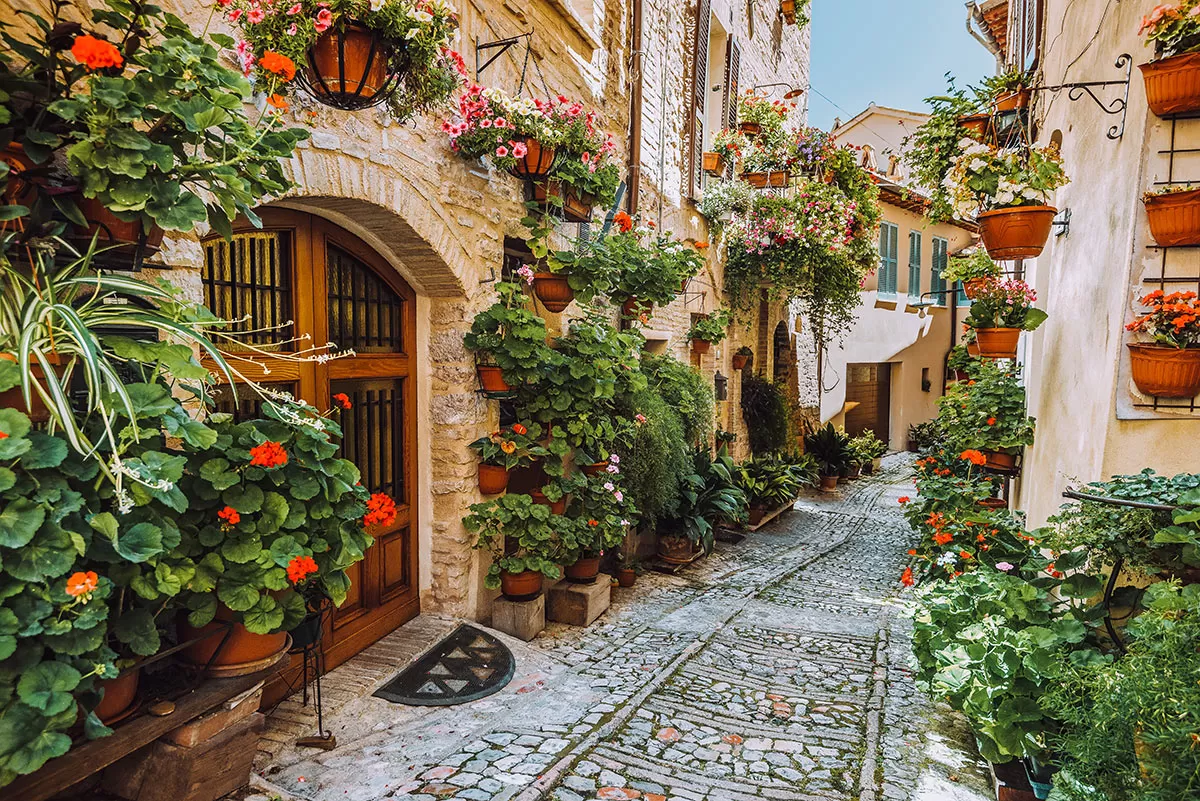
In Spello, you can see perfectly preserved Roman walls and some magnificent frescoes by Pinturicchio inside the 11th-century Church of Santa Maria Maggiore. Another highlight is the 500-metre mosaic-paved area inside Villa dei Mosaici just outside the town centre.
Don’t miss: if you visit in June, you might catch Spello’s famous Infiorata . This flower festival turns the streets into canvases for locals who create beautiful displays using thousands of petals.
For more information: visitspello.it
34. Get a “fool’s licence” in Gubbio
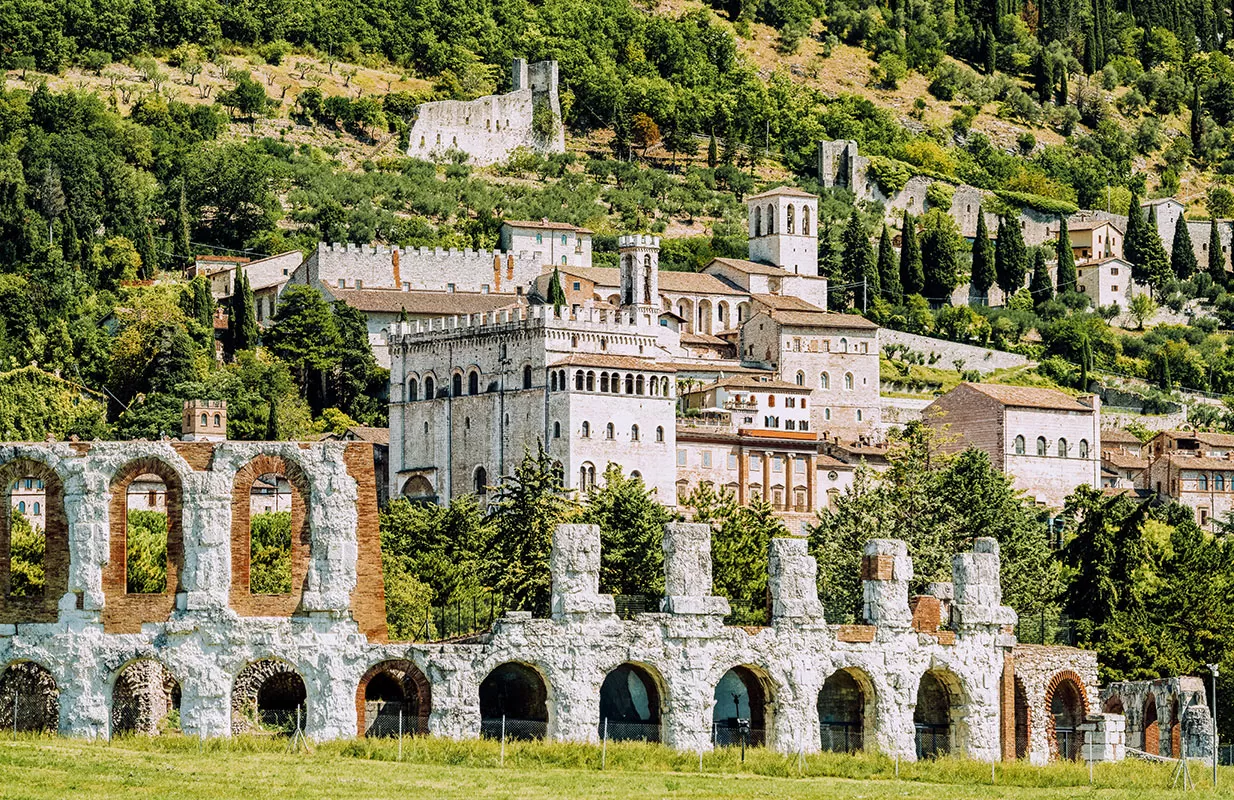
Gubbio and Roman amphitheater
Not only is Gubbio one of Umbria’s oldest towns, but it’s also its craziest! It’s traditionally known as the “City of Fools” because of the ancient practice of awarding honorary citizenship in the form of a “fool’s license” to those who circle the Bargello fountain three times.
Crazy is also how passionate locals are about their biggest festival, the Race of the Candles , which takes place on May 15th. Three massive wooden structures (5m x 300 kg) are carried by the shoulder to the Basilica on Mount Igino. Unlike what you might think, there’s no actual race since they must follow a precise order.
Don’t miss: hop on the scenic cableway connecting Gubbio to the top of Mount Ingino for some wonderful views. Keeping with the town’s crazy vibe, the cable cars are open-air human-sized birdcages!
35. Enjoy the Umbria Jazz festival
The Umbria Jazz Festival is held in July every year in Perugia. A must for jazz lovers, it’s also one of the top music festivals in Italy. It’s been going on since the early 1970s and attracts jazz experts and music enthusiasts from across the globe.
Over ten days, every corner of Perugia’s historic centre becomes the stage for exciting Jazz performances of all kinds. The performers’ lineup is also impressive, with past editions featuring stars like Tony Bennett, Elton John, Alicia Keys, and Carlos Santana.
Don’t miss: take a look at the official program, as there are always some great free outdoor concerts around town to complement the main stage performances.
For more information visit: umbriajazz.it
36. Go on a hot air balloon ride
Among the top things to do in Umbria, taking this top-rated hot air balloon ride is undoubtedly one of the most fascinating. Flying over the verdant valleys and mountain peaks of Italy’s green heart aboard a balloon basket is certainly an adventure you’ll never forget. Tours typically take off at sunrise or sunset and last approximately a couple of hours. The ride is often complemented with a delightful breakfast or aperitif.
Don’t miss: Make sure you pack your best camera because hot air ballooning 2,000 feet up offers fantastic photo opportunities. Check availability and book your ride here.
Ready to plan your trip to Umbria? To discover more delights and get more details visit umbriatourism.it. I wish you safe travels and buon viaggio! (Have a great trip!)
Don’t be treated like a tourist. Learn Italian with my 80/20 method
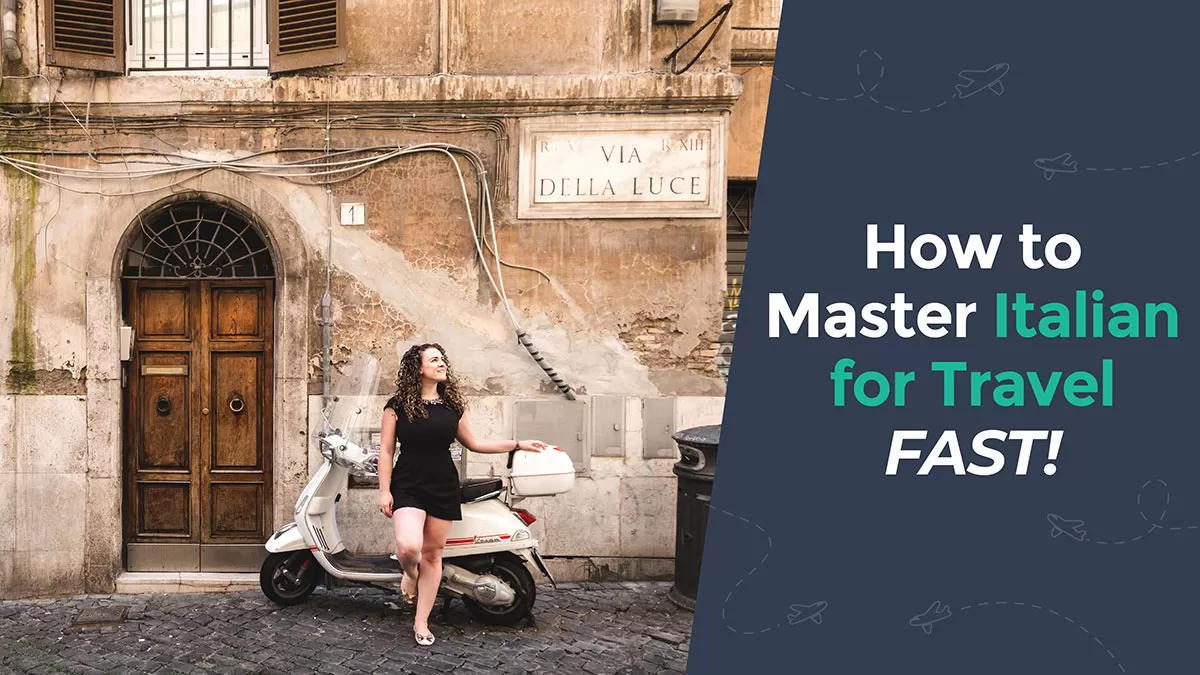
Travelling to Italy? Don’t be treated like a tourist! Live your best travel experiences and learn Italian for less than the cost of eating at a tourist trap restaurant or a taxi driver who has “taken you for a ride”. I’ve made it easy for you to master the Italian language so you can create lifelong memories as you mingle with locals , get local tips , avoid tourist traps , and make new friends . Who knows, you might even be invited over for afternoon tea by a lovely Sicilian family like I was! Read all about how speaking Italian changed my life and check out my online Italian video course here.
Here’s what my students are saying:

I really enjoyed the Intrepid Italian course, it certainly exceeded my expectations. The learning methodology is great, and easy to follow and found that I progressed much faster in the last 4 weeks than I ever did on my own or using other language apps. Grazie mille Michele, I can’t wait until I can put my new skills into action! – Roma Small
Click here for instant access!
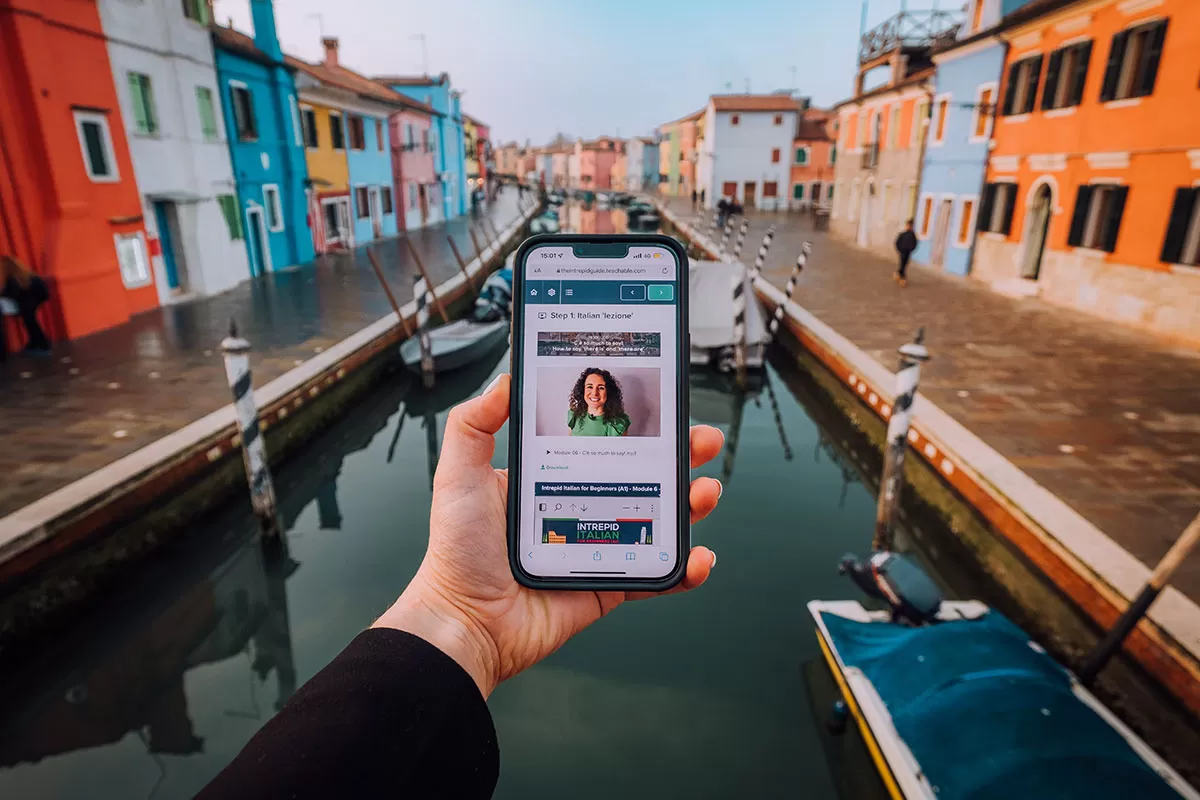
Don’t miss these Italy travel guides
- 33 Italy Travel Tips That Will Save You Time, Money and Disappointment
- Best Time to Visit Italy // PLUS Tips to Avoid Crowds and SAVE $$$
- Rome Tips and Tricks: 27 Things You Should Know Before You Go to Rome
- 21 Best Things to Do in Venice, Italy (From Rooftop Views to Private Tours)
- Top 10 Things to Do in Rome That Aren’t On Your List
- Top 10 Absolute Best Views of Rome That Will Blow Your Mind
- Domus Aurea: Visit Rome’s Secret Hidden Palace
- Self-Guided Trastevere Walking Tour: Where to See Rome’s Most Beautiful Streets
- 12 BEST Things to do in Burano, Italy (Tips from a Local Guide)
- Absolute Best Things to do in Verona, Italy | 26 Must-See Attractions
- Top 7 Authentic Tours and Experiences in Rome [Run by Locals]
- Lakes, Mountains & Castles: 21 Best Things to do in Trento, Italy
- Italy Fun Facts: 126 Unique Things You Didn’t Know About Italy
- 29 Amazing Day Trips from Rome By Train, Car & Guided Tour
- Where to Stay in Rome | Best Hotels and Best Neighborhoods to Stay in Rome
- Where to Stay in Verona: Best Hotels in Verona Neighbourhoods
- Where to Stay in Venice | Best Hotels in Venice for Every Budget
- 27 Best Things to Do in Trieste, Italy (PLUS Map, BEST Tours & Day Trips)
- THE 15 BEST Hotels in Trieste, Italy [2023 Edition]
- What it’s like Staying at DoubleTree by Hilton Trieste
Like it? Pin it for later!
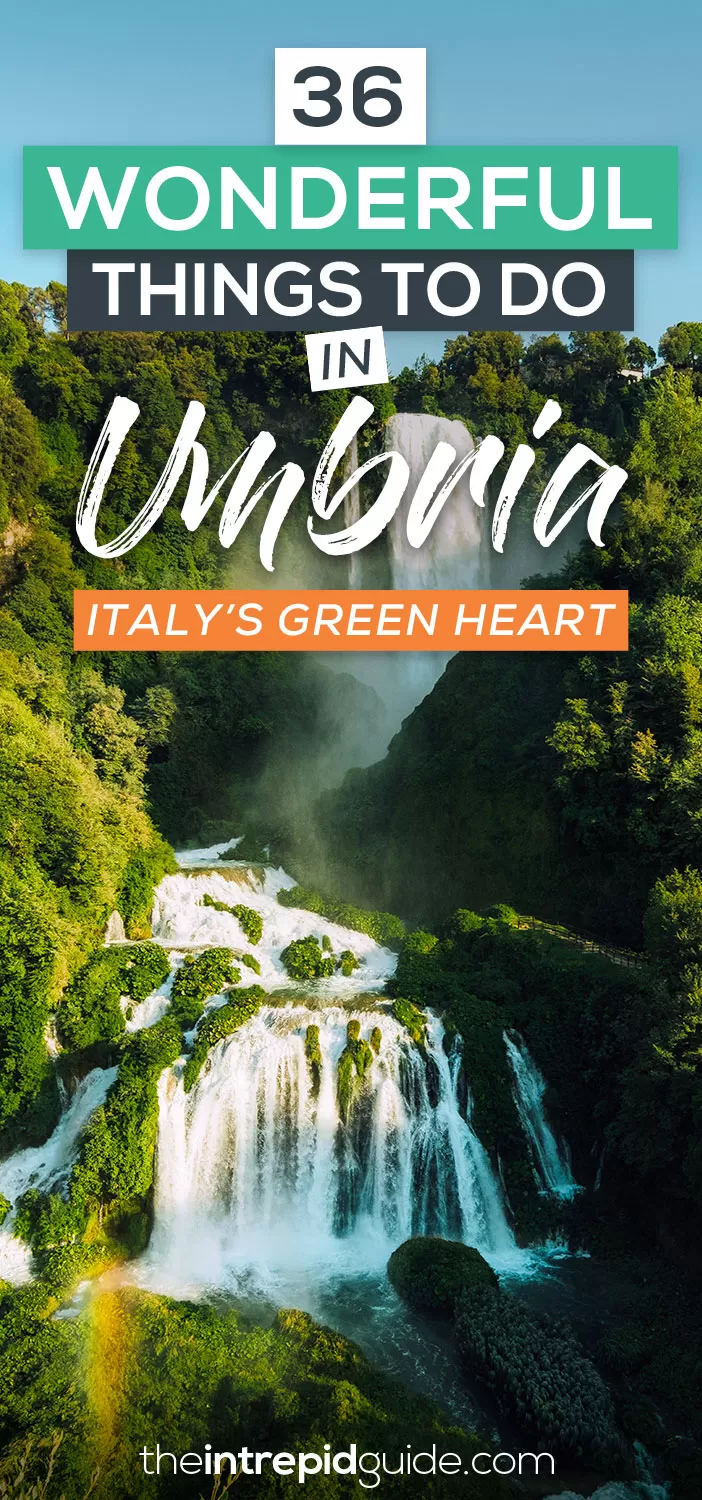
Over to you!
Got a question about visiting Umbria? Let me know using the comments section below or join me on social media to start a conversation.
Thanks for reading and I hope you enjoyed this post.
Like what you see? Subscribe using the form below to have all of my posts delivered directly to your email.
Success! Now check your email to confirm your subscription.
There was an error submitting your subscription. Please try again.
Get my best language and travel tips FREE by email...
Subscribe to my newsletter to receive detailed travel guides, exclusive travel and language learning tips, priority access to giveaways and more!
I will never give away, trade or sell your email address. You can unsubscribe at any time.
Michele creates language learning guides and courses for travel. What separates her from other instructors is her ability to explain complex grammar in a no-nonsense, straightforward manner using her unique 80/20 method. Get her free guide 9 reasons you’re not fluent…YET & how to fix it! Planning a trip? Learn the local language with her 80/20 method for less than the cost of eating at a tourist trap restaurant Start learning today!
13 Iconic Italian Songs for Learning Italian Faster (with Lyrics and Playlist)
26 italian series on netflix for learning italian (beginners to advanced), leave a comment cancel reply.
Save my name, email, and website in this browser for the next time I comment.
This site uses Akismet to reduce spam. Learn how your comment data is processed .

If you don't know where you are , how do you know where you're going? Find out how well you know Italian grammar today!

15 Best Things To Do in Umbria, Italy
Are you planning to visit Umbria soon? There are so many best things to do in Umbria that choosing the best ones is a daunting task.
Bordering Tuscany , Lazio , and Marche, the central Italian region of Umbria — dubbed “Italy’s green heart” — is full of medieval towns, outdoor activities, and some of the country’s best food and wine.
Umbria is also a historical and cultural fusion, and as one of the smallest regions of Italy , it retains a strong sense of its past. That alone is reason enough to visit Umbria.
It’s not enough to describe Umbria in terms of “saints,” “warriors,” and “greens,” as most books and travel guides do. This is because the region is birthplace to a great number of Catholic saints.
Also, Perugia and the other cities and towns of Umbria have a rich artistic and cultural heritage, as well as an abundance of ancient landscapes that visitors can explore.
Traditions and celebrations in this region also have a significant role to play in preserving Umbria’s cultural diversity, local customs, and traditions.
Table of Contents

For your awesome experience in the region, here’s our guide to the best things to do in Umbria, Italy.
1. Spend a day or two in Perugia

Perugia, the Umbrian capital, is located in the heart of the region and is a popular tourist destination — a must when you visit Umbria.
Rocca Paolina, Italy’s largest fortress, towers over this Etruscan town, which is charmingly medieval and dominated by this fortress.
Sorbello is one of the most impressive Etruscan sites in Perugia’s historic center. Visit the Fontana Maggiore, a fountain in Piazza IV Novembre, the square’s focal point.
The Italian art museum, La Galleria Nazionale dell’Umbria, as well as the Church of Sant’Angelo and the Monastery of Sant’Agnese are other notable attractions.
Perugia is also home to the Università per Stranieri (University for Foreigners of Perugia), a top-notch Italian language school , and the world’s first wine school.
Perugia is also known as the “Chocolate Capital of Italy,” and Perugina, the chocolatier behind the iconic Baci chocolate kisses, is based here. These hazelnut-filled chocolate kisses come wrapped in a love note in either English, Italian, Spanish, Portuguese, French, German, or Greek. These chocolates have been around since 1922. Eat and take some home for your family and friends.
The European Chocolate Festival in Perugia is a must-experience in October, where you’ll be able to take in live performances, culinary demonstrations, and chocolate art exhibits.
2. Hang out in Umbria’s Instagram-worthy town squares

Looking for a unique way to document your trip when you visit Umbria? Taking photos of every town square you encounter is one of the fun things to do in Umbria.
With its fairytale-like towns, Umbria is a must for tourists who enjoy snapping away. Most of these little towns have central squares that are just too beautiful to not be in our Instagram feeds.
It’s easy to get lost in Umbria’s beautiful medieval towns, each with a charming main square where you can grab a coffee and people-watch.
Check out the pretty town square of Spello, said to be the most beautiful town in Umbria. You will appreciate the Gothic charm of Gubbio’s town center or the medieval splendor of Montone.
Wherever you go when you visit Umbria, spend some time in a beautiful town square. You will not regret it.
3. Stop by Umbria’s hill towns
In the eyes of people who visit Umbria, medieval “hill towns” are like towns from a fairy tale that have been forgotten by the passage of time.
Instead of growing into bustling cities, they have preserved their charming characteristics such as narrow streets, massive gates, stone buildings, and so on. Umbria has a lot of these towns, a must-visit to fully appreciate this gorgeous region.
Here are three most famous medieval hill towns for you to check out when you visit Umbria:

Assisi’s hidden treasures range from ancient Roman and medieval ruins to the alpine trails of Monte Subasio’s countryside.
You can get a feel for local history and culture by visiting the lower and upper churches of the 13th-century Romanesque and Italian Gothic Basilica of St. Francis. St. Francis of Assisi’s final resting place can be found here. It’s one of the top destinations when you visit Umbria.

One of Umbria’s oldest towns, Gubbio has been inhabited since the pre-Roman era. Gray limestone dominates the town’s historic core, which is a pleasing blend of medieval, Gothic, and Renaissance styles.
People call it “the City of Fools” because of the “madman’s licence” (and Eugubina citizenship!) that can be obtained by simply going around the small fountain in Largo Bargello three times.

With many ancient monuments and an underground network of passageways dating back to the Middle Ages, this hillside town is a treasure trove for history lovers.
For history buffs, visiting Saint Patrick’s Well, a 16th-century well with a historic staircase, is one of those things to do in Umbria that you should not miss.
Explore two archaeological museums and the Albornoz Fortress for a glimpse into the history of the region. Visit the Duomo di Orvieto, a Gothic cathedral with a mosaic-adorned façade and awe-inspiring frescoes.
4. Get close to nature and enjoy outdoor activities in Monte Cucco Regional Park

In northeast Umbria, the Monte Cucco Regional Park is an unspoiled natural haven that’s ideal for those who enjoy the great outdoors.
There are numerous caves, karsts, and underground rivers which delight many caving enthusiasts. If you’re planning to visit Umbria and explore what it has to offer to outdoor enthusiasts, you will never be disappointed.
Now if that’s not your cup of tea, you can take a walk through the park’s pristine beech woods and meadows.
5. Visit Umbria’s borghi più belli d’Italia

Aside from the major centers of the region, there is a slew of smaller towns and villages that are well worth a day trip or two. Visit Umbria’s smaller villages if you want to get the most out of your trip there.
Umbria is home to a large number of “ borghi più belli d’Italia ,” or the most beautiful villages in Italy. A few of the places that got this distinction are the cities of Bevagna, Castiglione del Lago, and Bettona, as well as the towns of Arrone, Corciano, Massa Martano, Montefalco, Paciano, and San Gemini.
Check out their official website to see a complete list of the towns and make travel arrangements when you visit Umbria.
6. Visit Umbria’s famous churches and religious sites
The region may be small, but it’s not short of interesting churches and cathedrals to visit. It is home to a good number of these religious sites.
Dubbed the “land of saints,” it’s not surprising that Umbria is filled with religious sites. Some of these saints include St. Francis of Assisi, St. Clare of Assisi, St. Rita of Cascia, St. Ubald of Gubbio, St. Benedict of Nursia (Norcia), St. Veronica Giuliani, and St. Clare of Montefalco.
Here are our top picks of religious sites you should see when you visit Umbria:
• The Church of San Damiano — Assisi, Italy

Located in Assisi, the small and modest rustic-style Church of San Damiano and its cloisters were built in the 12th century. This church is said to be where Christ spoke to St Francis. The church was restored by St. Francis of Assisi and later served as home for St. Clare.
The Church of San Damiano has a significant role not only in Christianism but in Italian literature as well. This is where St. Francis wrote the religious song Laudes Creaturarum (Canticle of the Sun or Canticle of the Creatures). Laudes Creaturarum is deemed the earliest known vernacular literature written in the Umbrian dialect.
• Basilica of St. Francis of Assisi — Gubbio, Italy
Located in Gubbio, the hometown of one of the region’s famous saints, Sant’Ubaldo (St. Ubald), this basilica houses the embalmed body of Sant’Ubaldo himself. A visit to the saint’s shrine is a must!
• Basilica of St. Francis of Assisi — Assisi, Italy

This gorgeous 13th-century basilica is located on a hill in Assisi, the place where St. Francis was born and died.
Assisi’s Basilica of St. Francis stands on a hill that used to be called Hell’s Hill because death sentences were carried out here. After the canonization of St. Francis, the hill’s name was changed to Paradise Hill. This is also where you can find the saint’s final resting place.
• Basilica di Santa Chiara — Assisi, Italy

Constructed onto the original Chapel of St. George, this 13th-century church has a striking pink-and-white façade. This is where the remains of St. Clare of Assisi have been kept in a crypt since 1872.
7. Explore some of Umbria’s most important museums

Museums are the best way to learn about a particular place’s history, art, culture, and others. The region of Umbria is home to a significant number of museums.
Step inside one or some of them for an opportunity to get better acquainted with this fascinating Central Italian region. Here are the best ones we’ve handpicked for you:
• National Gallery of Umbria
The National Gallery of Umbria keeps the largest collection of Umbrian works of art as well as some of the most significant works of art in central Italy from the 13th to the 19th centuries. It is an Italian state museum located in the Palazzo dei Priori in Perugia.
• Museo del Fiore
Museo del Fiore is a small naturalist and multimedia museum in the woods rich in plants and wildlife — at Monte Rufeno Natural Reserve in the village of Torre Alfina in the province of Viterbo, near the Tuscany and Umbria border.
An educational play museum, Museo del Fiore deals with complex scientific issues in an easy manner. This museum is a must for families visiting the area.
• Torgiano Wine Museum
Situated in Torgiano between Assisi and Perugia, this private wine museum was established in 1974. Torgiano Wine Museum is deemed one of the most important museums of its kind in Italy.
• Claudio Faina Etruscan Museum
Located in the Faina Palace in Orvieto, this archaeological museum houses an exquisite Etruscan collection with a stunning view of the Orvieto Cathedral. Must not miss!
8. See Marmore Falls

As one of the world’s tallest man-made waterfalls, Marmore Falls (Cascata delle Marmore) tower over the surrounding landscape.
The Romans built Marmore Falls in 271 BC to divert the Velino River’s overflowing and stagnant waters into the Nero River. As a result, Terni’s metalworking, electrochemical, and electric industries have been made possible thanks to the falls feeding the Galleto Hydroelectric Power Station.
Note that the Marmore Waterfalls can only be accessed via a series of hiking trails that cater to a variety of fitness levels. Travertine grottoes and kayaking, rafting, and canyoneering opportunities await you on the way.
One of Italy’s best waterfalls , Cascata delle Marmore is located within Nera River Park, also known as Waters’ Park. The enchanted path and the balcony of lovers are not to be missed!
9. Head to the beach for an afternoon of water sports

Umbria is a landlocked region, but that doesn’t mean you can’t go to the beach for the day. Several beaches line the shores of Lake Trasimeno in Perugia. There are also a variety of calmer water sports available for you to try your hand at.
On the lake, activities such as windsurfing, kitesurfing, and wakeboarding are becoming increasingly popular.
For more experienced wakeboarders looking to put their skills to the test, Perugia also has a custom towing system and ramps.
For those interested in sailing, schools near Lake Trasimeno provide lessons for those who want to learn the sport. Take a trip to one of the many sailing clubs in Castiglione del Lago, Passignano, or Tuoro Sul Trasimeno.
10. Forage for truffles
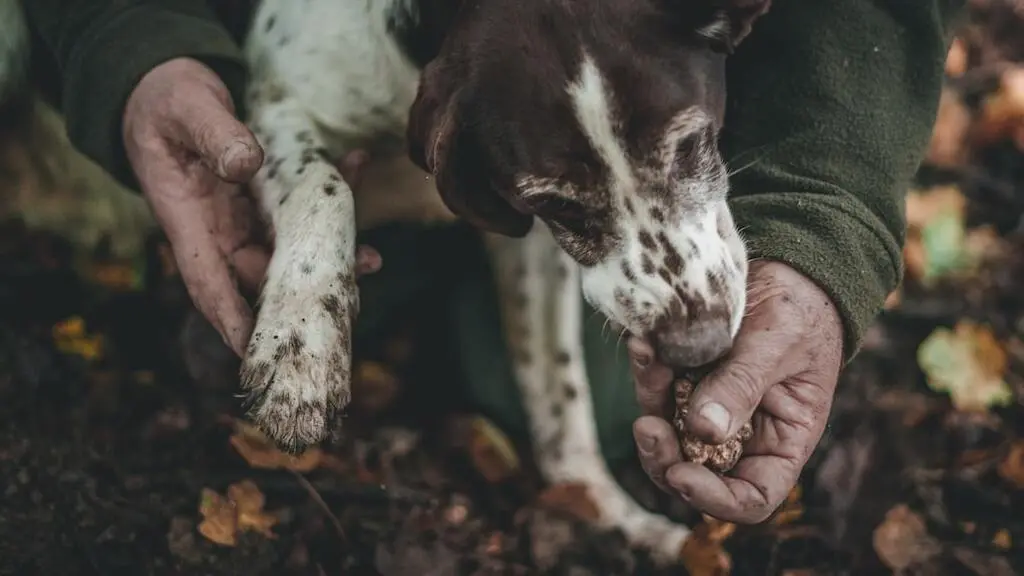
Nicknamed “black diamonds” for their rarity and high value, truffles are the true culinary treasure of Umbria. There’s no better way to learn about truffle hunting’s history and technique than by actually participating in a hunt.
Hunting for truffles in the countryside is best done with the assistance of an expert truffle hunter and his truffle-hunting dogs .
11. Visit Umbria’s vineyards

Tuscany, which borders Umbria, is known for its excellent wine production, but Umbrian wine is also becoming increasingly popular both domestically and abroad.
For a fraction of what you’d pay in Tuscany, you can buy high-quality wines directly from the vineyards when you visit Umbria. The Caprai Winery in the Montefalco region, for example, is a world-class vineyard with a Sagrantino red wine as its signature product.
Reservations in advance are recommended for a tour and lunch on the terrace. An unforgettable experience is guaranteed thanks to the combination of vineyard views, mouth-watering food, and fine wine.
Check out their website for more details.
12. Go hiking to explore more of the region

We recommend three best hiking trails for you to explore when you visit Umbria, depending on your hiking skill level — from easy to intermediate to expert.
• Belvedere Pennarossa superiore
Belvedere Pennarossa superiore is a scenic viewpoint near the Piazzale George Gordon Byron in Terni.
This trail requires expert hiling skills.
• Vista Piano Grande
The Piano Grande or the Great Plain in the Central Italian Apennines is a large plateau planked by the Sibillini Mountains. While there, you may as well stop by Castelluccio, a village perched on a tall rock in the plateu’s center.
The Vista Piano Grande requires intermediate hiking skills.
• Rocca Albornoziana
Rocca Albornoziana is a fortress atop the Sant’Elia Hill overlooking the city Spoleto. Make sure you are truly fit before you hike this one.
The Rocca Albornoziana trail requires expert hiking skills.
13. See the stunning wildflower fields in Casteluccio di Norcia

Known locally as la fioritura , this annual flowering is a sight to behold across Castelluccio di Norcia’s plateau. Here you will witness a stunning polychromatic visual of wildflowers in bloom across this part of the region.
The blooms you can see are violets, daffodils, shamrocks, clovers, gentianellas, buttercups, and poppies.
This beautiful explosion of nature’s colors takes place each year between late May and early July. This is one of the most beautiful spectacles you will see when you visit Umbria during these months.
14. Visit the village markets

There are numerous weekly markets in Umbria, where you can have an authentic and fun shopping experience. All kinds of delicious food and clothing, as well as shoes and leather goods, can be found in these markets.
If you’re looking for the best Umbrian markets, the best place to start is at your local tourist information office. To get the best selection, go to the market early in the morning.
You can find markets in Assisi and Marsciano every Monday and Tuesday, in Gubbio every Thursday, in Citta di Castello every third Saturday, and in Spoleto every Sunday.
There are also markets in Bastia Umbra every Friday and Orvieto every Saturday, as well as markets in Citta di Castello and Spoleto every third Saturday and second Saturday.
Perugia and Terni, two of Italy’s largest cities, both have permanent covered food markets that are open daily. Take note of these when you visit Umbria.
15. Sample Umbria’s “cucina povera”

Food is always a top must when you’re visiting any regions of Italy . Umbrian cuisine is interesting so partaking in it should be high on your list of things to do in Umbria.
The rustic Umbrian cuisine is often said to be “ cucina povera ” (“peasant cooking”), meaning it requires very few ingredients and simple preparations. However, despite its simplicity, the region’s cuisine is seen as one of Italy’s culinary treasures.
Here are some of the region’s traditional foods you should partake when you visit Umbria:
• Porchetta
Umbria’s porchetta is stuffed pig with its entrails seasoned with lard and garlic, plus lots of salt, pepper, and fennel. The pig is rolled, tied up, then slow-roasted for several hours. This dish is best paired with Umbria’s Montefalco Rosso wine.
• Pasta alla Norcina
This pasta dish uses sausage and cream based sauce, with white wine and tons of Pecorino Romano. Pasta alla Norcina hails from Norcia, a town and province known to produce some of Italy’s best sausages .
This traditional Umbrian dish is made with sautéed fava beans, artichokes, peas, asparagus, Swiss chard, and onion. Poached eggs may also be placed on top of it.
This dish doesn’t require cheese , but you may put some grated Parmesan if you wish!
• Torta al testo
Literally translated as “cake of the tile,” in some areas of the region this dish is called “caccia” or “crescia.”
Torta al testo is a simple sandwich with cheese and Umbrian cured meat stuffing, traditionally served alongside soups and stews.
Check out Umbria group tour deals here .
Looking for a place to stay in Umbria, Italy? Check prices and see pictures here:
- 2024 TRAVEL UPDATE
- Work with us
- Beyond Bologna
- Regions of Italy
- Travel books
- Best group tours
- Itineraries
- Accommodation guide
- Italian phrases for travel
- Rocket Italian review: 2024 update
- Ultimate Italy Travel Planner
- City Planners
- Essential Guides
- Italy themed gift ideas
- Trip planning services
UMBRIA TRAVEL GUIDE
Known as the green heart of Italy, Umbria is a region in Central Italy that begs to be discovered. Keep reading to find out why in our Umbria travel guide.
Best known for the city of Assisi, the region has much more to offer than simply being the birthplace of Saint Francis. It’s a little more wild than its Tuscan neighbor, and a trip to the area leaves you with a sense of deep, inner relaxation.
Whether you’re a lover of truffles , shimmering lakes, lush mountains, full bodied red wines, hilltop towns with incredible vistas, sagra (unique food festivals), or simply searching for a lesser traversed part of Italy, you’ll find it all right here in Umbria.
Article contents
Where is Umbria
Umbria is located in Central Italy and borders Tuscany, Lazio, and Le Marche. Whilst it’s a landlocked region, there are many beautiful lakes to discover including the best known Lake Trasimeno. It’s south of Florence, Milan, and Venice and north of Rome.
By car, it takes just under two hours to reach the capital, Perugia, from Florence and an hour and a half to reach Orvieto from Rome.
Map of Umbria
Main cities and towns in umbria.
There are so many beautiful cities and towns to discover when visiting Umbria. Have a listen to our podcast episode with author Michele Damiani on some of her favourite Umbrian towns to discover. Some of the most important or interesting towns to add to your trip include:
- Orvieto : This beautiful hillside city is famous for its magnificent Duomo. Hop on an underground tour to explore more of Orvieto’s Etruscan roots or simply relax at one of the many restaurants and enjoy the local food and wine.
- Assisi : A UNESCO World Heritage Site , you can’t miss a trip to the Basilica di San Francesco. It’s been on the pilgrim route since the 13th century as the birthplace of St Francis. Assisi is another great place to try Umbrian cuisine. The best meals are to be had on an outdoor terrace as the sun casts a glow over the valley below.
- Perugia : The Medieval capital of Umbria is well-known for its fantastic chocolate, and University for Foreigners of Perugia where many come to study the Italian language. Each year the city’s famous jazz festival is a highlight of the region’s calendar.
- Spello : This town is seriously flower-obsessed. So much so that they host the Infiorata festival every year where the town is decorated in flower tapestries created by competing teams from the community to celebrate the feast of Corpus Domini.
- Todi : A gorgeous Medieval hillside town dating back to the 8th century BC, Todi is rich in art and nature and gloriously free from crowds. It’s a great place to shop for artisan made wares like linens and ceramics.
- Gubbio : One of the most ancient towns in the region, Gubbio is renowned for its Roman ruins, Medieval aqueduct and charming hillside streets. Take the birdcage chairlift to the Basilica of Sant’Ubaldo for wonderful views over the town.
Top things to do in Umbria
There are a broad range of activities to suit every kind of traveler in Umbria. Whether you’re a foodie, a history buff, or nature lover, prepare to be wowed with the kinds of experiences you can have in the area. Some of the best activities on a trip to Umbria include:
Explore hilltop towns
Get lost in the Medieval streets in one of the many hilltop towns in the area like Gubbio, Todi, and Orvieto. Make sure your camera is handy at golden hour to capture the incredible views and magical light.
Go truffle hunting
Did you know Umbria is famed for its black truffles? Book a trip with a truffle hunter for an unforgettable experience watching the hunter and his trusty dog hunt through the forest for delicious truffles in the Umbrian hills. Then enjoy your finds shaved over pasta.
Enjoy tasting local wines
Umbria is renowned for its full bodied Sagrantino red wines and Montefalco Rosso. Head to one of the many wineries around Montefalco for a tasting, like biodynamic Fongoli or if you prefer white wines, try Grechetto and Trebbiano near Orvieto at family-run Cantine Zanchi .
If you like your wine tasting with a view, check out this picnic experience at Saio Assisi.
Visit incredible churches
Take a guided tour and admire the architecture and splendid art of the Duomo (Cathedral) of Orvieto , the Basilica of St Francis , the Duomo of Spoleto, and so many more.
Go swimming in Lake Trasimeno
Umbria gets very warm in the summertime so there’s nothing better than a refreshing swim in the cooling waters of Lake Trasimeno. There are nine beaches around the lake to swim at however try those near Castiglione del Lago for the best options.
Pull on the boots and go hiking
If you want to make the most of Umbria’s breathtakingly beautiful landscape, it’s a perfect destination for hiking. Try the hike along the Roman Aqueduct between Collepino and Spello or hire a mountain bike! Discover some of the many hiking itineraries you can enjoy on the Umbria Tourism website .
Go Olive Oil Tasting
Besides truffles and wine, the Umbria is renowned for their delicious liquid gold, aka Extra Virgin Olive Oil. Visit a frantoio , or olive mill, whilst visiting Umbria to learn more about why oil is so important to Umbrians, how it’s made, and of course to taste the final product. Try Frantoio Guadenzi near Trevi for award-winning oil!
Enjoy Ceramic shopping
If you love ceramics or artisan made products, then you absolutely need to include a stop in Deruta. It’s the major centre for the production of maiolica (painted tin-glazed earthenware) with a ceramic history dating back to the Middle Ages. Consider a visit to Grazia Maiolica – the oldest ceramic store in town.
What to eat and drink in Umbria
The style of food in Umbria is very rustic, hearty, and all round delicious! There is an abundance of tasty Umbrian dishes to try with the best local produce including pork sausages and cured meats, legumes, farro, truffles, olive oil, fantastic cured meats, Pecorino cheeses, great bread and interesting wines .
When visiting Umbria, don’t miss trying the following dishes:
- Stringozzi with truffles : The typical pasta of Umbria is made with no or little eggs and paired with a delicious shaving of black truffles when in season.
- Porchetta : Suckling pig is everywhere in Umbria. Try it in a tasty panino with a glass of Umbrian craft beer
- Cacciatore chicken : hunter-style chicken with no tomatoes. Think tender braised chicken with onion and garlic, juniper berries, sage, rosemary, wild fennel (seeds if you can’t get fresh), capers, olives, and some white wine and a squeeze of lemon.
- Ciaramicola : Known as “fiancé cake” this sweet treat is shaped into a ring. The dough is made with a special liquor called Alchermes and coated with lemon meringue that signifies purity.
- Torta al Testo / Crescia : A thick flatbread cooked on a cast iron skillet filled with grilled sausages and cooked spinach or other steamed vegetables and prosciutto.
- Sagrantino or Montefalco Rosso : The typical wine of Umbria is a full bodied red, tannin rich Sagrantino best known for its savoury and spicy red berry notes. Otherwise look out for Montefalco Rosso DOC, which is a blend of Sangiovese and Sagrantino.
Where to stay in Umbria
Given Umbria is a lesser known region, there can be somewhat limited accommodation options in the smaller towns. Whilst the region offers a range of choices including bed and breakfast, luxury hotels, Relais spa hotels, and agriturismi, you won’t necessarily find the full suite of choices available in each town. For that reason, the best bases include Perugia, Orvieto, and Todi.
If your trip includes visiting Assisi, Spello, Gubbio, and the lakes, a home base in Perugia is the perfect choice. There are many great accommodation options to choose from in the city and a variety of comfort and price points. Try the luxurious Sina Brufani , for a 5 star experience in the city centre.
Alternatively, if your trip takes in Tuscany, consider staying in Orvieto as you’ll find easy access to the Val d’Orcia in the Southern part of Tuscany. There are a few hotels in town like 4 star Hotel Palazzo Piccolomini as well as a range of farmhouse and B&B style accommodation.
Or, if you’re looking to be immersed in a smaller hilltop town, consider basing yourself in Todi. There’s the fantastic Tenuta di Canonica , Residenza D’Epoca San Lorenzo Tre and boutique B&Bs like Il Ghiottone who also offer marvelous cooking classes.
To soak up the beautiful countryside, stay in an agriturismo off the beaten track in the Umbrian hills.
When to go to Umbria
The real question is when not to go to Umbria – it’s fabulous at any time of year! Umbrian people are famed for their love of flowers which makes Spring a beautiful time to visit before the weather gets too warm.
The hilltop towns come to life during the summertime and this is one of the best times of year to experience the sagre or ‘food festivals’ in the region. In particular watch out for the Infiorata in Spello, the Umbria Jazz Festival held in Perugia in July or the medieval festivals in Bevagna. The summer season does get very warm, so consider staying somewhere with pool access to cool off.
If you want to experience Umbria in June, our small group summer tours of Umbria depart from Orvieto and visit hilltop towns and Medieval cities, meeting wonderful local people and experiencing the best Umbrian food and wine along the way.
Autumn is another beautiful time to visit with the wine harvest in September and the olive harvest in October/November. A very particular sagra to visit is the Black Celery Festival in Trevi which runs for two days in October. Don’t miss the L’oro di Spello in late November where they celebrate with the new olive oil on bruschetta!
We love the region so much at this time of year and are excited to take you on a cosy fall tour of Umbria to enjoy truffles, chocolate making and more. If you’re interested in the harvest processes and connection to the land, it’s the perfect time to visit.
Christmas time is another marvelous period to consider visiting Umbria. There is the largest Christmas Tree in Italy to see in Gubbio, markets in Perugia and sparkling illuminations in Assisi. Whilst it does get cold, it enjoys a Mediterranean climate so it’s not freezing temperatures to contend with. If you’re hoping for snow, January is your best bet.
How to get to Umbria
Getting to Umbria is easy to reach by plane, car, or train. For travelers coming from Rome, you can reach Orvieto in just a short hour and ten minute train ride, or the capital Perugia, in a couple of hours by car. If you’re traveling south from Florence, it takes just two hours by car to reach Perugia.
There is one main airport in Umbria giving you the option to take a connecting flight from other key cities in Italy like Rome, Florence, Milan, or Venice. Travelers coming from London or other European cities will find it easiest to fly directly into the Perugia International Airport .
How to get around Umbria
Generally speaking a car is the best way to get around Umbria and visit some of the smaller towns, wineries and olive oil mills. Take a look at Auto Europe or Car Rental by booking.com for car rental options – consider picking up your car from Perugia Airport , or the Orvieto train station. Whichever you choose, make sure to check out our guide to renting a car in Italy for useful tips.
For those not keen on driving, it is possible to use trains and local buses to access some of the main towns including Orvieto, Perugia, and Assisi. The train from Rome to Orvieto is very quick and will see you there in just over an hour. You can check the latest schedules and pricing on the Omio website and app .
Meanwhile, regional trains run from Perugia to Orvieto with the quickest taking just under two hours. The train ride from Perugia to Assisi is a very quick 20 minutes, however, you’ll need to take a local bus or taxi to reach the city centre as it’s 5kms away. Check out this article for more information on traveling by train in Italy.
Let’s go to Umbria!
Inspired to visit Umbria? Learn more about the region with our podcast episodes Wine and Wandering in Umbria , Uncovering Umbrian Towns and Villages , and Dishes of Umbria .
Want to discover Umbria with us? For a deeper local connection, why not join one of our Umbria small group tours .
Must-see attractions in Umbria
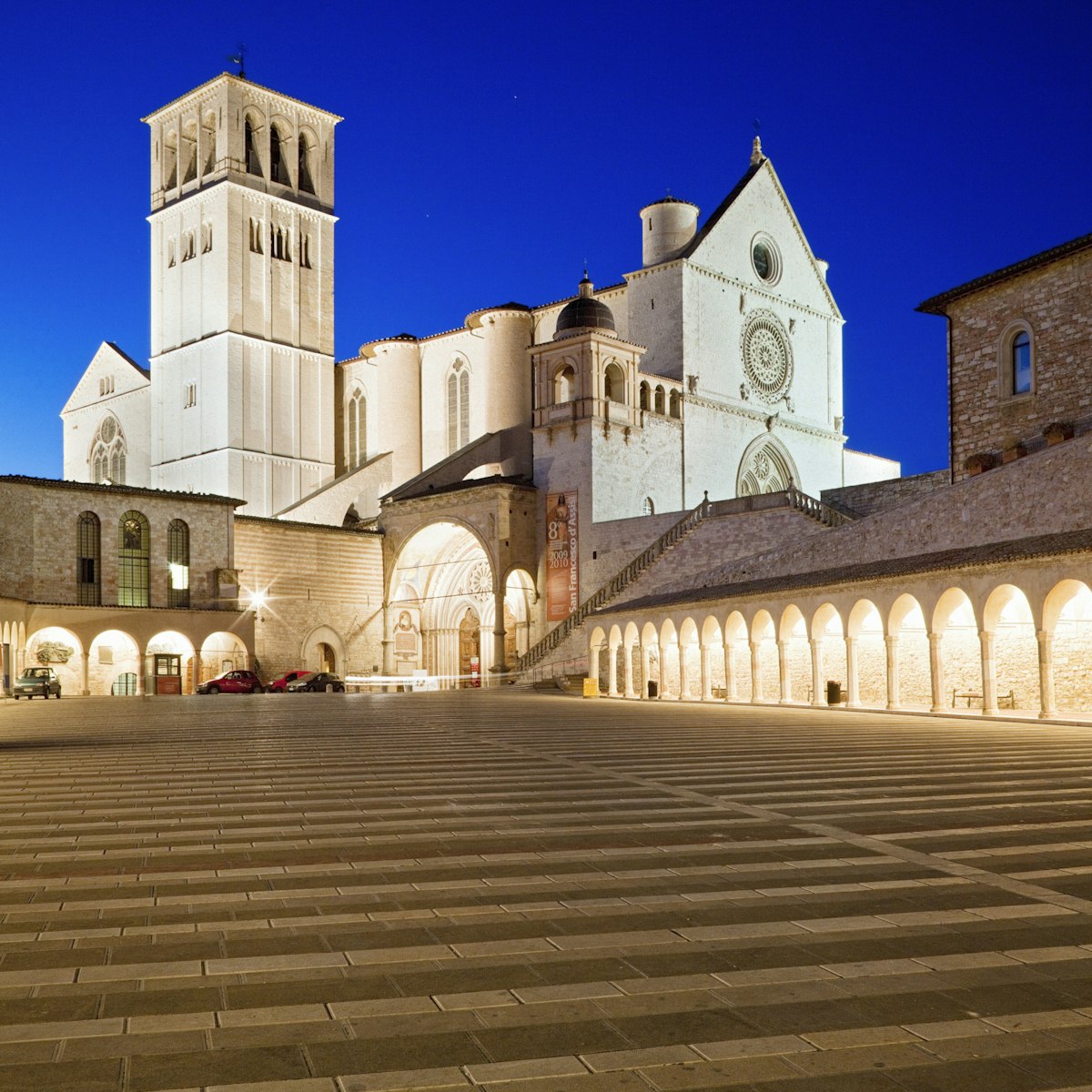
Basilica di San Francesco
Visible for miles around, the Basilica di San Francesco is the crowning glory of Assisi's Unesco-listed historic centre. The 13th-century complex is…
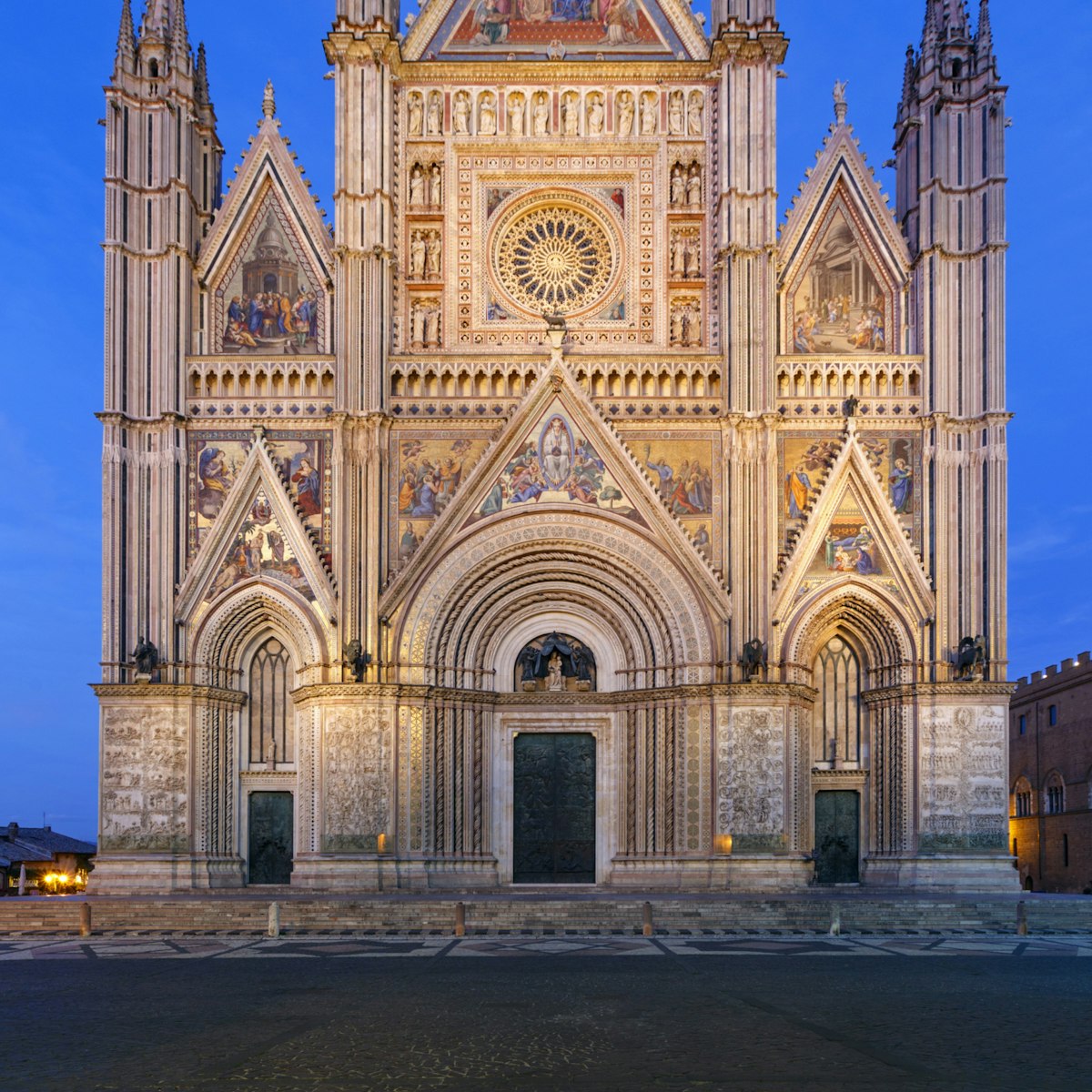
Nothing can prepare you for the visual feast that is Orvieto's soul-stirring Gothic cathedral. Dating from 1290, it sports a black-and-white banded…
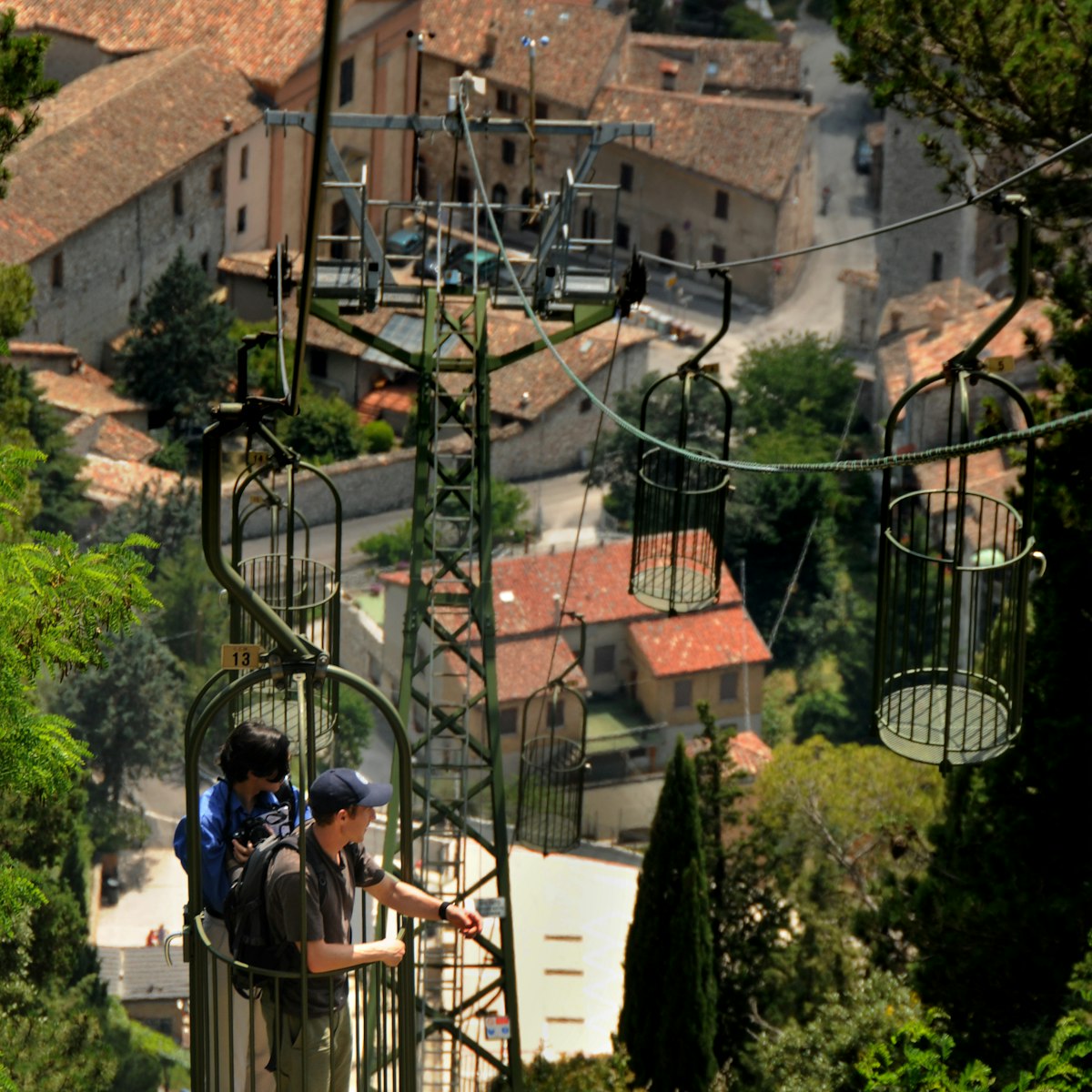
Funivia Colle Eletto
Although the Basilica di Sant'Ubaldo, perched high on Monte Ingino, is a perfectly lovely church, the real adventure is getting there on the funivia. The…
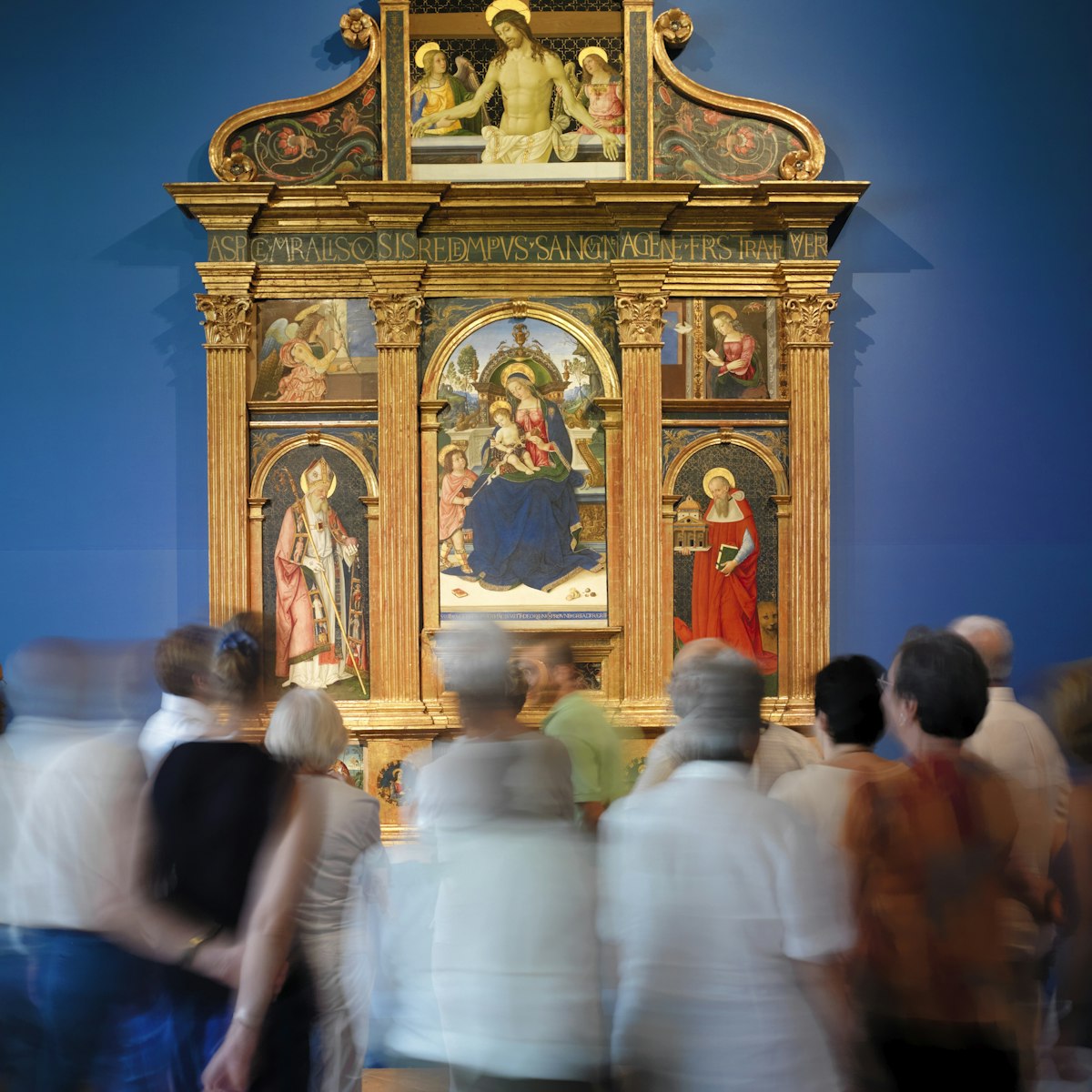
Galleria Nazionale dell'Umbria
Umbria's foremost art gallery is housed in Palazzo dei Priori on Perugia's main strip. Its collection, chronologically displayed over 40 rooms, is one of…

Palazzo dei Priori
Flanking Corso Vannucci, this Gothic palace, constructed between the 13th and 14th centuries, is architecturally striking with its tripartite windows,…
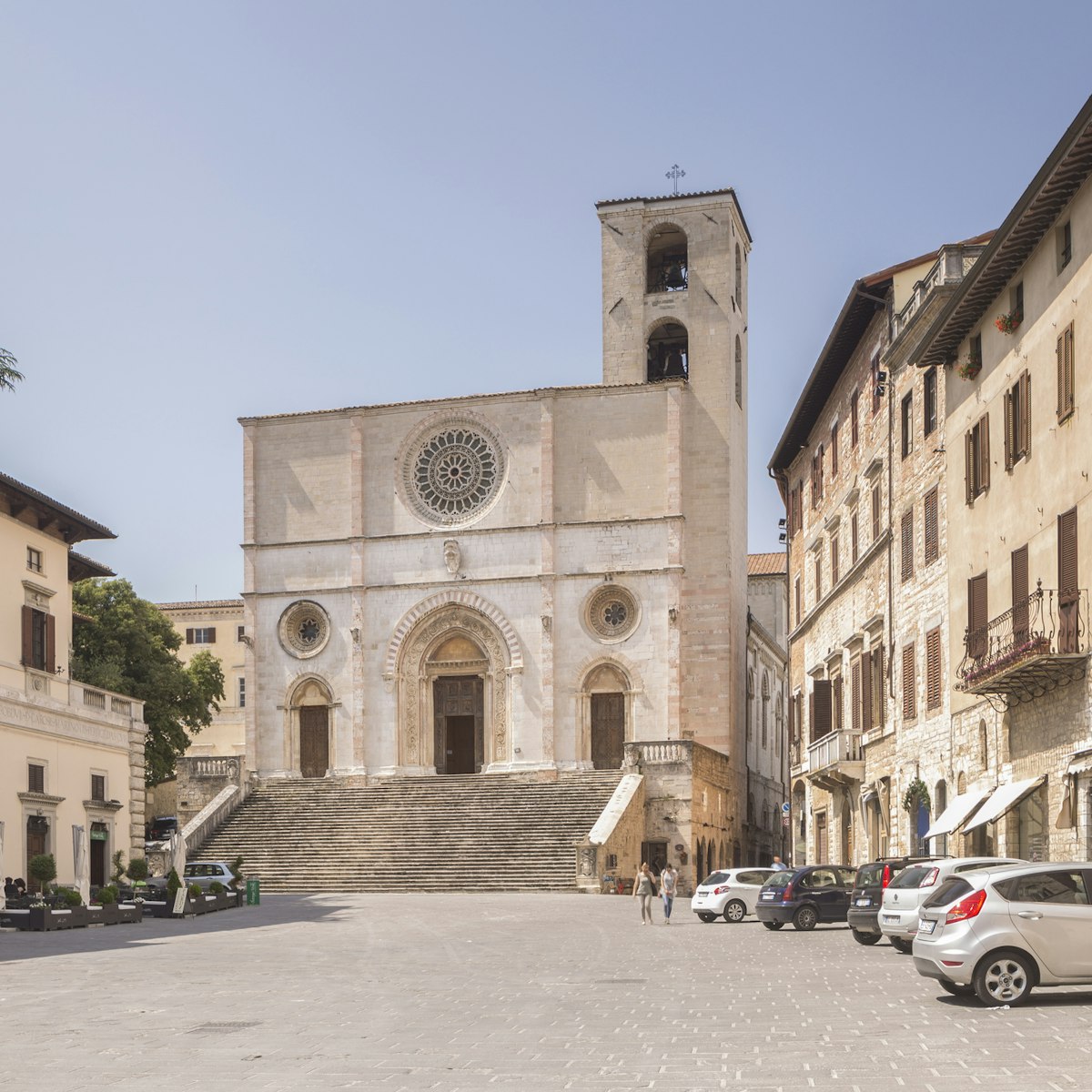
Piazza del Popolo
Just try to walk through Piazza del Popolo without trying to photograph it from every angle. The rectangular piazza is one of Umbria's finest medieval…
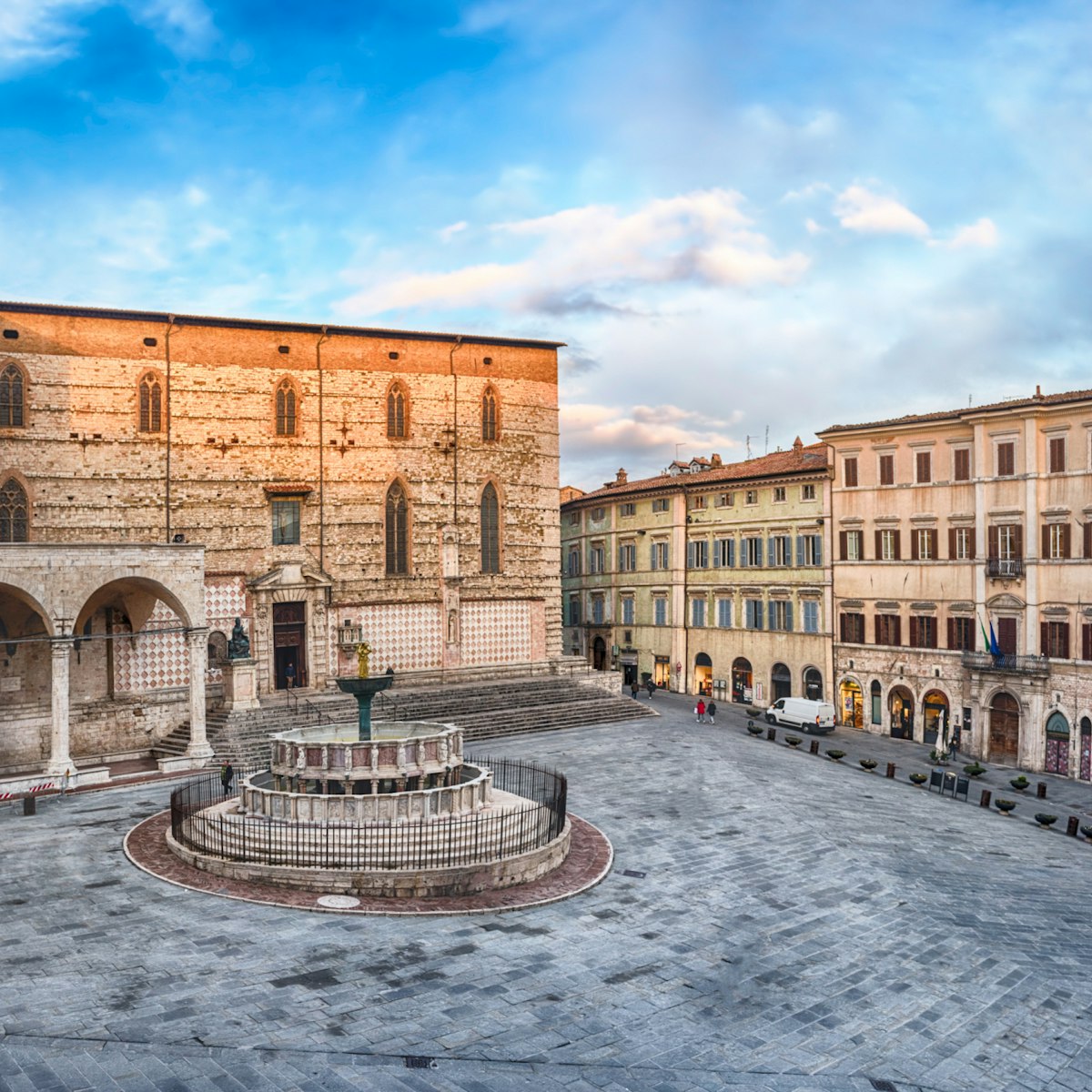
Piazza IV Novembre
In Perugia all roads seem to lead to Piazza IV Novembre. This historic square, flanked by Palazzo dei Priori and the Cattedrale, has been at the heart of…
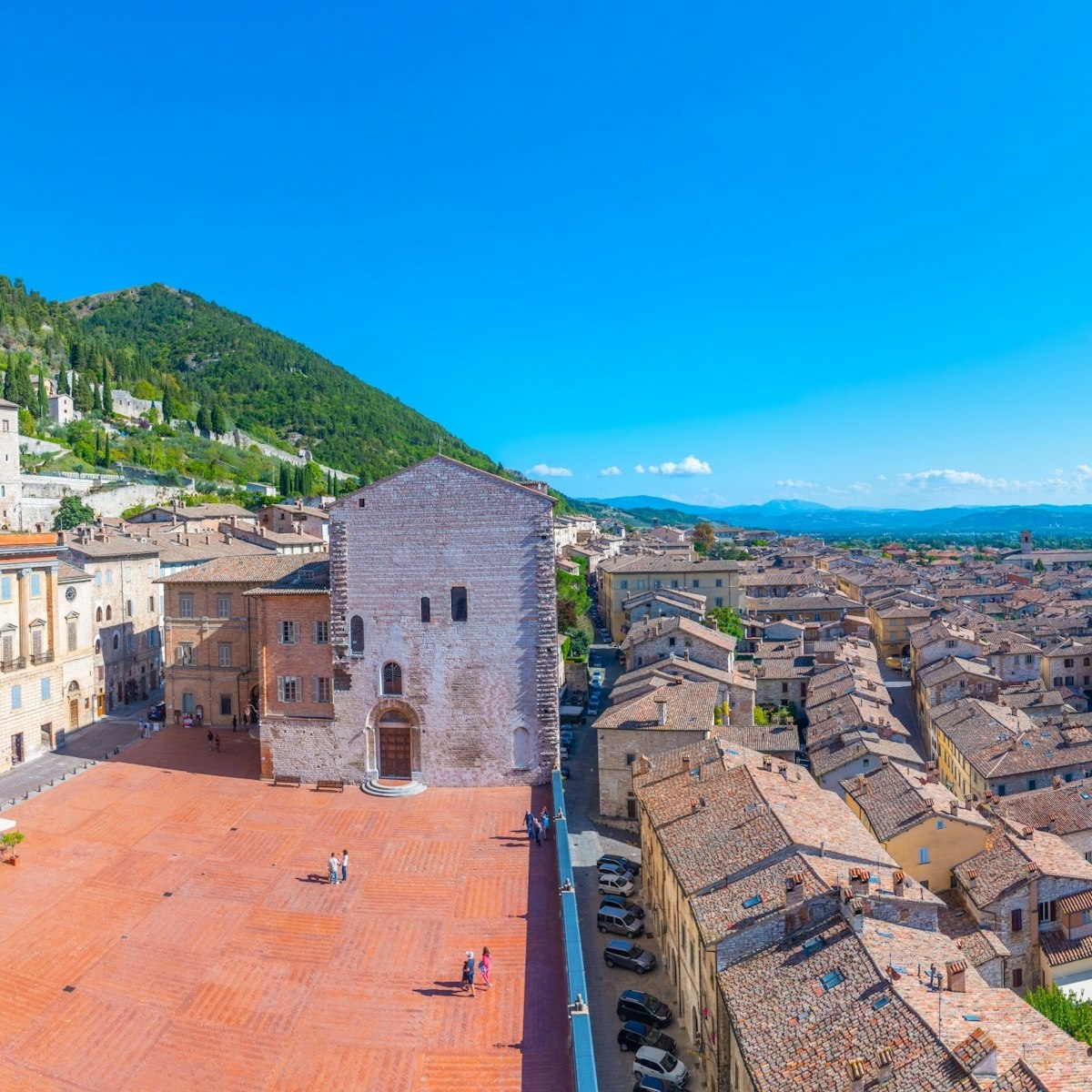
Piazza Grande
This panoramic piazza, the result of an ambitious 14th-century urban development plan, is medieval Gubbio's showpiece square. Commanding huge valley views…

Narni Sotterranea
Narni’s main drawcard is this extraordinary subterranean underworld. Discovered by a group of young speleologists in 1977, and originally accessed through…
A flight of steps sweeps down to Spoleto's pale-stone cathedral, photogenically set on a graceful hillside piazza. Originally constructed to a Romanesque…
Nobile Collegio del Cambio
Seat of Perugia's Moneychanger's Guild between 1452 and 1457, the extravagantly adorned Nobile Collegio del Cambio has three rooms: the Sala dei Legisti …
Chiesa di San Michele Arcangelo
Also known as the Chiesa or Tempio di Sant'Angelo, this 5th-century Romanesque church is one of the oldest in Italy (and the most appealing in Perugia)…
Ponte delle Torri
Many people gasp the first time they glimpse the medieval Ponte delle Torri, a 10-arch bridge that spectacularly spans a steeply wooded gorge – a scene…
Basilica Superiore
The upper church of the Basilica di San Francesco was built after the Basilica Inferiore and consecrated in 1253, and the change in style and grandiosity…
Basilica Inferiore
The lower and earlier of the two churches comprising the Basilica di San Francesco, this basilica was commissioned by Pope Gregory IX in 1228, just two…
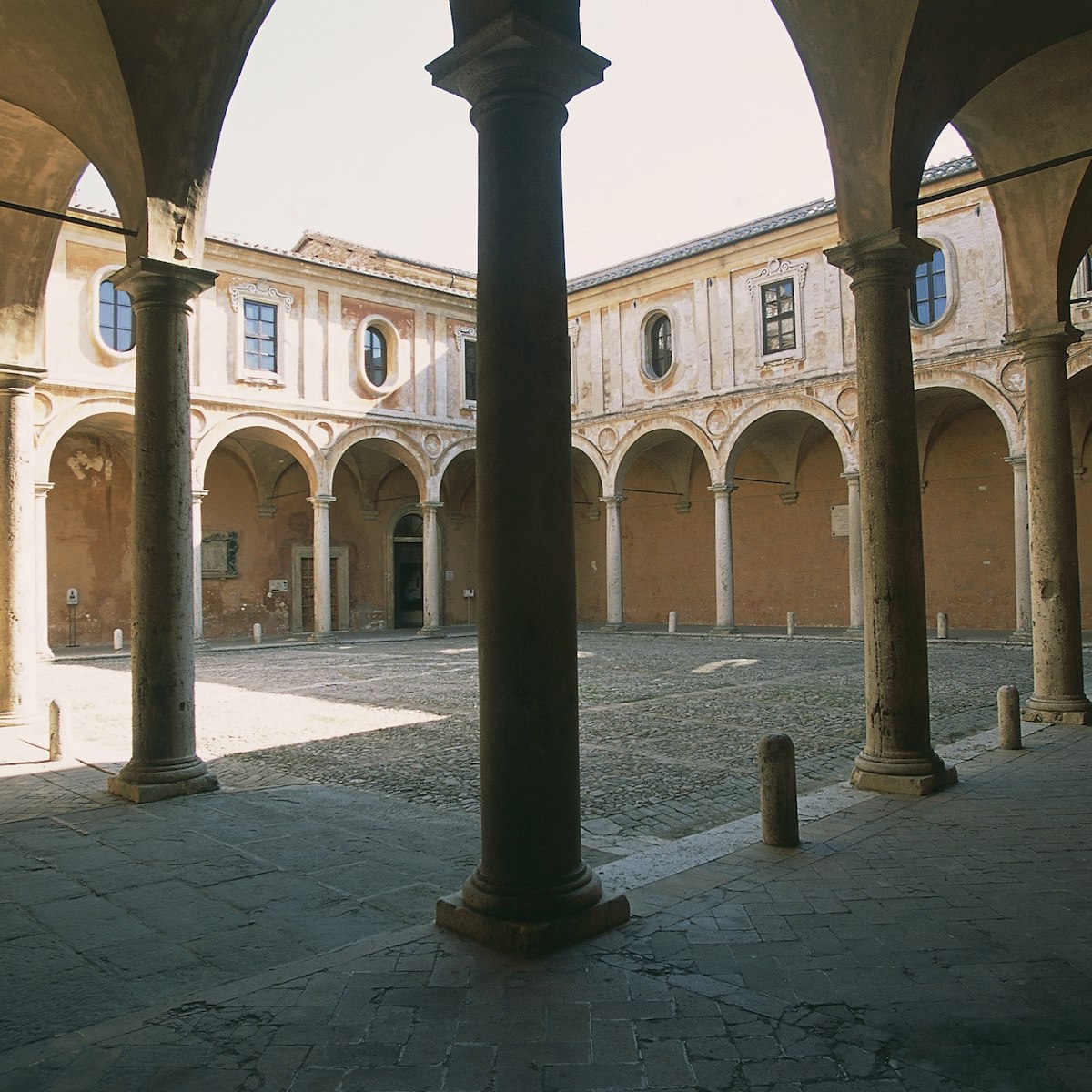
Cattedrale e Abbazia di San Pietro
South of the town centre, past the Porta di San Pietro, is this atmospheric 10th-century basilica complex. The basilica, overlooked by a landmark bell…
Eremo delle Carceri
Perched on the forested slopes of Monte Subasio, this monastery is set around the caves where St Francis and his followers prayed and contemplated…
Chiesa di San Damiano
Set amid lush olive groves 1.5km southeast of Assisi's historic centre, this atmospheric sanctuary is where St Francis is said to have heard the voice of…
Museo Civico
Housed in Palazzo dei Consoli, this museum is home to the celebrated Iguvine Tables (also known as the Eugubian Tables or Tablets), seven bronze tablets…
Rocca Albornoziana
Dominating the skyline above Spoleto, this formidable fortress was built on the summit of Colle Sant’Elia as part of a 14th-century campaign to reassert…
Isola Polvese
Lago Trasimeno
This island, accessible by ferry from San Feliciano, is a delight – not so much for its sights, of which there aren't many, but for its glorious unspoiled…
Belvedere Cappuccini
Head to this viewing balcony at the top of town for a living postcard view across the bucolic countryside below – on a clear day you can make out Assisi …
Tomb of St Francis
Hidden for almost 600 years, St Francis' tomb was discovered beneath the Basilica di San Francesco in 1818 following a 52-day dig, and painstakingly…
Basilica di San Salvatore
Spoleto's Romanesque basilica, listed as a Unesco World Heritage Site as part of the 'Longobards in Italy, Places of the Power (568-774 AD)' group, dates…
Chiesa di Santa Maria Maggiore
The impressive 12th-century Chiesa di Santa Maria Maggiore houses Spello's main draw – a wonderful cycle of frescoes by the Perugia-born artist…
Campanile di San Fortunato
Climb the 14th-century bell tower of the Chiesa di San Fortunato for exhilarating views across the hills and castles surrounding Todi.

Orvieto Underground
The coolest place in Orvieto (literally), this series of 440 caves (out of 1200 in the system) has been used for millennia by locals for various purposes …
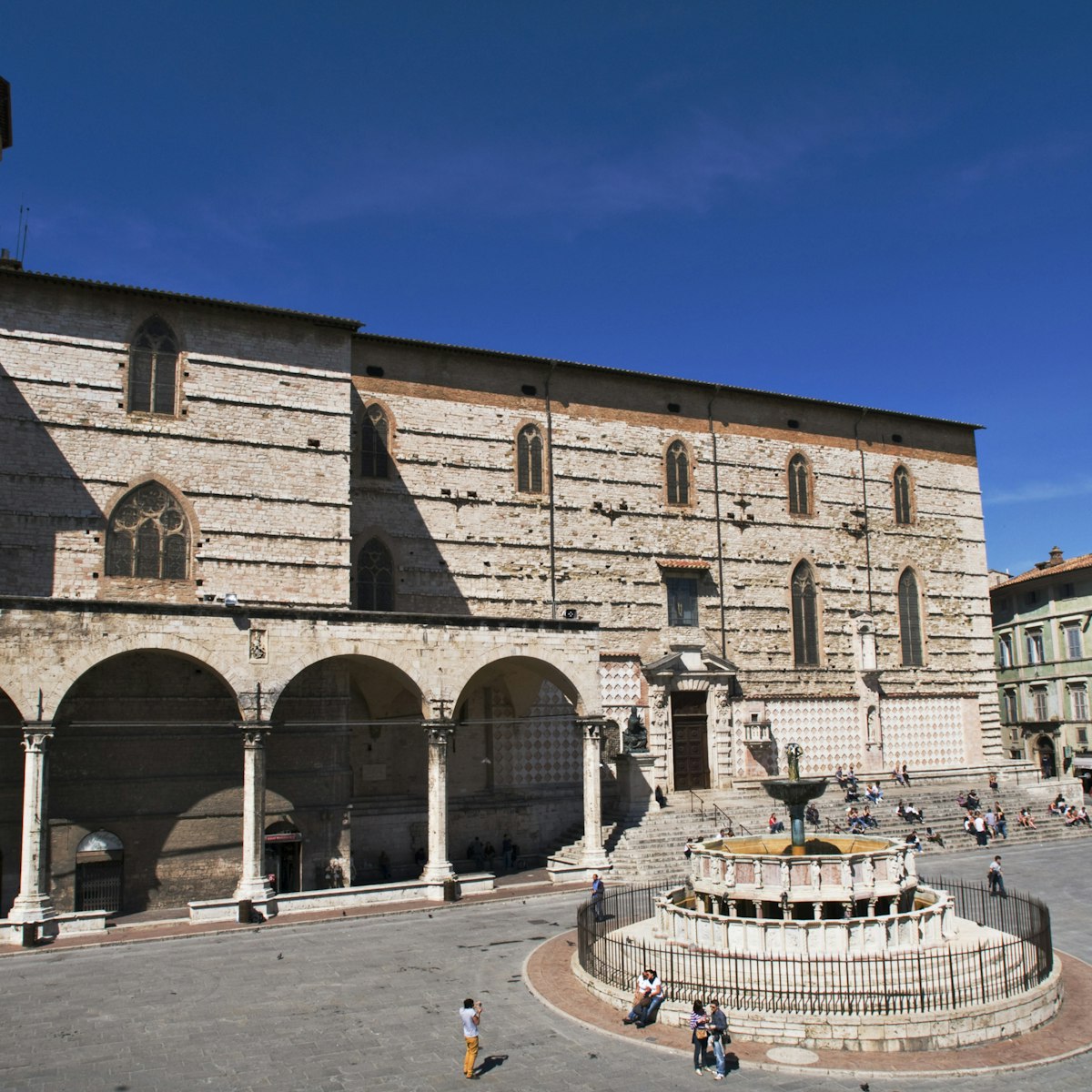
Cattedrale di San Lorenzo
Lording it over Piazza IV Novembre is Perugia's stark medieval cathedral. A church has stood here since the 900s, but the version you see today was begun…
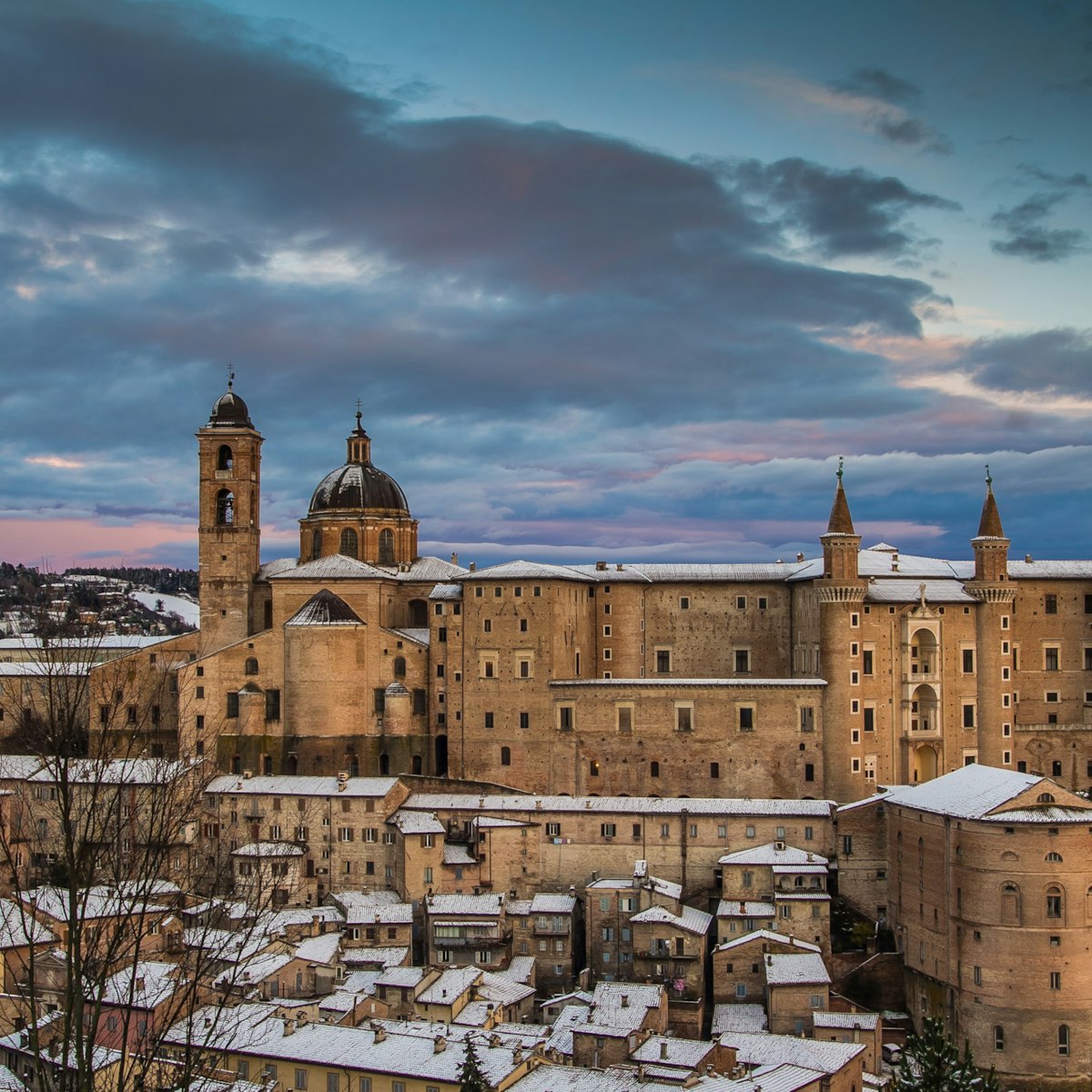
Palazzo Ducale
The 15th-century Palazzo Ducale was built by the Duke of Montefeltro’s family as a scaled-down version of their palatial residence in Urbino. Its walls…
Piazza San Benedetto
Centred on a statue of St Benedict, Norcia's most famous son, this small piazza is flanked by the town's most impressive medieval buildings, many of which…
Casa del Cioccolato Perugina
To visit the Wonka-esque world of Perugian chocolate, sign up for a 1¼-hour guided tour (in Italian or English, times vary) of the House of Chocolate…
Parco Regionale del Monte Cucco
In Umbria's wild northeastern fringes, the Parco Regionale del Monte Cucco is a gorgeous swathe of wildflower-speckled meadows, gentle slopes brushed with…
Basilica di Santa Chiara
Built in a 13th-century Romanesque style, with muscular flying buttresses and a striking pink-and-white striped facade, this church is dedicated to St…
Grotta Monte Cucco
Deep in the Parco Regionale del Monte Cucco is one of Europe's most spectacular limestone caves, with 30km of galleries reaching depths of 900m. Those up…
Basilica di Sant'Ubaldo
Perched high on Monte Ingino, and accessible by the funivia or a steep 30-minute walk from Palazzo Ducale, this landmark basilica has housed the body of…
Palazzo Collicola Arte Visive
The 18th-century Palazzo Collicola houses Spoleto's premier collection of modern art. The collection, named after its late former director and noted art…
Fontana Maggiore
The centrepiece of Piazza IV Novembre, the delicate pink-and-white marble Fontana Maggiore was designed by Fra Bevignate and built by father-and-son team…
Casa Museo di Palazzo Sorbello
This exquisite 17th-century mansion, once owned by the aristocratic Sorbello family, has been restored to its frescoed, gilt-clad, chandelier-lit, 18th…
Ipogeo dei Volumni
About 5km southeast of the city, the Ipogeo dei Volumni is part of the Palazzone necropolis, a vast 2nd-century-BC Etruscan burial site. The tomb, which…
Basilica di Santa Maria degli Angeli
The enormous domed church you see as you approach Assisi along the Tiber valley is the 16th-century Basilica di Santa Maria degli Angeli, some 4km beneath…
More destinations you need to see
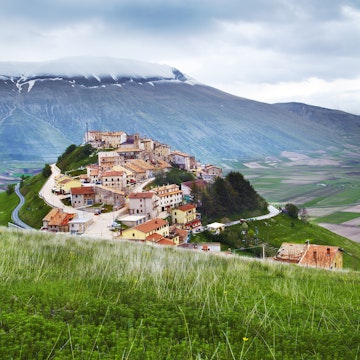
16 Best Things to do in Umbria, Italy
Welcome to Umbria, Italy’s best-kept secret! This region has so many amazing things to do, whether it’s strolling through picturesque streets, activities like rafting and wakeboarding, wine tasting, or dancing at local festivals. Plus, the scenery in Umbria will blow your mind; wake up to fog rolling over the hills or watch an explosive sunset by the lakeside. Enjoy all the best things to do in Umbria, Italy , with this complete travel guide.
Things to do in Umbria, Italy
Umbria is a central region of Italy that borders Tuscany ; nevertheless, it’s far less touristy. This is mainly because its infrastructure is less developed, with far fewer trains and highways, but also because of its remote location. However, this makes it even better than Tuscany, as it has just as beautiful landscapes but without lots of tour groups and vacationers.
Here are all your hotel options in Umbria.
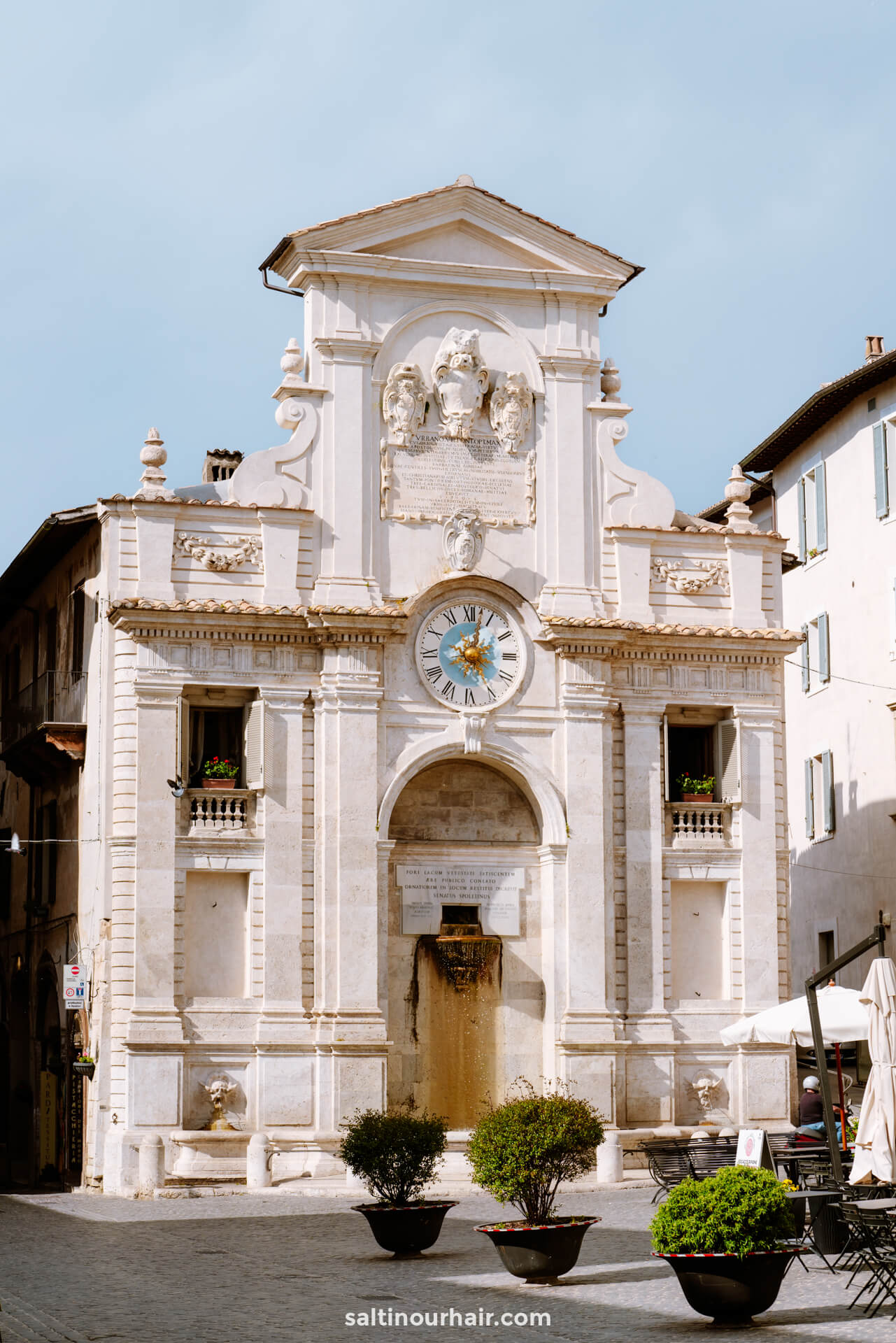
1. Gubbio and its Festa dei Ceri
Gubbio is a beautiful medieval city, most famous for its annual event, Festa dei Ceri (Candle Race)—one of the top things to do in Umbria. The event is held every year on May 15th to celebrate the 3 patron saints: St Ubaldo, St George, and St Anthony.
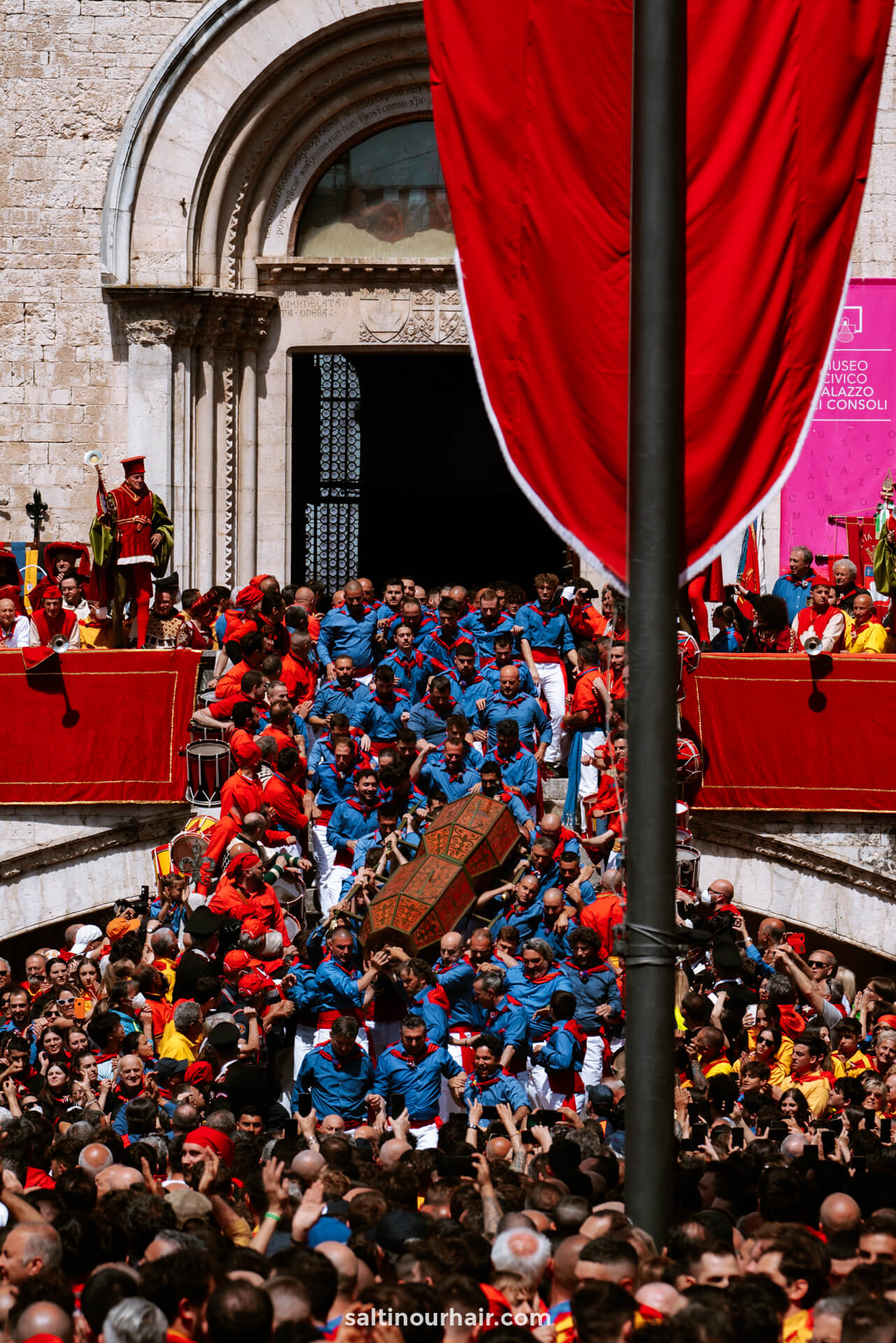
On the day, each saint is represented by a candle (a huge wooden monument) given to a team and carried on their shoulders. Each team then races through the streets of Gubbio all the way up to the Basilica on top of Mount Ingino. It’s an incredible spectacle to witness as you watch the crowds cheering and musicians filling the streets. What’s more, there is a banquet with dancing and food following the event. It’s one of the craziest festivals we’ve ever seen!
We recommend to rent a car in Italy through Sunny Cars with free cancellation and insurance included. Book your rental car here .
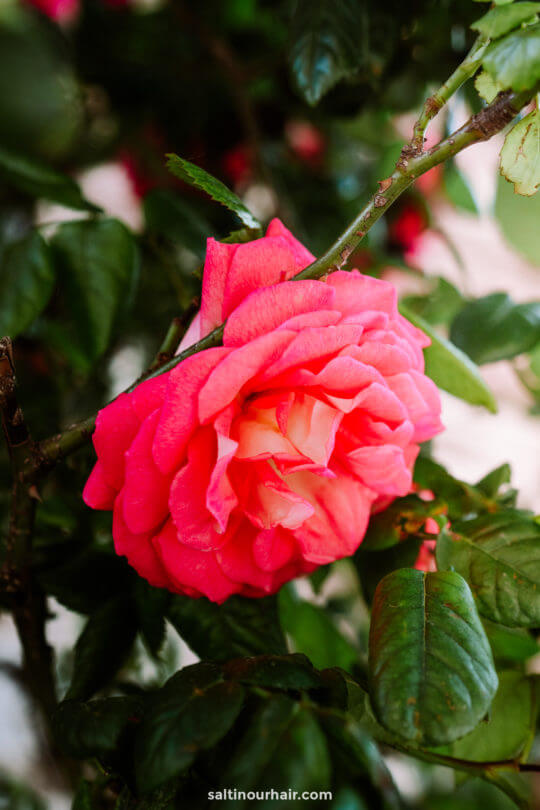
Things to do in Gubbio
If you’re not visiting during Festa dei Ceri, there are still many things to see in this charming town. For example, you can visit the ancient Roman Theatre or the beautiful Piazza Grande. You can also discover the famous Iguvine tablets that date back to the 3rd century BC!
Once you’ve seen some historical sites, walk through the terraced streets that slope up Mount Ingino and end at the Basilica. If you don’t feel like the steep walk to the top, you can take the town cable car.
Hotels in Gubbio 😴
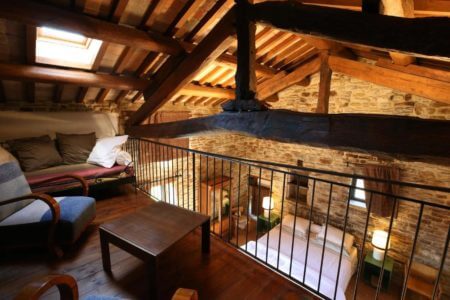
2. Lago Trasimeno, Umbria
Umbria’s answer to Lake Como is the remarkable Lago Trasimeno, a vast lake with 3 islands and small medieval towns on its edges. The lake sits close to the border of Tuscany and the hilltop town of Cortona and is surrounded by rolling green hills, sunflower fields, and woodland. It’s the perfect day out in Umbria!
Read everything about Cortona in Italy .
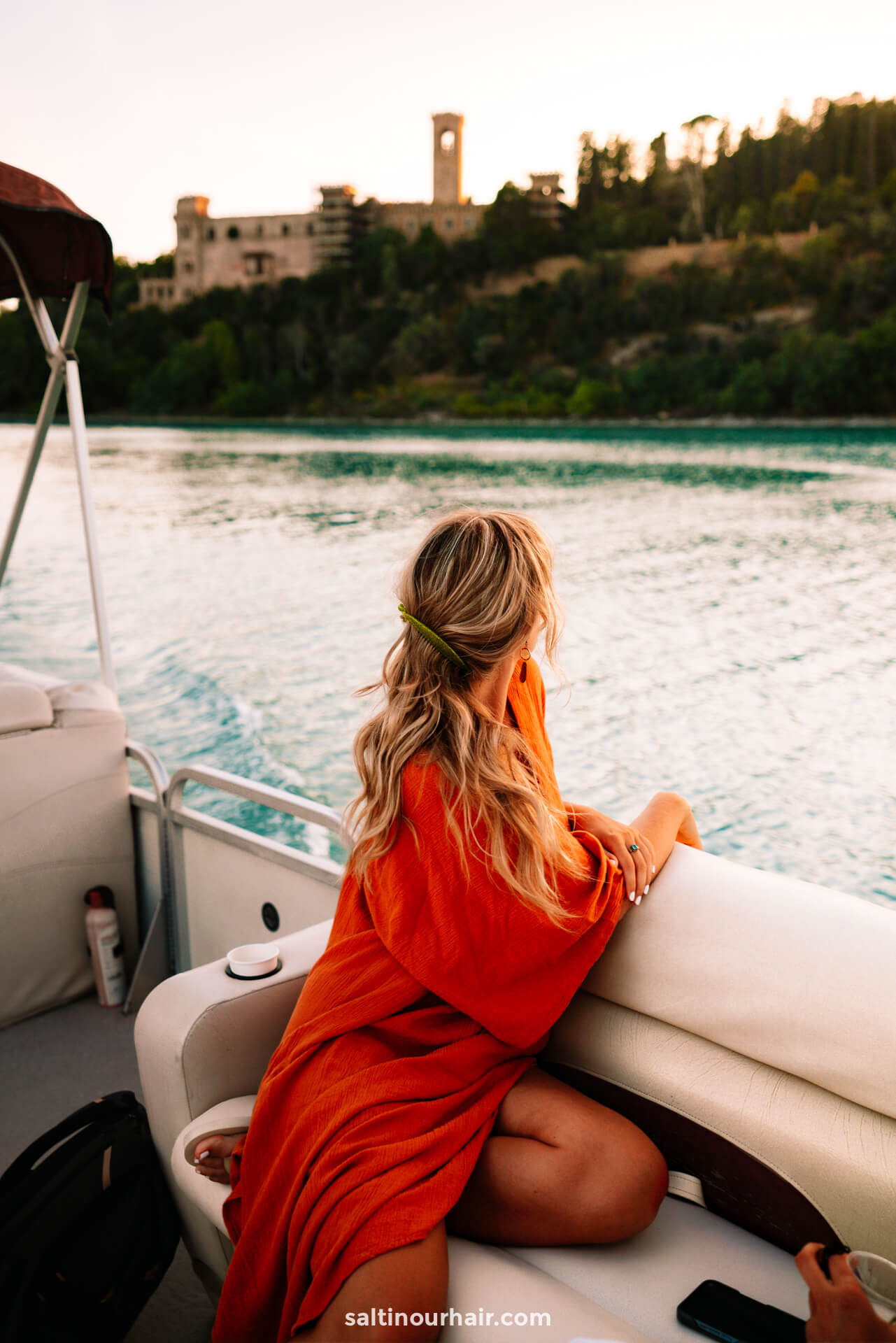
Jump on a boat and tour the small islands (Isola Maggiore and Isola Polvese. Isola Minore is private). As you go, stop to do watersports like wakeboarding or kayaking on the glistening blue water. At the end of a day of activities, have dinner on one of the islands, sitting at lantern-lit tables overlooking the water and a magical lake sunset.
Join this kayak tour on Trasimeno Lake .
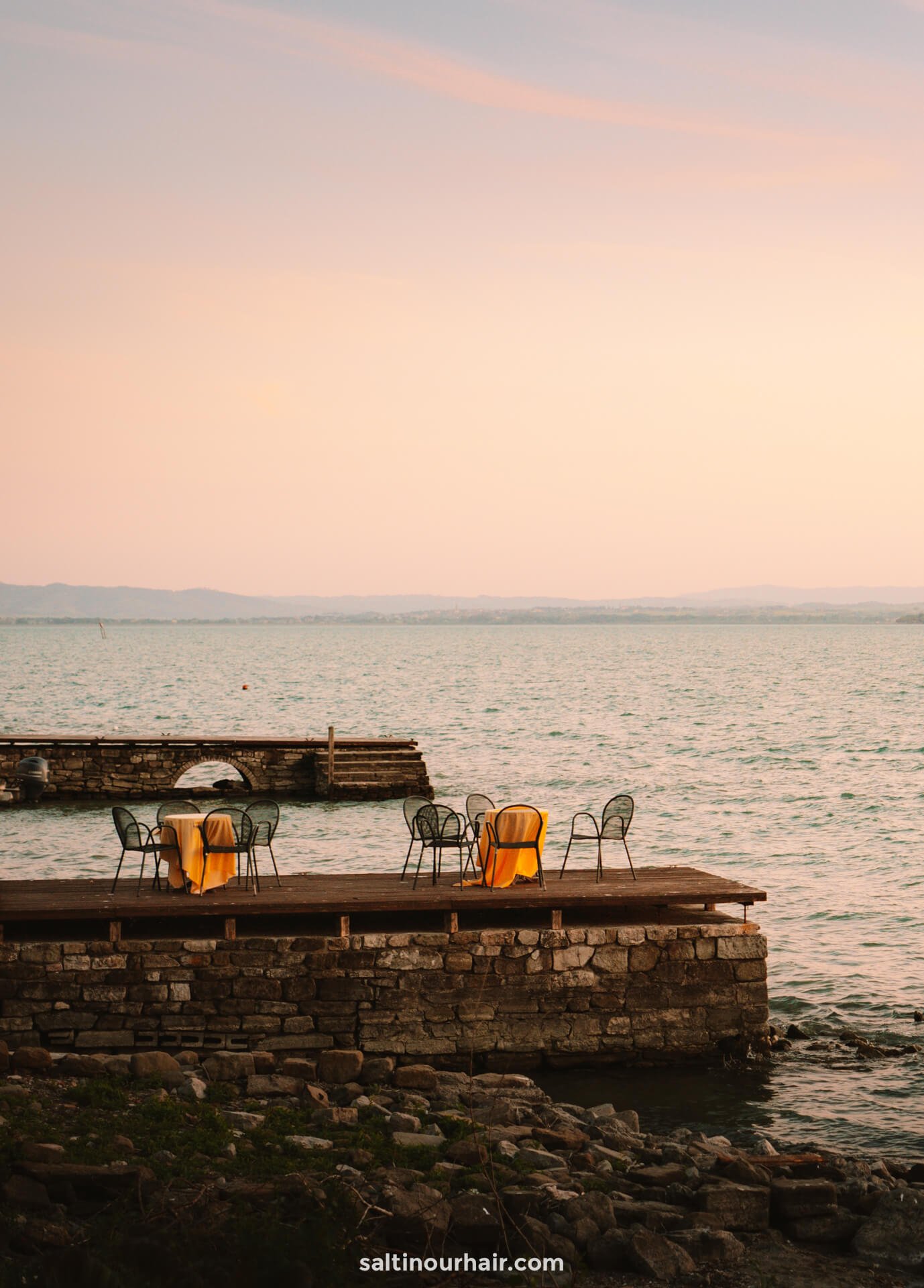
Isola Maggiore
One of the best things to do in Umbria and Lago Trasimeno is to visit Maggiore Island. The island is home to only 12 people, one ancient street, a small beach, and a few restaurants. If you walk to the other side of the island through the olive groves, you’ll also find an abandoned castle looking out over the lake.
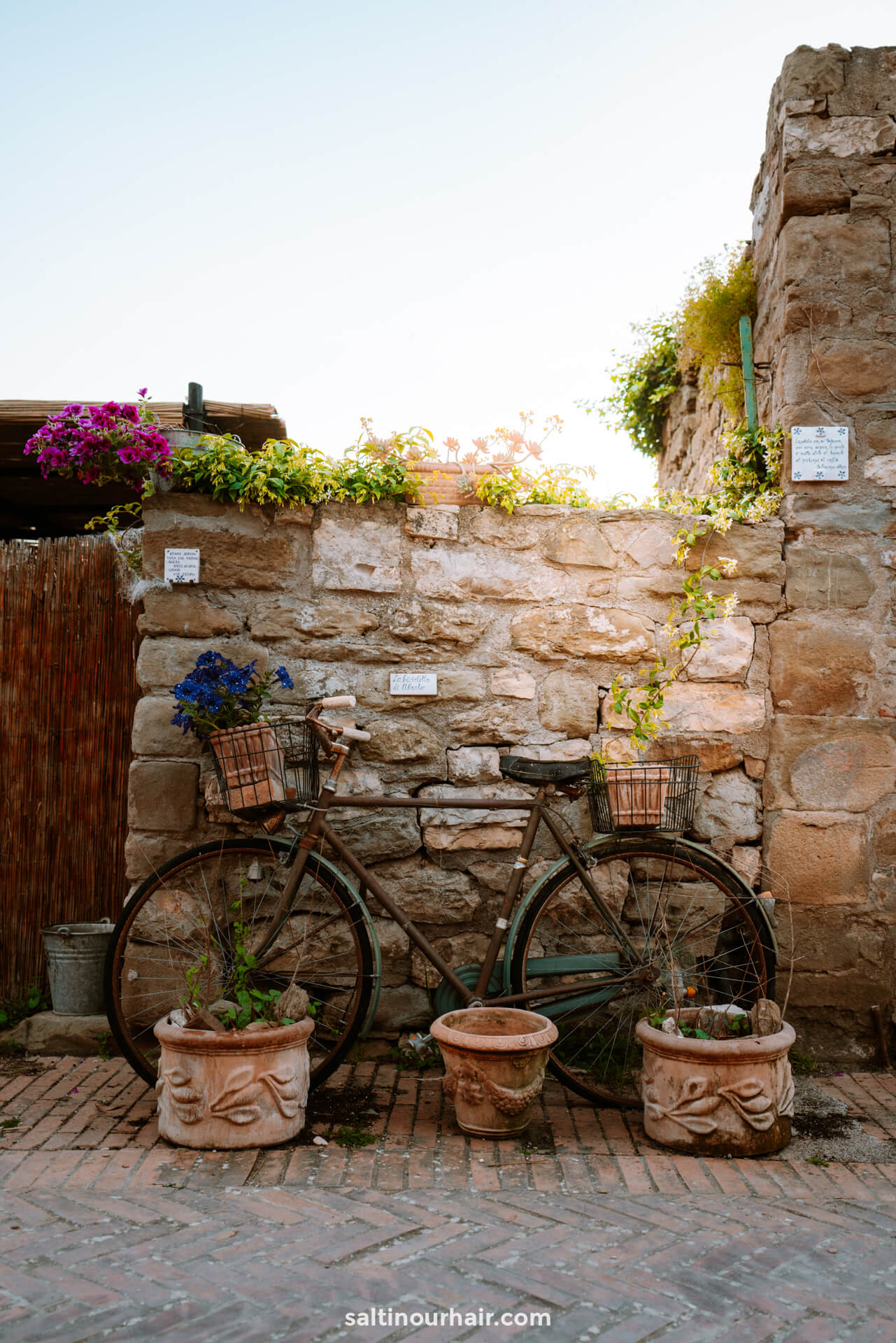
The small paths that worm across the island are great for exploring, particularly as the island is so green. You’ll even see lots of rabbits hopping among the grass (there is no hunting allowed on Isola Maggiore). It’s truly idyllic!
Tip: If you want dinner on Isola Maggiore, head to Da Sauro, a delicious fish restaurant. In the summer, you can also stay overnight on the island, as some campsites are open.
3. Marmore Waterfall
Marmore Waterfall is one of the highest waterfalls in Europe and one of the top things to do in Umbria. The two-tiered waterfall is 165 meters high and was manufactured by the Romans, making it the second-largest man-made waterfall in the world! Initially, the Romans created the falls to divert unsanitary water away from the local town. However, these days, it’s used to generate electricity.
Please note: When the waterfall generates electricity for the power plant, you cannot access it.
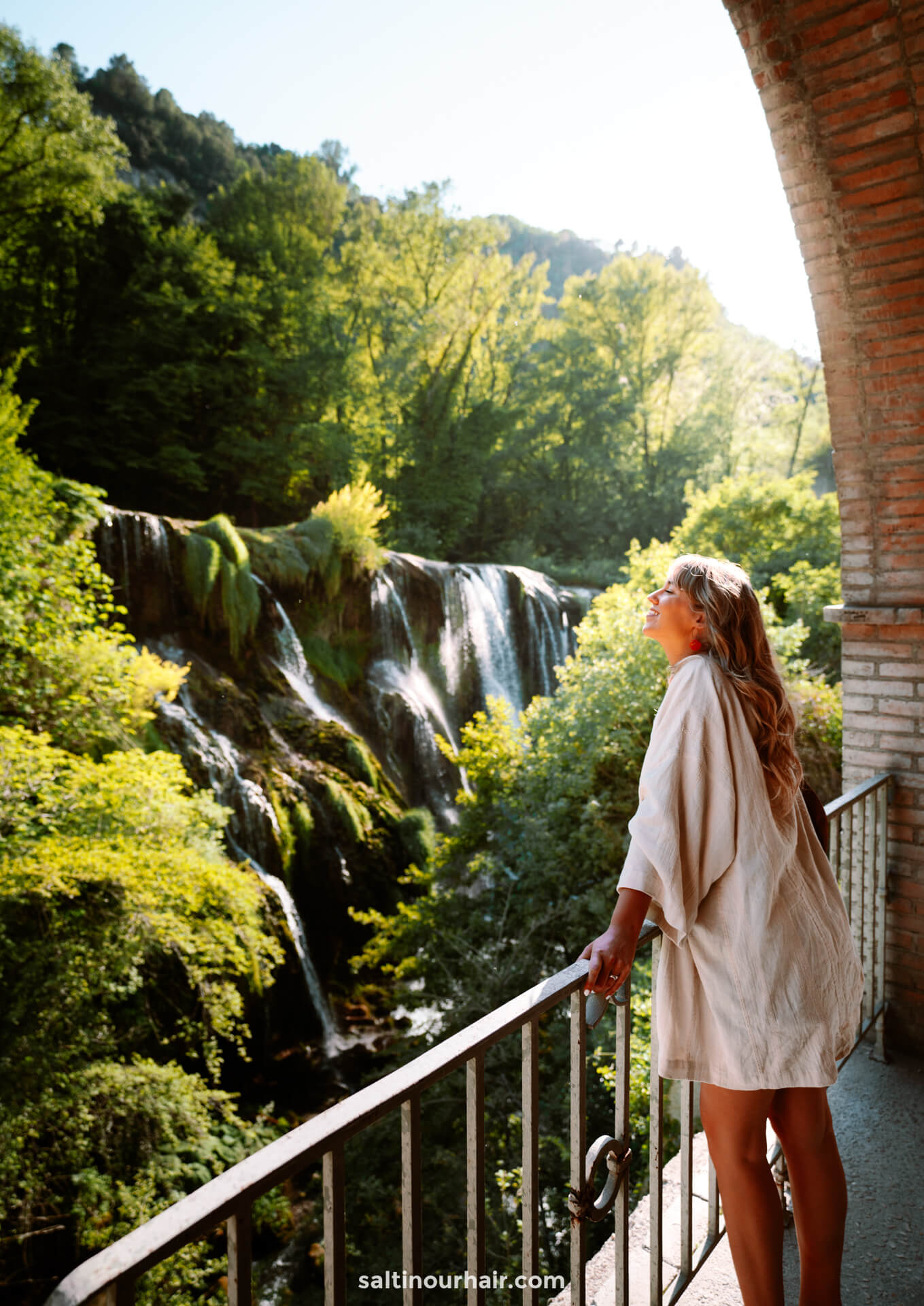
How to get to Marmore Waterfall
To get to Marmore Waterfall, walk through the stunning parkland surrounding it, and enter a unique walkway. Here you’ll be able to access multiple viewpoints close to the waterfall.
The waterfall’s power is absolutely sensational (at full capacity between 10-5 PM) and isn’t dissimilar to waterfalls you might see in Costa Rica ; you have to pinch yourself to remember you’re actually in Umbria, Italy!
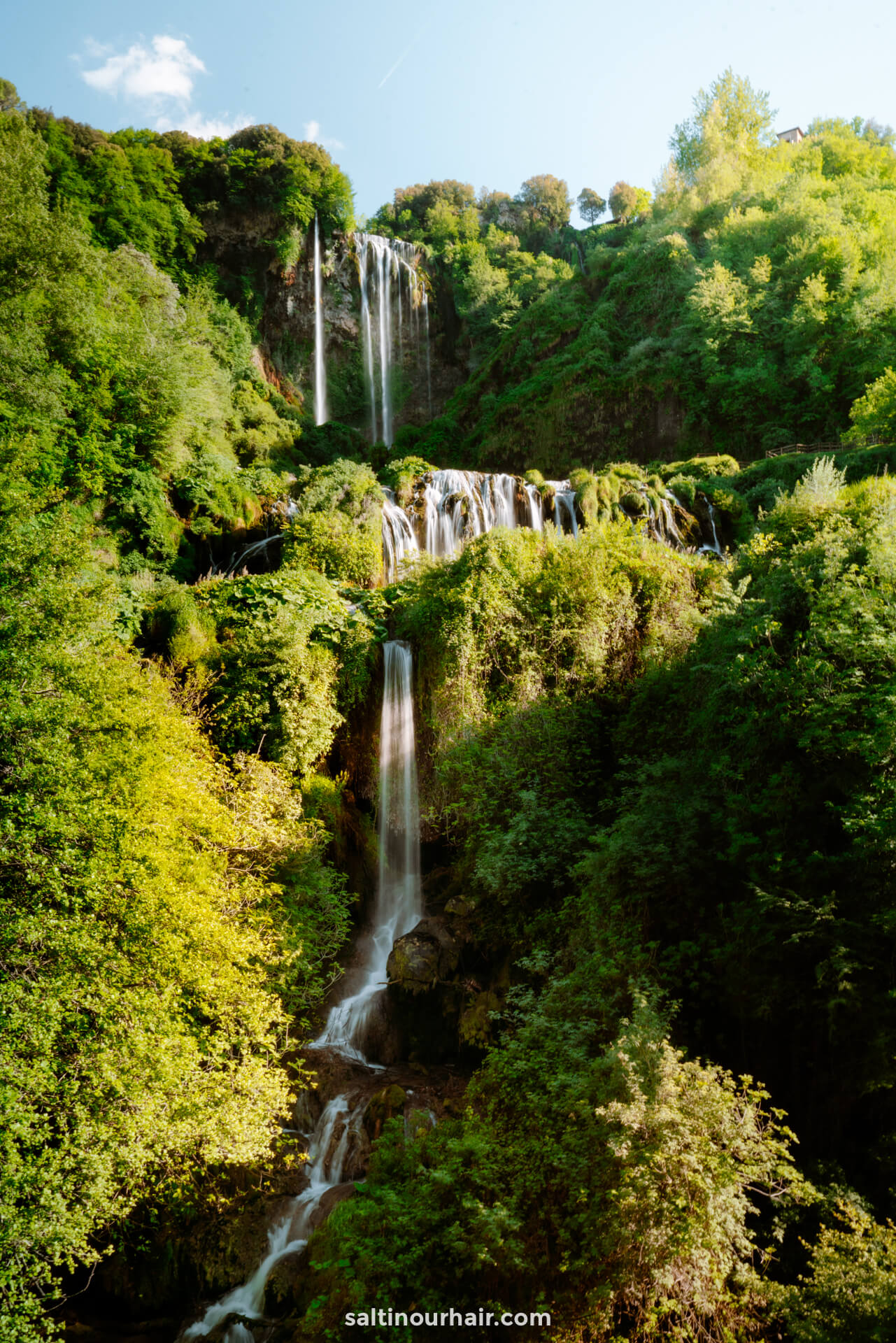
Tip: Although you need to prepare to get wet from the spray off the waterfall, be aware that it’s not possible to swim at Marmore Waterfall. Make sure to also check the timetable for the power schedule of the falls.
Tickets cost 10 EUR (11 USD), and you can buy them here .
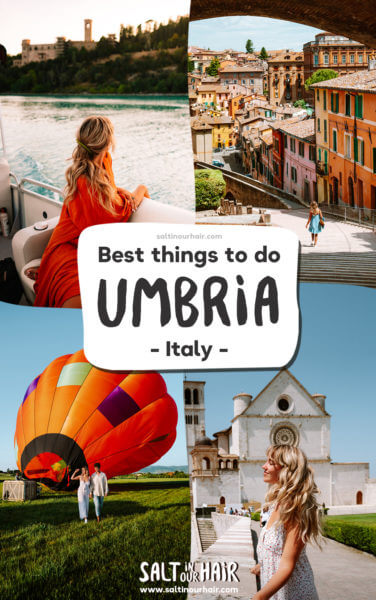
4. Visit Spoleto: Top Thing to do in Umbria
Spoleto is often thought of as one of the most beautiful cities in Umbria, and it’s hard to argue! The typically Italian town sits among rolling hills and has an eye-catching icon: the beautiful aqueduct named Ponte Delle Torri. The bridge is 80 meters high and 230 meters long and is an impressive example of Roman engineering.
Please note: Ponte Delle Tori is currently closed for entry due to maintenance.
Tip: For the best views of the Roman aqueduct, visit the church of San Pietro, where you’ll find a great viewpoint.
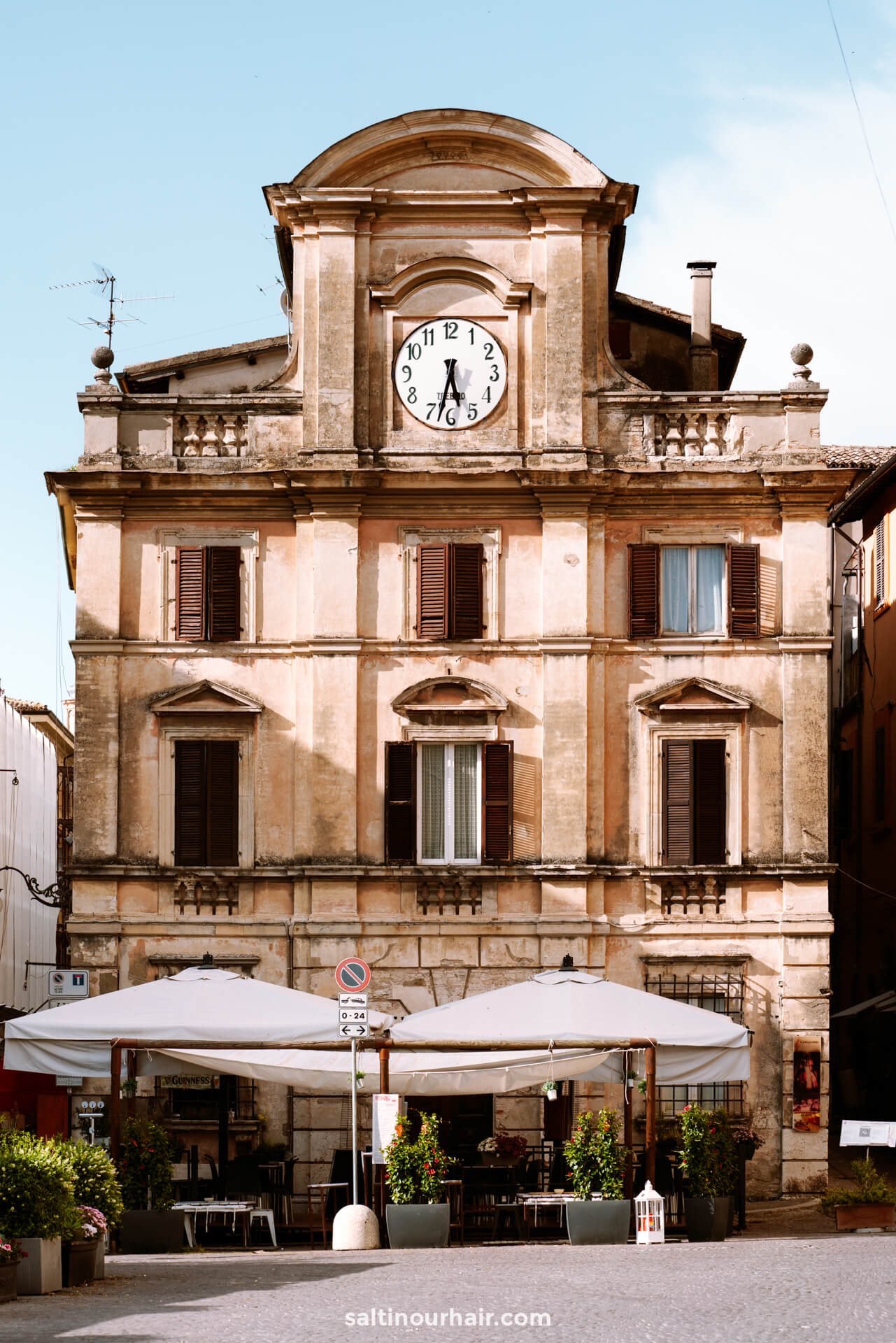
Once within the town, there are many beautiful things to see and do, including the incredible Duomo, with its impressive archways, symmetry, and interior frescoes (by the famous Filippo Lippi). Afterward, head for the San Salvatore Basilica, built in the fourth century and relatively unchanged since. This remarkable` building is perfectly preserved and is a UNESCO world heritage site , so it’s a must-do on your trip to Spoleto.
Here are all your hotel options in Spoleto.
While in Spoleto, don’t forget to visit the Gelateria Crispini, winner of the Gelato World Tour (2017). Try the pistachio gelato—delicious!
Hotels in Spoleto 😴
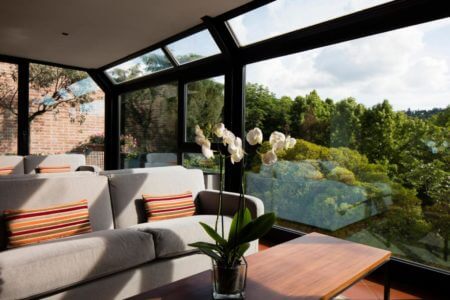
5. Explore Rasiglia
Rasiglia is a storybook stone village dating back to the Middle Ages that sits at the foot of the beautiful Apennine Mountains, surrounded by green woodland. It’s most famous for the small rivers, canals, and waterfalls that flow through the town, carrying the most crystal clear water between the mossy mountain banks. Visitors can cross the water via sweet wooden and stone bridges, which have earnt the village the nickname ‘ Venice of Umbria’.
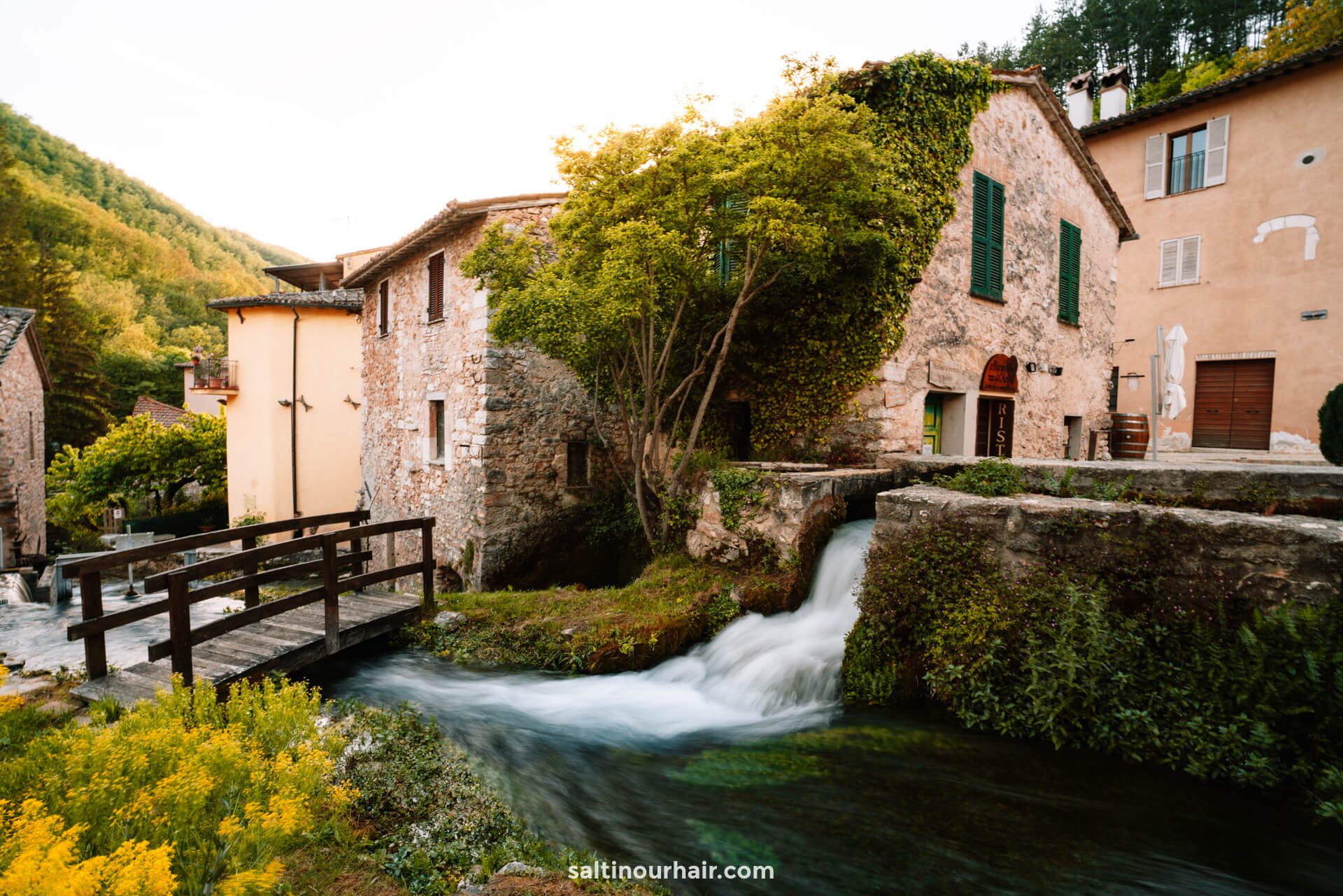
Rasiglia is tiny; there are only around 50 houses here! It used to be much larger, back when the water was used to power mills for textile production. When modern energy methods were introduced, many people left the town. However, these days the waterways and mills have been restored, and some even turned into museums so that people can learn all about the importance of hydropower. (Read our Rasiglia, Italy Travel Guide here)
Tip: Rasiglia is small, you can visit the entire village in just 1 hour. Because of its beauty, it’s very popular with local Italians who visit at the weekends, so we recommend visiting on the weekdays to see it at its most tranquil.
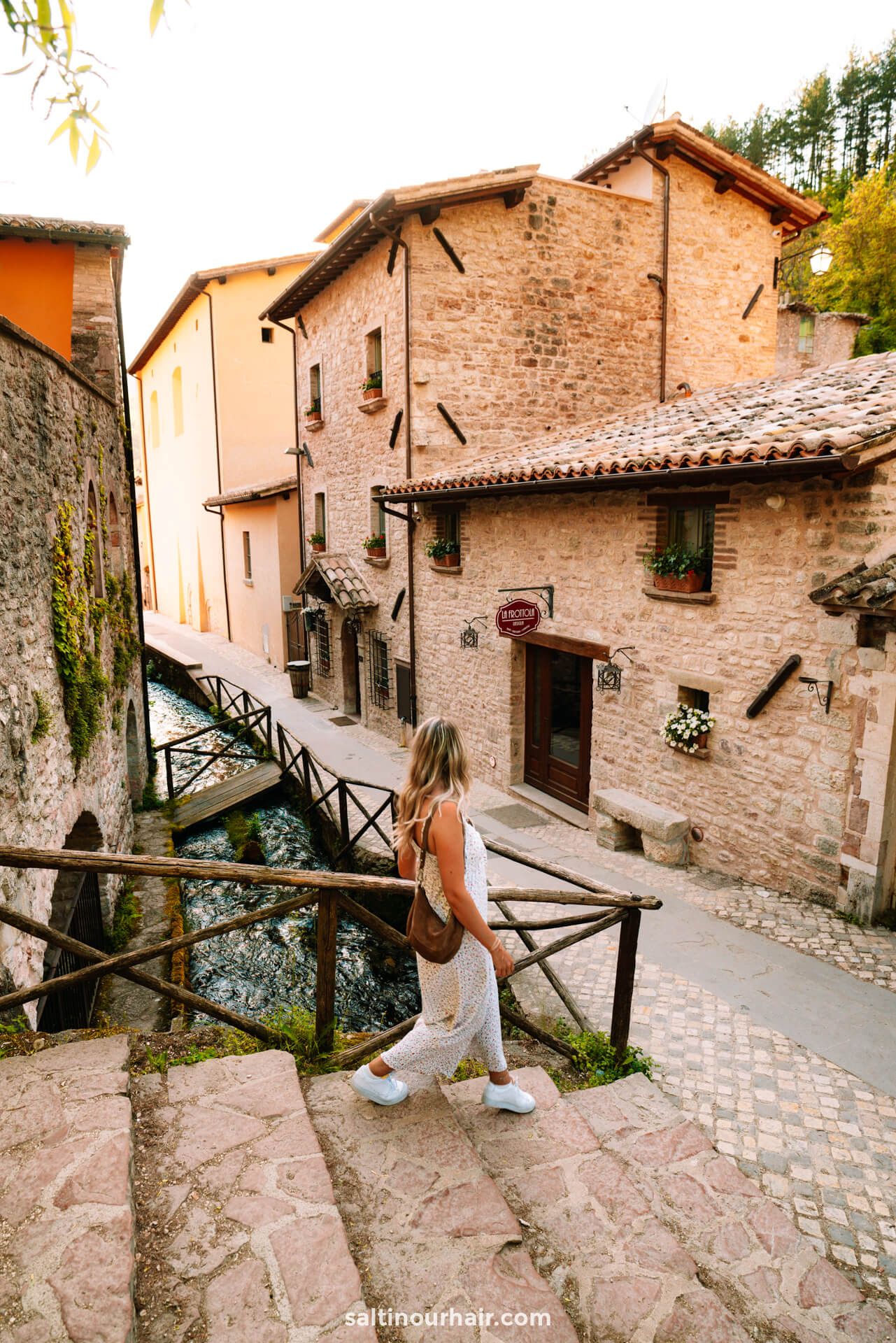
6. Go for a Hot Air Balloon Ride
A hot air balloon ride in Italy is a bucket list activity—and one of the most extraordinary things to do in Umbria! Wake up in time for sunrise, for a unique way to start the day, rising above the clouds. From this height, you can see everything that makes this region special; stunning villages, green fields, vineyards, and charming cities like Assisi and Perugia . It’s a magical way to gain a birdseye view of the extraordinary landscapes of Umbria.
Good to know: Most hot air balloon tours take around 1-2 hours and offer a delicious Italian breakfast after the flight.
Book your hot air balloon ride
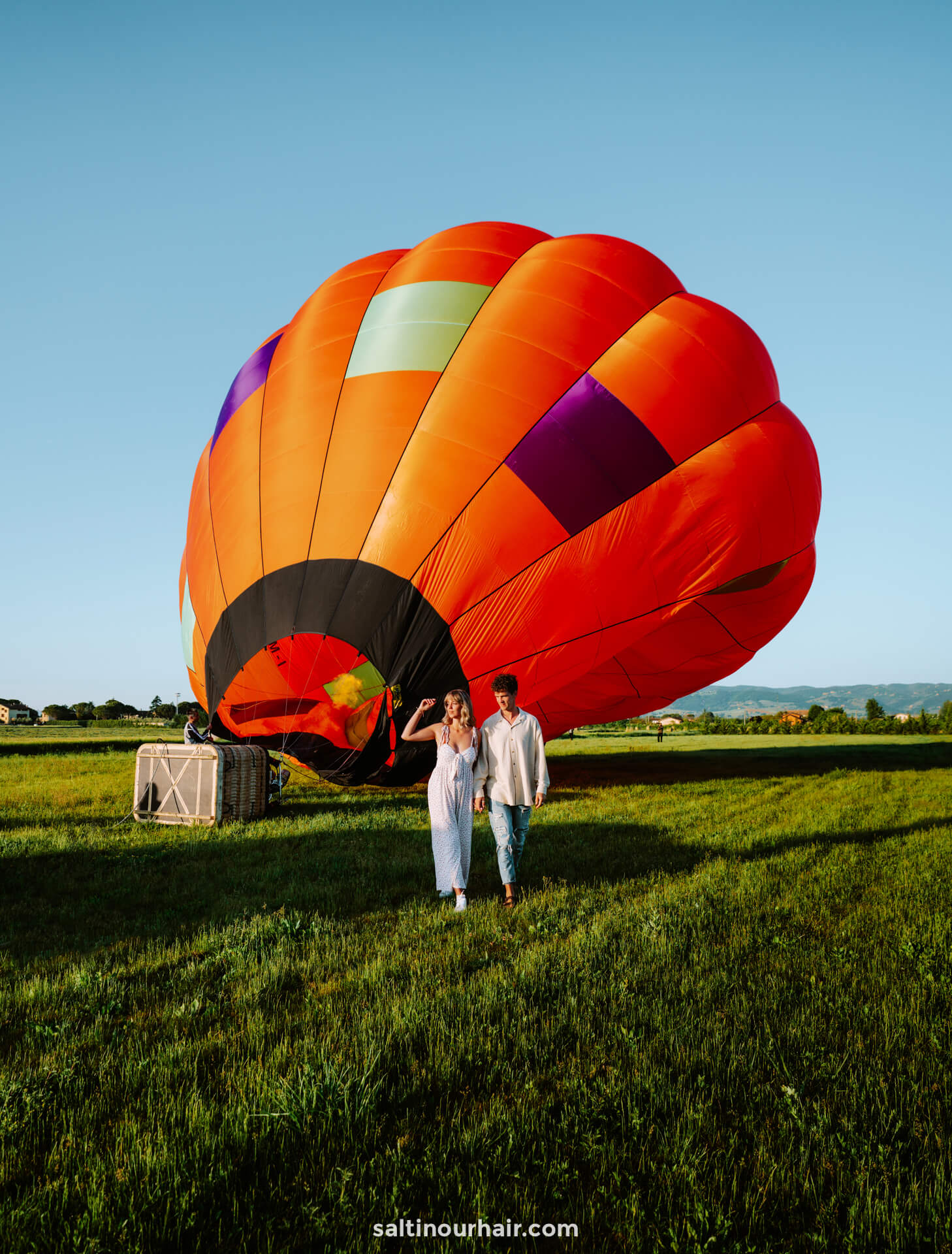
7. Visit a Winery
Just like Tuscany , Umbria has fantastic wine. As you drive through the landscapes, you’ll pass through many beautiful wineries and vineyards offering excellent tours.
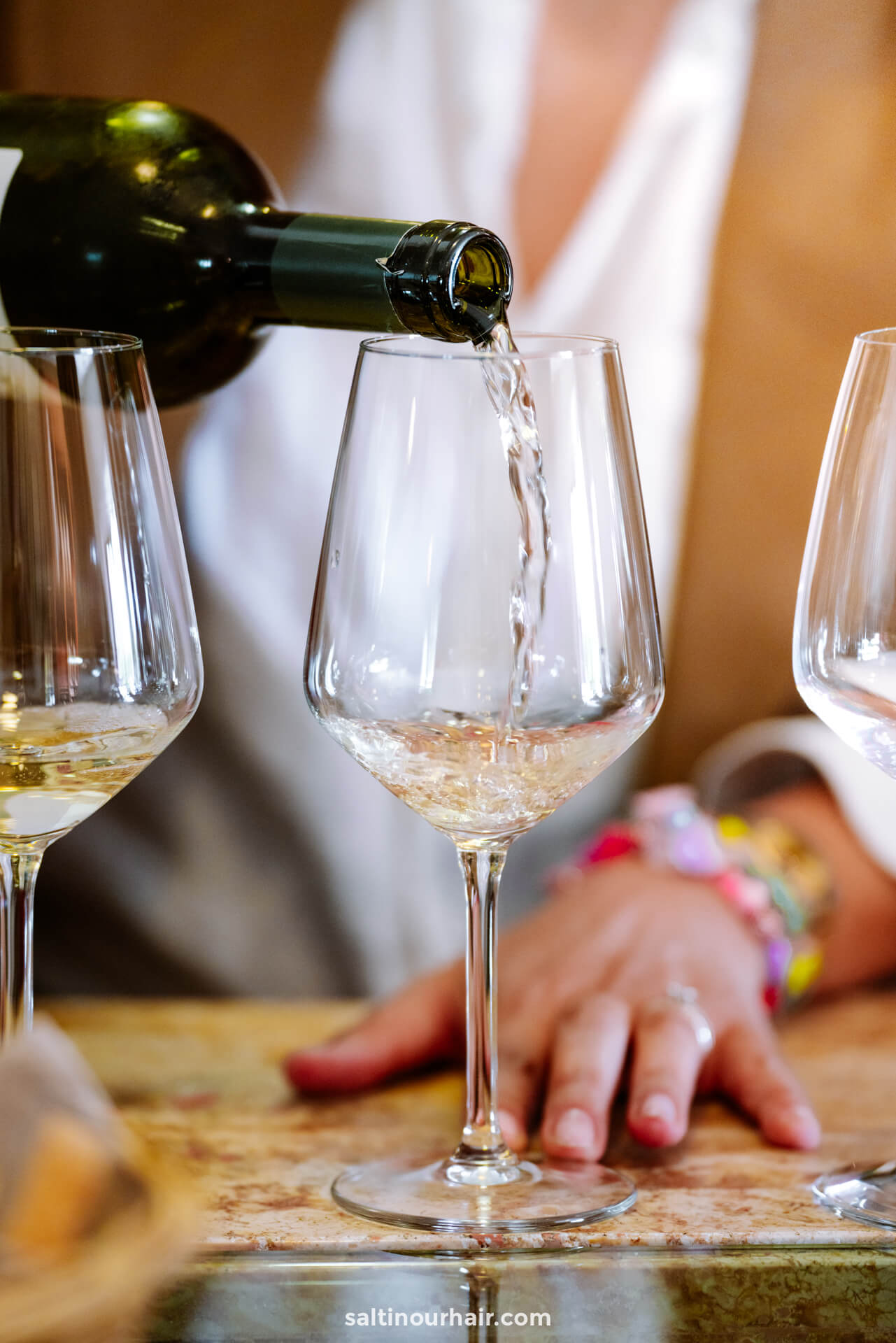
We visited Lungarotti in Torgiano (they also have another winery in Montefalco), one of the most impressive wineries we’ve ever seen! You can learn all about the process from grape to glass, with fantastic explanations from very knowledgeable guides and winemakers.
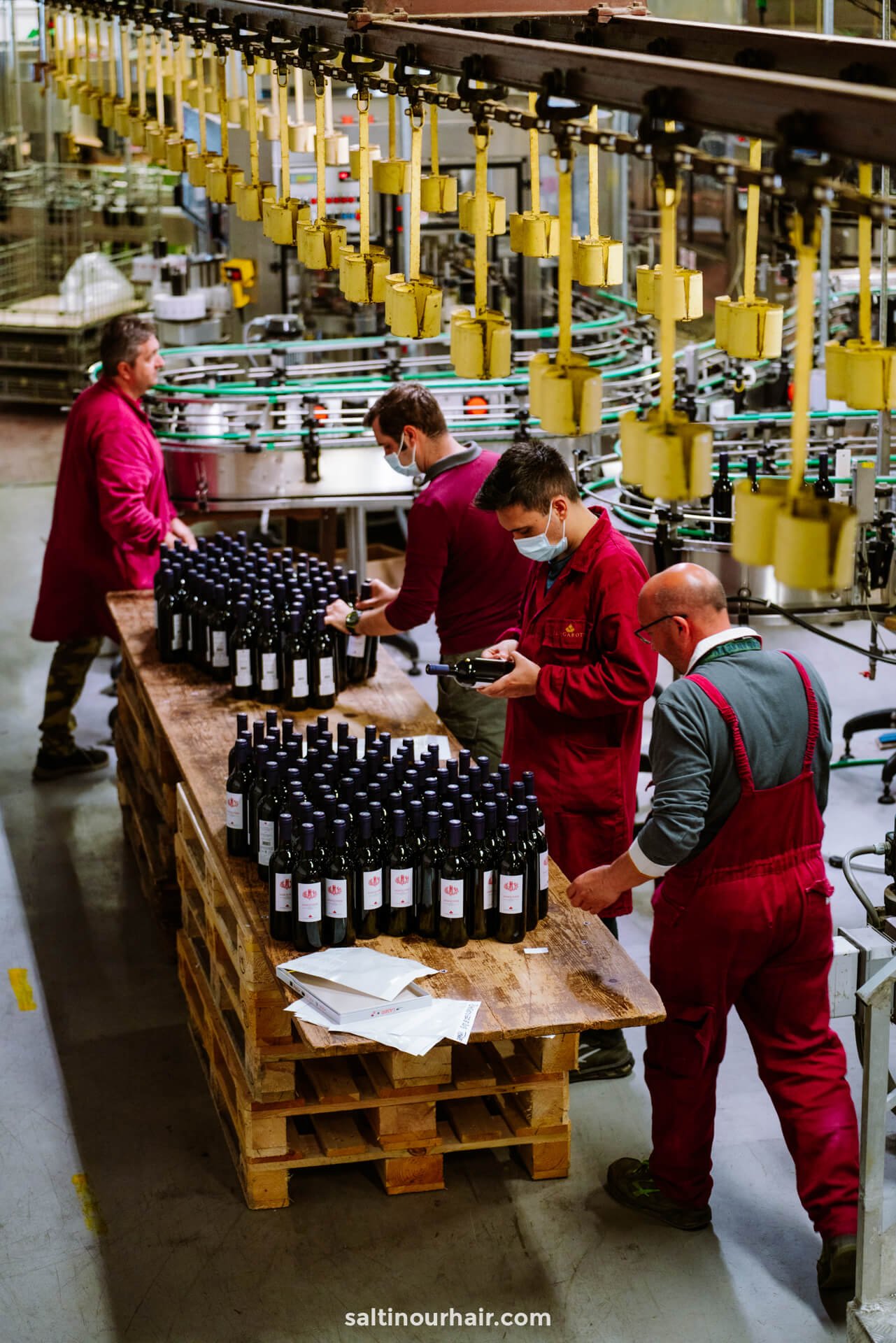
Walking among the cypress trees under the Umbrian sun is a dream come true. Plus, when you’re finished, you’ll get to taste the wine and olive oil made here. They are also known as the producers of the best red wine in Italy (2016)!
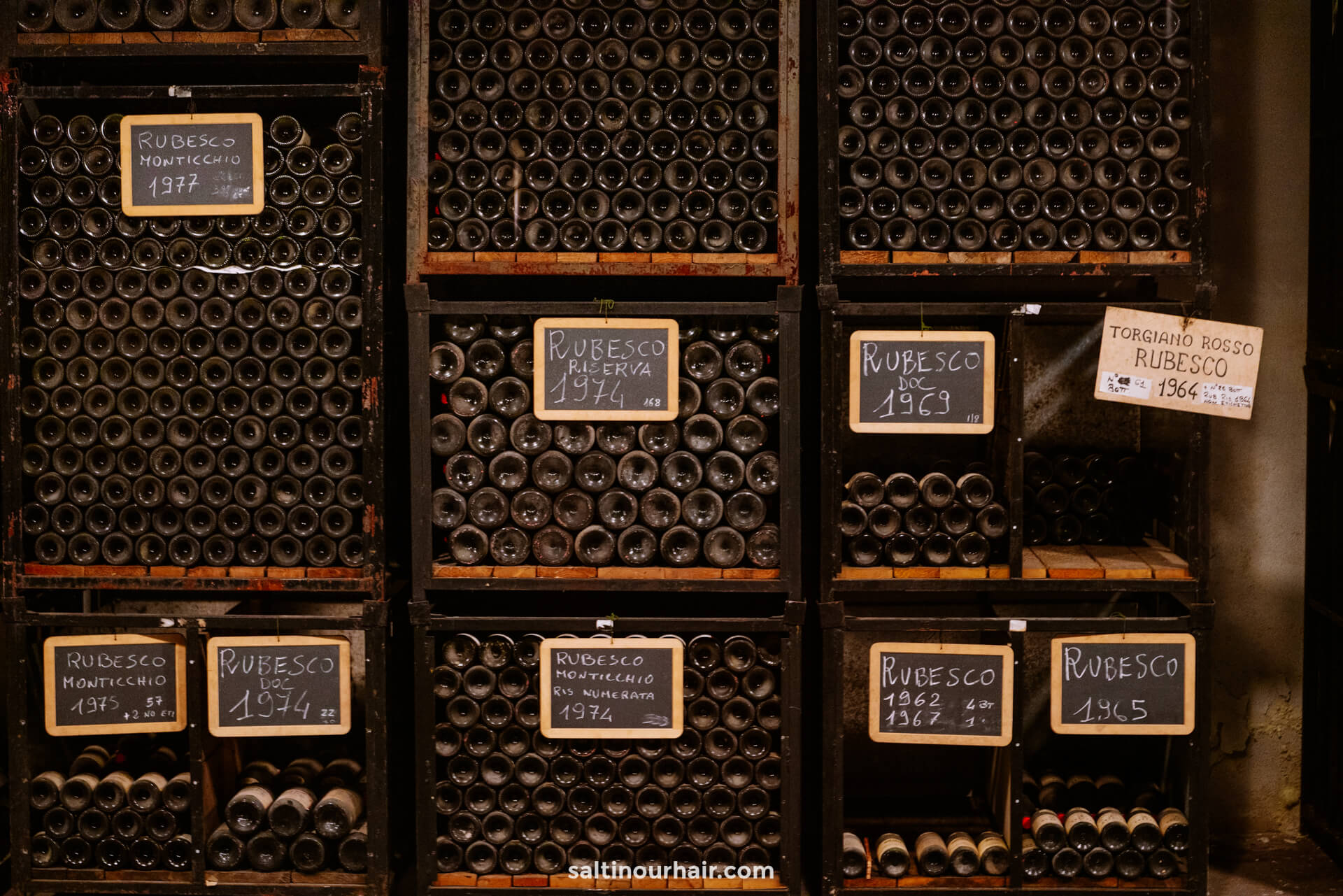
The approach to Assisi is spectacular as you watch the sun hitting the warm stone of the houses. The town is a historical treasure in Umbria, Italy, and an important pilgrimage site, home to many incredible religious buildings and beautiful architecture.
Also read: Assisi, Italy: Best Things To Do
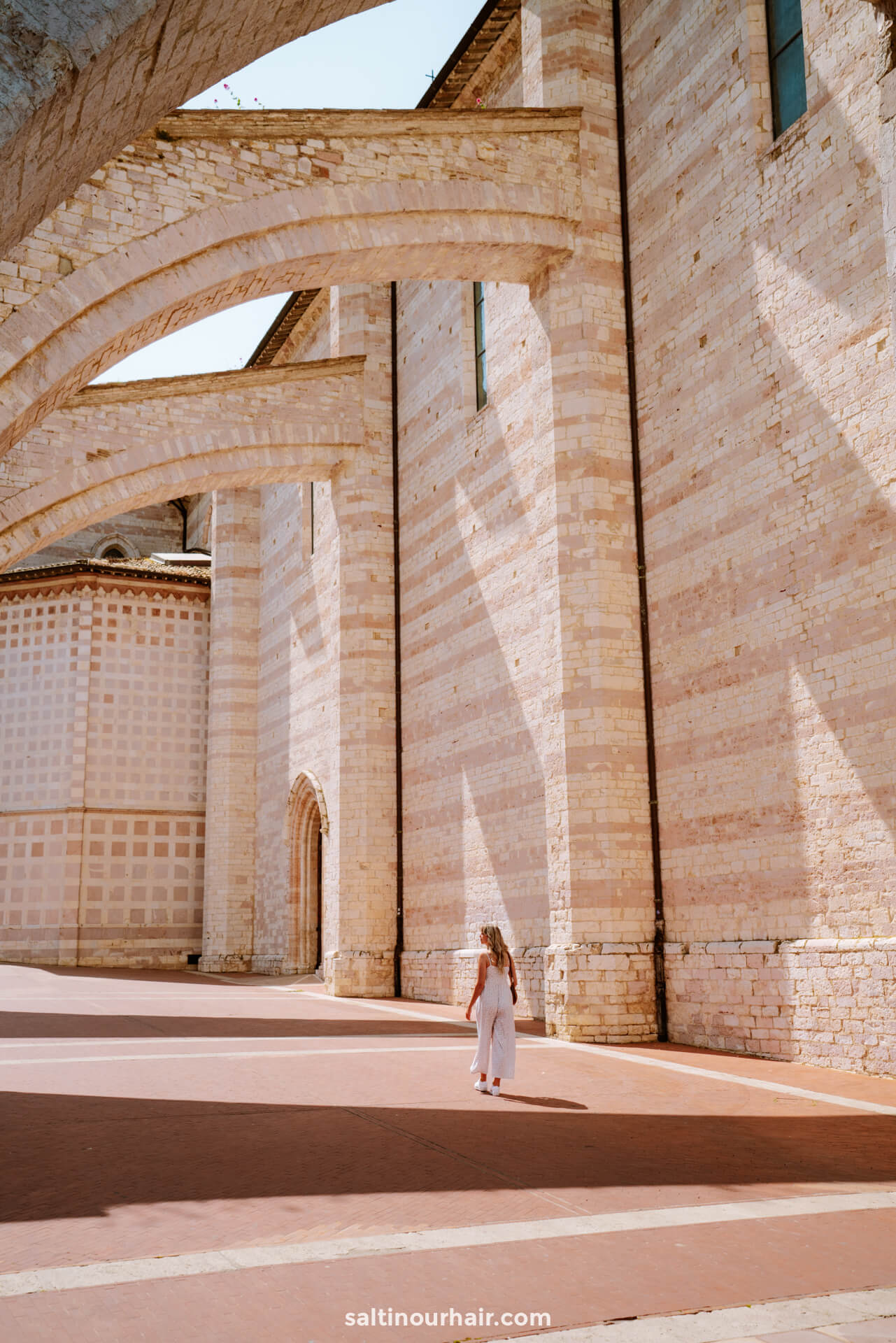
The main thing to do in Assisi is the St Francis Basilica, two cathedrals built on top of each other, with one of the most mind-blowing interiors we’ve ever seen. Unfortunately, you’re not allowed to take photos inside, so it’ll be a nice surprise for your trip!
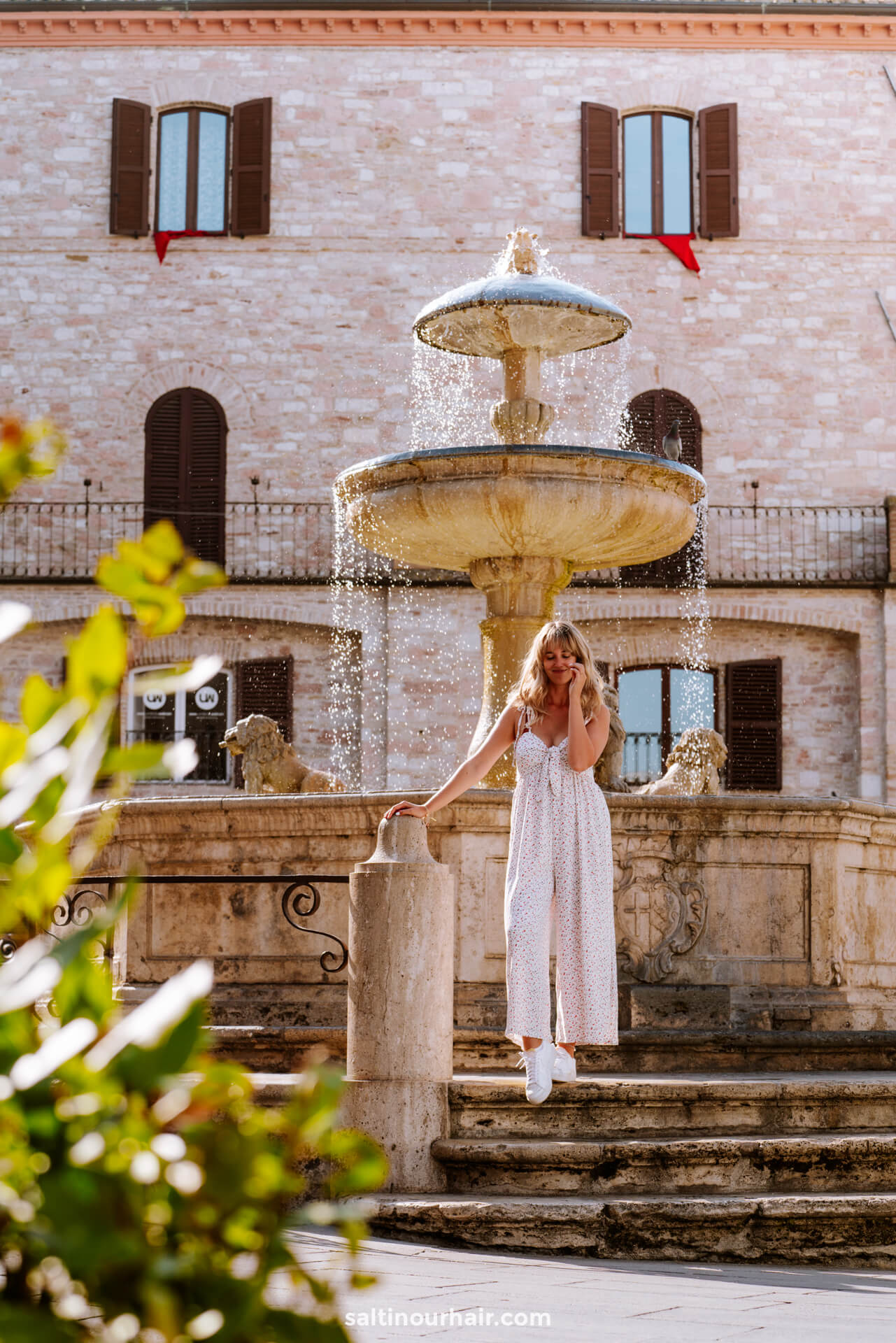
When you’re finished at the Basilica, take a small tuk-tuk through the tiny narrow streets of Assisi, getting lost in the labyrinth of alleys and finding beautiful squares where you can grab a gelato or a drink.
Out of season, Assisi truly is one of the most peaceful cities, so visit outside of the summer months to see it at its absolute best.
Hotels in Assisi 😴
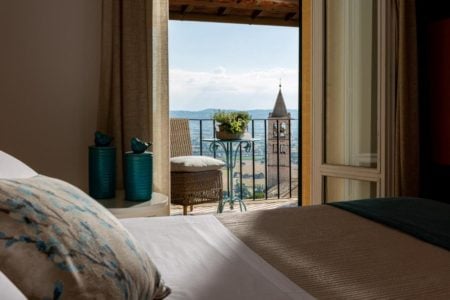
Calendimaggio Festival
Are you visiting in May? Check out the Calendimaggio festival, which celebrates the arrival of Spring. During these days, locals dress up in medieval costumes and reenact life in Assisi from this time. It’s a remarkable historical event in Umbria, Italy!
Here are all your hotel options in Assisi.
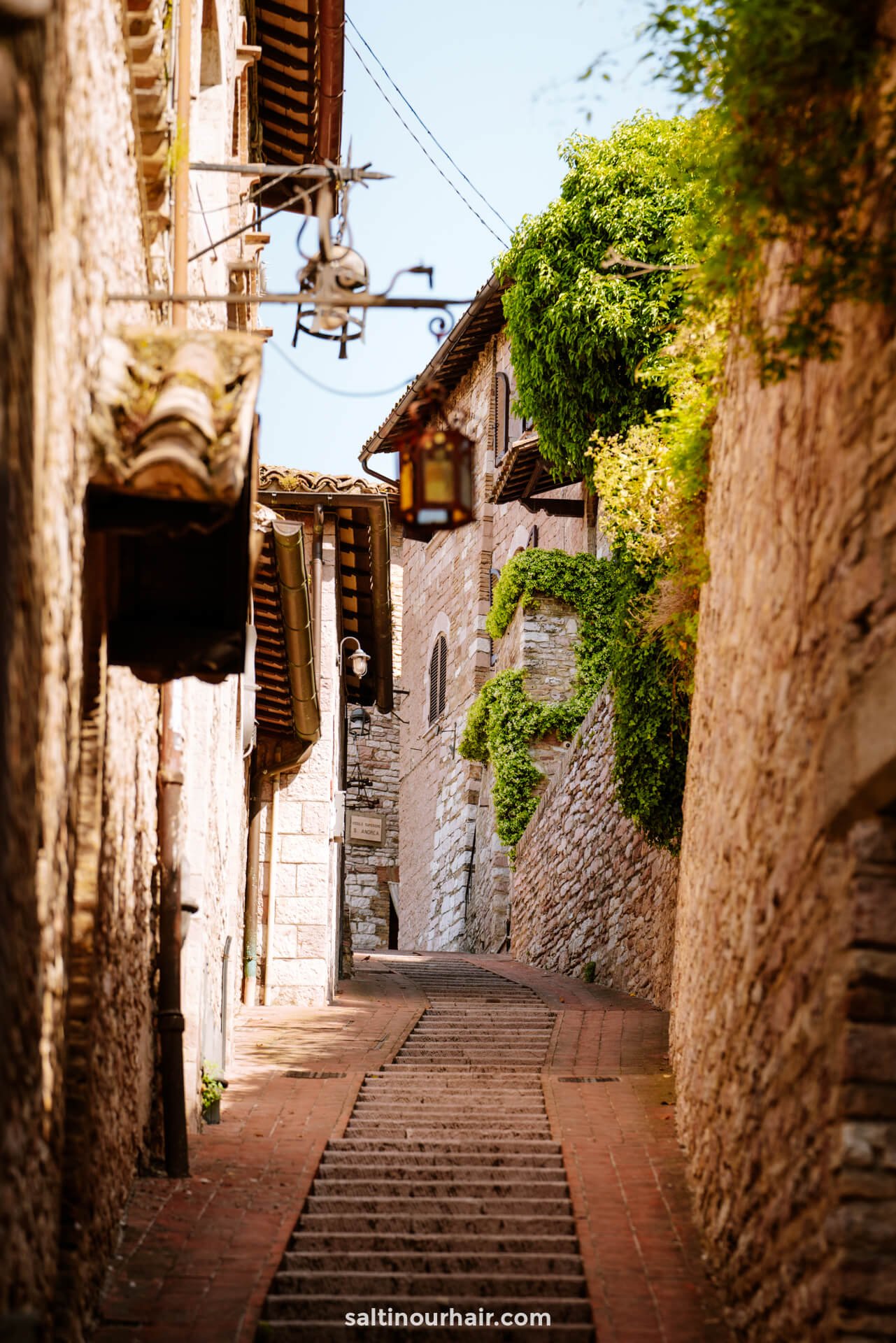
9. Assisi Viewpoint + Horses
After a day in Assisi , drive to a beautiful viewpoint that overlooks the city and the rest of Umbria. At a height of 1200 meters, this has to be one of the most fantastic views in the region. It’s also the perfect chance to see the sun go down over the hills, mountains, vineyards, and medieval cities of Umbria.
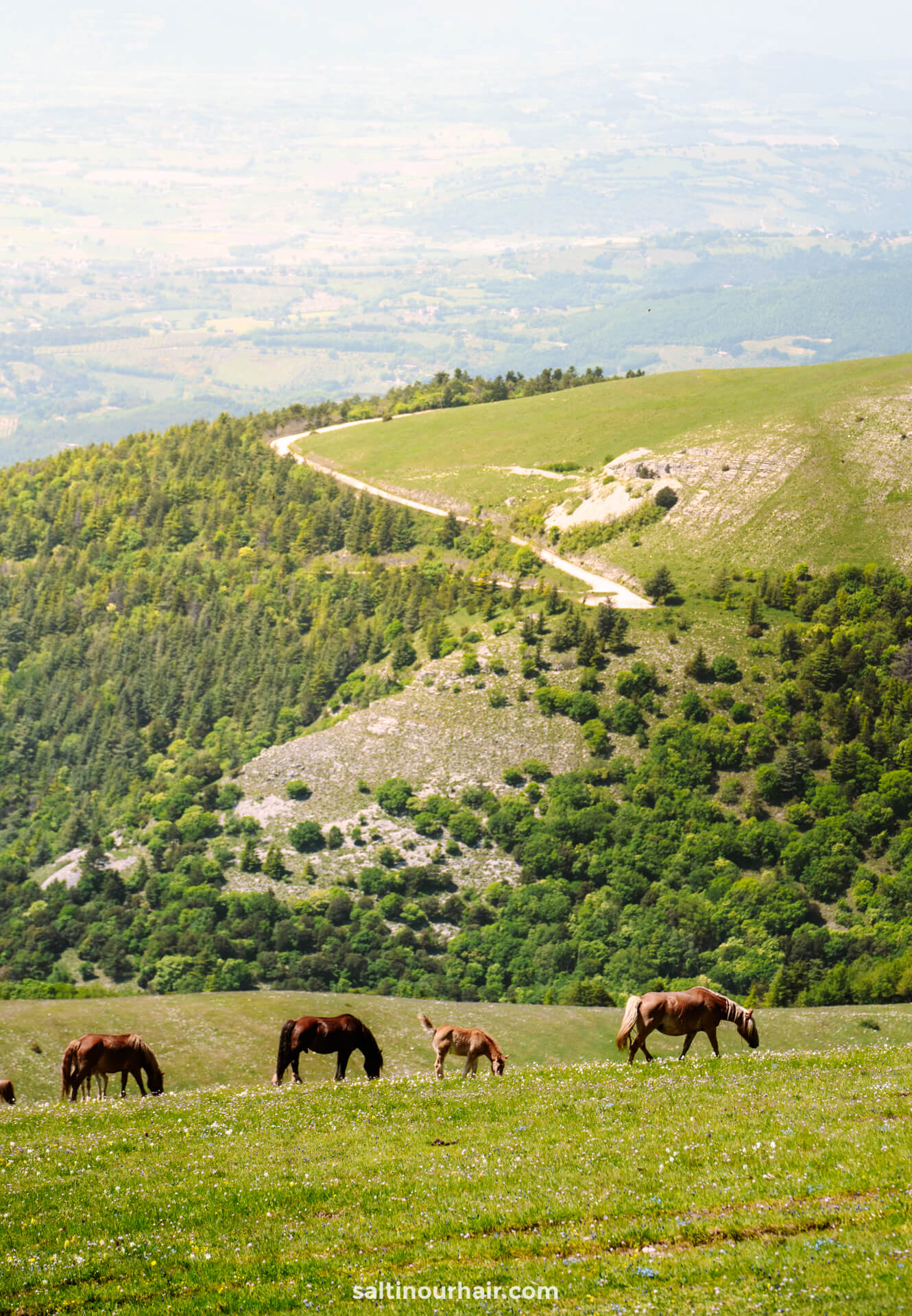
Best of all, if you travel to the top, you can find lots of wild horses roaming free across the lands and roads (although be aware they’re not always there. Still, you might get lucky!). Here is the location of the viewpoint .
Tip: On your way down from the viewpoint, stop at the village of Collepino , where there was once a medieval castle. These days, a few towers, arches, and gateways still stand. Plus, you’ll get to see more great views of the valley below.
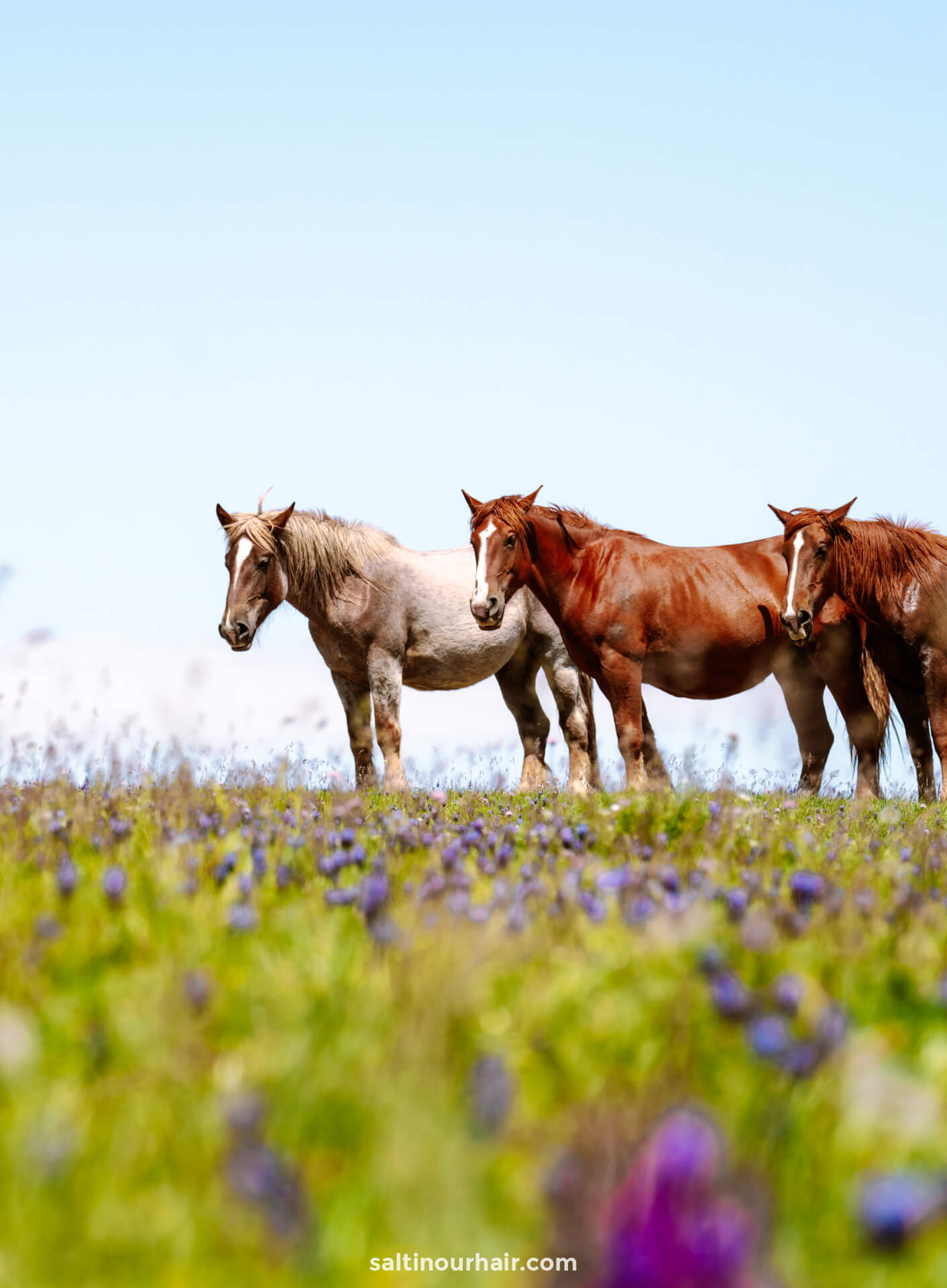
10. Gorges of Nera & Vasca Profonda
The Gorges of Nera are a hidden gem and one of the best things to do in Umbria! The area is relatively unknown and the perfect chance to get to know the region’s beautiful countryside. For example; visit the town of Narni (which inspired the film The Chronicles of Narnia).
Follow a 5km path on a former railway track that follows the River Nera. Start from the Augustus Bridge at Narni, which has been painted by many impressionists. People walk, run, and cycle here, with some even taking to the river for canoeing. The landscape is stunning as you pass through luscious green meadows and fairytale woodland, admiring the surrounding mountains and the beautiful birds that fly among the trees.
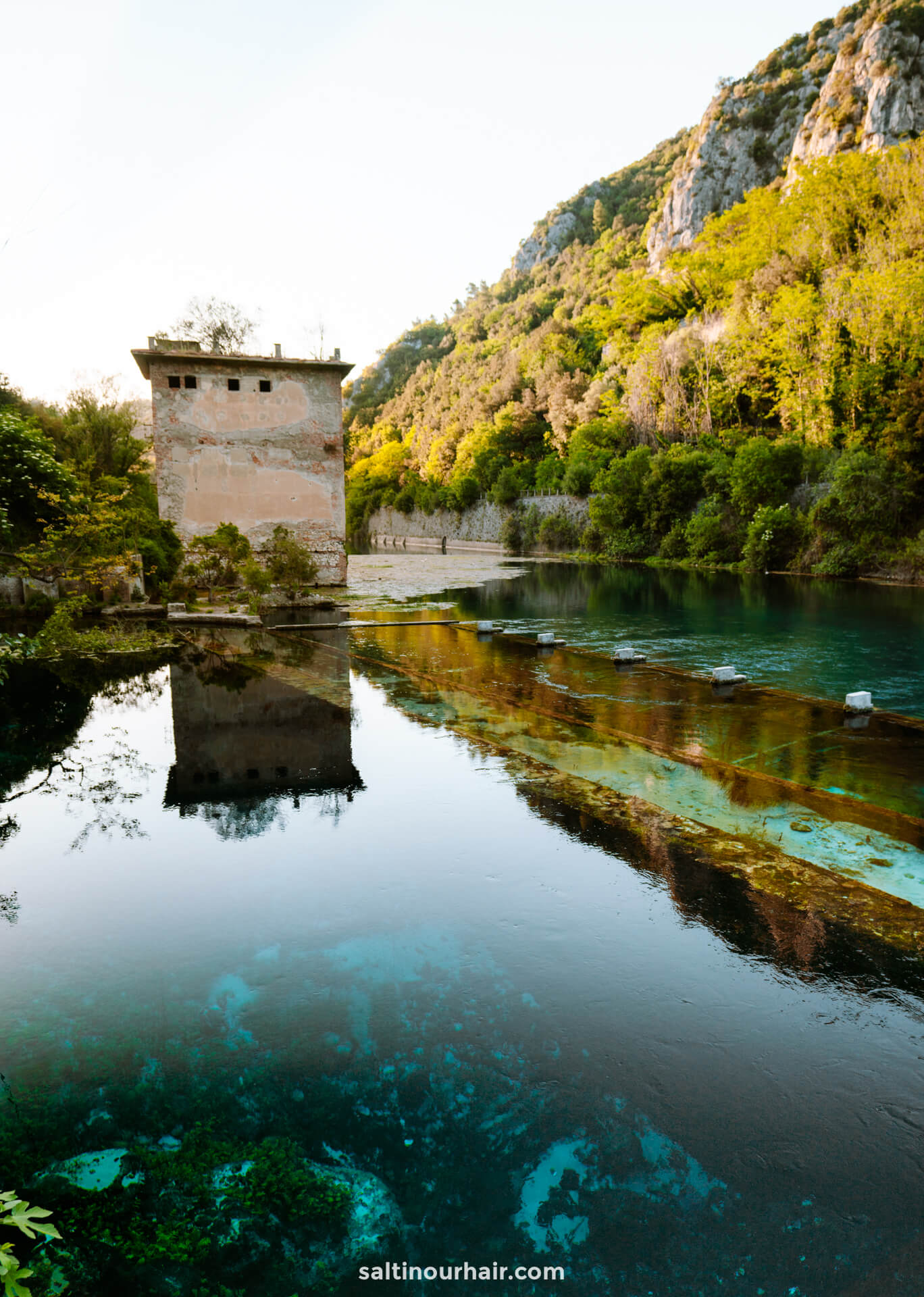
Stifone, Umbria (Italy)
Along the trail, you’ll find the small village of Stifone. Here you can see crystal clear waters and the ruins of old water mills in the Vasca Profonda (‘deep tub’). You can also discover the remains of an ancient Roman port and shipyard. Although it is prohibited to bathe, you’ll find plenty of pools nearby to swim in if you wish. It’s the perfect place for a cool down in the heat of summer!
Tip: At the weekends, the trail can get busier with locals. Because of this, visit during the week if you want to enjoy the peacefulness of nature.
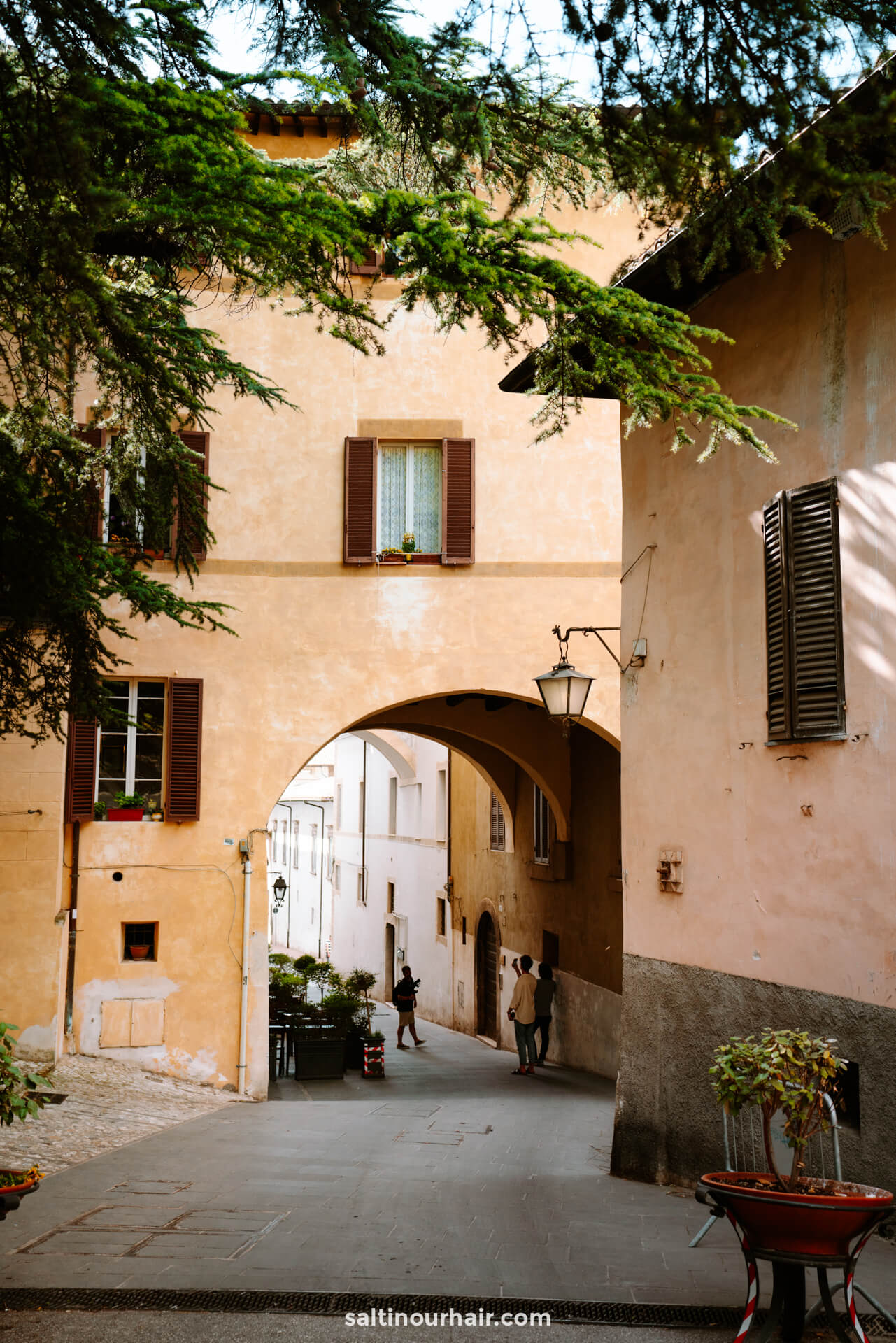
11. Visit Perugia
Perugia is the capital city of Umbria and an absolute must-visit on your trip to the region. It’s a lively city with lots of students and a bustling atmosphere. Plus, there are plenty of great restaurants and bars for an aperitif.
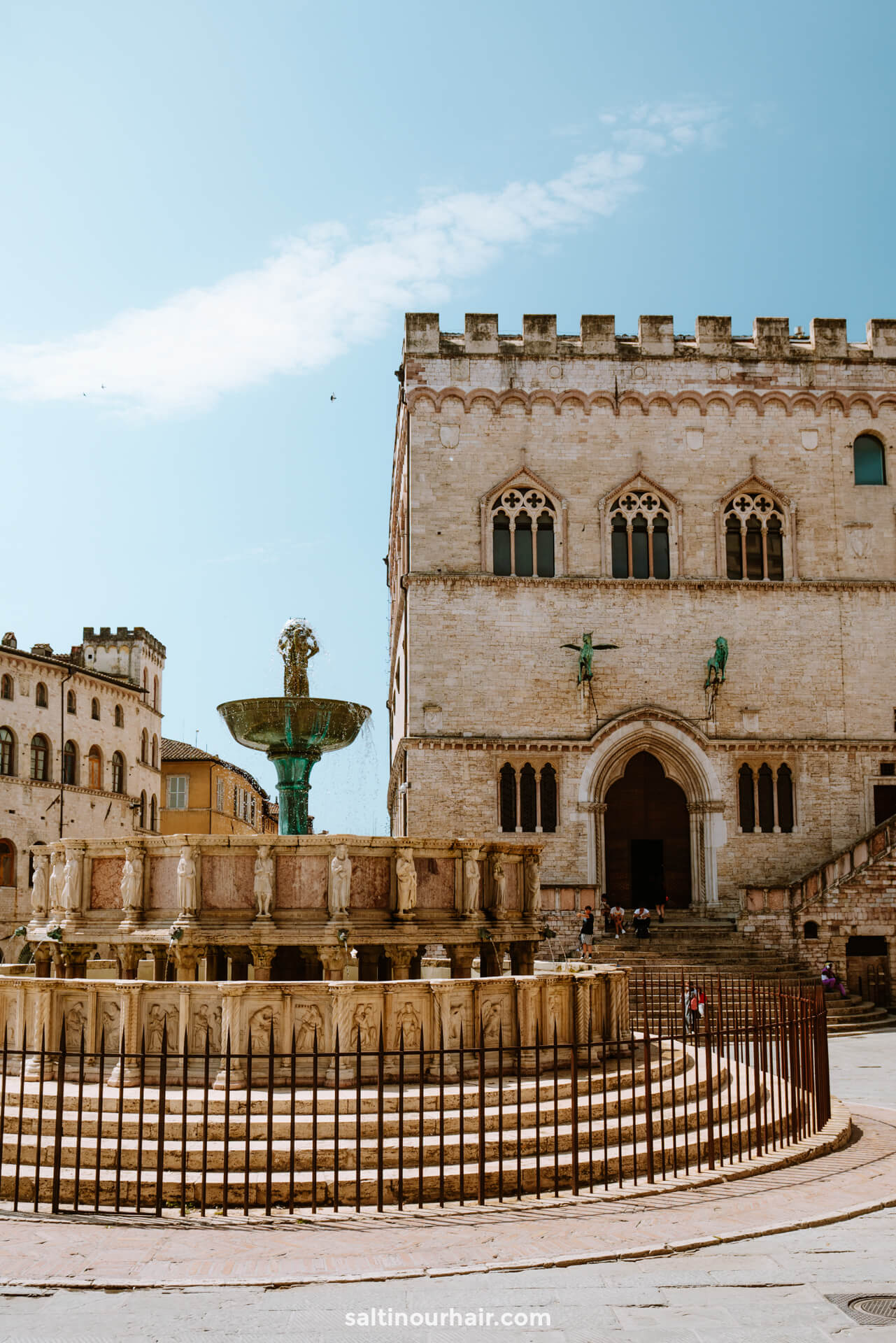
Perugia is also known as the city of chocolate! This is because the famous Perugina chocolate factory is located here. Plus, a world-famous chocolate festival is held here every October, named ‘Euro Chocolate’.
Read more about: Things to do in Perugia, Italy .
Hotels in Perugia 😴
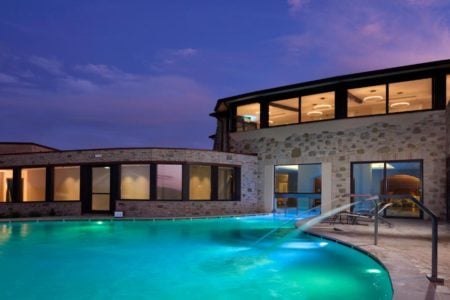
Underground City of Perugia
Apart from eating chocolate and absorbing the atmosphere of this great university town, you can find plenty of excellent historical sites. One of the absolute must-dos is to see the underground streets from medieval times. In fact, there is even an underground escalator system that allows you to pass through the buried city and escape the summer heat.
Tip: For an aperitif with a great view, head to Punto di Vista .
Here are all your hotel options in Perugia.
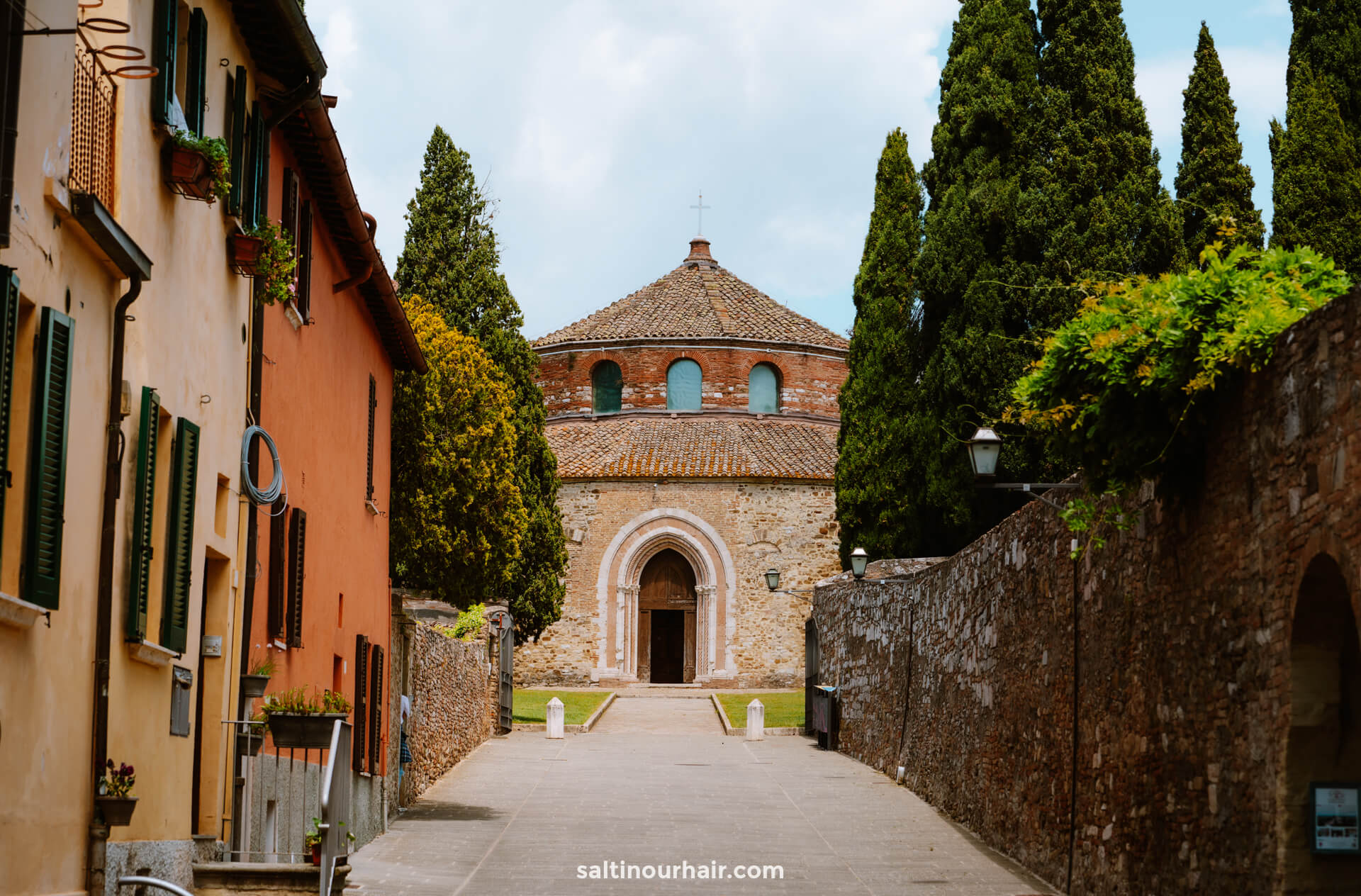
12. Taste Truffles
In recent years, truffles have become incredibly popular, a delicacy that tops everything from pasta to pizza. Umbria is a particularly famous region for truffles, known for the many different types that are picked by local truffle hunters and supplied to restaurants. This means you’ll see plenty of truffle dishes on the menu!
Join a tour and head into the Umbrian countryside, led by an expert truffle hunter. They’ll teach you how to find truffles and the different varieties, and there will be a tasting at the end.
Book your truffle hunting experience
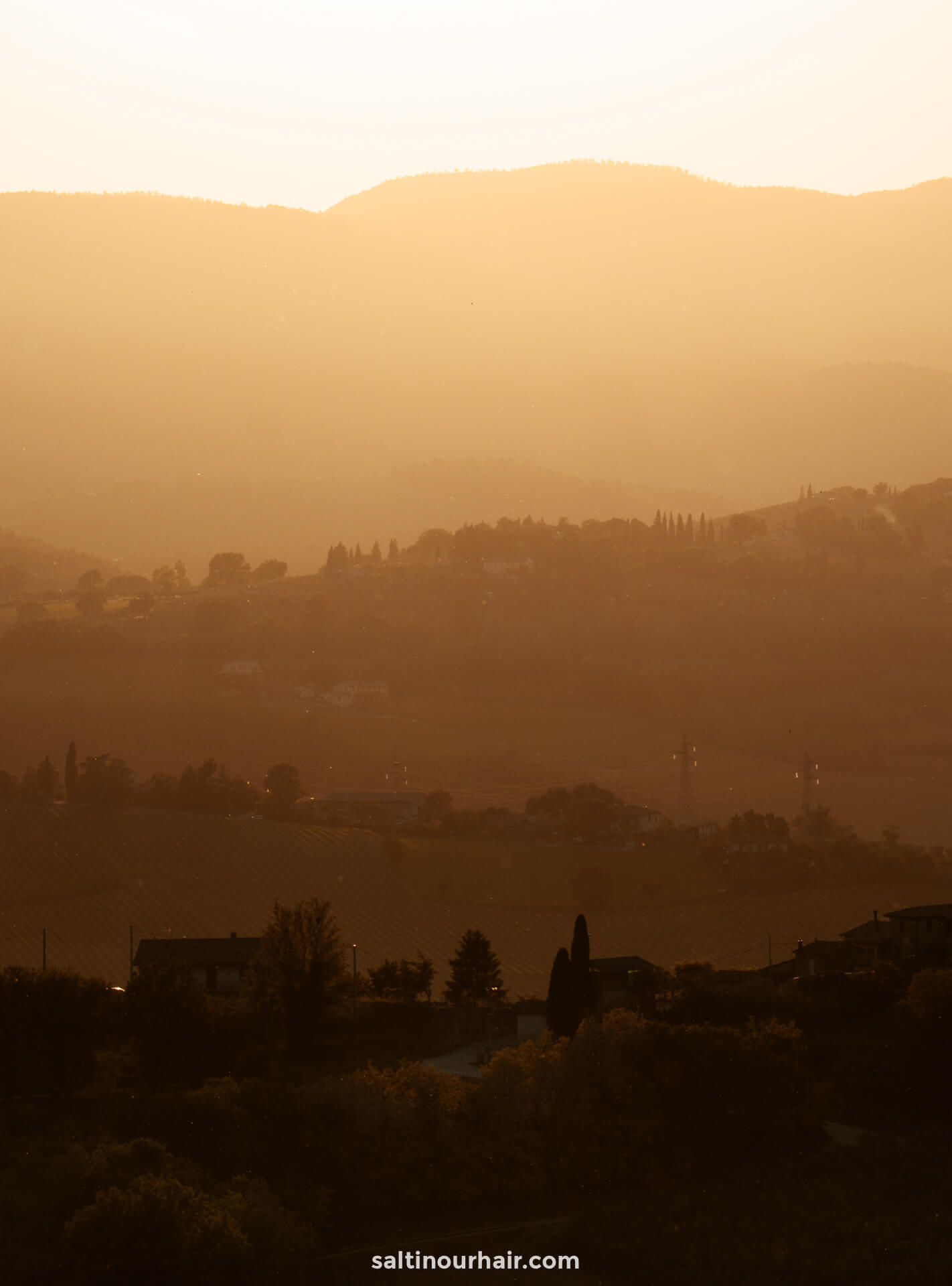
Spello is another beautiful hilltop town nestled in the region of Umbria. However, this gorgeous stone town has a twist; it’s known as the ‘city of flowers’ and famous throughout Italy.
Here are all your hotel options in Spello.
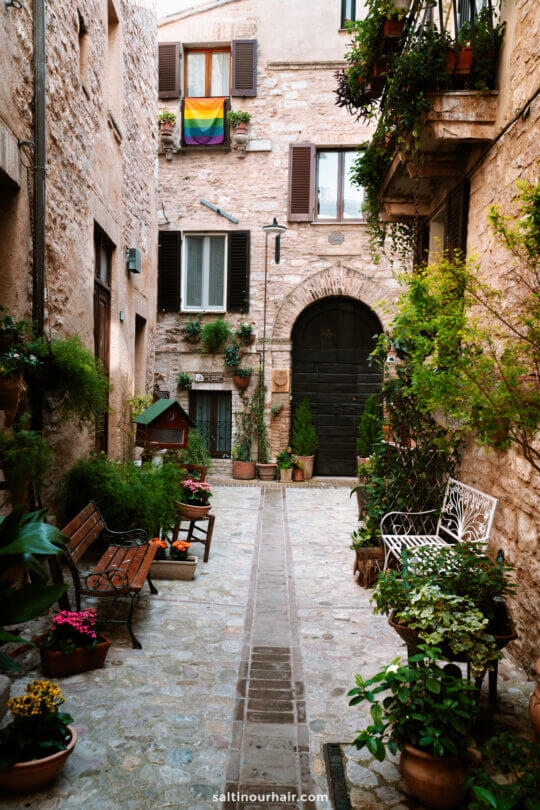
As you walk through the narrow, cobbled streets, you’ll see every house has climbing flowers or fragrant displays in colorful pots outside. It makes for a very bright atmosphere and a lovely place to explore for a morning. It’s no surprise it’s named one of ‘the most beautiful villages of Italy ’!
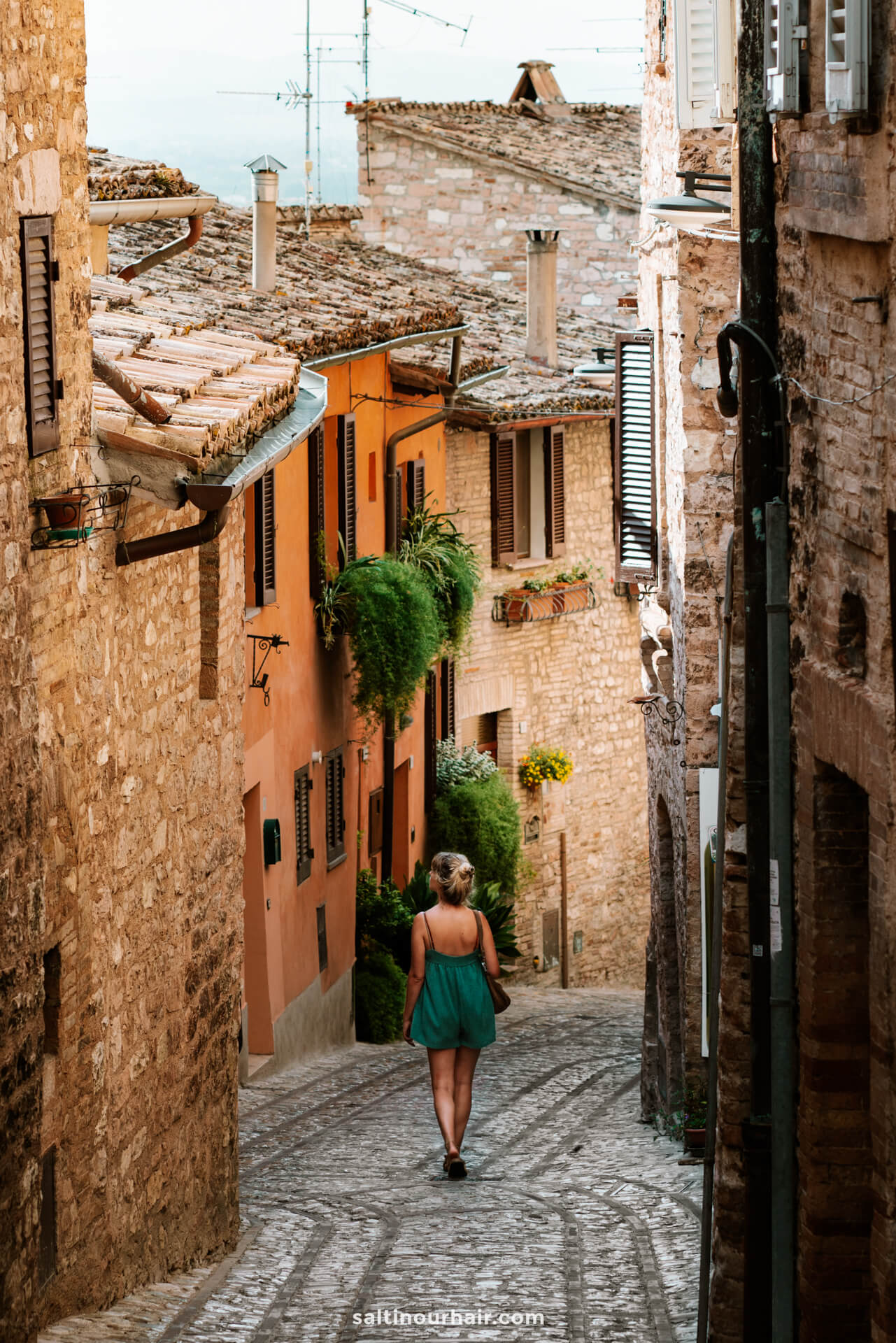
Like many Umbrian villages, you’ll also find beautiful Roman ruins here. The remains in Spello can be found at the edge of the town, where you’ll see the old walls and the ancient gates.
Hotels in Spello 😴
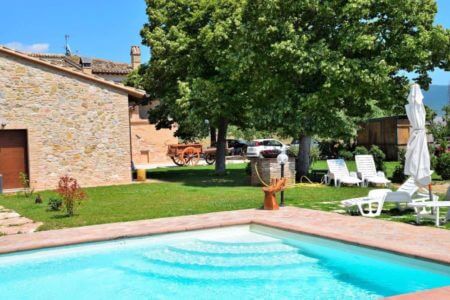
14. Italian Cooking Class
Spend half a day learning how to cook delicious Italian food at a typical country estate. This is one of the most fun things to do in Umbria! You’ll learn how to prepare a 4-course meal using Italian cooking methods and freshly picked ingredients from the estate. Best of all, you’ll get to eat everything at the end, accompanied by local wine from the vineyard. It’s a beautiful way to spend a morning, but also, you’ll learn skills you can take home with you.
Book your Italian cooking class
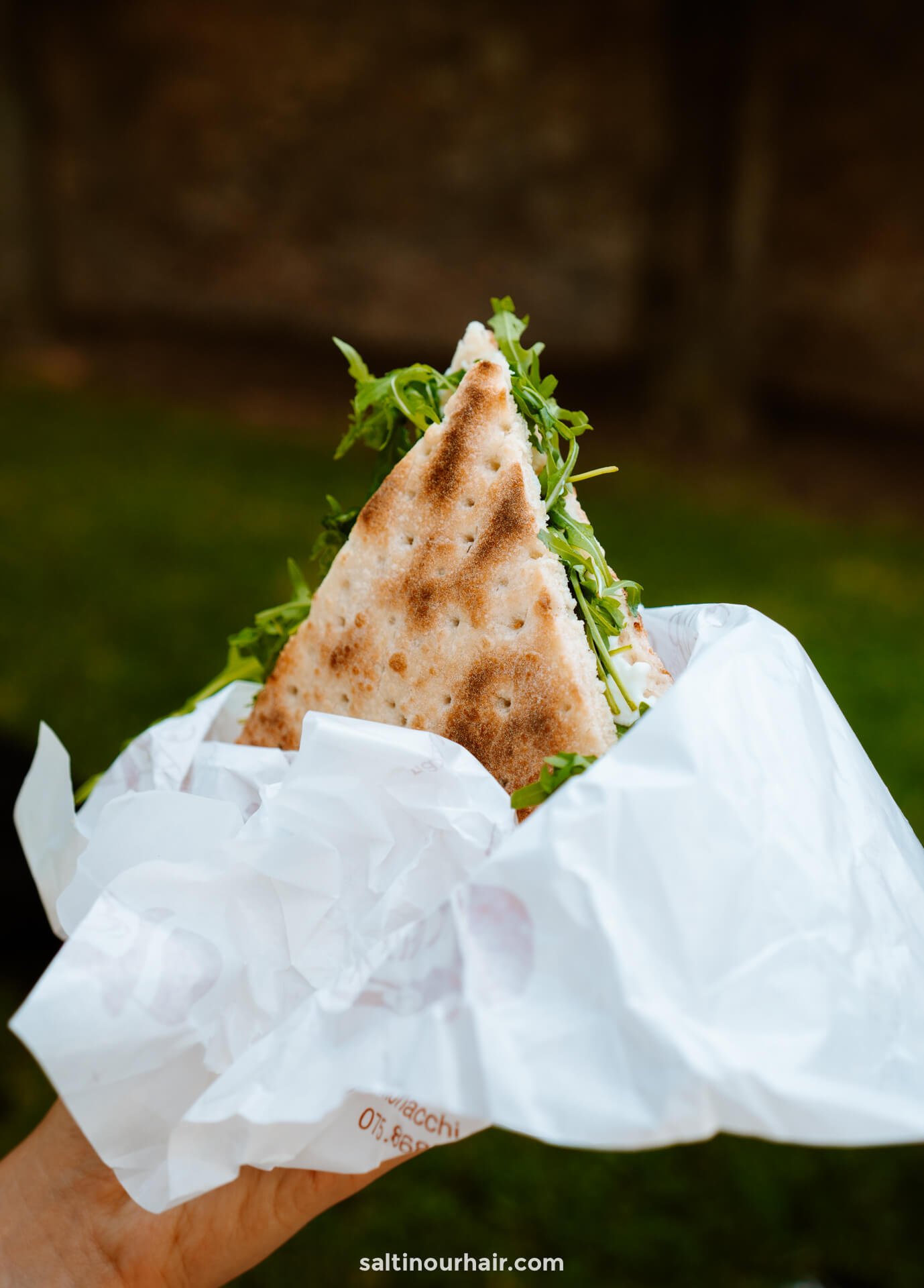
15. Orvieto
Set on a cliff overlooking the valley below, Orvieto is one of Italy’s most important historic cities and a top thing to do in Umbria. The city has many ancient tales and legends dating back to the Etruscan era (the beginning of which is thought to be 900 BC). You can discover some of these among the city’s 1200 underground caves!
Read everything about the things to do in Orvieto, Italy .
Here are all your hotel options in Orvieto.
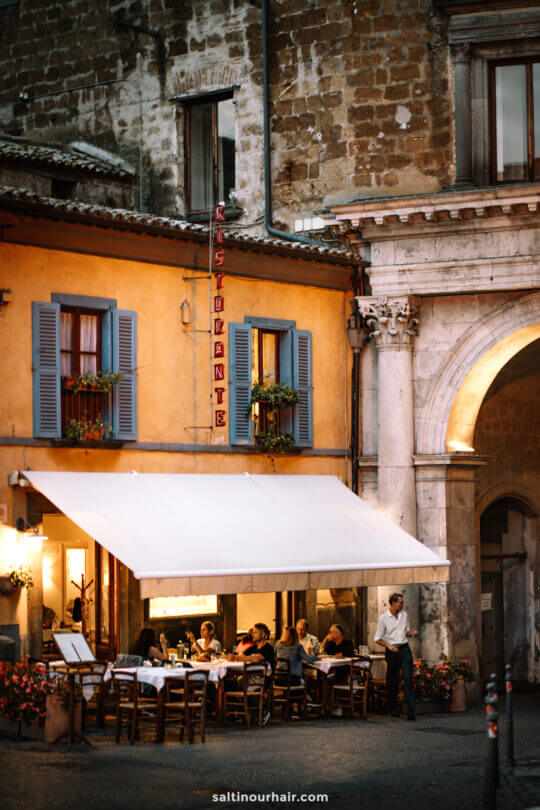
While in Orvieto , don’t miss the stunning Duomo, with its incredibly intricate exteriors covered in mesmerizing stonework and mosaics. Alternatively, head for the Albornoz Fortress on the edge of town with its beautiful viewpoint overlooking the Italian countryside.
Tip: Orvieto is very hilly and has very steep streets. If you don’t feel like walking, there is a funicular or escalator you can take to transport you to the old town.
Hotels in Orvieto 😴
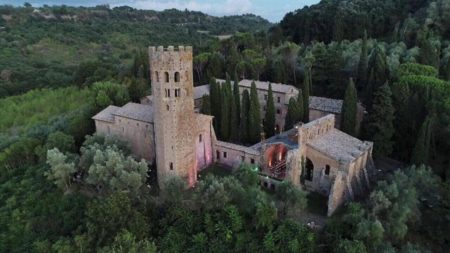
16. Rafting on the Nera River
Umbria has a super relaxed atmosphere, but that doesn’t mean there aren’t plenty of adrenaline-pumping activities! Try rafting on the Nera River as a fun activity with friends or family; float on fast water, fall down rapids, and jump into the river from the rocky gorge above. Not only will you have fun, but it’s a great way to see the beautiful scenery, passing along wild, crystal-clear rivers through lush forests and high cliffs. This has to be one of the top things to do in Umbria!
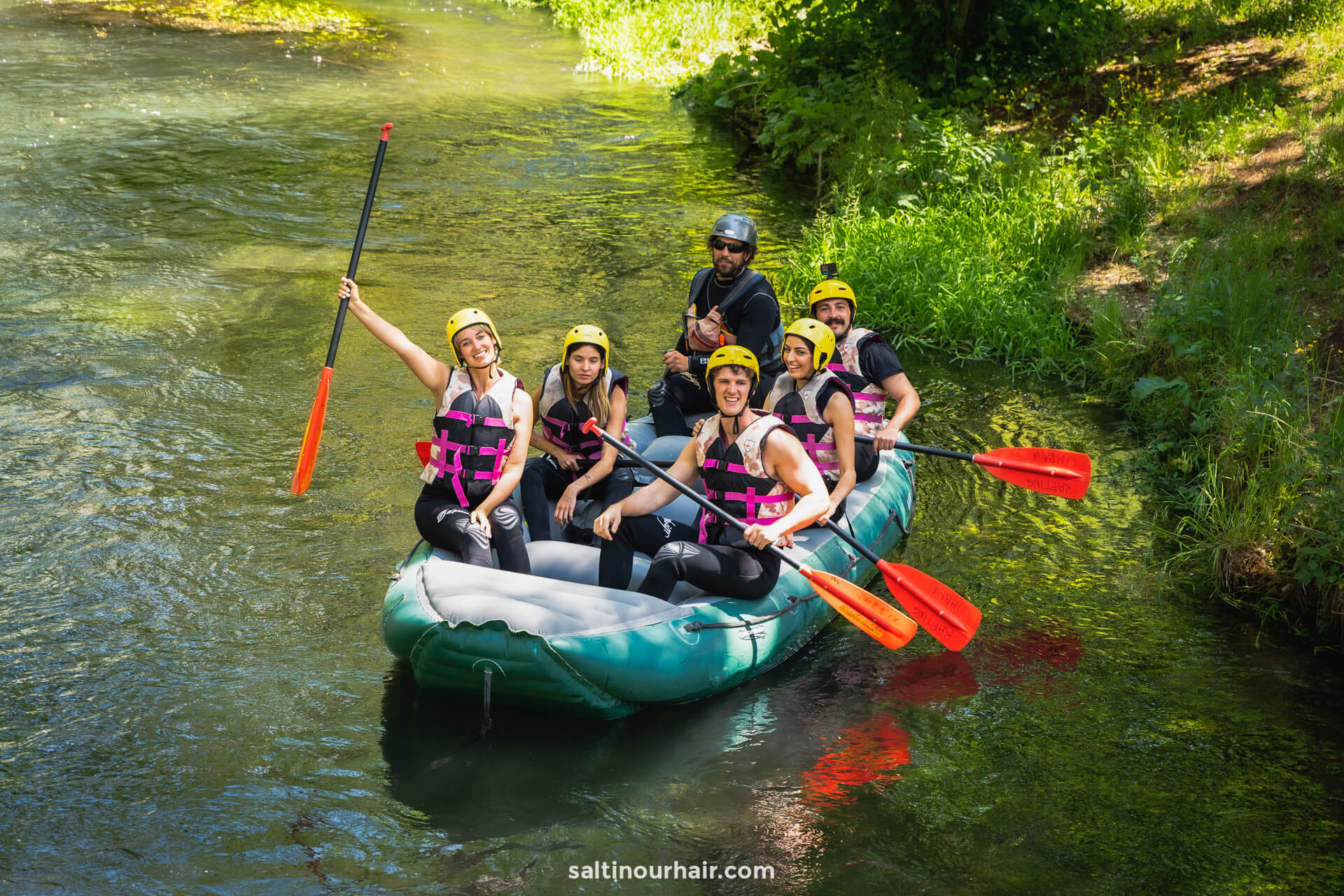
What do you need for rafting in Umbria, Italy?
The whole experience takes 2-hours with all the gear provided. All you need to bring is swimwear, a towel, and maybe a waterproof camera or GoPro if you want to get some fun photos.
Book your rafting tour
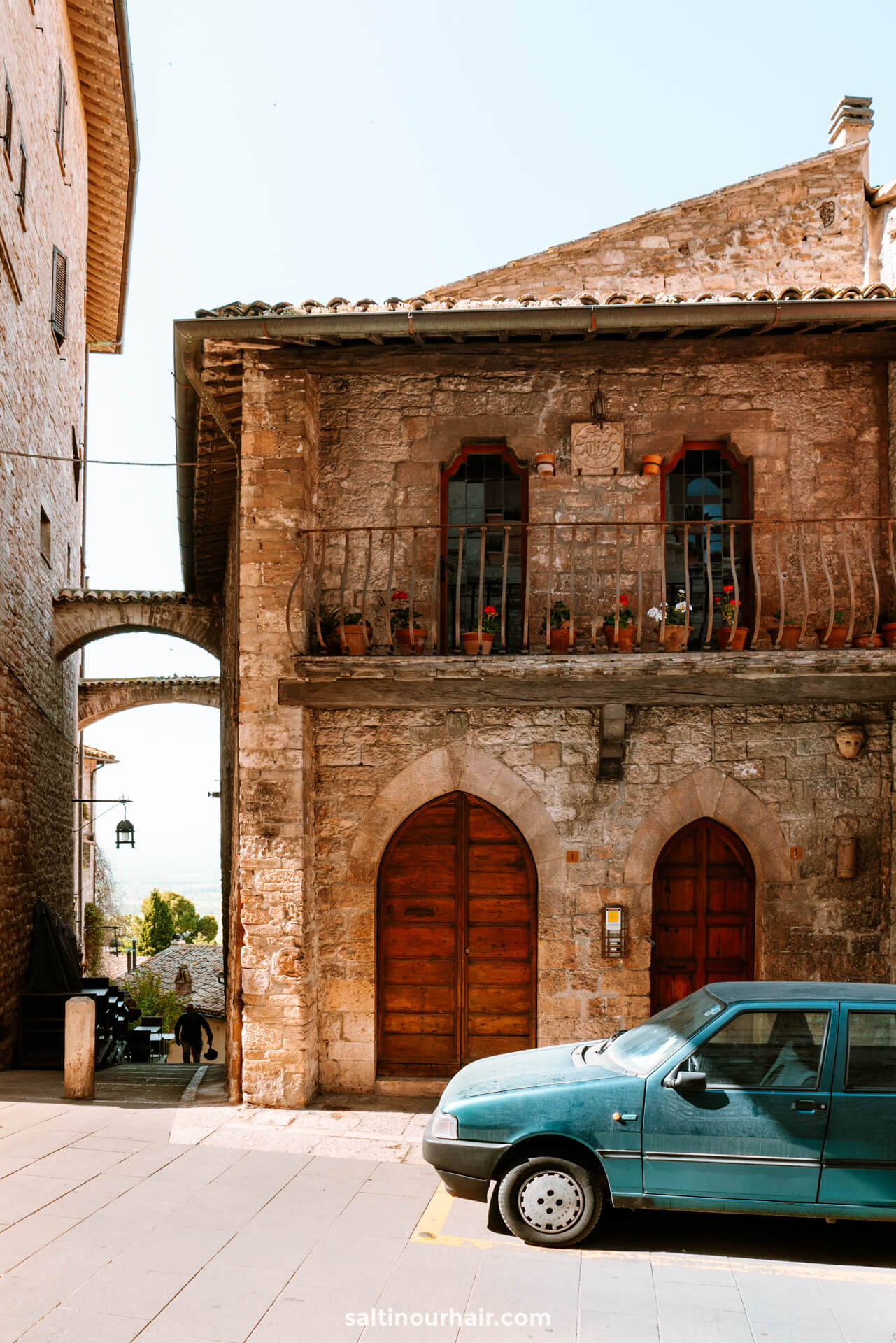
Where to Stay in Umbria
The bigger cities and towns of Assisi , Spello, and Perugia are all great places to stay on your trip to Italy. You’ll find lots of lovely hotels at various prices, all of which are a great jumping-off point to visit all the things to do in Umbria.
We stayed at Borgobrufa in Brufa , a beautiful resort with a pool overlooking the countryside (super relaxing after a day of sightseeing!). From here, we did day trips in our Italian rental car , which were never more than a 1-hour drive.
Hotels in Umbria 😴

If you want to experience the landscapes of Umbria, staying in an Agriturismo (farm accommodation) is also a great idea.
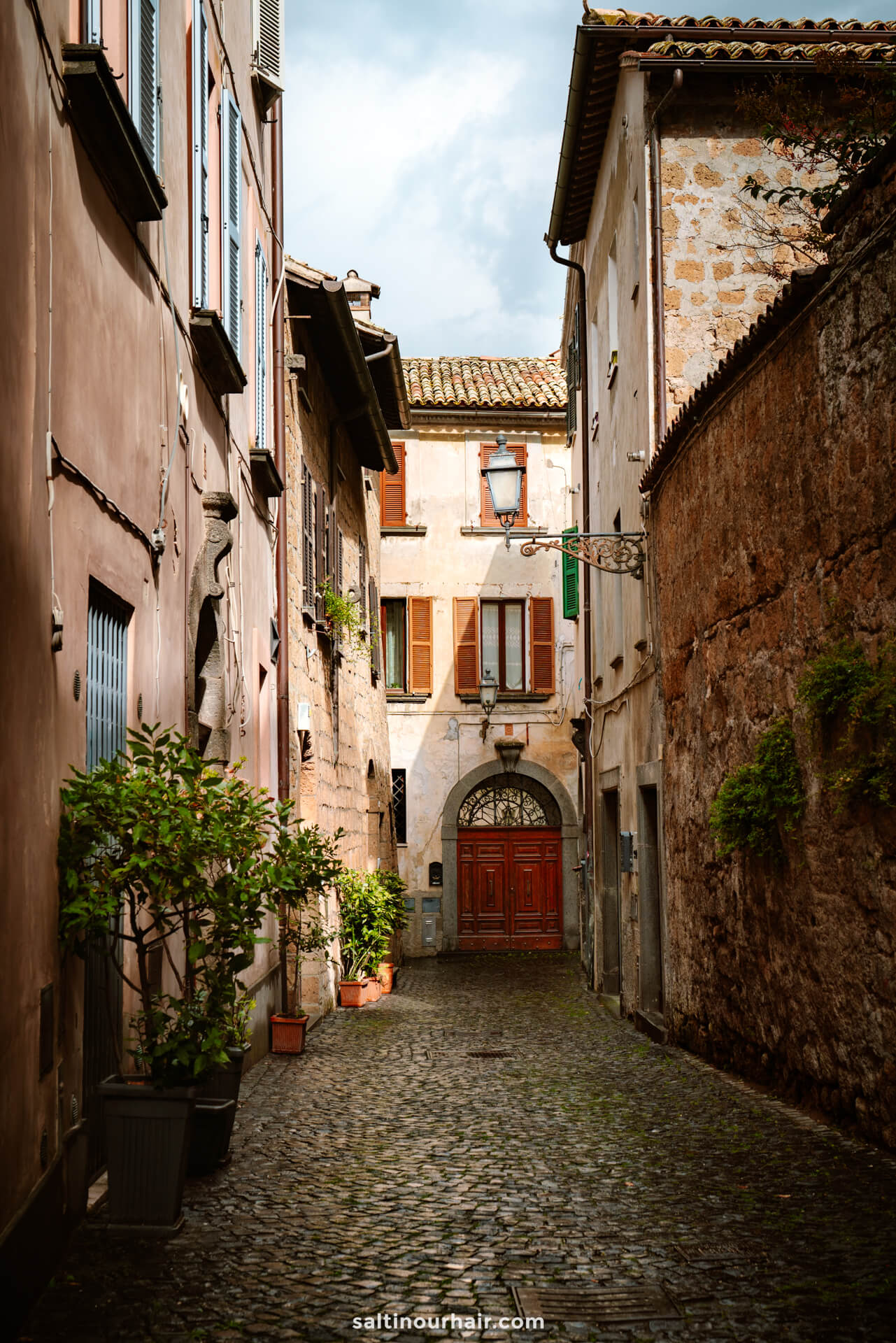
How to Visit Umbria
You can visit Umbria by flying into Perugia airport ( Rotterdam and Barcelona both have direct flights this summer season). Alternatively, fly to a larger airport like Rome or Florence and take the train or rental car to Umbria.
Another large city in Umbria is Terni, which also has a small airport. However, it only has domestic flights to other cities in Italy, like Rome. For more information about getting to Umbria, check out this page .
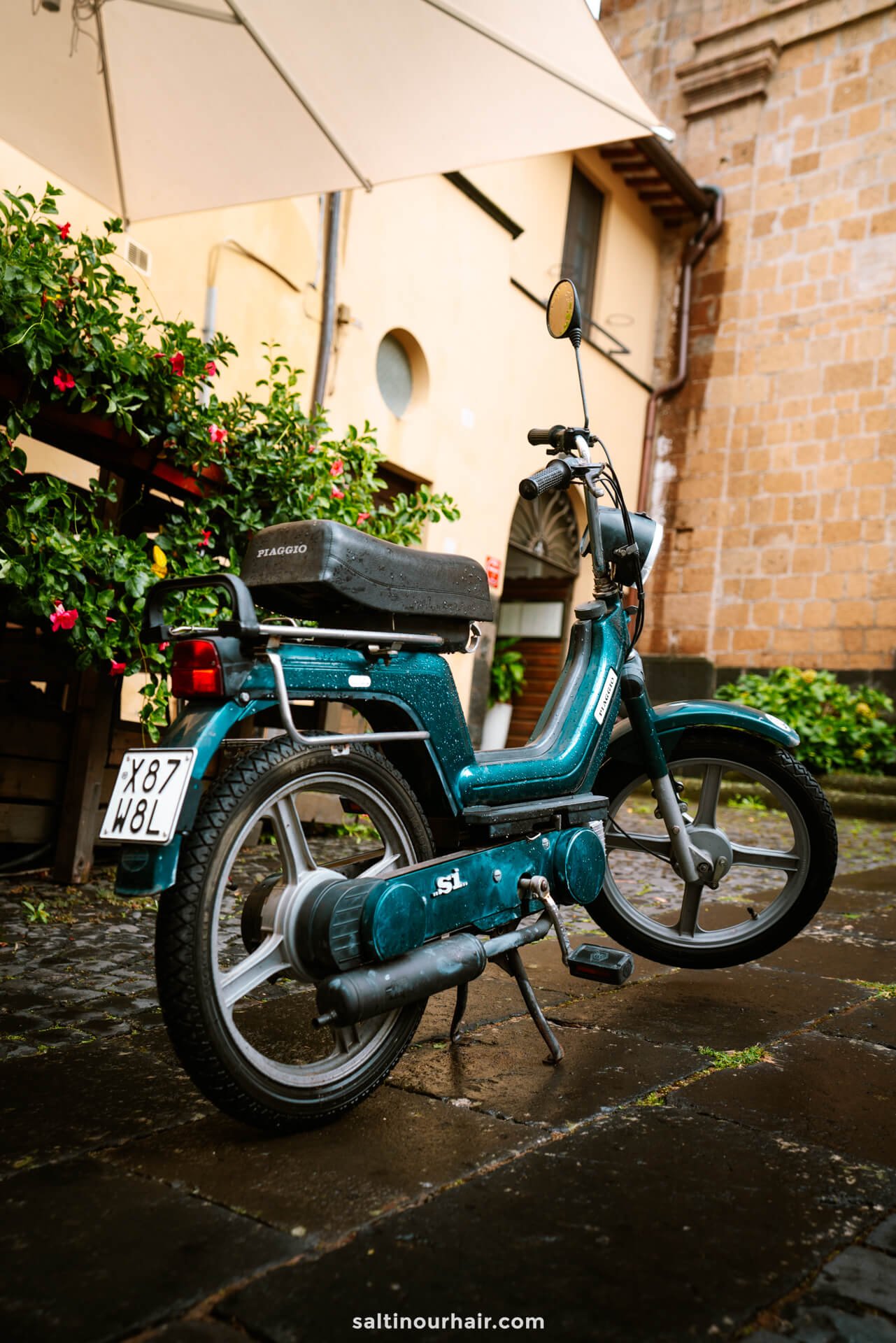
Getting Around Umbria
Part of Umbria’s beauty is its untouched feel, with far fewer tourists and a less-developed infrastructure. Because of this, there are very few public transport options, so it’s recommended to rent a car in Italy .
Rent a car from the capital of the region, Perugia , and from here, all destinations in Umbria will be within a 1-hour drive.
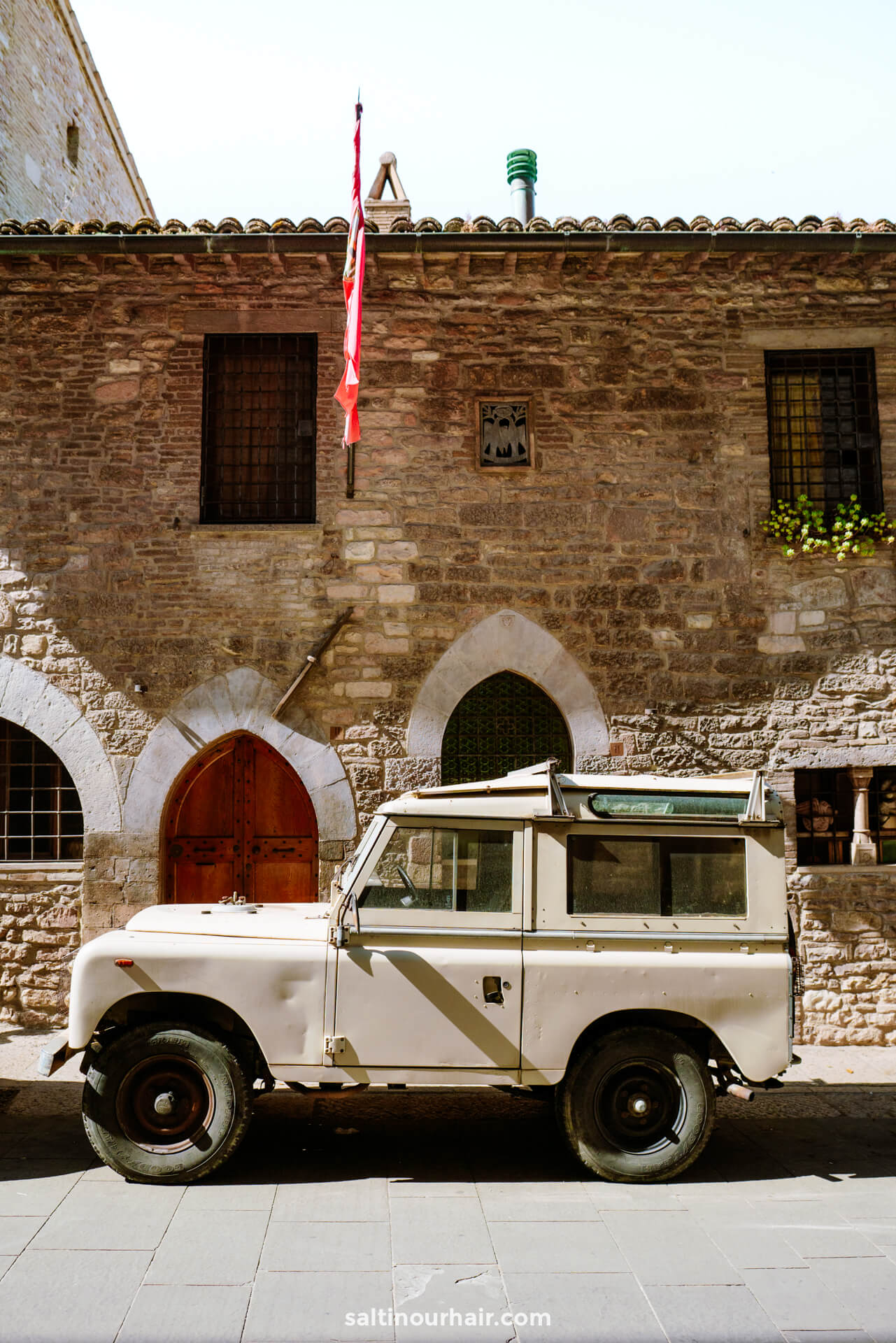
How Much Does Umbria Cost?
Umbria is the hidden gem of Italy and, as such, remains off the radar for most tourists. Because of this, it’s far cheaper than other destinations in Italy, like Tuscany or Venice . Plus, most of the things to do in Umbria are free. For example, walking among the towns, seeing the historical sites, swimming in rivers, or watching the sunset from a viewpoint.
The price is still very reasonable for the activities and tours, although this can change depending on the season.
Costs of Traveling in Umbria
Travel on a budget in Umbria, from $440 − $700 USD weekly per person, mid-range $1070 − $2420 USD, and high-end from $2250 − $3460 USD. However, costs depend on factors like accommodation, transportation, and activities. We did not include flights. Check flight prices here
- Hotels: $70 − $250 USD Check available hotels
- Hostels: $20 − $65 USD Check available hostels
- Transport: $20 − $35 USD Book public transport
- Car Rental: $50 − $150 USD Book a rental car
- Food: $15 − $70 USD
- Activities: $5 − $15 USD See tickets & tours
- Sim: $1 − $3 USD Get an eSIM or SIM here
- Travel Insurance: $2 − $6 USD Get Travel Insurance
Best Time to Visit Umbria
Umbria is relatively quiet all year round, although it does get much busier in the summer when Italians are on their holidays. Because of this, we recommend visiting in April/May (choose May if you want to see the Festa dei Ceri) or September/October. Both these times will still be warm, and you’ll have plenty of sunshine to enjoy the fantastic landscapes of Umbria!
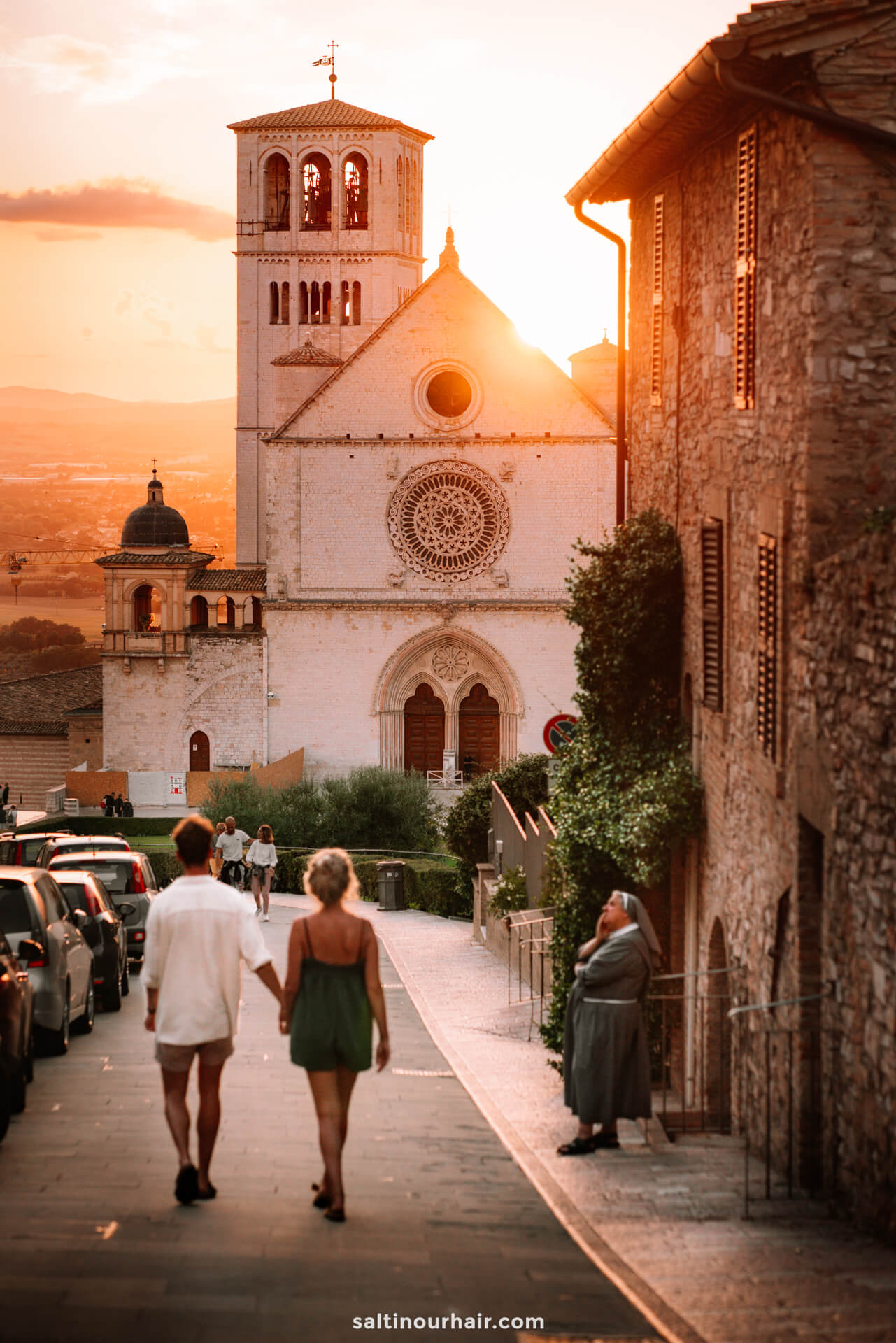
By purchasing through our links, you support us at no additional cost. Thank you for your support. ♥️
- Find Hotels via Booking.com
- Find a Rental Car via Sunny Cars
- Find Flights to Umbria via Skyscanner
- Get a Travel Insurance via Heymondo
- Book Tours & Attractions via GetYourGuide
- Book a Bus/Train/Transfer via 12Go
Valley of the Temples, Sicily: Everything You Need to Know
Sicily road trip: ultimate 2-week itinerary, renting a car in sicily: all you need to know.
Looking for more travel information? Plan a chat with us for personalised travel advice or get an answer from the Salt in our Hair Travel Community on Facebook.
Very Nice! Thanks For Sharing..
Your email address will not be published. Required fields are marked *
Notify me when new comments are added.

Central Italy
From assisi to perugia, via gubbio, lake trasimeno and marmore falls: umbria is a truly enchanting tourist destination.
Peaks covered in lush forests and large valleys outlined by rivers, lakes and waterfalls; sorrounded by villages and castles, crossed by paths steeped in history, art and culture, in a natural environment that helps to restore the body and soul: Umbria, the Green Heart of Italy, is all this and much more.
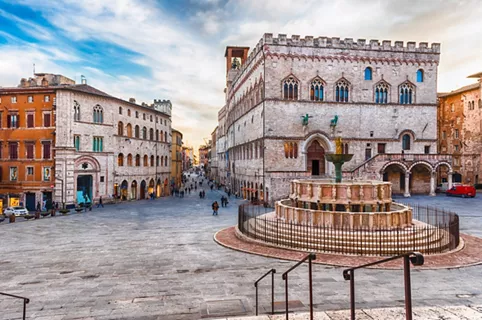
In the heart of Italy lies one of its oldest centres, Perugia, known for its vibrant social life, university heritage and much more. A modern city with traces of its prominent past around every corner: standing atop a hill in the Tiber valley, Perugia, the capital of Umbria, is a renowned city of art and an effervescent cultural centre. Built as a fortified medieval village, it is encompassed by a mighty city wall. It boasts top-notch museums and beautiful nature, not forgetting chocolate, which it produces and celebrates at the mouth-watering Eurochocolate festival.
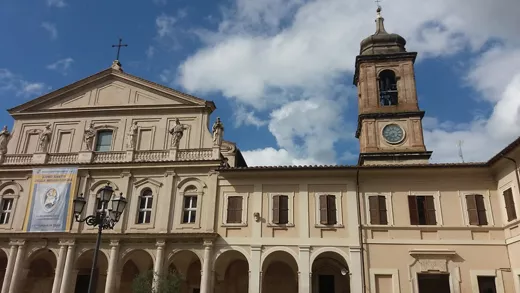
Dual soul of the “city of steel” Terni is a city nestled in the heart of the peninsula, rich in artistic and scenic beauty. Besides the Roman amphitheatre, still partly preserved, the Cathedral of Santa Maria Assunta, the Romanesque tower of the Barbarasa family and the Basilica of St Valentine, where the remains of the patron saint of lovers are kept, are worth a visit. Older buildings are mixed with contemporary architecture such as the “Lance of Light”, better known as Arnaldo Pomodoro's Obelisk. It is the modern symbol of the city and depicts the evolution of the art of smelting from the raw iron of the base to the tip that appears to be made of gold. One of the most beautiful towns in the province is Orvieto, famous for its cathedral with its polychrome façade and for the Pozzo di San Patrizio: its helicoidal staircase will take you to a depth of 62 metres. Equally fascinating are the medieval Narni and La Scarzuola, Tomaso Buzzi's “ideal city”. From a landscape point of view, the Marmore Waterfalls stand out. With a height difference of 165 metres, divided into three jumps, it is one of the highest in Europe, ideal for a range of outdoor sports such as rafting, canyoning, hydrospeed and kayaking. Visiting some caves and karstic forms excavated over millennia by water is also possible. Lake Piediluco, due to the absence of currents and the presence of regular winds, is an excellent field for rowing races.
What to see in Umbria
- Art & Culture
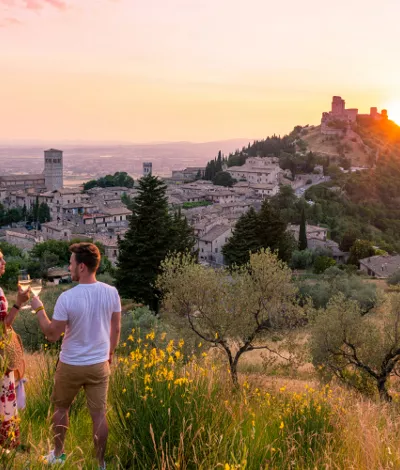
Wine and oil, the treasures of Umbria
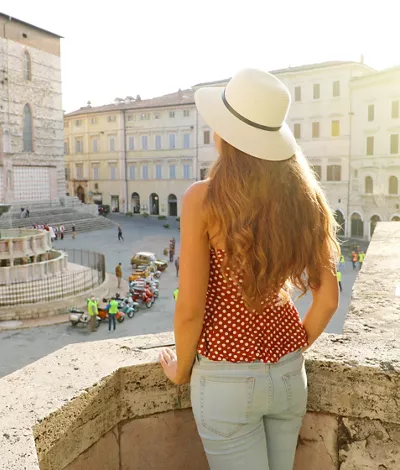
Umbria, on the pursuit of flavor
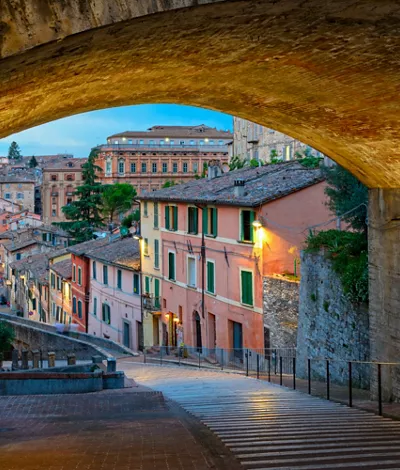
5 urban hikes to see 5 panoramic terraces in Perugia
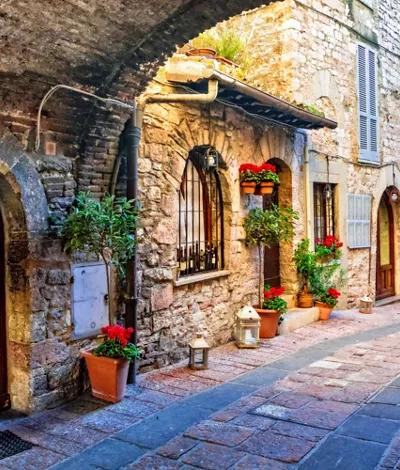
A Grand Tour of Umbria - Combined bus and cycling trips will let you discover some well-hidden treasures
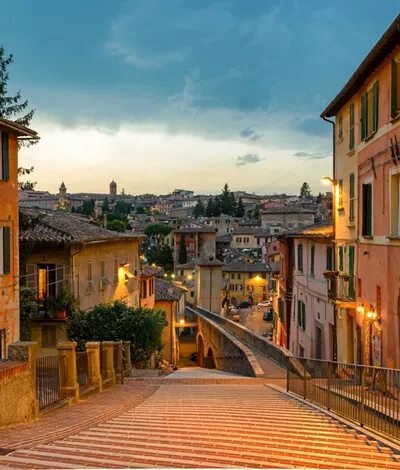
Perugia: a historical and artistic jewel and beacon of central Italy
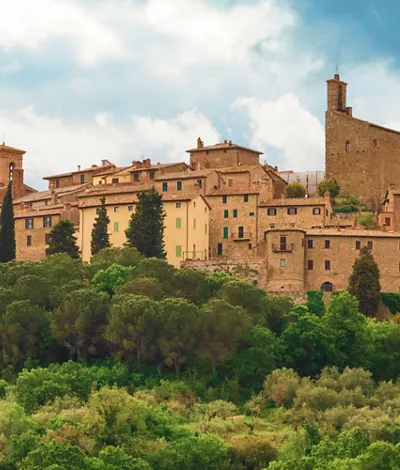
Castiglione del Lago, a balcony on Lake Trasimeno
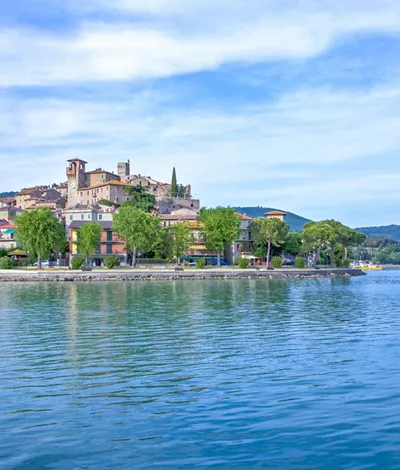
Lake Trasimeno and its villages
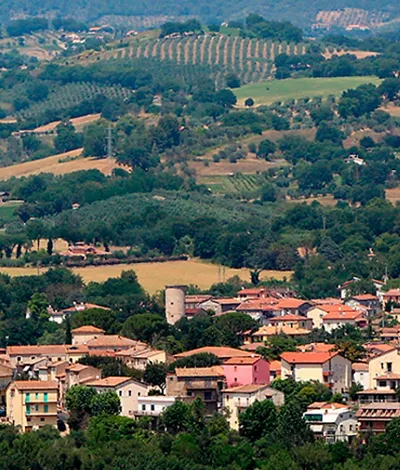
The Attigliano food and wine Festival
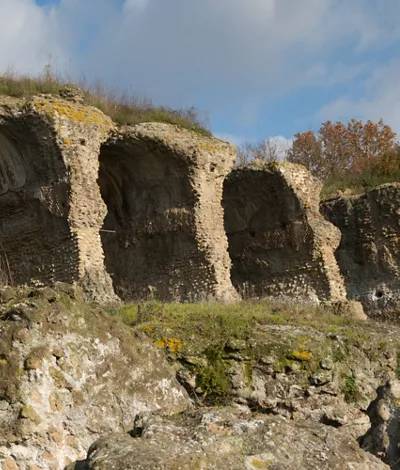
Mount Subasio Park: a protected and sacred natural area
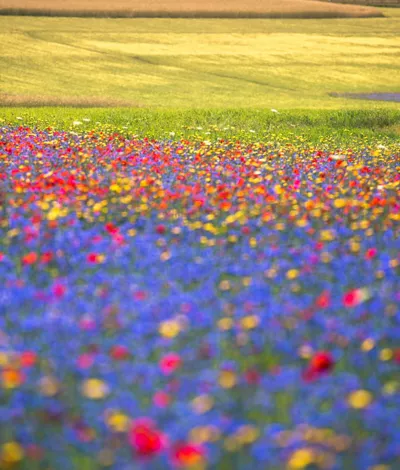
Monti Sibillini National Park
Marmore Falls
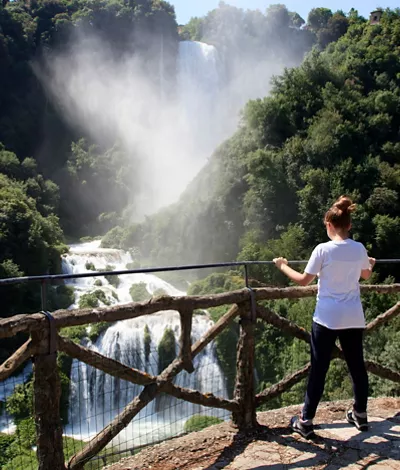
Outdoor Umbria: family-friendly experiences
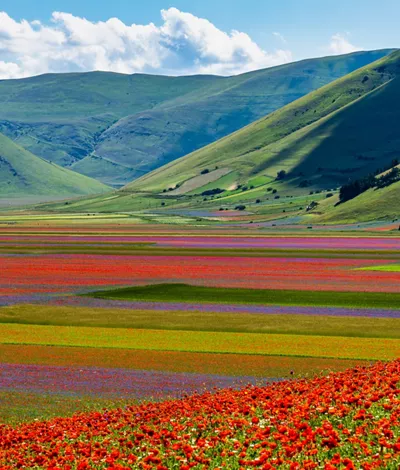
Flowers in Italy: a colour palette

Nature and animals: limelight on biodiversity in wildlife parks
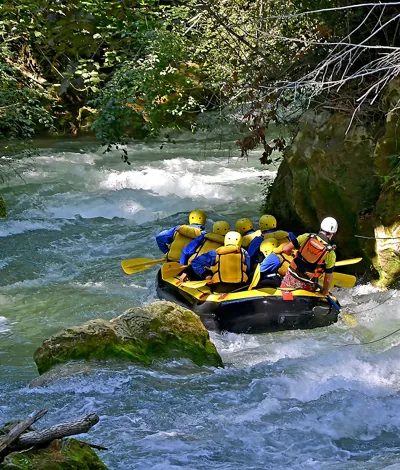
Umbria: adventures among the rapids
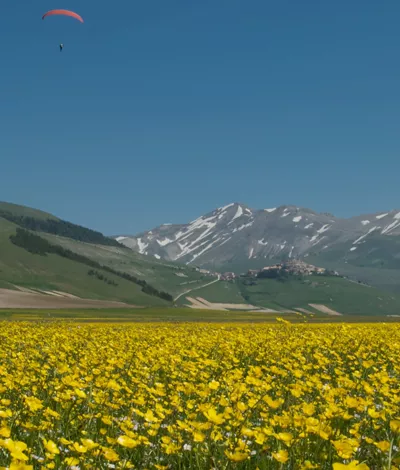
Umbria: the scenic flight here takes place against an enchanting backdrop of villages, hills and blooming meadows
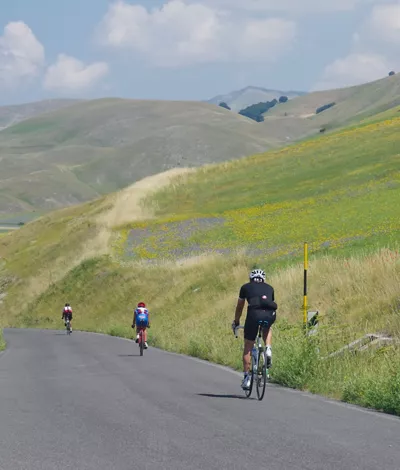
Umbria's artistic and landscape treasures by bike
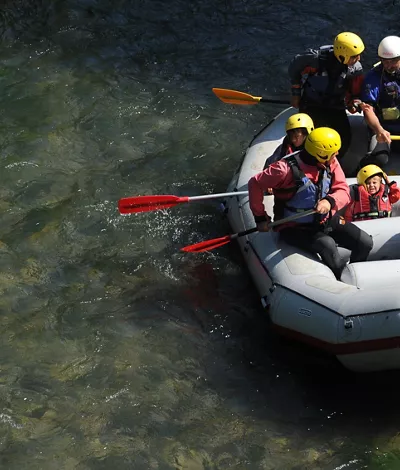
Along the course of the Corno and Nera rivers, between the Sibillini Mountains National Park and the Marmore Falls
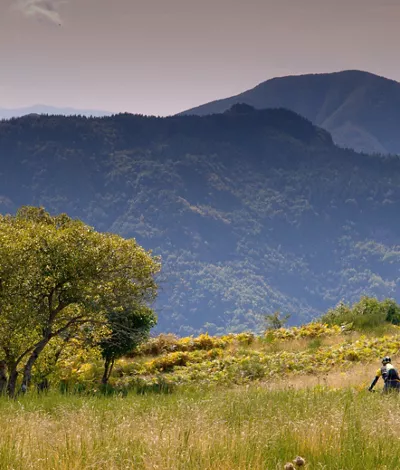
In the saddle from Umbria to Marche
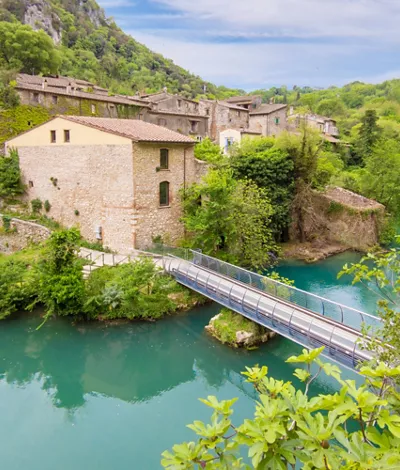

Nera River Cycle Path: cycling through forests and waterfalls
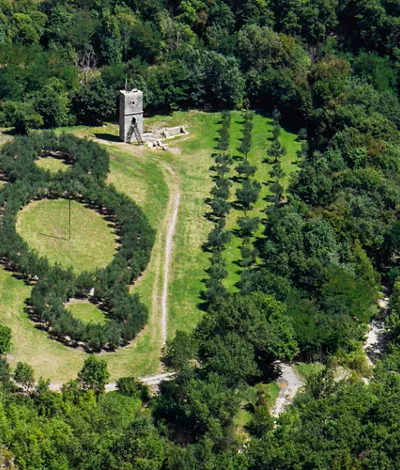
The Third Paradise in Assisi, the unexpected work of art in the Bosco di San Francesco
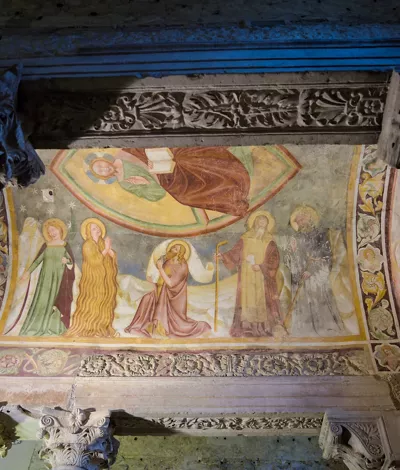
The Longobards and Their Places of Power
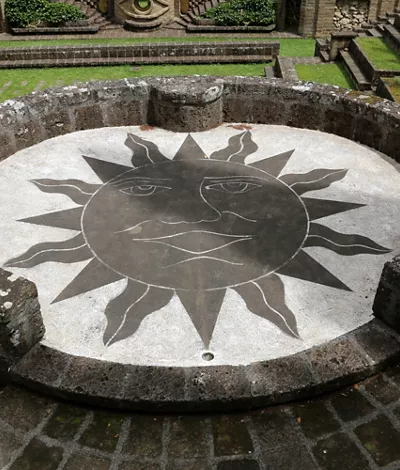
La Scarzuola
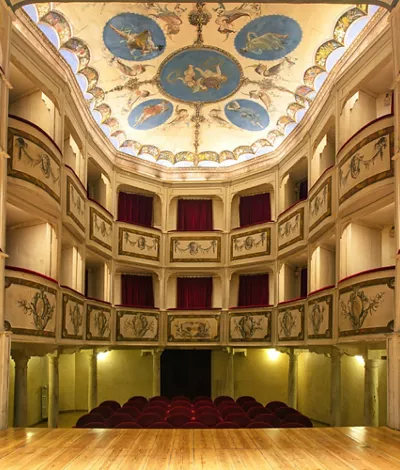
Teatro della Concordia
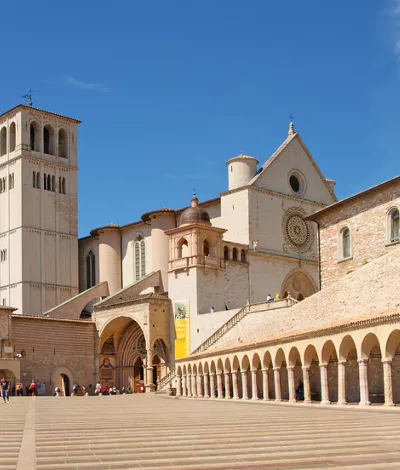
Assisi, a sanctuary with a priceless historical heritage
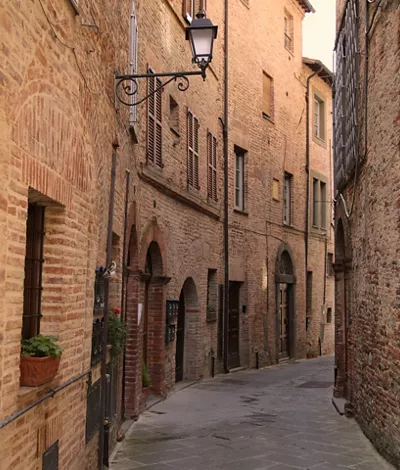
Città della Pieve: a mini medieval masterpiece
Inspiration for living the italian way.
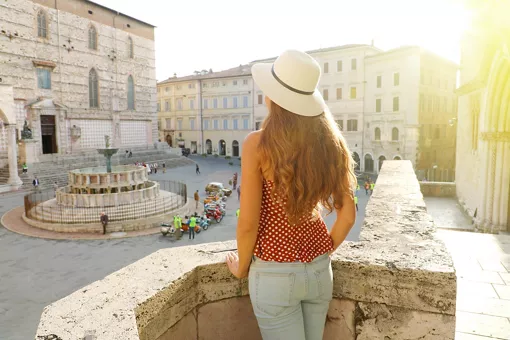
The Todi Festival

The most scenic golf courses in Italy

Journey into extra virgin olive oil
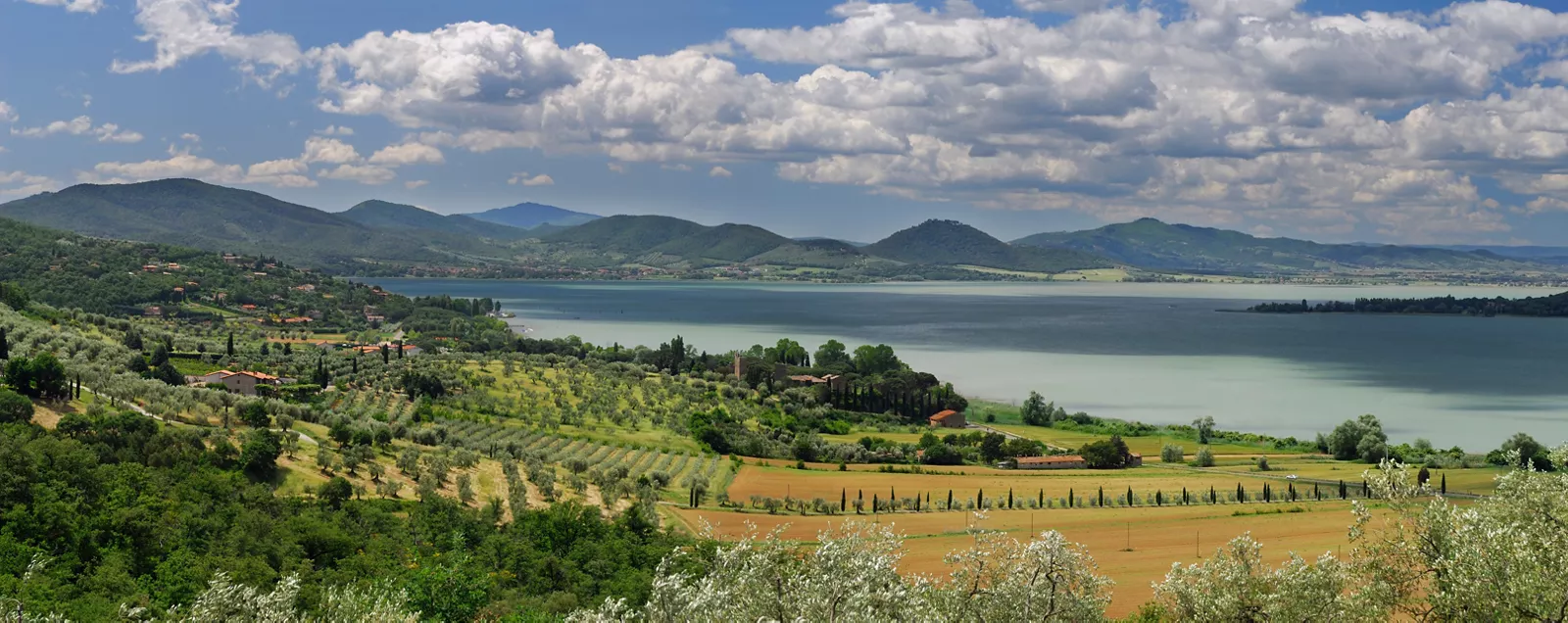
Umbria, Trasimeno Hills: a tour along the Wine Route
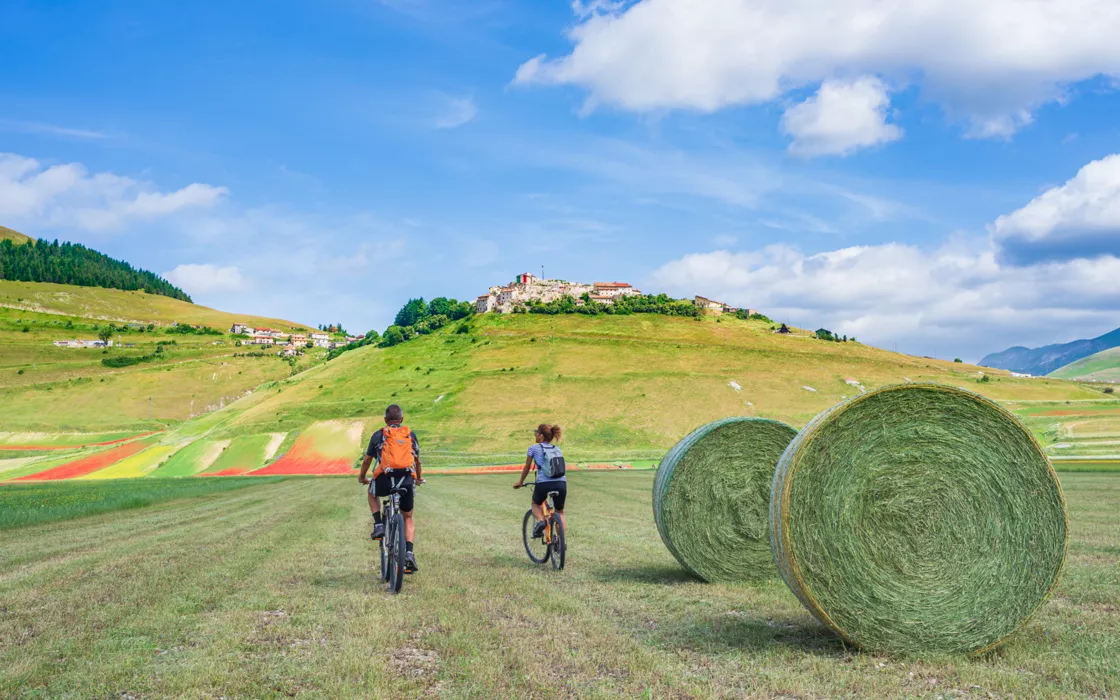
Umbria, cycling towards Norcia: from Preci to Castelluccio
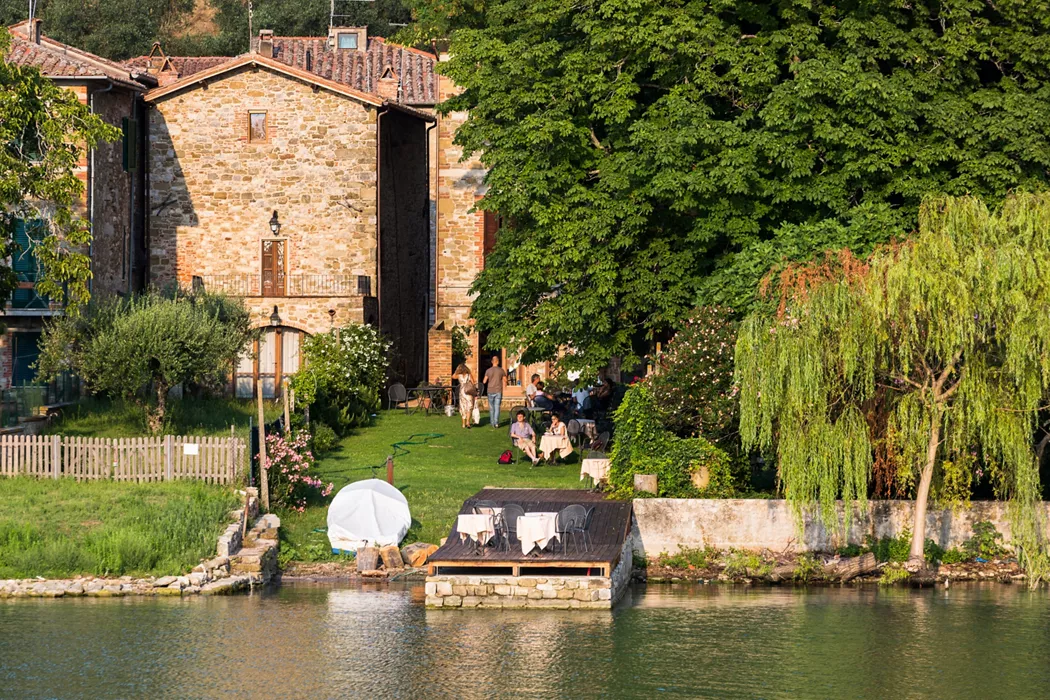
Umbria: a weekend filled with relaxation and beauty.
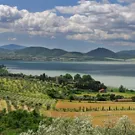
Lush valleys and pristine environments: Umbria: the green heart of Italy
The fantastically varied scenery of Umbria offers plenty of opportunities to enjoy an unforgettable holiday, in contact with nature, in search of your own inner spirit or thrilling adventures. Anyone who loves Italian cuisine will be spoiled for choice, between family-run trattorias and the restaurants of Michelin star chefs.
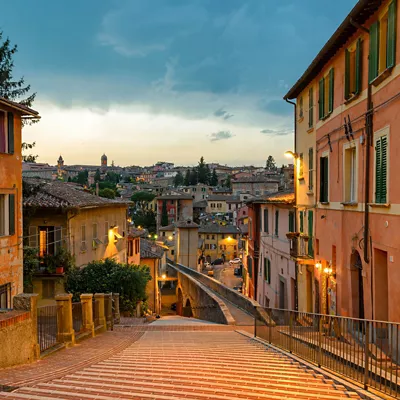
Continue living like an Italian
Subscribe to the Newsletter so as not to miss places, events and experiences for experiencing the best side of Italy: the authentic one.
Keep up to date
Would you like to learn about the most authentic experiences to be had in Italy, stay up to date on the most interesting events, discover our special offers and receive lots of insider hints and tips?
Save your favorite places
Create an account or log in to save your wishlist
Do you already have an account? Sign in

Touropia Travel Experts
Discover the World
12 Best Places to Visit in Umbria, Italy

Umbria is a charismatic Italian region bordered by the rolling greenery of Tuscany, Le Marche, and Lazio. Characterized by medieval hill towns, gorgeous lakes, fascinating Roman ruins, and lip-smacking local cuisine, it’s the epitome of holiday heaven.
Forage for truffles, taste fine Italian wines, and uncover the history of Italy’s Patron Saints. Whether you’re looking for a spiritual escape in ever-popular Perugia, or you’d prefer the quieter slow life of Narni, Umbria truly has it all.
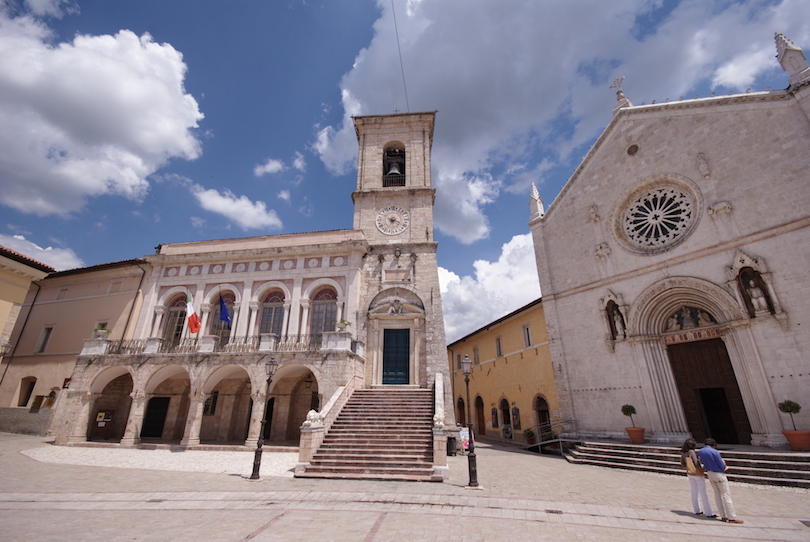
Norcia is a medieval town of handsome contrasts. A walled town surrounded by lush countryside and undulating Umbrian hills, it’s the perfect spot for hikers, nature lovers, and foodies. It’s famous for its black truffles, salami, pork, and wild boar products – so famous, in fact, that they’ve been named norcineria.
Dating back to the Neolithic Age, Norcia is the birthplace of Europe’s Patron Saint, St. Benedict. Explore the mysteries of its medieval streets and the historic town center. While several important buildings – such as the Church of St. Benedict itself – were destroyed by earthquakes, you can still see the statue of Saint Benedict, Palazzo Comunale, and the 13th-century Town Hall with its photogenic Loggia Staircase and Bell Tower.
Located on the edge of Sibillini National Park in south-eastern Umbria, visitors choose Norcia for a healthy combination of food and exercise. There’s plenty of rolling countryside to explore on foot, bike, or horseback.
Don’t miss truffle season (November to March) or the dedicated festival held over the last fortnight of February. You’ll also love the three-day Prosciuti dal Mondo in November, which features prosciutto from all over Italy!
11. Monti Sibillini National Park
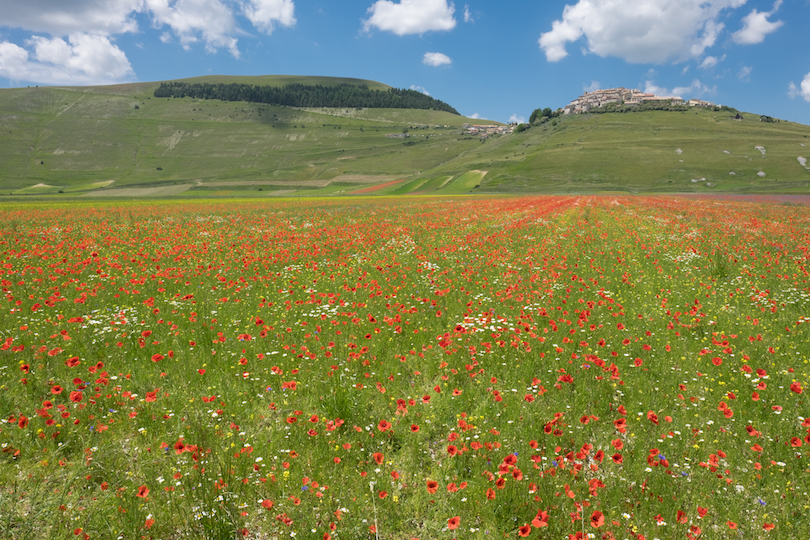
Tucked away within the Apennine Mountains, Monti Sibillini National Park is a wild and wonderful destination in Umbria. Dotted with medieval villages, lakes, and legends, it’s a popular destination for a host of outdoor adventures, such as hiking, biking, rock climbing, and canyoneering. Wildflowers and wildlife are abundant in the park, from orchids to wolves and birds of prey.
Dating back to medieval times, the Sibillines were believed to be a land of witches, necromancers, and fairies. Today, the legends live on, and it’s what makes this area so fascinating. Hike to the Cave of Sibyl, a sorceress said to have lured fearless knights into a life of damnation.
The perfect way to witness the parks’ beauty is by hiking up one of the peaks or hang gliding or paragliding off them. Organized treks are available, or you can follow a self-guided trail from the park’s website.
Explore the little hamlets within the park’s reaches. Visso, the park’s seat, is believed to have been founded 907 years before Rome and features the eight-sided Sanctuary of Macereto. Explore Preci, the center of spirituality, and Arquata del Tronto, Europe’s only municipality within two national parks (Monti Sibillini in the north and Gran Sasso and Monti della Laga in the south). Alternatively, have a swim in the crisp waters of Lake Fiastra and bird watch at Hell’s Gorge.
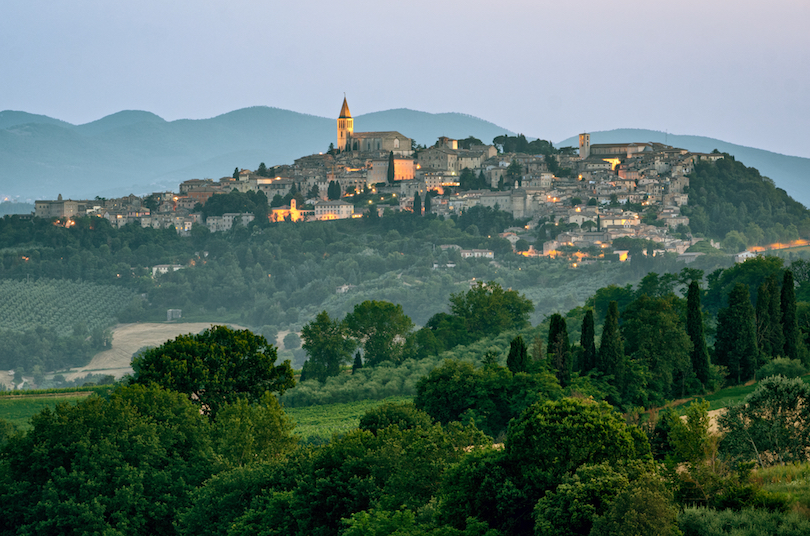
The hilltop town of Todi overlooks the picturesque Tevere Valley. Surrounded by three sets of walls, the town conceals many hidden treasures. Each wall was built in a different historical era: the innermost is Etruscan, the middle one Roman, and the medieval wall from the Middle Ages.
Explore the city’s historic center from the Piazza del Popolo. Get a classic tourist photo at the stairs of the 12th-century Cathedral, located on the ruins of a temple dedicated to the god Apollo. Visit the Town Hall, People’s Palace, and the Museum of Roman Etruscan. Don’t miss the 13th-century Captain Palace, the 14th-century Priori Palace, and St. Fortunato Church honoring the city’s Patron Saint.
Other highlights include visiting the 16th-century Consolazione Temple with its gorgeous dome, exploring the Roman-built underground cisterns, and strolling the narrow streets in search of handicrafts. Once you’ve worked up an appetite, try the pan caciato, a small loaf made with walnuts, cheese and raisins, and palomba alla ghiotta (roasted pigeon). Pair these with a glass of Greschetto di Todi DOC, one of the fine local wines, and you’re all set!
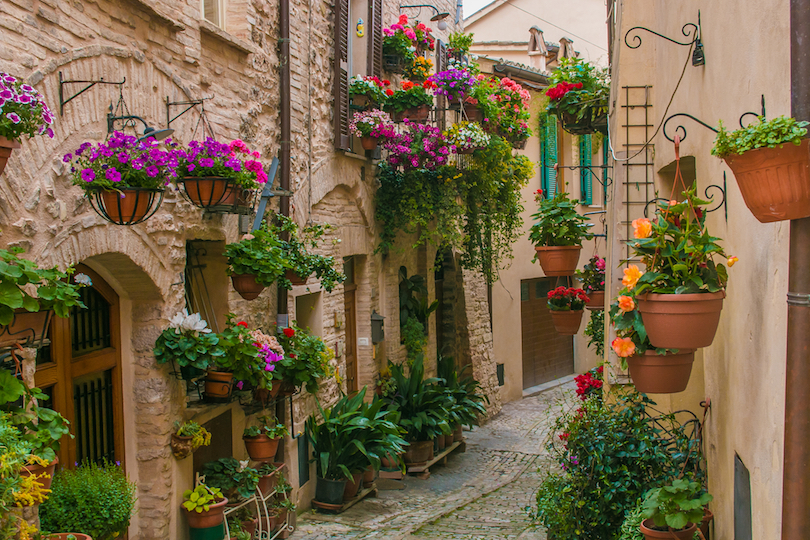
Spello is an ancient walled town with honey-colored houses cascading down the slopes of Saint Francis’s mountain, Monte Subasio. Located on the doorstep of Assisi in east-central Umbria, it’s a small town that you can explore on foot in just several hours.
Small it may be, but its civilized pace and gorgeous views make it well worth a visit. In fact, it’s easily one of the most beautiful villages in Italy! Built from Subasio marble, the entire town takes on a pinkish color around sunrise and sunset – the photos are simply gorgeous!
Three well-preserved Roman arches form the entryways to the town. Inside, you’ll find the 11th-century Church of Santa Maria Maggiore with its famous Baglioni Chapel and striking Pinturicchio frescoes. If you’re interested in churches, you’re in luck. Visit the Church of San Andrea, San Lorenzo, San Claudio, Santa Maria di Vallegloria, and Saint Jerome with its adjoining monastery. Other sights include the Roman House, Villa Costanzi with its summertime concerts, and the Piazza della Repubblica, which encompasses the 13th-century Municipal Palace and Archaeological Museum.
Whatever you do, don’t miss the Infiorata (Flower Festival) held in May and June. The streets are transformed into a colorful wonderland, dubbing Spello the ‘Capital of Flowers.’
8. Lake Trasimeno
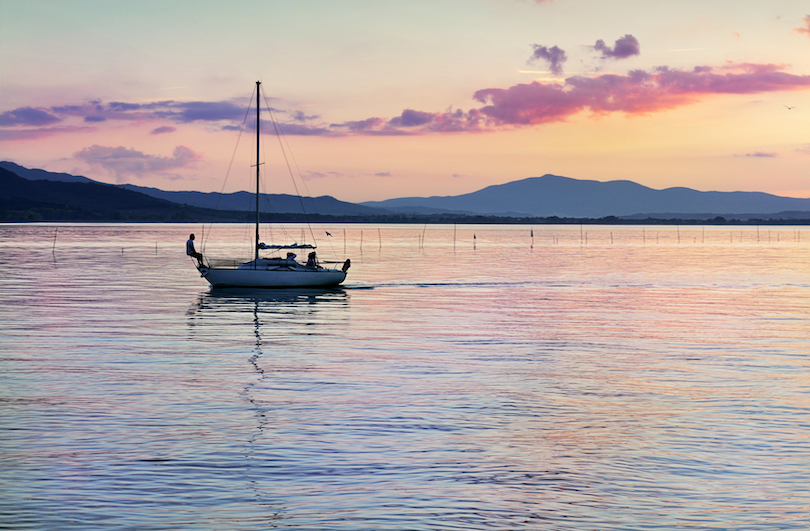
Lake Trasimeno, with its hillside olive groves, undulating vineyards, and quaint stone villages, is one of the most enchanting destinations in Umbria. The fourth-largest of Italy’s lakes, Trasimeno is surrounded by ancient towers, fortresses, and Renaissance-style churches. On the lake itself, you’ll find pastel-colored wooden fishing boats, three scenic lake islands, and some of the most dramatic sunsets in Italy.
While the lake is located inside the region of Umbria, it’s northern shoreline hugs the border of Tuscany. The villages peppering the lake have a resort-style atmosphere. Peak season runs from April to October, when tourists descend to take advantage of the mild climate, beaches, and hiking and biking trails. Visit out of season and you’ll find many shops and restaurants closed.
Take your time exploring the lake’s islands, towns, and enjoying the decadent cuisine: wine, olive oil, fish, and legumes flourish in Trasimeno’s microclimate. Hike and bird watch in Isola Polvese’s nature park, browse the famous Irish lacework in Isola Maggiore, and visit Castiglione del Lago – the most popular town, perched on a small promontory.
Passignano sul Trasimeno, with its long stretch of beach, is perfect for sunbathing, while San Feliciano is the best spot to witness the fishermen with their traditional flat-bottomed boats. Take a drive along the scenic Percorso Storico Archeologico della Battaglia and soak up the gloriously slow pace of Monte del Lago, surrounded by lake views on three sides.
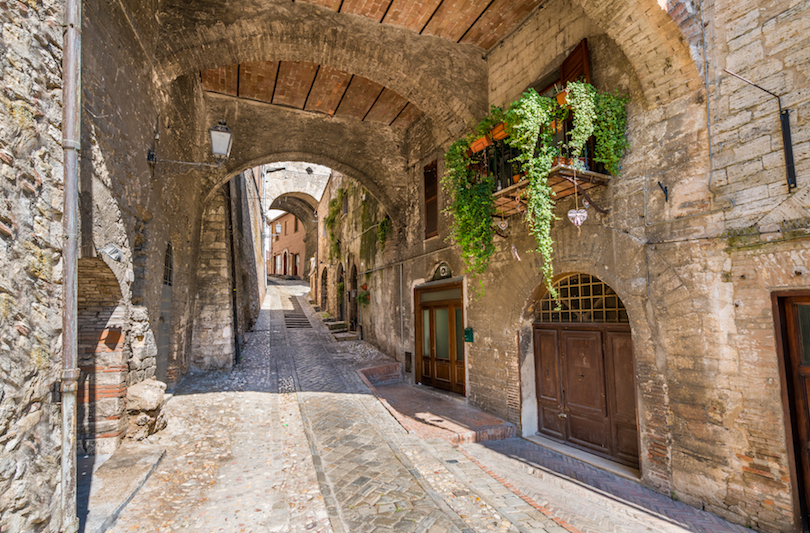
Narni is a quiet hamlet overlooking the lush Nera Valley. Known for its spectacular sunsets that take center stage over the backdrop of the Umbrian countryside, it’s one of the most romantic little villages in Italy.
But the old town has historical and cultural significance too. Admire the incredible artwork at the Civic Museum and explore Narni Sotterranea – an unbelievable underground town only discovered in 1977. Inside, you’ll find a 13th-century Benedictine church painted with amazing frescoes, a Roman cistern, a Holy Inquisition courtroom, and an eerie prison cell.
What makes this town special is that it’s not at all touristy. Yet there’s still so much to do. Stroll past the Duomo of San Giovenale, two beautiful palaces, and the 1370s Rocca fortress, and watch a summertime concert at San Domenico Church.
Just outside town, you’ll find Ponte Cardona, which marks the exact geographical center of Italy. If you have time, take a day trip to the ruins of Ocriculum, an ancient Umbrian settlement.
6. Marmore Waterfalls
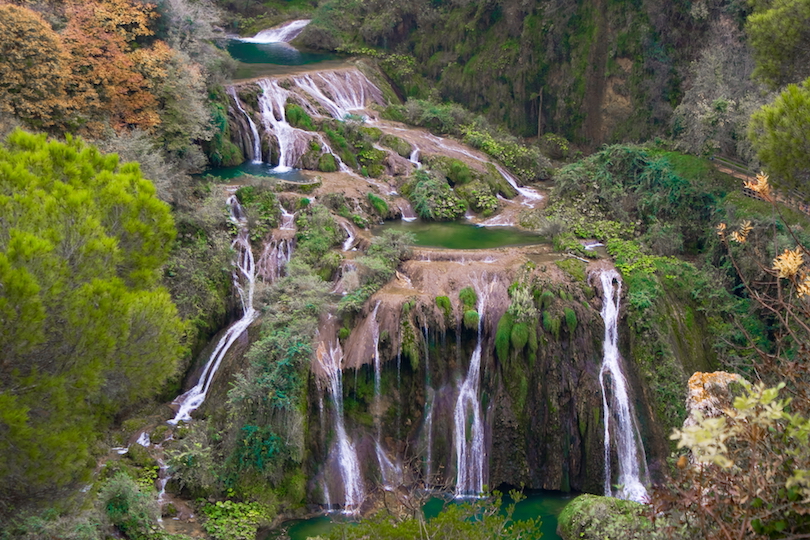
Marmore Falls is one of the tallest human made waterfalls in the world. Tucked within Nera River Park – also known as Waters’ Park – it was built by the Romans back in 271 BC to divert the overflowing stagnant waters of the River Velino into the River Nero.
Today, the falls feed the Galleto Hydroelectric Power Station, which has enabled the metal-working, electrochemical, and electric industries at Terni. Yet the falls remain steeped in myth and legend. Popular belief dictates that a nymph called Nera fell in love with a shepherd named Velino.
A jealous lover called Juno transformed Nera into a river and then threw himself over the cliff in order to be reunited with her forever. This mortal jump now lingers for eternity in the sprays of the waterfall.
Whether you prefer fact or fiction, the falls are a sight to behold. The Marmore Waterfalls can be visited along five trekking routes, catering to different fitness levels, but bear in mind that the water is only released at set times. Along the way, you’ll discover travertine grottoes and opportunities for kayaking, rafting, and canyoneering. Don’t miss the Enchanted Walk and the Balcony of Lovers!
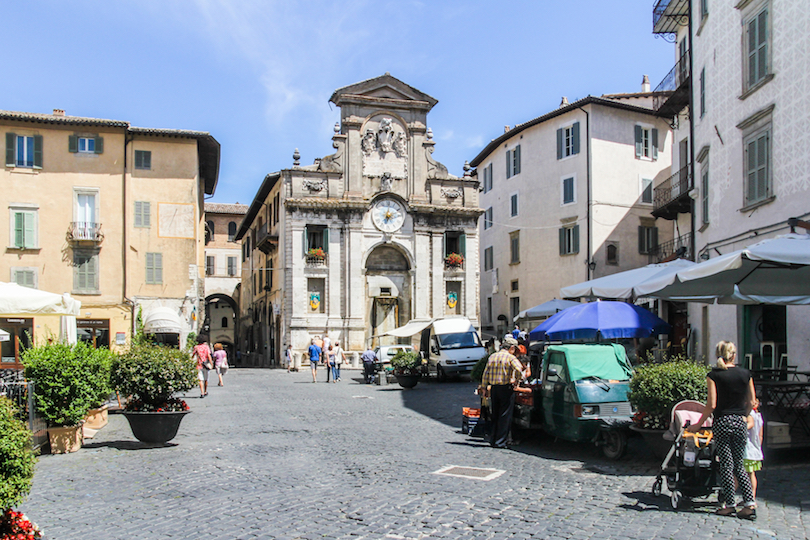
Spoleto is one of those rare non-touristy towns. Totally off the beaten path, this medieval village has a steep historical center, accessible via a travellator, that dates back to 241 BC.
Inhabited by the original Umbri tribes in the 5th-century BC who built fortifying walls that can still be seen today, it was only in 774 that it became part of the Holy Roman Empire, when one of the Dukes of Lombard made it their official residence.
Chosen as the filming location for the famous Italian soapy, Don Matteo (because it depicts a typical Italian town yet to be overrun by tourists), Spoleto promises all the best things about Italy – lovely restaurants, hearty cuisine, and fantastic wines. Don’t miss the black truffles and red wine from Montefalco!
Start at Rocca Albornoz, the symbol of the city, and admire the views across Spoleto. These views compete with those from the 13th-century Ponte delle Torre (Tower Bridge), which connects the San’Elia hill with Monte Luco.
Other notable sites include the 12th-century Romanesque Santa Maria Assunta Cathedral, the Mauri Palace, the Church of San Ansano and San Gregorio Maggiore, the St. Isaac Crypt, and the Arch of Drusus and Germanicus. Don’t miss the 1st-century AD Roman theatre – perhaps you’ll be lucky enough to catch a ballet performance!
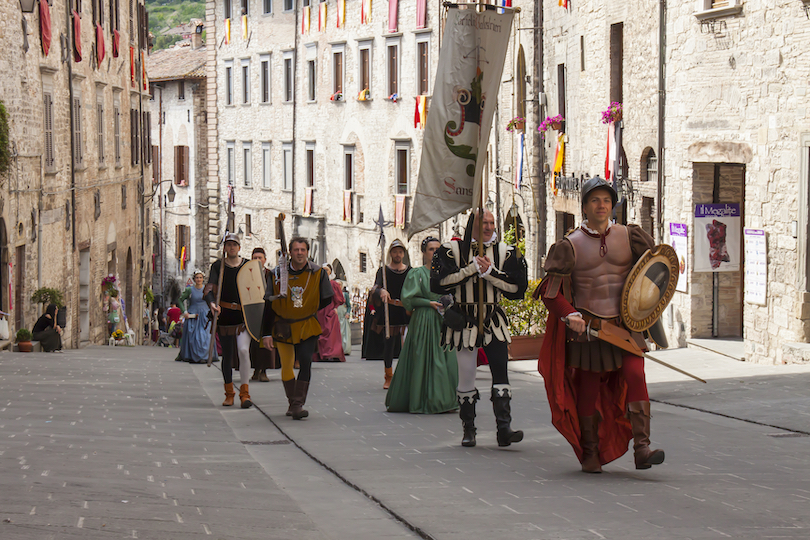
Gubbio is a medieval town in north-eastern Umbria. Despite being so close to Assisi, it’s surprisingly set off the main tourist track. Surrounded by avocado countryside and connected to Mount Ingino via a scenic cableway, this hillside Italian town is undeniably magical. When it comes to authenticity, architecture, and atmosphere, Gubbio has it all.
Dating back to pre-Roman times, Gubbio is one of Umbria’s oldest towns. The town center is a pleasing mix of medieval, gothic and Renaissance architecture built from grey limestone. It’s known as the “City of Fools” because you can obtain a “madman’s license” (and Eugubina citizenship!) by merely circling the small fountain in Largo Bargello three times.
Start with a visit to the Gothic Consoli Palace. Built in the 1300s, it’s now one of the town’s most prominent icons, home to the “big bell” and the seven Eugubine Tables, dating back to the 3rd-century BC.
Other must-do activities include a visit to Gubbio Cathedral with its 16th-century paintings and baroque chapel, the 15th-century Dukes Palace, the 1st-century AD Roman ruins just outside the city walls, and a cable car ride up to Basilica of Sant’Ubaldo. Ranghiasci Park, set along the old walls, offers one of the best views of Gubbio!
While you’re here, fill up on dishes cooked with white truffles and brustengo – fried bread served with meat, onion, and rosemary. Leave room for the local dessert – the Ganascioni of the Sisters of St. Lucia, which are served with Barcarolle (barley coffee and anisette).
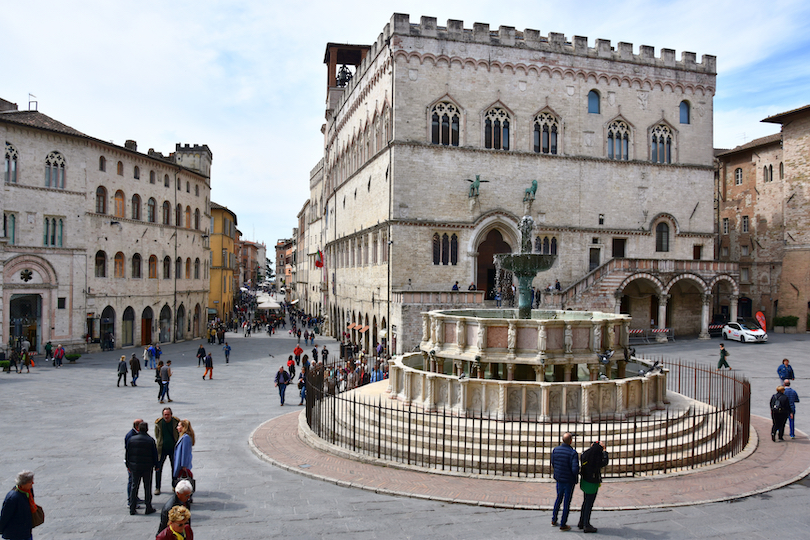
Nestled within central Umbria, Perugia is the region’s thriving capital. This picturesque Etruscan town is charmingly medieval, with a backdrop dominated by Italy’s largest fortress, the Rocca Paolina. Believed to be older than Rome, Perugia definitely lives up to its steadfast reputation.
Explore Perugia’s attractive center overflowing with Etruscan ruins, including the third-century Sorbello Well. Visit Piazza IV Novembre, where the Fontana Maggiore fountain forms the centerpiece.
Other sights include the Italian art museum, La Galleria Nazionale dell’ Umbria, the church of Sant’Angelo and the monastery of Sant’Agnese. You’ll also find the Universita per Stranieri, an excellent Italian language school, as well as the first wine school in the world in Perugia!
As if all that wasn’t enough to tempt you to Umbria, Perugia is also the ‘Chocolate Capital of Italy.’ It’s home to world-famous chocolatier, Perugina, creators of the legendary Baci chocolate kisses. Visit in October and immerse yourself in the Euro Chocolate Festival with its theater and music performances, cooking demonstrations, and chocolate art exhibitions!
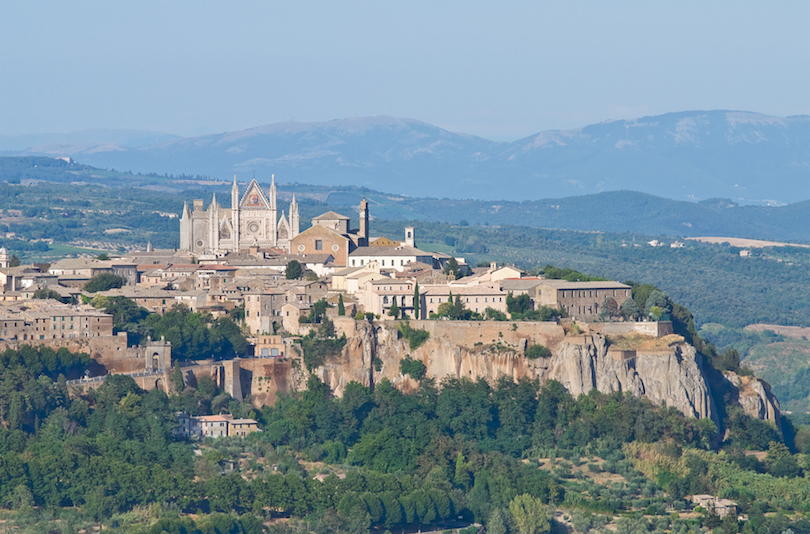
Perched dramatically on top of enormous tufa cliffs, the hillside town of Orvieto is picturesque. Easily reached by train or car, it’s the perfect day trip from Rome . But, there’s so much to see and do that you should allow plenty of time.
Dating back to Etruscan times, Orvieto is split in two: the old-town hilltop and the new town at the base, connected by escalators and elevators, as well as a cable car (the most scenic form of transport).
Sprinkled with ancient monuments, tombs, a necropolis, and a network of underground passageways dating back to the Middle Ages, there’s much to uncover in this hillside town. Visit the 16th-century Saint Patrick’s Well with its historic spiral staircase, discover ancient artifacts inside two archaeological museums, explore the Albornoz Fortress, and admire the Gothic Duomo Cathedral with its glittering, mosaic-adorned façade and impressive frescoes.
Sightseeing and history lessons aside, Orvieto is everything a typical Italian town should be – quiet, unassuming, and blissfully traffic free. It’s a popular location for shopping, wining, and dining.
You can browse local handicrafts and ceramics along Via del Duomo and explore the nearby vineyards for the finest Classico wines. Whatever you do, don’t leave without admiring a view of the Umbrian valley from the Torre del Moro!

Assisi is a captivating commune. With its medieval streets, sacred shrines, entrancing churches, and a spellbinding castle, it’s no surprise it’s Umbria’s most famous town for tourists and pilgrims alike. It was the city where Italy’s Patron Saint, St. Francis, lived and prayed, so it’s a spiritual experience for many.
Admire the views from the fortress of Rocca Maggiore and get great shots of Basilica di Santa Chiara and Santuario San Damiano. The two-thousand-year-old ancient Roman Temple of Minerva is also a fantastic photo opportunity.
Take a moment to reflect at Eremo delle Carceri, where St. Francis prayed in isolation. Explore the Roman Forum, stroll along Via San Francesco, and see St. Rufino Cathedral, the church dedicated to Assisi’s Patron Saint, Rufino, which is home to the 12th-century crypt of Basilica Ugoniana.
You’ll need plenty of time to uncover all of Assisi’s hidden finds – they vary from Roman ruins and medieval sites to countryside walks along the alpine trails of Monte Subasio. Get a taste of local history and culture with a visit to the 13th-century Romanesque and Italian Gothic Basilica of St. Francis, which consists of two parts – the lower and the upper church. It’s here that you’ll find St. Francis of Assisi’s final resting place.
Map of Umbria, Italy
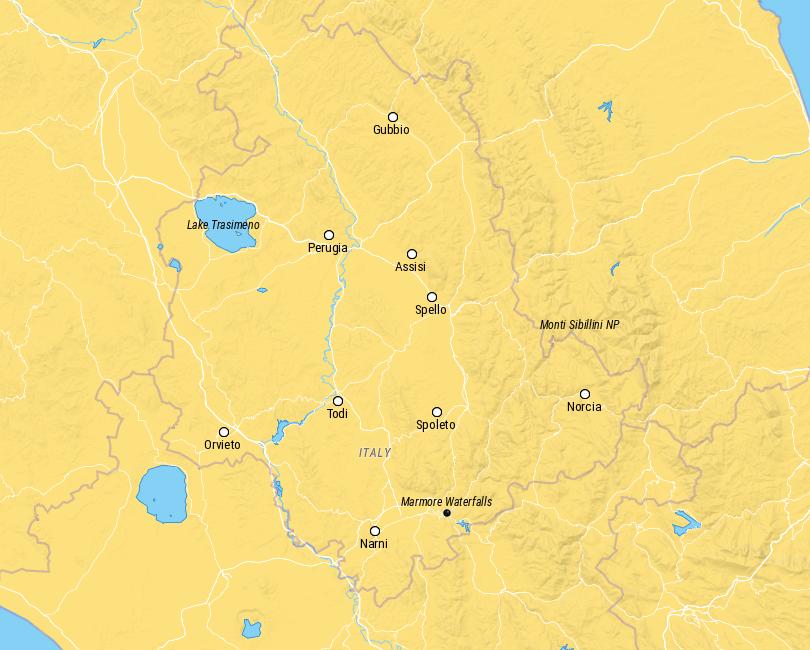
Share this post:
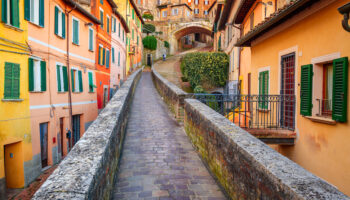
17 Best Things to do in Perugia, Italy
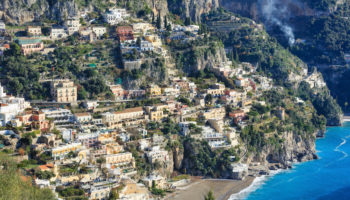
9 Best Day Trips from Naples
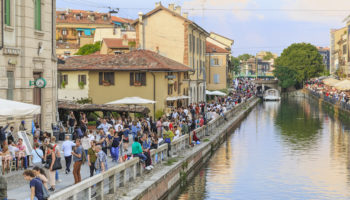
Where to Stay in Milan: Best Neighborhoods & Hotels
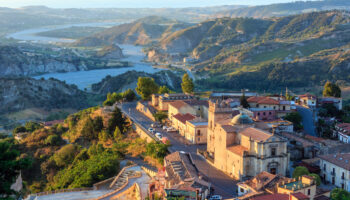
12 Best Places to Visit in Calabria, Italy
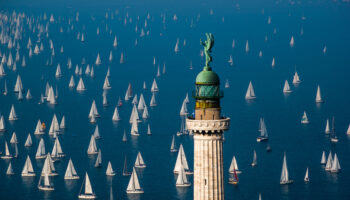
18 Best Things to do in Trieste, Italy
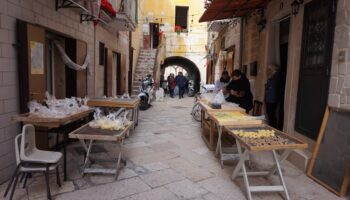
14 Best Things to do in Bari, Italy
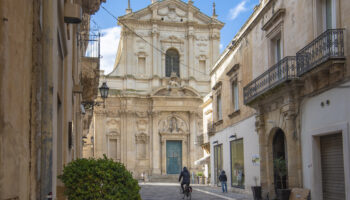
17 Best Things to do in Lecce, Italy
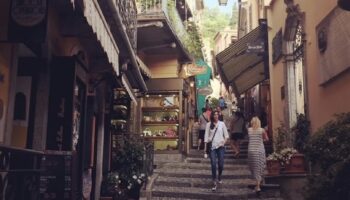
My Lakeside Love Affair with Lake Como: Villas, Vistas and Tranquil Bliss
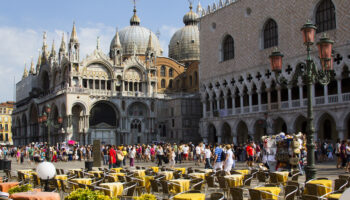
23 Best Places to Visit in Italy
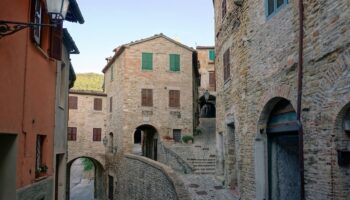
14 Best Places to Visit in Marche, Italy
Reader interactions, leave a reply cancel reply.
Your email address will not be published. Required fields are marked *
This site uses Akismet to reduce spam. Learn how your comment data is processed .
Umbria Travel Guide: everything you need to know
Bordering the regions of Tuscany, Marche and Lazio, Umbria is a luscious green paradise in the centre of Italy. The region is full of natural diversity with its hilly and mountainous landscapes, lakes, waterfalls, and natural pools. It’s also known for its well-preserved and historic medieval towns that still hold on to its ancient culture and folkloric traditions. There is much to discover here which is why we’ve prepared an Umbria travel guide to help you navigate the green heart of Italy!
What is Umbria?
Umbria is an Italian region located in the centre of the country. Surrounded by the beautiful Appennine mountains, Umbria is the only region in central and southern Italy with no access to the sea, but this takes nothing away from its beauty!
The region got its name from an ancient tribe who used to populate this area, called the Umbri , ancient pre-Etruscan people. Known for its ancient Roman monuments and artifacts, Umbria is also home to architectural glories from the early middle ages with its stunning historical cathedrals in Assisi and Orvieto, palaces in Todi, Perugia and Gubbio. During the Renaissance, the region was home to the Umbrian school of painting churning out masters such as Perugino and Pinturicchio.
The Tiber River is the most important river in the centre of the peninsula, running about 400 kilometers through a long valley from Tuscany through Umbria and Lazio to the Tyrrhenian Sea. The largest lake in Umbria is Lake Trasimeno, which is fed by small streams, that have an artificial outlet constructed in the 1980s that flows into the Tiber. The region’s landscape is hilly, has river valleys and plains.

Getting around Umbria
The Italian peninsula is made up of thousands of settlements of small towns and hamlets, known as “ borghi “, that are usually located in remote areas and in the thick of local greenery, and some still have traces of their fortified walls from centuries ago. The region of Umbria is no exception, as many fortified towns flourished during middle ages.
Go by public transport in Umbria
While its history plays a key role in Umbria’s contemporary charm, it also makes getting around the region not as easy if you’re not driving your own car.
The public transportation in the region is operated by Ferrovie dello Stato , Italy’s national train company. This includes urban and suburban buses, trains, navigation services, and alternative mobility.
While you can technically check every line and timetable on their official website , there is no map there so it’s quite tricky to have a good overview. We recommend using the train line for finding the best route and booking your bus/train. A third-party service like rome2rio or google maps itself is also a good option to find the best public transport for your destination.
Tickets for a suburban bus cost from €1.30 EUR ($1.33 USD) (up to 7km) to €8.60 ($8.80 USD) (until 110km). You can check bus prices here . You can also buy your ticket on the bus by asking the bus driver, for an additional fee which is usually under €1 EUR ($1.02 USD).
If you’re travelling to Umbria from a major city in a nearby region, like Rome or Florence, check out different regional train options and prices with the handy Trenitalia website or app . In Italy, if you buy train tickets (print versions) at the station you will need to validate them before you get on the train by punching it in the little machines on the wall by the trains. Otherwise, you can make your life a bit easier and download the train app and get your tickets online. On the train when the controller comes to check your ticket, just show the online ticket.
To save on money, you can select regional trains tickets that are not direct. Tickets for the regional train start at €7.75 EUR ($7.80 USD). If you get tickets ahead of time, you can get economy tickets and avoid paying more.
Go by car in Umbria
RENT A CAR: There are several car rentals in Umbria, most of which are located in Perugia, Spoleto, Terni, and Assisi. A small car goes for about €28 EUR ($29 USD)/day during low season, while you should expect prices to go up during busier months.
A good website to find the best rental cars is happy-car.it , which compares all the different car rentals.
There is also the option to get a car rental with a driver included, which is called “ Noleggio con conducente ” or “ NCC ” in Italian. Below is a map of some car rentals and NCC in Umbria.
DRIVING IN UMBRIA: Getting around Umbria by car is relatively easy . There are no tolls in the entire region, with the exception of the small part of the A1 highway that connects Florence to Rome, and that crosses Umbria near the town of Orvieto.
Therefore, all highways are free and they connect all the region’s major cities. Some of the smaller towns might be more remote, but they’re all relatively easy to reach.
🅿️ PARKING RULES: When you see blue lines , it means you have to pay to park your car there. You can usually park at the little machines on the walkways or near the parking. While some of these machines accept cards, most don’t, so it’s always a good idea to keep some coins at hand. White lines generally mean that parking is free unless it is specifically indicated by a white rectangular sign under the blue “P” sign. The white sign usually indicates 1 hour and it refers to the use of the parking disk. This is usually only needed during working days and working hours.

Best time to visit Umbria
Umbria is a region that can be visited all year round. The busiest times include weekends of spring, autumn and summer. Yes, you may think that most people would avoid visiting Umbria during its hottest months, as it is a landlocked region, but there are many activities and things to do here in this season.
SPRING AND AUTUMN: Spring (March to May) and Autumn (September to November) are usually the best time to visit Umbria. Temperatures are moderate, days get longer and you’ll find the best conditions to explore Umbria’s small towns.
SUMMER: Summertime (June to August) is a great but busy time to explore the region. Summer is also the time when temperatures are the hottest. In fact, the maximum temperature in Perugia reached 39°C (102.2°F) in August 2021, with several peaks of 37°C (98.6°F) even in July. On the other hand, this type of weather is great for some outdoor activities like canyoning, rafting, hiking, visiting the caves and more.
WINTER: Winter months (December to February) are the coldest and rainiest months. Temperatures go easily below zero, with snow that falls regularly in the region, especially in the more mountainous areas.
Overall, the best months to visit Umbria are April , May , June , and September .

Umbria Travel Guide: Top things to do in Umbria
Umbria is a region that offers so many different activities, most of which you probably had no idea you could do here.
TOWNS & HISTORY: If you’re a fan of Italy’s history and small-town medieval vibes, Umbria is the place to go. Like Tuscany, Umbria features many charming towns that are waiting to be explored. Places like Assisi, Spello, Corciano, Castiglione del Lago, Piediluco, Città della Pieve, Bevagna and many more are a concentrate of Italian history and culture. And don’t miss Rasiglia, the small Venice of Umbria!
FOOD: The food scene in Umbria is great. While most people associate Italy to just pasta and pizza, each area has actually its own traditional dishes which are very different from the ones from other Italian regions. Umbria features many incredible delicacies, which you should definitely try. Read more about it below .
LOCAL PRODUCTS: The region is famous for its pottery, with its major centres being located in the so-called Pottery Road, which links Deruta to Orvieto. Umbria is also famous for its lentils production, porchetta (roast pork), olive oil, truffles, cured ham and wine.
NATURE & EXTREME SPORTS: Umbria has it all. The region is home to one of the world’s highest man-made waterfalls, and the mointainous area near Norcia is a great place for hiking. Additionally, the Nera River is a gorgeous spot for kayaking, rafting and canyoning, while the Monte Cucco area is well-known in Europe amongst fly enthusiasts for hang gliding and paragliding.
Are you ready to have some fun?
FESTIVALS & EVENTS: Each year, the region of Umbria hosts several events and festivals. Perugia, Umbria’s capital city, is home to Eurochocolate , one of the largest and most assorted chocolate exhibition that attracts all the chocolate lovers from Italy and abroad. The town of Gubbio sees its main festival in the Corsa dei Ceri , a race and celebration that attracts thousands of people each year.
When it comes to music, each summer (usually in July) Perugia hosts the Umbria Jazz Festival , which is one of the most important jazz festivals in the world and has been held annually since 1973. The Umbria Jazz Winter Festival takes place annually in December/January in Orvieto. Spoleto is where the Festival dei Due Mondi happens. This is an annual summer music and opera festival which is held each June to early July, since 1958.
Bevagna is home to the Mercato delle Gaite , one of Italy’s most interesting medieval festivals which we wrote about in this article.

Read more about the Best Things to do in Umbria in our detailed guide.
🗺️ HOW TO USE THIS MAP: Click the top left icon to get more info about this map. Use the star icon next to the title to save it in your Google Maps account. To view it on your phone or computer, open Google Maps, click the menu button, then go to “ your places “, tap on “ maps ” and you will see this map on your list.
Where to stay in Umbria

Umbria is a landlocked region, surrounded by Marche, Lazio and Tuscany. Perugia , Umbria’s capital city, is located in the centre of the region and it’s a good option to explore around. Here you will find many great deals like B&B Luce Riflessa (from €60 EUR/night), B&B Il Bacio (also from €60($60.20 USD)/night), Casa Stella and the lovely A Casa di Mamma Rosy .
Towns like Assisi, Spoleto, Foligno and Terni are also solid alternatives to use as a base, while you can even opt to stay in a smaller town like Bevagna, Todi, Orvieto or in the countryside for a more local authentic experience.
ON A BUDGET: The only hostels in Umbria are found in Perugia ( Little Italy Bouitque and Perugia Farmhouse Backpackers ), in Assisi-Bevagna ( Ostello Bello ) and in Foligno ( Palazzo Pierantoni – Ostello di Foligno ). A bed in a shared room however costs €20 EUR ($20.10 USD) per night, and there aren’t many hostels available, so we’d suggest only opting for hostels if you’re travelling alone or you go for its vibes.
In fact, there are several accommodations that offer basic double-bed rooms for as low as €40 EUR ($40.15 USD)/night, which is the same cost per person as a bed in a hostel if you’re not travelling solo. These budget-friendly options can be found all across Umbria, check the map below for more details.
STAY AT A TYPICAL AGRITURISMO: Agriturismo is an Italian word that combines “agri” (agriculture) and “turismo” (tourism). It basically refers to a farm that produces its own products which are also designed to receive guests. They usually feature beautiful views, a quiet atmosphere, and a pool, as well as amazing food.
You can also visit an agriturismo solely for lunch or dinner, you don’t need to stay there in order to eat there. Also, you could also visit an agriturismo only for their pools: some of them, in fact, offer a daily pass which you can purchase to enjoy their services.
Here are some of our favourite agriturismos – listed at a reasonable price – in Umbria:
Country House Carfagna: Located near Assisi, Country House Carfagna has some of the best reviews on booking.com and it only costs around €80 EUR ($80.30 USD)/night for a double bedroom.
Agriturismo Le Dolci Colline: A double room in this beautiful agriturimos costs about €110 EUR ($110.50 USD)/night. Agriturismo Le Dolci Colline is totally immersed in nature, near the main cultural and artistic centers, Assisi, Gubbio e Perugia. A secluded place but only from noise, smog and stress.
Fattoria Il Bruco: Being just 9km south of Perugia, Fattoria il Bruco is amazingly located. This structure has also great value for money, as a room only costs around €88 EUR ($88.40 USD)/night.
See more beautiful agriturismos and country houses here: agriturismos in Umbria .
LOOKING FOR SOMETHING UNIQUE? Check out Castello di Reschio , an enchanting castle nestled in the hills between Umbria and Tuscany.

Useful Apps and websites
Trenitalia is the official Italy train company. Check out their website to find train rides in Umbra. Other useful websites to book trains are The Train Line ( thetrainline.com ) and Italia Rail ( Italiarail.com ). Use Rome2Rio ( rome2rio.com ) to find the best route before searching for a ticket.
Looking for a bus ride? Check out Omio ( omio.com ), or search for your bus timeline on FS Bus Italia ( fsbusitalia.it ). Alternatively, check out BusBud (busbud.com). Also FlixBus ( flixbus.com ) operates in Italy, and it’s a solid option to reach Perugia from other Italian regions on a budget.
If you’re running out of options you can always check Bla Bla Car ( blablacar.co.uk ) and see if anyone’s going by car to your same destination, and share the ride with them.
For accommodations in Umbria and Italy in general, most accommodations are listed on Booking ( booking.com ). Our favourite filters for booking.com in Umbria are the following: very good (8+), max price < €70 EUR ($70.30 USD)/night (per double room). If you have a car, we would also recommend adding “Farm Stays”, “Swimming Pool”, “Country House”, “Bed and Breakfast” and “Lodges” to your filters. Then, order the results either by “Price (lowest first)” or “Best reviewed and lowest price”, and enjoy your cheap but gorgeous accommodations.
The best offline map for hiking in Umbria is Maps.Me ( maps.me ). With maps.me you can download map for the whole region beforehand and have a trustworthy device in your pocket, so you’ll never get lost. Maps.me also helps you to find water sources on your treks. All Trails ( alltrails.com ) is another app that is fairly used in the region.
Fancy a glass of wine? Download Vivino ( vivino.com ), an app that allows you to take a photo at any wine bottles and learn more about it.
Is Umbria expensive to visit?
Umbria is not particularly expensive to visit, especially when compared to other, more popular tourist destinations in Italy like the Amalfi coast for example. However, Umbria is also not very backpacker friendly as central Italy does not have many hostels and getting around may be a bit troublesome if you don’t have a car.
ACCOMMODATION
The price for sleeping in Umbria varies a lot depending on the type of accommodation. When we talk about hostels, a bed in a shared room costs about €20 EUR ($20.10 USD) per night per person. If you’re a couple or you’re travelling with friends there are plenty of options at €40 EUR ($40.15 USD)/night for a double bed room, which is about the same price.
FARM HOUSES & AGRITURISMI : You will find the most charming options in the local farmhouses on the Umbrian hills. While it might sound fancy at first, you can find awesome deals at €50-60 EUR ($50.20-60.20 USD)/night for a double bedroom in a beautiful countryside villa, which often comes with an outdoor pool.
CITY STAYS: Staying in Perugia or in the other Umbrian main towns will cost you about €50-60 EUR ($50.20-60.20 USD)/night for a standard double bedroom. If you’re lucky, you can find deals at around €40 EUR ($40.15 USD)/night for the same type of room even in towns’ historical centres.
TRANSPORTATION
PUBLIC TRANSPORT: Public transport in major cities is very reliable in Umbria, however, when it comes to smaller towns it isn’t always easy to understand how best to get around. A bus ticket will range from 1€ to around 10€, depending on the length of the trip.
RENTAL CARS: If you’re interested in visiting smaller towns, renting your own car is the easiest way to explore the region. The cheapest options in the low season, including insurance and taxes, are priced at around €28-35 EUR ($30-37 USD). Remember you have to add the cost of gasoline and expect to pay higher (sometimes much higher) prices in the high season.
A porchetta sandwich will cost you anywhere from 3€ to 7€. A slice of torta al testo goes for €3 EUR ($3.01 USD) to €5 EUR ($5.02 USD). While it highly varies depending on the restaurant, a pasta dish in Umbria costs about €10 EUR ($10.05), antipasti for 2 people will go for anywhere between €8 and 15€ ($8.03-15.05 USD), and the main course is usually priced at €10-15 EUR ($10.05-15.05 USD).
Expect to pay around €20-30 EUR ($20.10-30.10 USD) for a full meal at a local restaurant. This would include a pasta dish and the main course, or antipasti and a main course.
NOTE: Don’t be surprised to pay for water and to see “coperto” in your receipt. It is common to pay for the coperto in Italy, and it usually costs between €1-2 EUR ($1-2.01 USD) per person. On the other hand, it is not common to leave tips.
There are plenty of free activities in Umbria you can do in Umbria, and others that are relatively inexpensive.
For example, a visit to the Monte Cucco caves will cost you €20 EUR ($20.10 USD), a canyoning tour in the Nera River Park goes from €40-80 EUR ($40.15-80.30 USD). Access to the Eurochocolate festival costs €10 EUR ($10.05 USD) per person, while the entry to the Basilica of Saint Francis of Assisi is just €2 EUR ($2.02 USD).
If you like extreme sports, a paragliding lesson on the Monte Cucco costs around €110 EUR($110.50 USD). A ticket to the Marmore Falls, on the other hand, only costs €10 EUR ($10.05 USD).

Is Umbria safe?
Italy is generally a safe place to visit, and Umbria quite follows the trend. In fact, considering crime rate , Umbria falls among the top 5 safest Italian regions.
Where present, crime tends not to affect tourism in Umbria, with the worst scores usually referring to drug-related crimes and bribery/corruption.
Obviously, general precautions must always be taken into consideration, especially in bigger cities.
What to eat and drink
The food scene in Italy is incredibly interesting, and Umbria is no exception. When it comes to food, expect to find rustic cuisine, often called “cucina povera” in Italian. The dishes of Umbria originate from its Etruscan roots and rely heavily on seasonal ingredients such as grains, vegetables, fresh herbs, mushrooms, wild asparagus and of course its highly prized truffles.
PORCHETTA: A traditional Italian roast pork, “porchetta” is a tasty dish shared among central Italian regions. Umbria, however, is one of the main producers and consumers. It is a wonderful boneless pork roast wrapped in fat and skin and generously seasoned with garlic, sage, rosemary and other aromatic herbs and spices, which is consumed hot or cold in sandwiches.
TORTA AL TESTO: This Umbrian dish is a focaccia mixed and cooked on a cast iron plate, then filled with the best of the local cold cuts. It translates to “Cake of the Tile”, and it can be found everywhere across Umbria. It is also referred to as “ crescia ” in some areas of the region.
STRANGOZZI & UMBRICELLI: These are the most popular pasta shape in Umbria. Strangozzi and Umbricelli are often served with black truffle, with wild hare ragù or with a Trasimeno lake sauce, made from lake perch filets, shallots, garlic and chili pepper. Wild boar also dominates the menus when it comes to pasta sauces in Umbria.
CHOCOLATE: Chocolate has been amongst Umbria’s most popular products, with Baci Perugina being the most renowned one. Baci chocolates are made of fine dark chocolate filled with a chocolate-hazelnut cream center and a whole hazelnut. Each year, Perugia hosts the Eurochocolate, one of the world’s most important chocolate events.
WINE : Wine plays an important role in Umbrian production, and this is due to the region’s optimal growing conditions. Sagrantino, Grechetto and Torgiano are just some of the wines produced in the 12 DOC regions of Umbria.
CHEESE: Caciofiore, Giuncata, Pecorino di Norcia and Sheep’s Ricotta are just some of the several types of cheese produced in Umbria.
NORCIA HAM: The mountainous area of Norcia is famous for its ham production. Norcia ham (or Prosciutto di Norcia) is produced in the Valnerina area, which confers to this ham some distinctive flavours thanks to its particular climatic conditions. It is said that good prosciutto needs to have at least ‘experienced one Winter and one Summer’.
TRUFFLE: You can’t leave Umbria without having experienced a truffle dish, or even better, a full truffle meal. In fact, truffle plays a key role in Umbria’s culinary identity, with black truffle being the most typical one.

How long should I stay?
Seeing everything Umbria has to offer is no easy task. Perugia itself would need at least a couple of days to be fully explored, while the region overall – even though it seems tiny on a map – is bigger than it looks. The good news is that most places listed in our things to do in Umbria post are relatively easy to visit and you can squeeze a few of them in the same day.
For us, we would say that 7 days would be the bare minimum duration if you really want to experience the essence of this region. Consider staying longer if you can.

Best tips to visit Umbria
- If you’re going by public transit, plan your trip in advance, especially if you’re planning on visiting more than one place in a short amount of time. It isn’t the easiest region to around with public transit.
- Pack a swimsuit and towel in case you come across a beautiful natural pool along your visit in the thick green landscape of the region.
- When visiting small towns, ask if they have a local museum or check out their churches for impressive frescoes that date back centuries.
Swimming with whale sharks in the Philippines – your full guide
Share your travel story.
- More Networks

Hidden Gems in Umbria, Tuscany’s Overlooked Little Sister
April 13, 2021
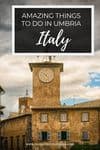
Amid poplar trees, wide lawns, forests, myths, legends, one glance at the key things to do in Umbria reveals the truth: it’s all about the food, the flavours, the character of the place. Make way Tuscany. Umbria’s time is here.
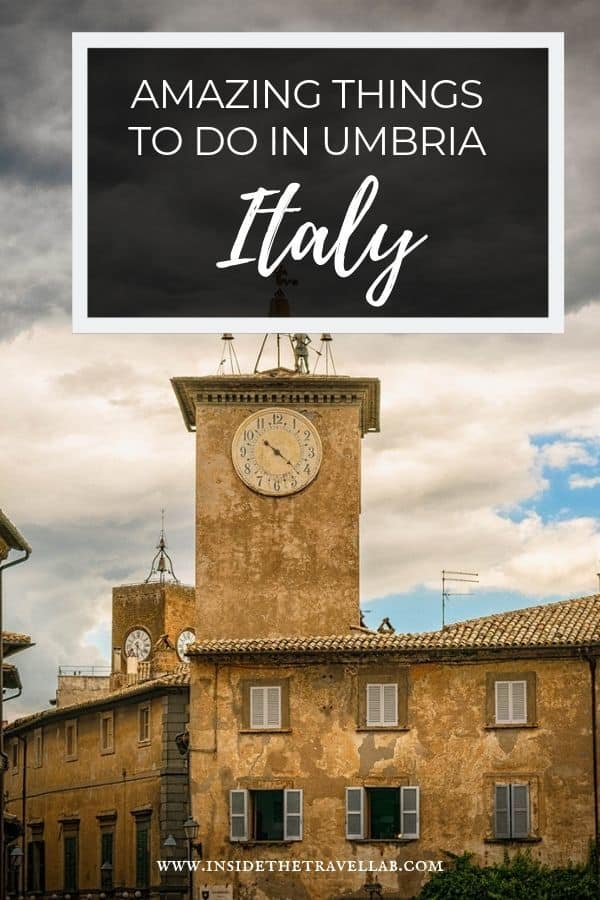
Table of Contents
The Best Things to Do in Umbria
What a difference a C makes…Cumbria is a wild, wet and wellie-wearing region in the north of England, whose damp hedgerows and fields of daffodils fired the literary imagination of Wordsworth several times over.
Umbria, on the other hand, is a fragrant, olive-soaked region in central Italy, whose soft pink stone apparently fired the literary imagination of C.S.Lewis and introduced the rest of the world to Narnia (via the real world town of Narni.)
As a Brit, I knew Cumbria far better than Umbria (in my mind a smaller, wetter, wellier version of the Cumbria with perhaps a slightly different ratio of poets to daffodils.)
How wrong I was.
Let me clear up any misunderstandings here and now by introducing you to the region of Umbria, Tuscany’s neighbour and overshadowed little sister. Umbria is the Mary to Anne Boleyn, the Dannii to Kylie Minogue, the Robert F. to JFK. Whatever you may believe about those names, Umbria certainly doesn’t deserve its place in the shadows.
Here, you’ll find the best of the best when it comes to looking for things to do in Umbria, Italy.
Things to Do in Umbria: Umbria Highlights
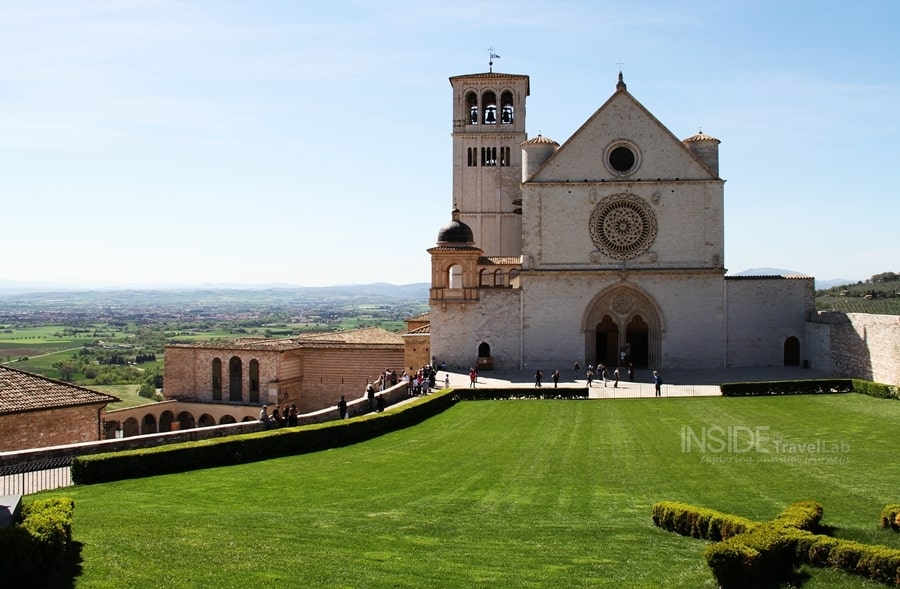
Soak in Saintly Culture in Assisi
Yes, it’s that Assisi. Home to Saint Francis and the animals (or San Francesco, if you prefer.)
Assisi is a popular destination for pilgrims in Italy, making it one of the most visited cities in Umbria.
But Francis isn’t the only patron saint in town. Assisi also calls Santa Chiara (Saint Clare) her own.
Traditional highlights include Saint Clare’s Church, St. Francis’ Basilica and the Palace “Capitano del Popolo.”
But as beautiful as the religious grandeur is, for me the highlight involved escaping to nearby Mount Subiaso and learning all about Italy’s Slow Food Movement.
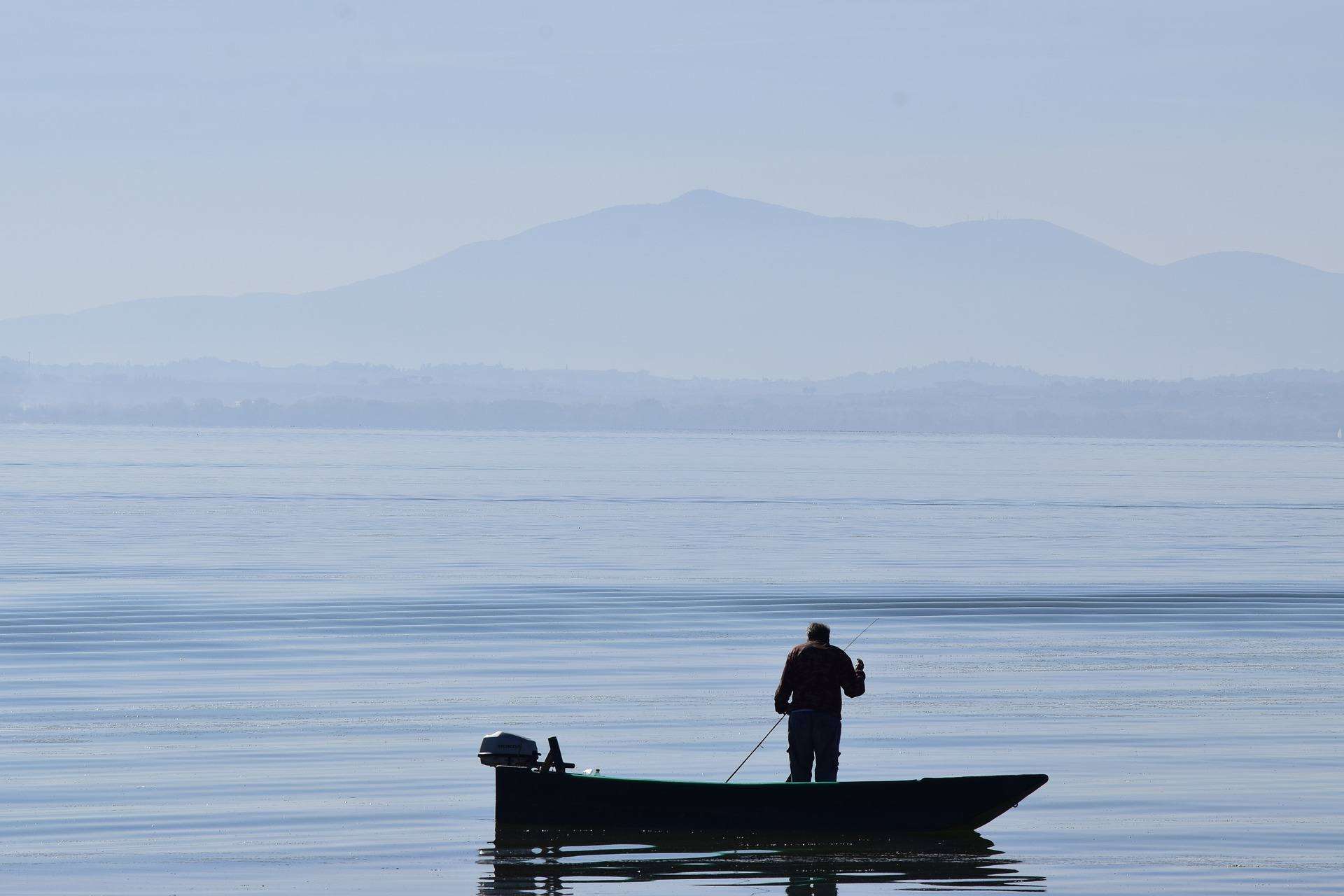
Embrace Nature at Lake Trasimeno
Lake Trasimeno, Italy’s fourth largest lake, snuggles right in to the green hills of Umbria.
Its banks sprout picturesque villages, from Castel Rigone to Tuoro sul Trasimeno, San Feliciano to Passignano sul Trasimeno and even Castiglione del Lago.
Cultural sites you can visit in this region include the ruins of the Tower of the Roman era and Guglielmi Castle.
If you love seafood, you need to try out the carpa in porchetta, a delicious meal consisting of bacon, fennel and carp baked in aromatic spices. Otherwise, near Trasimeno, seek out roasted goose and fried perch fillets.
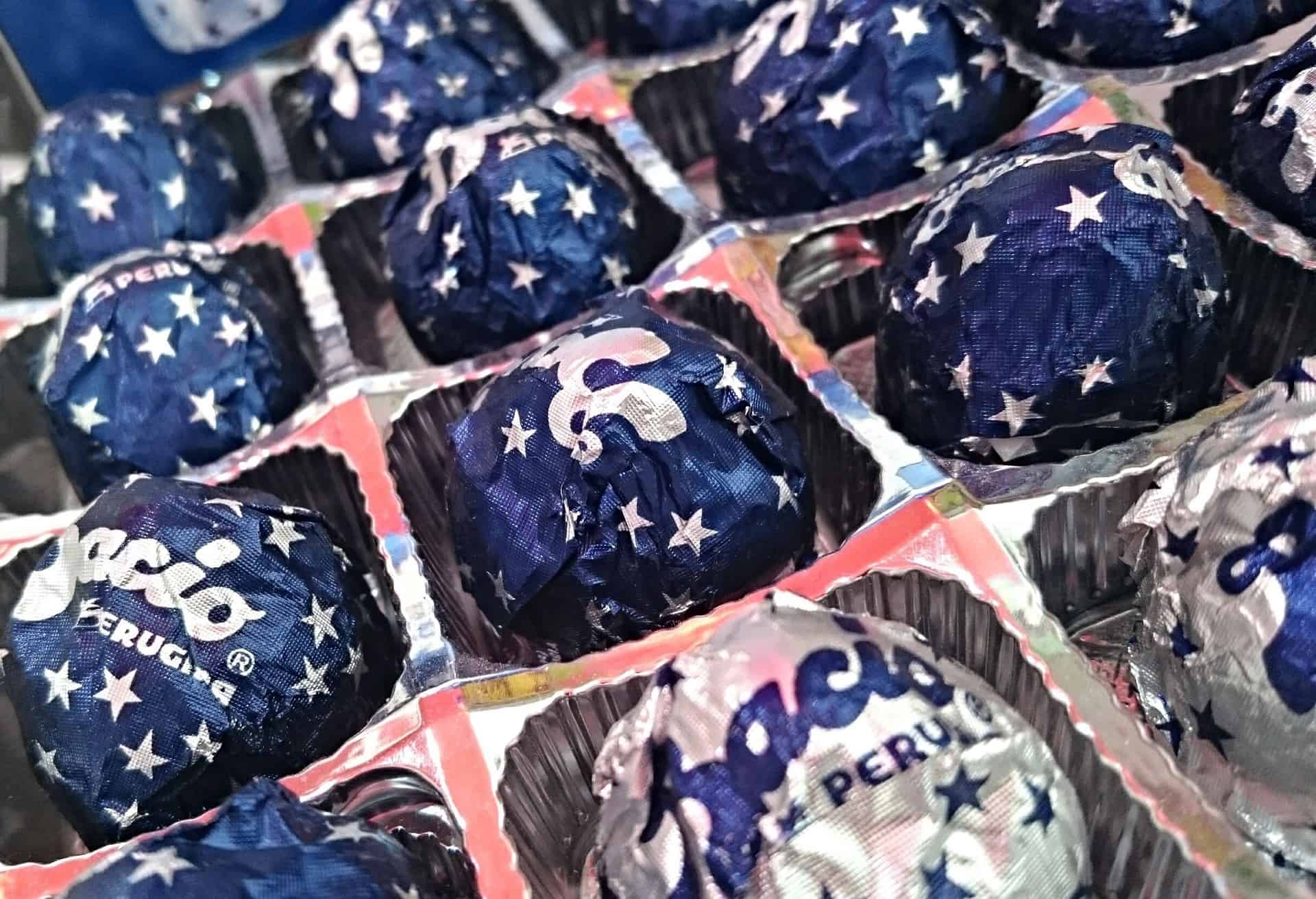
Perugia: Feel Cultured About Chocolate
Perugia swims with artistic and historical treasures on steep stony steps, spilling its secrets slowly.
Yet for all the pretty postcard streets, this is a town with a pulse and panache and that’s largely thanks to its university.
Founded by Pope Clement V in 1308, today it is the biggest university for foreigners in the whole of Italy.
Key monuments include Corso Vannucci, the Oratory of San Bernardino, the Etruscan Well (Pozzo Etrusco), and the National Gallery.
And, well, the Perugina chocolate factory on the outskirts of town. You can even learn to make your own…
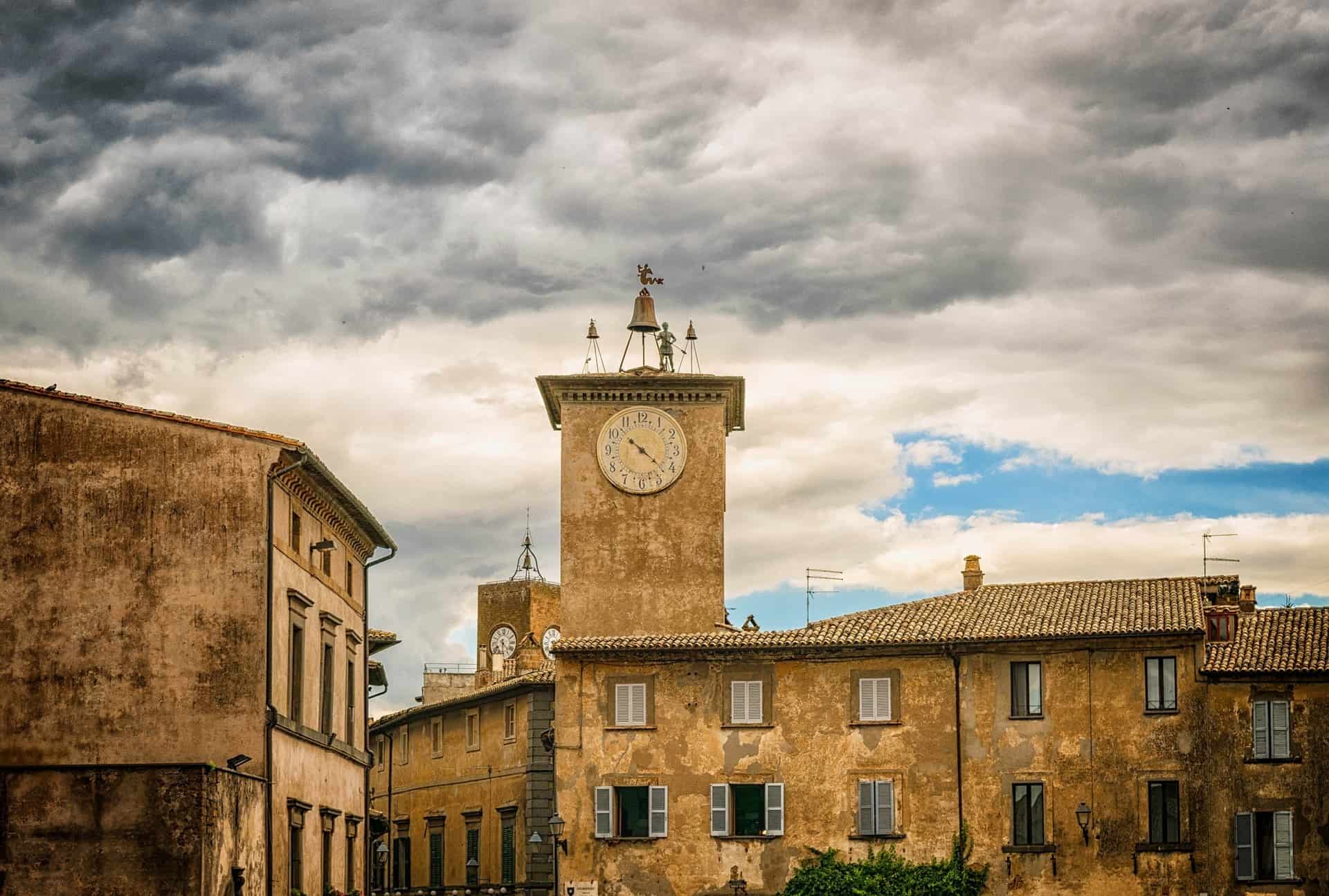
Orvieto: Subterranean Etruscan on a Rust Red Rocky Clifftop
Orvieto is one of the most ancient cities in Italy, with strong Etruscan roots, a sacking by Rome and a touch of renaissance following the Middle Ages.
Perched dramatically on a rust red volcanic clifftop, its Duomo di Orvieto isn’t shy, with zebra-like columns and mosaics and frescoes aplenty. Other key landmarks include the Chiesa di Sant’Andrea, Museo Claudio Faina e Civico and Torre del Moro.
It’s also a good spot for wine and a stroll around the medieval town centre.
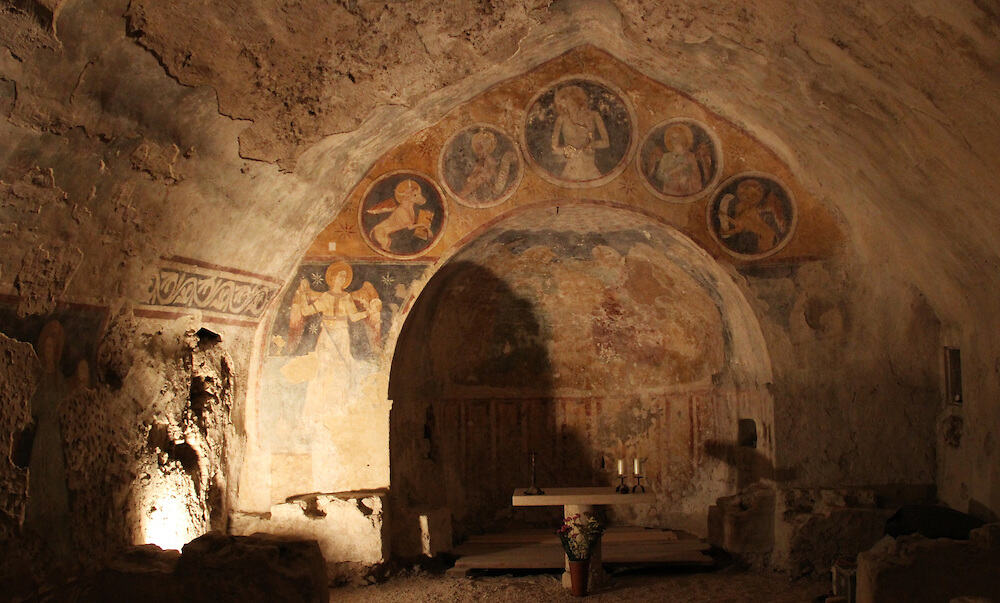
Narni: The Hamlet That Inspired Narnia
The lovely hamlet of Narni oozes with cobbled stone mystique. Located in the province of Terni, its subterranean world includes a 13th century Benedictine church, Roman aqueduct, the Holy Inquisition and a prison cell. Above land, check out the Duomo of San Giovenale and Ponte Cardona.
Once in the city, make sure you try the local pasta manfrigoli served with guanciale, fava beans and pecorino cheese.
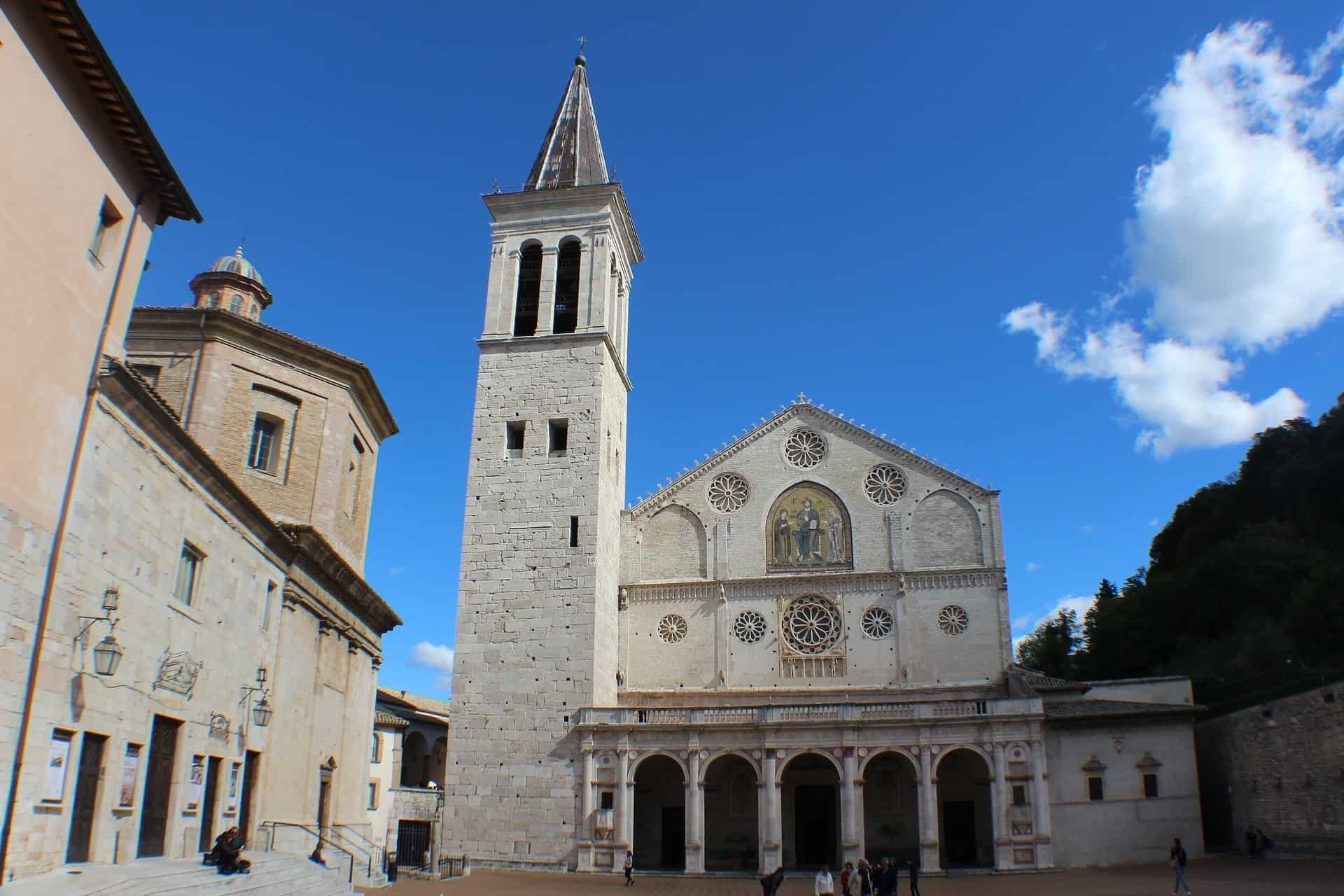
You’ll find the footprints of the Romans fresh and fearsome in Spoleto as well. Important churches, a cathedral, an imposing fortress and a roman theatre add to the sense of importance and history.
When it comes to food, Spoleto’s dishes bring meat and land products to the fore. Look for strozzapreti (umbricelli), Torta al testo, Palomba alla ghiotta and Castelluccio di Norcia lentil soup.
And, of course, olive oil.
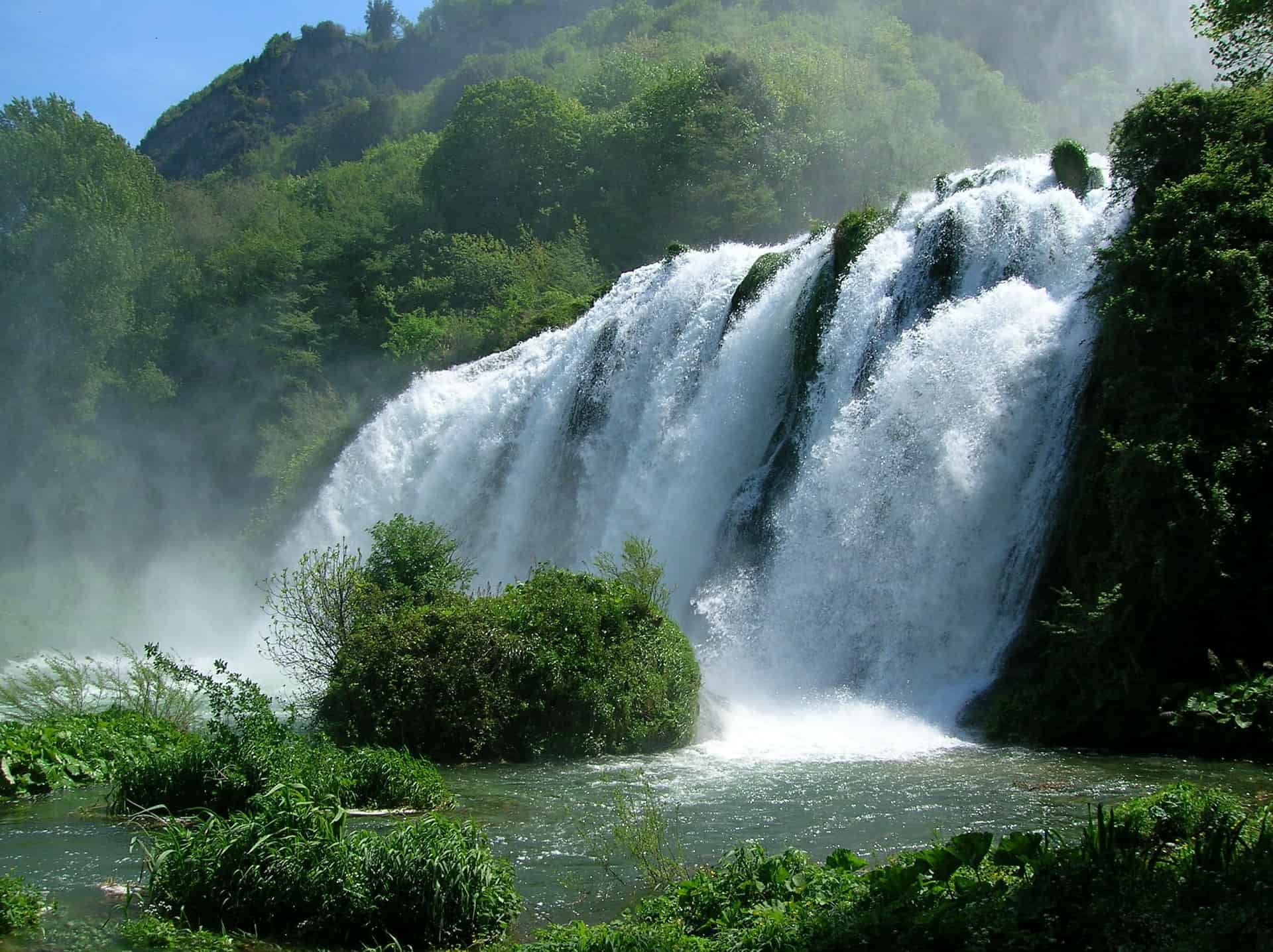
The Marmore Waterfalls
The Marmore Waterfalls or Cascata delle Marmore splash down the rocks for 165 metres in a manmade cascade. What makes them even more remarkable is that it was the Romans who made them, rather than the high-tech tools of recent engineering.
It’s a great place for a day out and one of the most intriguing things to do in Umbria, a really special attraction.
You can hike alongside the splashing water or get ready to get wet by joining in the water on a kayak or white water raft. Over to you…
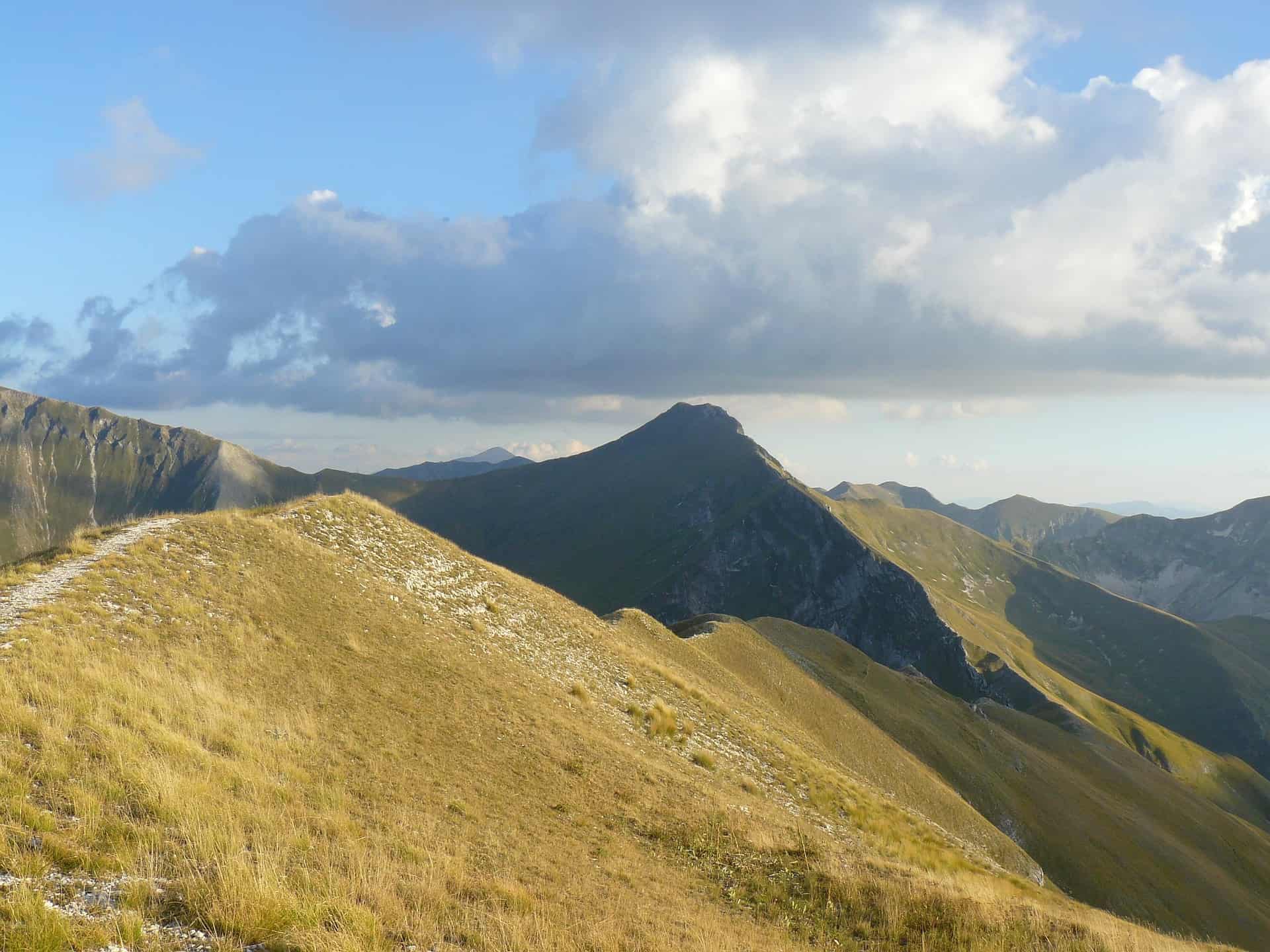
Visit Mount Sibillini National Park
For more trekking and outdoor activities, drive to Monti Sibillini National Park and roam around the highest mountains in Umbria. Monte Vettore reaches 8132 feet above the sea, yet the area exudes a mellow atmosphere more suited to gently rolling hills.
Trekking, rock-climbing, canyoning and mount biking keep visitors busy, with marked paths and trails for different levels of fitness.
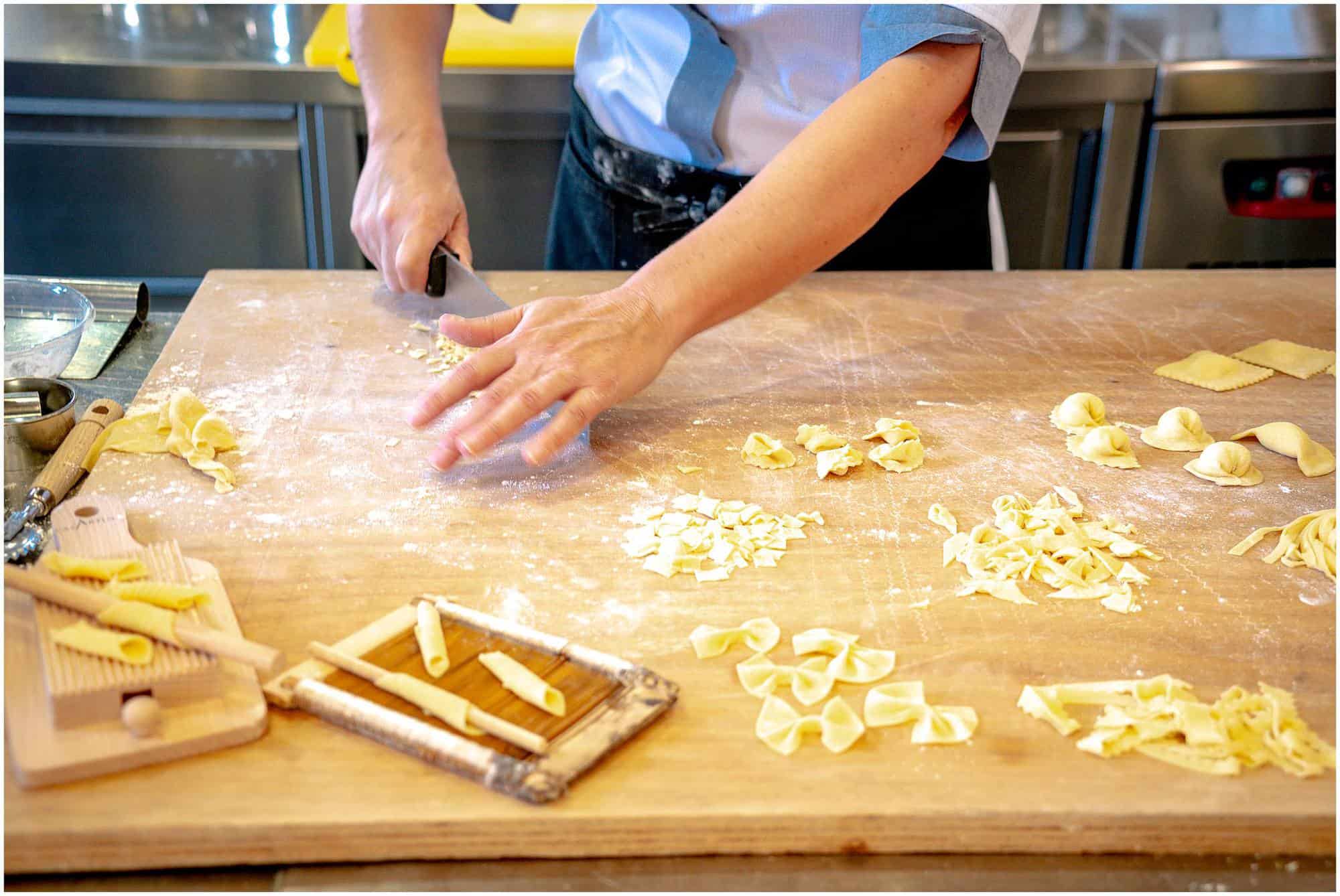
Take a Cooking Class
The hype is real: food in Italy is amazing! And it’s even more incredible to learn how to make it yourself.
Taking a cooking class is one of the best things to do in Umbria because you get to meet local people, chat to other travellers and, of course, you end up with something tasty to eat.
I loved my cooking class in the foothills of Mount Subiaso, but you can find many different cooking classes here.
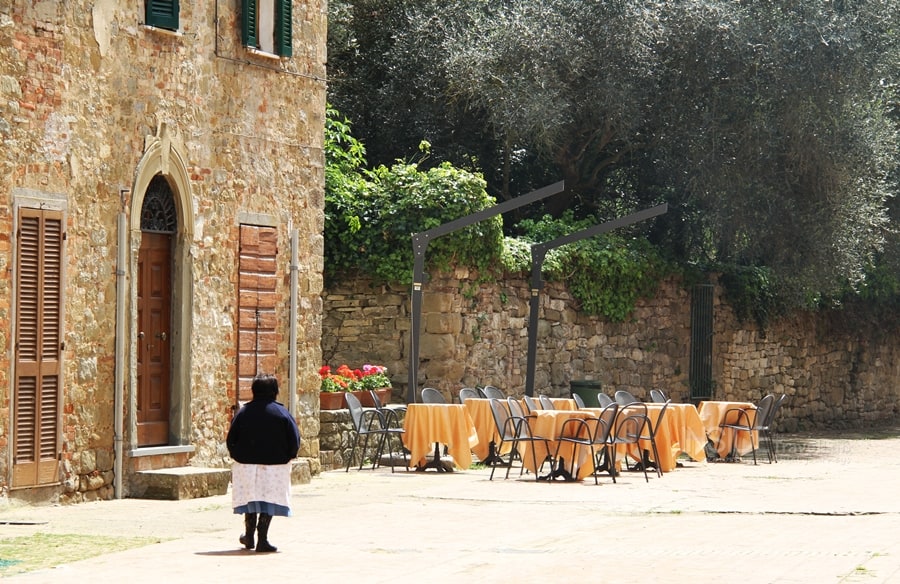
Travel Tips for Umbria
To make the most of the green heart of Italy and to explore these top Umbria attractions, you have two main options.
- Stay in Perugia and join day trips and organised tours.
- Stay in a villa and hire a car. This way, you can roam around the stunning Umbrian countryside at your own pace
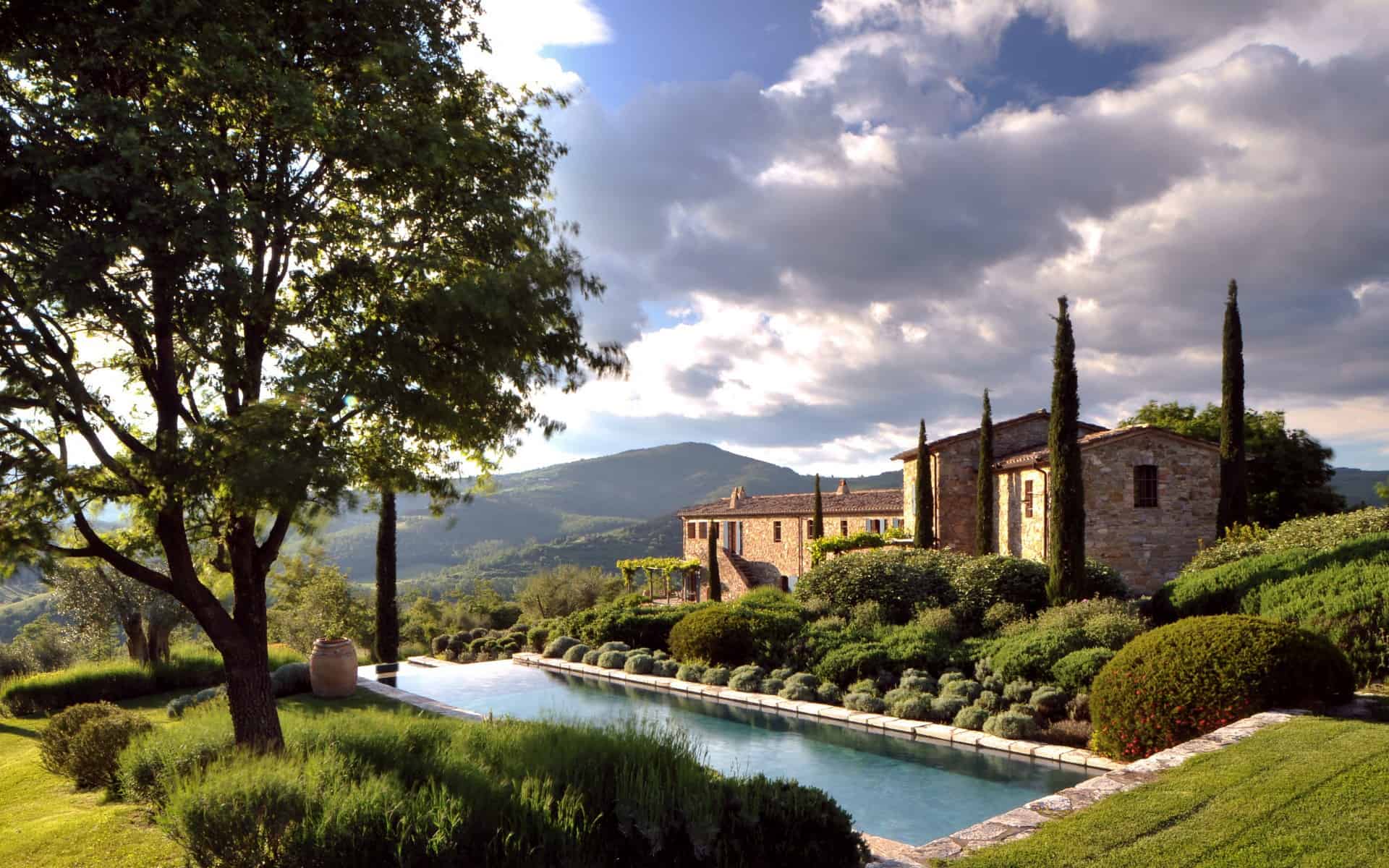
Wondering Where to Stay in Umbria? Try Home in Italy Villas
Home in Italy is an Italian based company with over 27 years experience in managing luxury villas. They handpick private residences along the Amalfi Coast, Lake Como, Lake Garda, Lazio, Marches, Portofino, Puglia, Sardinia, Sicily, Tuscany and Umbria. They even have apartments in Rome & Florence.
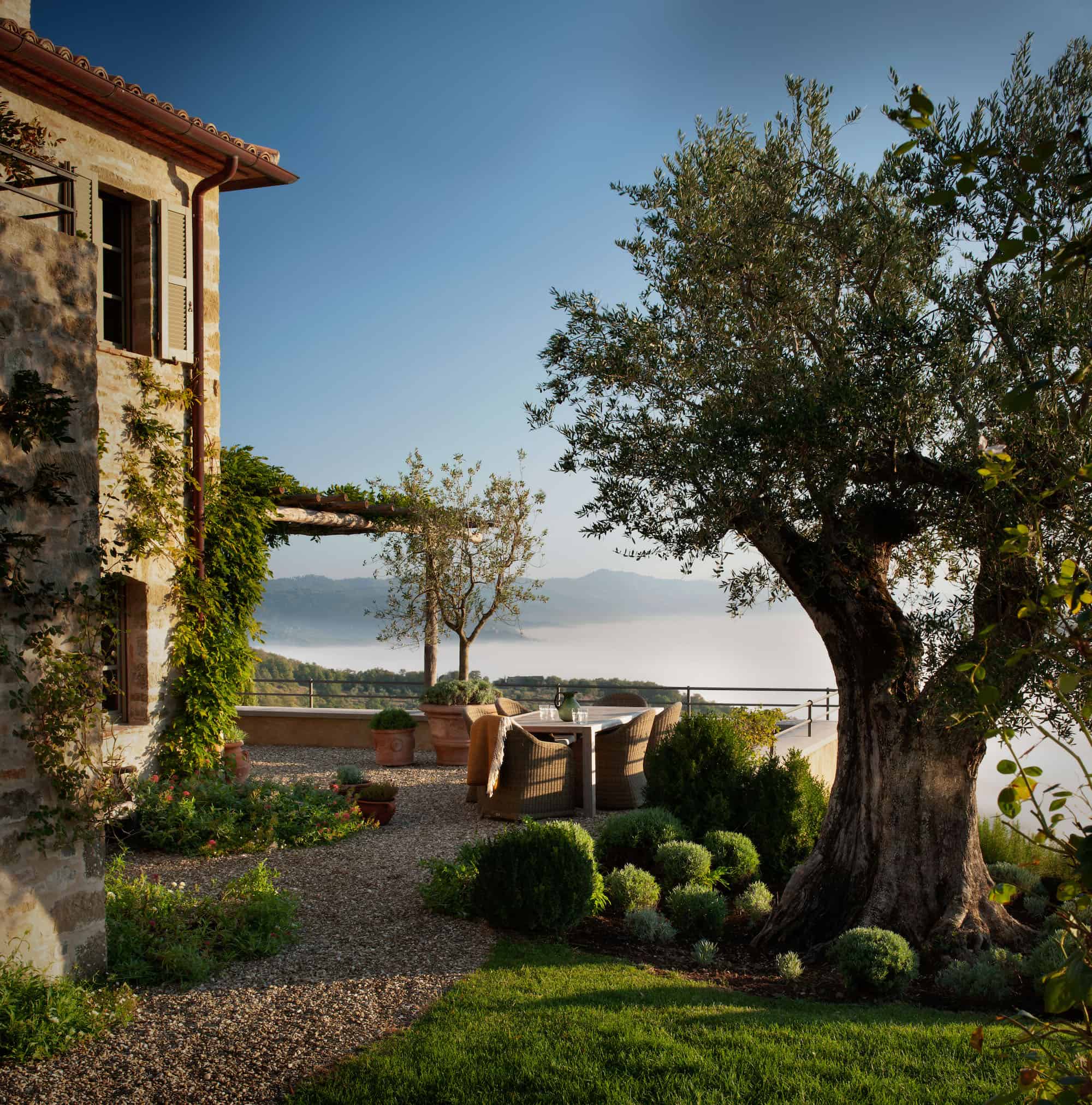
All villas are personally vetted and Home in Italy also offers a 24/7 concierge service, delivered by people who actually do live in Italy. Although, don’t panic, they speak English as well.
- Check out some of the beautiful places to stay in Umbria with Home in Italy here.
Read More About Italy
- The world knows Rimini for its beaches but what about Rimini Old Town?
- The landmarks in Italy that everyone should see at least once
- Two Presidents, No Army and a Mountain of Things to do in San Marino
- 21 Unusual Things to do in Rome That Aren’t Just Weird
- How to Make a Ragu Your Italian Nonna Would be Proud Of
- Ghosts and Grandeur: Finding Unusual Things to do in Tuscany
- Chiavenna: The Place That Makes Caves Glamorous
- Yes, You Can Still Find Secret Spots in Venice
- 7 Unusual Things to do in Italy to Fall in Love All Over Again
- With These Italian Souvenirs, You’ll Always Remember Italy
- Trieste Food Stands Out From the Rest of Italy
- It May Not Be Italy’s Most Famous Spot, But Here’s Why You Should Visit Trieste on the Border
- What You Need to Know About the Ravenna Mosaics
- The Surprise You’ll Find in Comacchio
24 thoughts on “Hidden Gems in Umbria, Tuscany’s Overlooked Little Sister”
Very funny! And I completely agree with you about Umbria. Less known than its closer sister Tuscany, and for this reason more wild, in the sense of keeping its original atmosphere.
Yes, I suppose that’s the perennial travel conundrum! I want places to be appreciated but with that appreciation comes a touch of Disneyland and swarms and swarms of tourists. And there goes the original atmosphere…
Funny that you picked up on the Cumbria/Umbria thing as well. Whenever I told anyone where I was going for the week the usual inquisitive reply was Cumbria?
Umbria blew me away with its beauty, the rolling green fields with small towns perched on hillsides.
Can’t wait to go back!
Oh Paul, thank goodness someone else understands! I had that moment just after I hit publish when I thought…Hmmm…Is this going to be one of those things that only I get?! That’s never a good thing…
Thanks so much for these wonderful photos…you really captured both the majestic and humble sides of this unforgettable region!
You are very welcome. Thank you for the invitation to see this part of the world. More to follow!
Leave a comment Cancel reply
This site uses Akismet to reduce spam. Learn how your comment data is processed .
Explore Umbria
Plan your trip to umbria: best of umbria tourism.

Essential Umbria

Trending in the forums
Umbria Is Great For
Dining experiences.

Wine Tastings

Cultural Tours

Culinary Tours

- Castelluccio
- Monti Sibillini
- Lago di Corbara
- Tempio di Minerva
- Etruscan Museum
MORE TIME TO TRAVEL
Explore new places and savor new tastes
Best Places to Visit in Umbria: A Guide for First-Timers
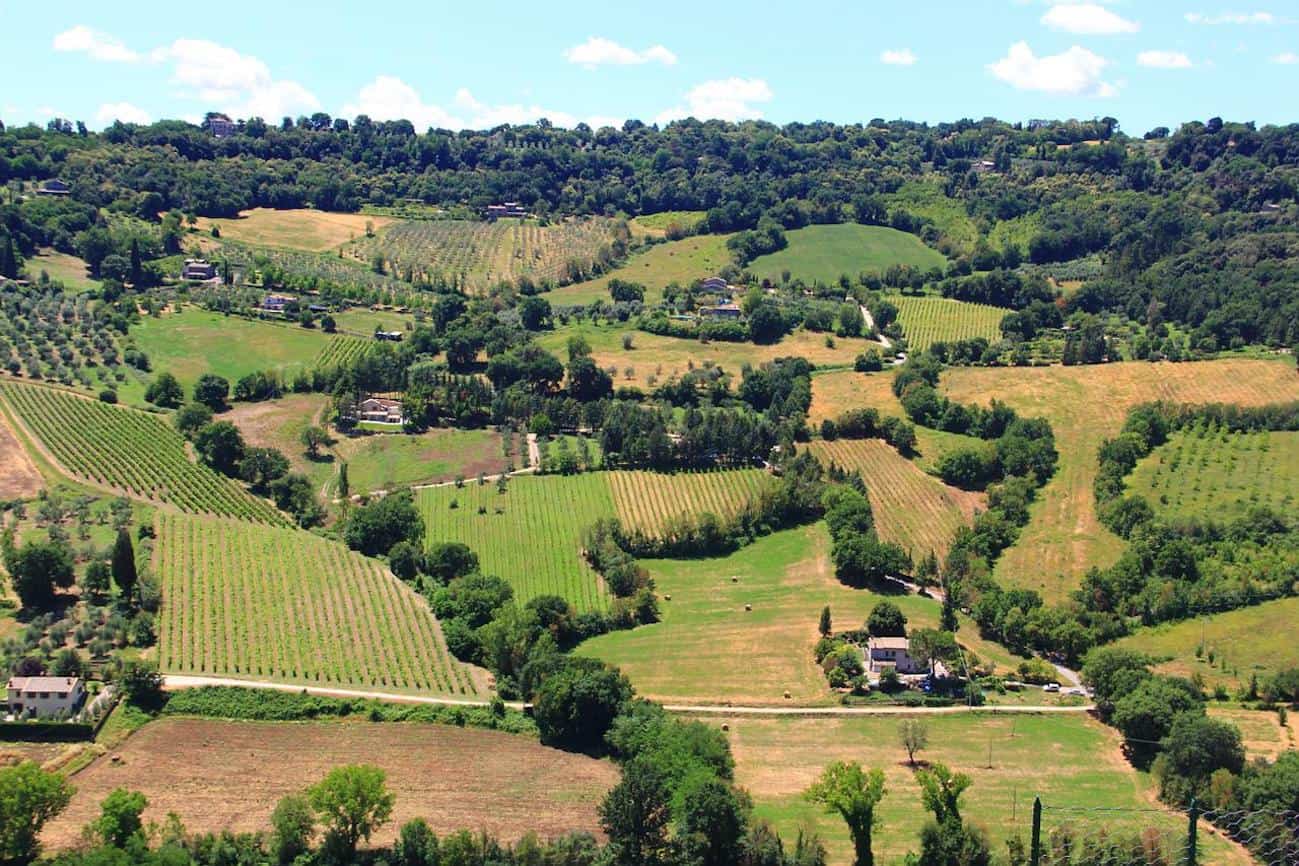
Umbria is one of the smallest regions in Italy but one that offers an abundance of things to see and do—whatever one’s interests. It has no large cities and its overall population is less than one million people.
The region hasn’t achieved the same celebrity and allure in pop culture (film, novels, lifestyle magazines) as its glamorous neighbor to the west, Tuscany.
But what. might be seen as Umbria’s “shortfalls” prove to be advantages to visitors interested in experiencing Italian art, history, culture, and cuisine.
With fewer tourists, the cities in Umbria have remained more authentic and less pretentious. With shorter distances and less traffic, it’s an easier region to navigate between cities by car. Costs of both accommodations and restaurants tend to be more affordable than those in Tuscany.
And Umbria is blessed with extraordinary natural beauty. Dominated with freshwater lakes, rolling valleys, and picturesque forests whose colors change with the seasons, the region has been dubbed Italy’s “green heart.”
Active travelers will enjoy its opportunities for hiking, trekking, mountain biking, free climbing, caving, paragliding, and canyoning.

The culinary riches of Umbria—such as truffles, local prosciutto ( Prosciutto di Norcia IGP), sausages, handmade pasta, extra virgin olive oils, mushrooms, game, and cow and sheep milk cheeses—will dazzle food enthusiasts.
The region is dotted, too, with wine estates and vineyards that offer tastings of local varietals. A hearty meal might be paired with Umbria’s most popular red wine, Sagrantino di Montefalco.
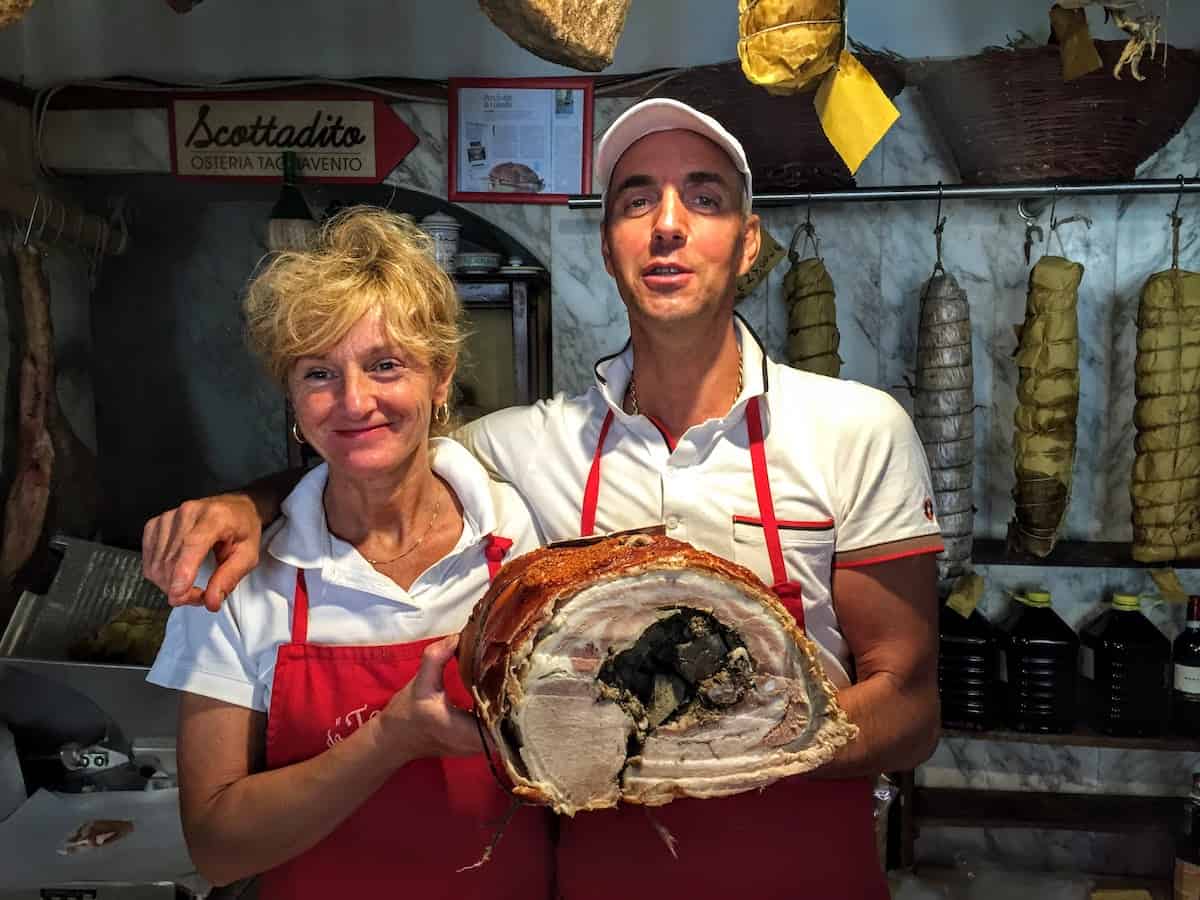
An insider glimpse into the best places to visit in Umbria
Matteo Della Grazia and Daniela Mencarelli are co-founders of Fuoritinerario: Discover Your Italy , a boutique tour company that designs personalized itineraries so visitors can experience authentic Italy.
Although their tours cover all of Italy, the company is based in Perugia, which is both a city and province in Umbria.
The couple recommended five must-see destinations for first-timers, just a sample of what this under-the-radar region has to offer. Here are their suggestions of the best places to visit in Umbria:

Perugia, the largest city in Umbria, has a fascinating old town perched atop a high cliff with steep slopes.
An escalator allows visitors to reach the top that offers breathtaking views of the facades of medieval palaces and churches as well as the Umbrian hills, depicted by Renaissance painters such as Perugino, Pinturicchio, and Raphael.
The city is home to several significant museums, including the National Gallery of Umbria, with its collection of Renaissance paintings, and the National Archaeological Museum of Umbria, which holds artifacts from Etruscan, Umbrian, and Roman civilizations.

A lively city, Perugia hosts a variety of cultural events dedicated to music, literature, journalism, and food and wine throughout the year.
Among the most popular are the Umbria Jazz Festival and the Eurochocolate Festival, inspired by the city’s historic Perugina chocolate factory.
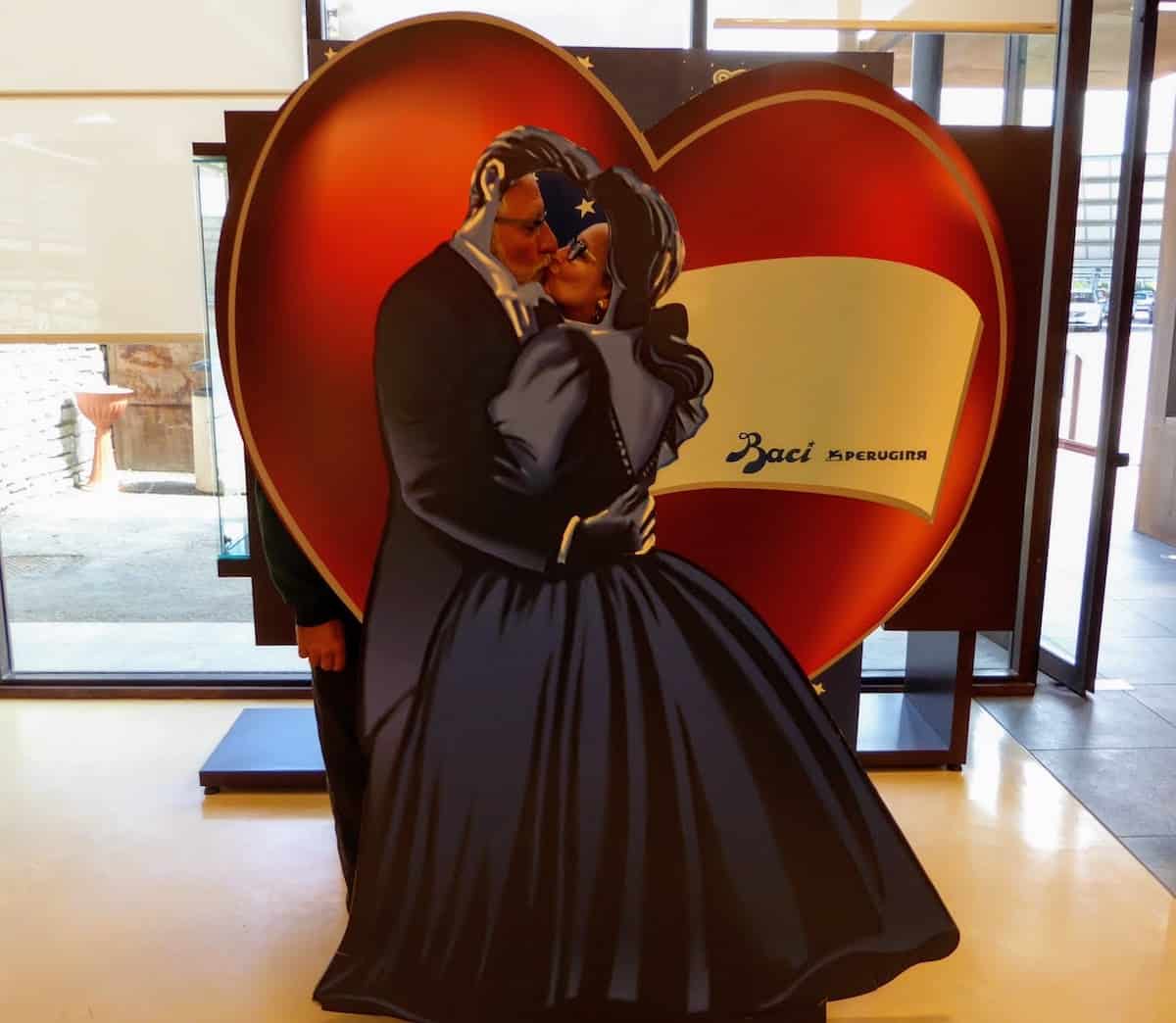
One of the most ancient settlements in central Italy, Orvieto is built at the top of a towering cliff made of volcanic stone, called tufo .
Etruscans chose this spot because of its strategic defensive position. When forced to escape Rome during the Middle Ages and the Renaissance, Popes arrived here for the same reason.
The city has a unique underground city with thousands of caves and tunnels, parts of which can still be visited.
The Orvieto Cathedral—one of the most visually stunning in all of Italy—has a rose window and intricate mosaic façade with Signorelli frescoes inside.
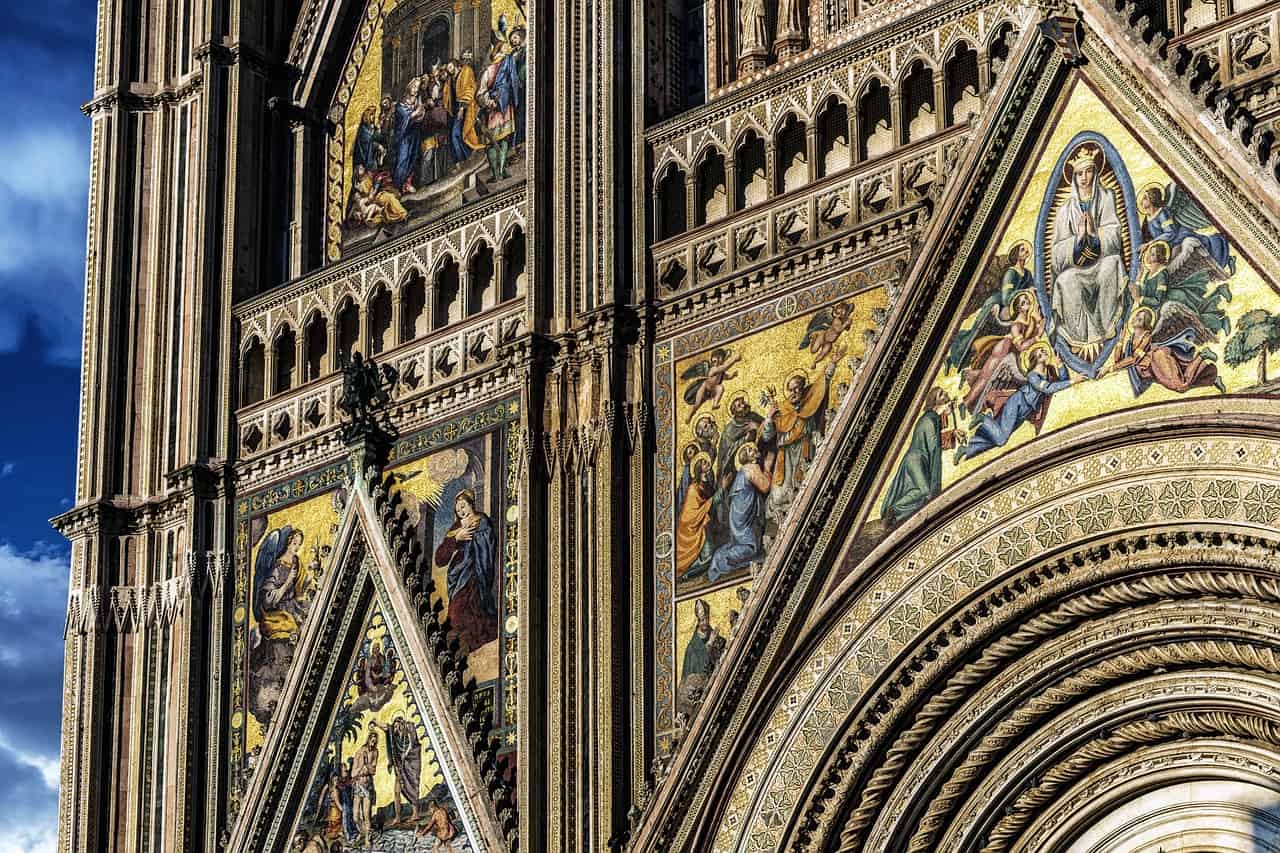
Visitors strolling the maze of narrow streets will be charmed by handicraft workshops, art galleries, food markets , wine bars and family-owned restaurants offering local cuisine and Orvieto Classico, the region’s renowned white wine.

Assisi, the most visited destination in Umbria, is the legendary birthplace of St. Francis.
Here, early communities of Franciscan Friars began to spread their message of poverty, charity, and brotherhood. The Basilica that houses his tomb is visited both by pilgrims and art lovers from around the world who come to see its decorations created by some of the most important painters of that time (including Cimabue, Giotto, Lorenzetti, and Martini).

In Spoleto, visitors can enjoy the slow pace of local life in an enchanting small town that was once surrounded by ancient city walls.
Dominating the city center is La Rocca Albornoziana, an imposing 14th-century fortress built at the top of the hill. The Towers Bridge is another impressive medieval construction built to carry water into the city through an aqueduct.
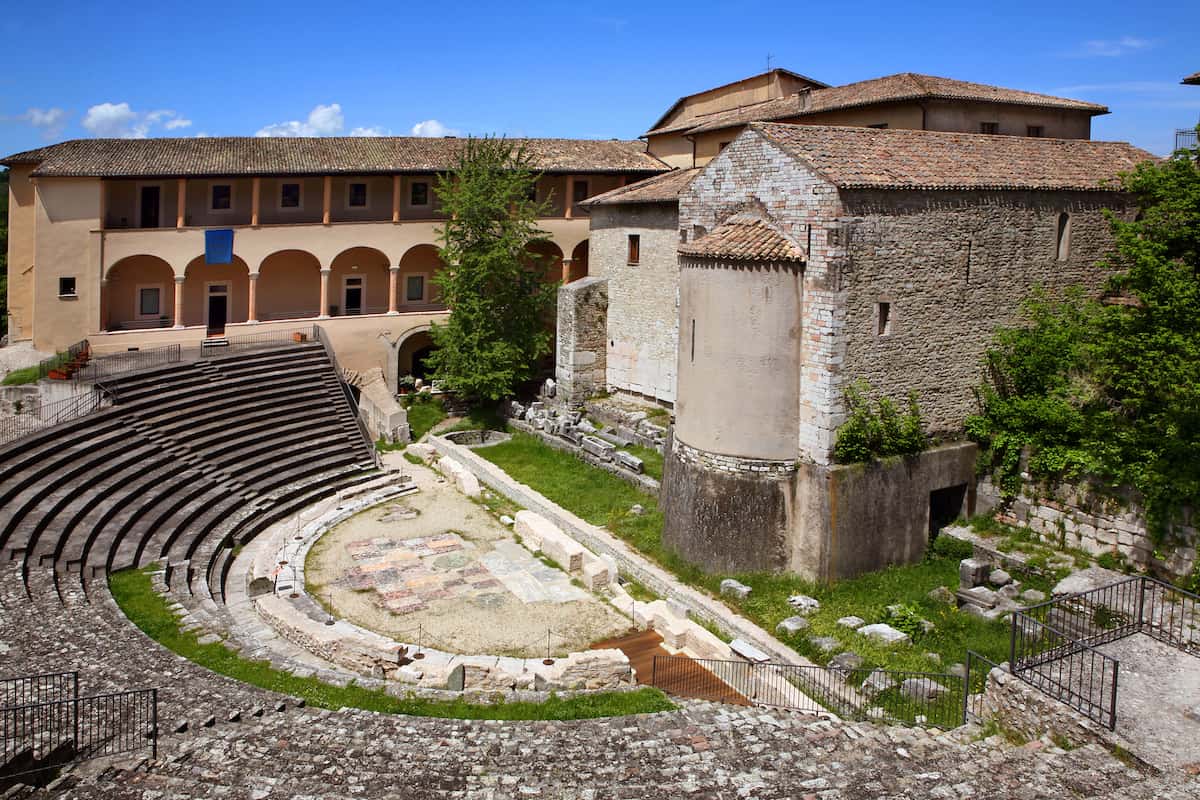
Spoleto is famous for a summer cultural festival, named “Festival of 2 Worlds” or simply “Spoleto Festival,” founded in 1958, that offers an inspiring mix of three weeks of classical music, opera, theatre, and ballet as well as art exhibitions.

Set in a secluded corner of northern Umbria bordering the Marche region, Gubbio has maintained its charm over many centuries.
The almost vertical expansion of the old town along the steep slope of Mount Ingino is an example of the skillful ability of builders of the Middle Ages who developed the city within its defensive walls.

Gubbio still preserves one of the most authentic religious events, the “Corsa dei Ceri,” a race dividing participants into three groups, each one supporting one of the three patron saints of the city: St. Ubaldo, St. Giorgio, and St. Antonio. As they run, the groups carry towering pedestals with statues of one of the saints on top. Locals are truly involved in the event, which more than a reenactment, is an authentic expression of popular devotion.
For more than 13 seasons, the popular Italian TV series, Don Matteo , starring Terence Hill was filmed in Gubbio and other locales in Umbria.
Take a road trip in Umbria
If you take a road trip to Umbria, you’ll discover that some of the best places to visit in Umbria are also all the small villages and towns in between these cities
For additional information on the best places to visit in Umbria:
- Umbria Tourism
- Discover Italy
- Fuoritinerario: Discover Your Italy
Save to Pinterest!!

Also on More Time To Travel:
Tasting Umbria: The delectable foods of a less-traveled region
Madrevite: Umbrian Wines Link the Past and Present
TV Biopic Brings Luisa Spagnoli Story To Life
Market Visit: Piazza del Popolo Market in Orvieto, Italy
Note: This is a revised and updated version. of a story that I previously wrote for Forbes.com .
Similar Posts
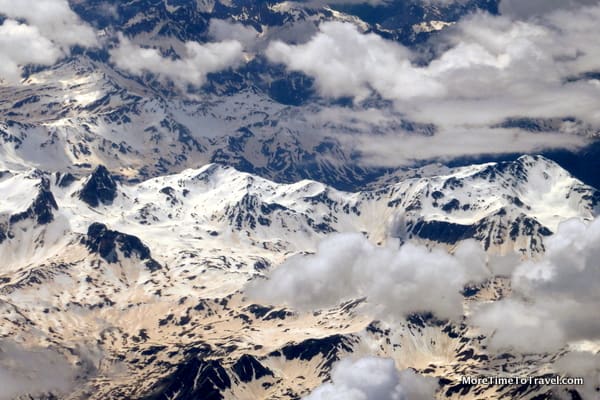
What is it like to fly Delta Comfort+?
When booking flights between NY and Pisa, you may want to consider Delta Comfort+

What To Do In Fredericton: A Small City with Big City Ideas
Halifax-based food and travel writers John and Sandra Nowlan have scoped out what to do in Fredericton, a hidden tourist gem in New Brunswick, Canada.
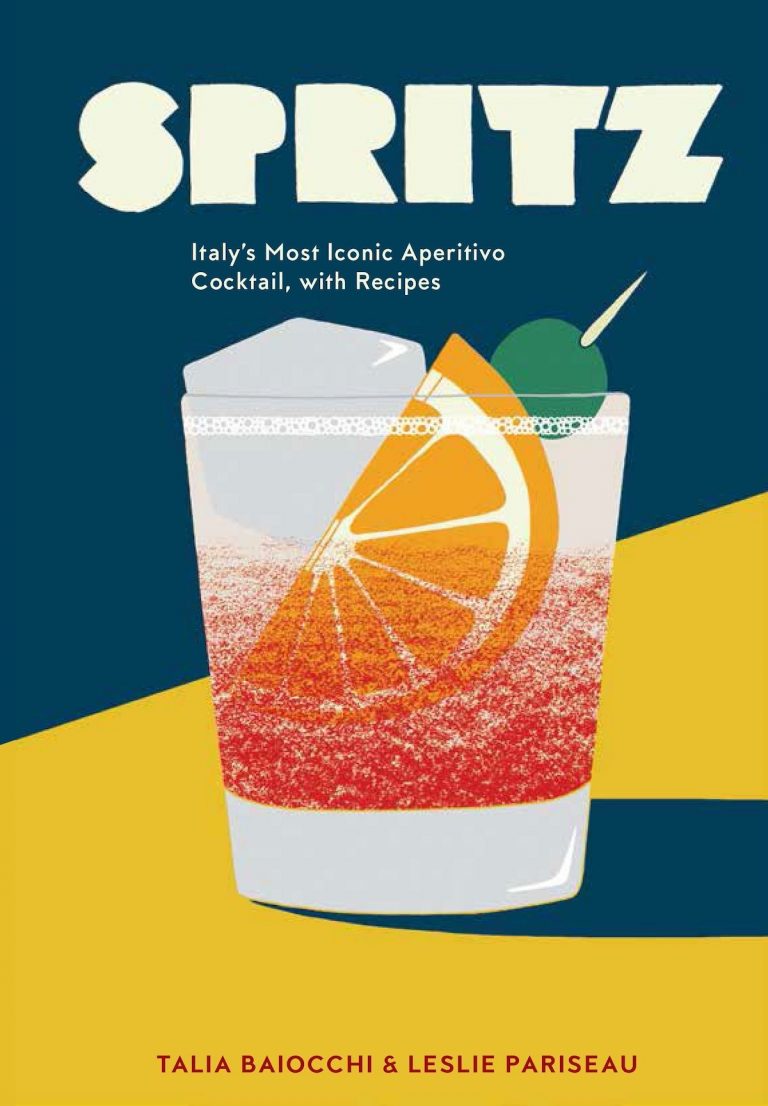
Book Review: Spritz, Italy’s Most Iconic Aperitivo Cocktail
I sipped my first spritz at a bar near Piazza Santo Stefano in Bologna, the first of many more to come.
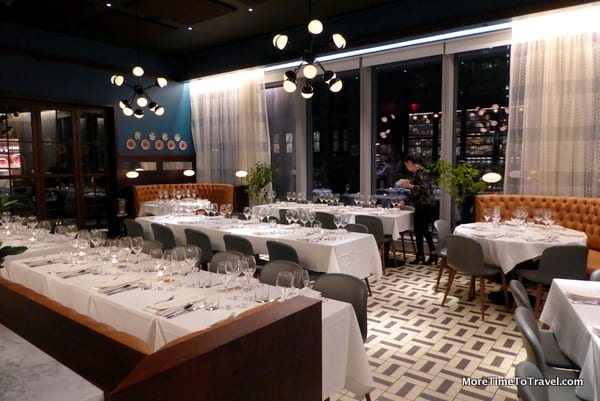
Oh, what a night! Celebrating the bounty of Emilia Romagna
The best road trip we ever took was on the Via Emilia, stopping at each of the wonderful cities along the old Roman road that traverses the nine provinces of Emilia Romagna.

Abruzzo Food: Authentic Tastes of Less-Touristed Italy
Abruzzo food is not as well known as other regional cuisine, but it can rightfully boast about its own unique tastes and flavors.

Tipping in Italy: Suggestions, Not Rules
he rules for tipping in Italy are somewhat murky—which also tends to be the case with tipping in other places around the world. The tradition of tipping dates back to 16th century England but the custom still remains ambiguous hundreds of years later. We’ve traveled to Italy many times and are always uncertain about the…
Leave a Reply Cancel reply
Your email address will not be published. Required fields are marked *
Notify me of followup comments via e-mail
Save my name, email, and website in this browser for the next time I comment.
Umbria Travel Map and Places to Visit in Italy's Green Heart
:max_bytes(150000):strip_icc():format(webp)/james-globe-56a3a1c05f9b58b7d0d2e4e5.jpg)
Tripsavvy / James Martin
Umbria has been called "Italy's Green Heart." It is green, mainly agricultural, and more sparsely populated than its western neighbor, Tuscany . Umbria has no access to the Mediterranean but is home to one of the largest lakes of Italy.
Umbria is for the laid-back traveler, one who would perhaps like to sip the uniquely Umbrian wine called Sagrantino in one of the many Umbria Wineries. There are plenty of interesting and historic towns to discover; the regional capital Perugia, Saint Francis's town of Assisi, or the Etruscan city of Orvieto.
There are interesting places to stay in Umbria. There's a restored Monastic outpost in Umbria called La Preghiera that hosts guests. Another place to consider is Fontanaro , a collection of houses forming a sort of rural cooperative where you can learn about Umbrian cooking, wine, and the making of organic olive oil. If you love to eat well and stay in a rural B&B, the Casale di Mele might be the perfect place to stay.
Umbrian cuisine is best described as farm-to-table. Foods change with the season and, when in season, you can enjoy dishes made with the highly prized truffles of the region. Deborah Mele's introduction to the cuisine, The Foods of Umbria , will give you all you need to know about the food and food traditions of Umbria.
Many arrive by bus or train and start their explorations of Umbria in the capital city of Perugia:
- Florence to Perugia (about 2 hours by bus or train)
- Rome to Perugia (about 3 hours by bus or train)
- Venice to Perugia (5 hours and 13 minutes by train)
Explorations will then take you to the countryside and towns of the region.
Perugia: The Capital of Umbria
TripSavvy / Christopher Larson
Perugia , the regional capital of Umbria, has visible Etruscan history including an arch and city walls. Perugia is one of Italy's great art cities and is known for its popular jazz and chocolate festivals, yet is almost entirely overlooked by tourists.
Perugia is situated on a hilltop and in part of a valley. From the train station, you can take a bus for the 1.5-kilometer climb into town but the energetic person will want to take an alternative route; the moving stairway that takes you through the excavations below the city from the parking lots.
The wide Corso Vannucci that cuts through the center of town is like a gigantic piazza without car traffic, a fantastic place to take your evening stroll through the history of Perugia 's art and architecture.
It's a special time if you come during Umbria jazz in July or Eurochocolate in fall. Perugia Travel Weather will keep you informed about the weather.
The Green Heart of Italy
Umbria is the only Italian region having neither a coastline nor a border with other countries. Here you are locked into Italy's dreamy, and quite green, center. It's quiet and peaceful. Population density is very low, especially compared to adjacent Tuscany. Prices are low too, comparatively.
Tobacco fields, grain fields, groves of olive trees, and vineyards are found throughout Umbria. You'll learn to spot the tobacco drying structures, now often converted into elegant and romantic lodging for tourists.
Castiglione del Lago
Rocca del Leone, the castle of this interesting city jutting out on Lake Trasimeno, has a dark passageway to roam and is often the scene of festivals and art presentations.
You eat well in Castiglione. It is, after all, one of the top town to visit in Lake Trasimeno . You could settle down here and spend a week or more visiting the cities, islands, and wineries around the lake.
There's history too. The shores of Lake Trasimeno were the site of the Battle of Lake Trasimeno in 217 BC, where Hannibal defeated the Romans who had intended to ambush him on his way back to Rome.
You can enjoy spending a few days or weeks in this compact little hill town within sight of Lake Trasimeno, and you won't get bored.
In the heart of town, just off the main piazza, there's great food, wine, and apartments available. Notable landmarks preserved include the city wall, towers, the church of Saint Michele Arcangelo, the Palazzo Pretorio, and the Palazzo del Podesti.
Panicale is central to some pretty impressive tourist destinations like Tuscany's ancient city of Chiusi , just 16 kilometers to the west, and Lake Trasimeno right to the north.
More Cities to Visit in Umbria
Assisi - Walk in the footsteps of St. Francis; Assisi was his birthplace. The Basilica of St. Francis is a massive, two-story church, consecrated in 1253. Its frescoes portraying the life of St. Francis have been attributed to famous artists such as Giotto and Cimabue.
Orvieto - Visit this Etruscan city with the glittering Duomo in the center of town. Orvieto is famous for the white wine that bears its name.
Spoleto - This town is famous for its summer music festival, Festival dei Due Mondi , with interesting Roman, medieval, and modern sights to keep a visitor busy year 'round.
Todi - This is yet another picturesque medieval hill town in Umbria, surrounded by medieval, Roman and Etruscan walls. Although it's a hill town, its center at the top of the hill is flat, so the walking is easy.
Gubbio - This well-preserved medieval hill town is worth a stop.
Top Places to Go in Umbria
Panicale, Italy: Wild Times in a Medieval Village
The Top 23 Things to Do in Italy
Italian Nativity Displays and Christmas Scenes
Perugia: Planning Your Trip
Assisi Travel Guide
The 14 Best Day Trips from Rome
Travel Guide to Spoleto, Italy
Guide to Visiting the Tuscan Hill Town of Cortona
The Sagrantino Wine Road of Umbria
Todi Travel Guide
Orvieto Travel Guide
A Guide to Italy's Wine Regions
Lombardy Cities Map and Travel Guide
Gubbio Is an Umbrian Hill Town in Italy
Tuscany Guide: Planning Your Trip
Umbria Travel Guide
Book your individual trip , stress-free with local travel experts
- roughguides.com
- Travel guide
- Itineraries
- Local Experts
- Travel Advice
- Accommodation
Plan your tailor-made trip with a local expert
Book securely with money-back guarantee
Travel stress-free with local assistance and 24/7 support
Carlo DeSando
Wonderful Time in Italy We were covered from the moment we landed in Rome. The drivers were great, the connections were flawless, and it was well-planned a...
Often referred to as “the green heart of Italy”, Umbria is a predominantly beautiful and – despite the many visitors – largely unspoiled region of rolling hills, woods, streams and valleys. Within its borders it also contains a dozen or so classic hill-towns, each resolutely individual and crammed with artistic and architectural treasures to rival bigger and more famous cities. To the east, pastoral countryside gives way to more rugged scenery, none better than the dramatic twists and turns of the Valnerina and the high mountain landscapes of the Parco Nazionale dei Monti Sibillini.
Brief history of Umbria
Umbrian cuisine, lago trasimeno, città di castello, the valnerina.
Historically, Umbria is best known as the birthplace of several saints, St Benedict and St Francis of Assisi being the most famous, and for a religious tradition that earned the region such names as Umbra santa, Umbra mistica and la terra dei santi (“the land of saints”). The landscape itself has contributed much to this mystical reputation, and even on a fleeting trip it’s impossible to miss the strange quality of the Umbrian light, an oddly luminous silver haze that hangs over the hills.
After years as an impoverished backwater, Umbria has capitalized on its charms. Foreign acquisition of rural property is now as rapid as it was in Tuscany thirty years ago, though outsiders have done nothing to curb the region’s renewed sense of identity and youthful enthusiasm, nor to blunt the artistic initiatives that have turned Umbria into one of the most flourishing cultural centres in Italy.
Most visitors head for Perugia , Assisi – the latter with its extraordinary frescoes by Giotto in the Basilica di San Francesco – or Orvieto , whose Duomo is one of the greatest Gothic buildings in the country. For a taste of the region’s more understated charms, it’s best to concentrate on lesser-known places such as Todi, an increasingly chic but still unspoiled hill-town; Gubbio , ranked as the most perfect medieval centre in Italy, and Spoleto , for many people the outstanding Umbrian town. Although there are few unattractive parts of the Umbrian landscape (the factories of Terni and the Tiber Valley being the largest blots), some areas are especially enticing: the Valnerina, a beautiful valley surrounded by mountains and remote hilltop villages; the Piano Grande, a vast, featureless plain best visited in spring, when it's carpeted with wild flowers; and Lago Trasimeno, the largest lake in the Italian peninsula, with plenty of opportunities for swimming and watersports.
Tailor-made travel itineraries for Italy, created by local experts

8 days / from 2622 USD
Experience the hit TV show 'The White Lotus' in Sicily
Stay in beautiful Taormina with gorgeous views of Mount Etna and discover Sicily, including famous filming locations. Go on exclusive wine tastings, discover the Greek theater in Taormina with a private guide, visit other Sicilian towns and enjoy the crystal clear water on this week-long trip.

8 days / from 3258 USD
Enchanting Italian Lakes
Experience the picturesque lakes of Northern Italy, including Lake Garda, Como, Lugano and Maggiore; explore the charming Borromean Islands – former favourites of Ernest Hemingway – and stroll the romantic streets of Verona and Milan. All of this, and much more, with this self-drive trip!

16 days / from 3258 USD
From Venice to Florence: A Grand Tour of Northern Italy
From the atmospheric canals of Venice and the picturesque coastline of Cinque Terre, to the trendy designer boutiques of Milan and the Renaissance-infused streets of Florence, Northern Italy has plenty to offer. Experience it all with this comprehensive trip.
Umbria was named by the Romans after the mysterious Umbrii, a tribe cited by Pliny as the oldest in Italy, and one that controlled territory reaching into present-day Tuscany and Le Marche. Although there is scant archeological evidence about them, it seems that their influence was mainly confined to the east of the Tiber; the darker and more sombre towns to the west – such as Perugia and Orvieto – were founded by the Etruscans, whose rise forced the Umbrii to retreat into the eastern hills. Roman domination was eventually undermined by the so-called barbarian invasions, in the face of which the Umbrians withdrew into fortified hill-towns, paving the way for a pattern of bloody rivalry between independent city-states that continued through the Middle Ages. Weakened by constant warfare, most towns eventually fell to the papacy, entering a period of economic and cultural stagnation that continued up until the very recent past.
The cuisine of landlocked, hilly Umbria relies heavily on rustic staples – pastas and roast meats – and in the past tended to be simple and homely. The region is also the only area outside Piemonte where truffles are found in any abundance, and their perfumed shavings, particularly in the east of the region, find their way onto eggs, pasta, fish and meat – but at a price that prohibits overindulgence.
Meat plays a leading role – especially lamb and pork, which is made into hams, sausage, salami and, most famously, porchetta, whole suckling pig stuffed with rosemary or sage, roasted on a spit. Game may also crop up on some menus, most often as pigeon, pheasant or guinea fowl. The range of fish is restricted by the lack of a coast, but trout can be caught from the Nera River and Clitunno springs, while the lakes of Piediluco and Trasimeno yield eel, pike, tench and grey mullet. Vegetable delicacies include tiny lentils from Castelluccio, beans from Trasimeno, and celery and cardoons from around Trevi. Umbrian olive oil, though less hyped than Tuscan oils, is of excellent quality – about 90 percent is extra virgin – particularly that from around Trevi and Spoleto .
As for desserts, Perugia is renowned for its chocolate and pastries. Cheeses tend to be standard issue, although some smaller producers survive in the mountains around Norcia and Gubbio .
Umbria used to be best known outside Italy for fresh, dry white wines. Orvieto , once predominantly a medium-sweet wine, has been revived in a dry style. The wine was beloved of the artists and architects of Orvieto’s Duomo: Luca Signorelli requested a thousand litres per year by contract. In recent years the pre-eminence of Orvieto in the domestic market has been successfully challenged by Grechetto, an inexpensive and almost unfailingly good wine made by countless producers across the region. Umbria’s quest for quality is also increasingly reflected in a growing number of small producers, many of whom have followed the lead of Giorgio Lungarotti, one of the pioneers of Umbrian viticulture (any wine with his name on is reliable), and in some outstanding reds, notably the Torgiano Rosso Riserva DOCG and the Sagrantino DOCG of Montefalco. The region has four wine routes ( strade del vino ): the Strada del Sagrantino, around Montefalco; the Strada dei Vini del Cantico between Todi, Perugia, Torgiano, Spello and Assisi ; the Strada del Vino Colli del Trasimeno; and the Strada dei Vini Etrusco-Romano, in the province of Terni .
The most tempting destination around Perugia – whose surroundings are generally pretty lacklustre – is Lago Trasimeno, an ideal spot to hole up in for a few days, and particularly recommended if you want to get in some swimming, windsurfing or sailing. The lake is about 30km from Perugia and is easy to get to on public transport. It’s the biggest inland stretch of water on the Italian peninsula, though you wouldn’t think so to look at it, never deeper than 7m – hence bath-like warm water in summer.
A winning combination of tree-covered hills to the north, Umbria’s subtle light, and placid lapping water produces some magical moments, but on overcast and squally days the mood can turn melancholy. Not all the reed-lined shore is uniformly pretty either; steer clear of the northern coast and head for the stretches south of Magione and Castiglione if you’re after relative peace and quiet.
On the trail of Hannibal
Somewhere along the Lago Trasimeno shore towards the rambling village of Tuoro, probably at Sanguineto (“the Place of Blood”) or Ossaia (“the Place of Bones”), is the spot where the Romans suffered their famous clobbering at the hands of Hannibal in 217 BC. Hannibal was headed for Rome, having just crossed the Alps, when he was met by a Roman force under the Consul Flaminius. Things might have gone better for Flaminius if he’d heeded the omens that piled up on the morning of battle: first he fell off his horse; next the legionary standards had to be dug out of the mud; and finally – and this really should have raised suspicions – the sacred chickens refused their breakfast. Poultry accompanied all Roman armies and, by some means presumably known to the legionnaire in charge of chickens, communicated the will of the gods to waiting commanders in the field. Hannibal lured Flaminius into a masterful ambush, with the only escape a muddy retreat into the lake. Sixteen thousand Romans, including the hapless commander, were killed.
A hard-to-find drive and walkway have been laid out, starting and finishing just west of Tuoro on the road to Cortona, which take in salient features of the old battlefield; Tuoro's irregularly open Pro Loco office has some information on the site, walkway and drive, and occasionally offers guided tours.
Activities on Lago Trasimeno
There are plenty of things to do on Lake Trasimeno from operators based in Castiglione del Lago, including windsurfing (contact Club Velico ), canoeing, waterskiing and horseriding (ask at the tourist office for recommended operators). You can rent bikes at Cicli Valentini .
The best of the little beaches is at the public lido on the southern side of Castiglione’s promontory, with pedalos for rent and boat trips, including regular excursions to the strangely rectangular island of Isola Maggiore, a fun ride if you don’t mind the summer crowds. There’s a pretty walk round the edge of the island, and one good, popular hotel, the three-star Da Sauro , Via Guglielmi 1, which also doubles as a fine restaurant.
Città di Castello is a charming and relatively little-visited town 56km north of Perugia in the Upper Tiber Valley, with a sedate and ordered medieval centre that’s well worth a few hours. It’s also the focus for visitors staying in the many rented villas and farmhouses in the hills to the east and west. In late August and early September the town becomes busier than usual during its renowned Festival of Chamber Music , dedicated to a different country each year.
Once an important Roman centre – the gridiron of streets is virtually the only legacy – today the town preserves just a handful of fairly mediocre medieval monuments. Its main attractions are its museums and art galleries, along with some quiet, pleasant medieval streets.
The Valnerina is the most beautiful part of Umbria. Strictly translated as the “little valley of the Nera”, it effectively refers to the whole eastern part of the region, a self-contained area of high mountains, poor communications, steep wooded valleys, upland villages and vast stretches of barren nothingness. Wolves still roam the summit ridges and the area is a genuine “forgotten corner”, deserted farms everywhere bearing witness to a century of emigration.
Mountains in the region are 1500m high, creeping up as you move east to about 2500m in the wonderful Monti Sibillini, the most outstanding parts of which fall under the protection of the Parco Nazionale dei Monti Sibillini. It’s difficult to explore with any sort of plan (unless you stick to the Nera), and the best approach is to follow your nose, poking into small valleys, tracing high country lanes to remote hamlets. More deliberately, you could make for Vallo di Nera, the most archetypal of the fortified villages that pop up along the Lower Nera. Medieval Triponzo is a natural focus of communications, little more than a quaint staging post and fortified tower (and a better target than modernish Cerreto nearby).
Norcia for foodies
Meat-eaters would be daft not to try the deservedly famous local pork products. Anything that can be made from a pig, the Norcians apparently make – and supposedly better than anyone else. For this reason, alimentari throughout Italy who pride themselves on their hams and salamis will call themselves norcineria. If finances stretch, you could also indulge in the area’s prized black truffle. The season runs from January to April (though you may come across the lesser-prized white summer truffles too). Plenty of shops, an attraction in themselves, are on hand to sell you all manner of local specialities, not just truffles, but also hams, the famed lentils of Castelluccio and lots of rare mountain cheeses.
The Piano Grande
The eerie, expansive Piano Grande, 20km east of Norcia, is an extraordinary prairie ringed by bare, whaleback mountains and stretching, uninterrupted by tree, hedge or habitation, for miles and miles. A decade or so ago, it was all but unknown: now, in summer at least, it can be disconcertingly busy. It’s much photographed – especially in spring when it’s ablaze with wild flowers of every description – and was used by Zeffirelli as a setting for his Franciscan film Brother Sun, Sister Moon. The desperately isolated village of Castelluccio hangs above it at around 1400m, and although no longer the sole preserve of shepherds, it remains an unspoilt base and the ideal starting point for any number of straightforward mountain walks. To plan routes, get hold of the 1:50,000 Kompass map no. 666 or the more detailed 1:25,000 CAI maps (the latter are often available in Norcia’s or Castelluccio’s bars).
Note that there's no public transport into the area (save for one bus in and out on a Thursday, market day in Norcia), though you might try your luck at catching lifts in high season.
Narni claims to be the geographical centre of Italy, with a hilltop site jutting into the Nera Valley on a majestic spur and crowned by another of Cardinal Albornoz’s formidable papal fortresses. Commanding one end of a steep gorge (about ten minutes of fairly spectacular train travel), it was once the gateway into Umbria, the last post before the Tiber Valley and the undefended road to Rome. However, while the town retains a fine medieval character, the views from its heights are marred by steel and chemical works around Narni Scalo, the new town in the valley below.
The heart of the old town has all the standard fittings: the medieval piazzas, the warren of streets, a modest art gallery, the usual crop of Romanesque churches and a huge rocca, open for occasional events. There’s a Roman bridge on the outskirts, the subject of considerable local hype; when Goethe arrived in Narni in the middle of the night he was peeved not to have seen it but he was only missing a solitary arch in the middle of the river – just as easily viewed from the train.
Todi is one of the best-known Umbrian hill-towns, its central Piazza del Popolo widely held to be among the most perfect medieval piazzas in Italy, and the town itself to be the country’s most liveable. At heart a thriving and insular agricultural centre, Todi is also a favoured trendy retreat for foreign expats and Rome’s arts and media types. In the way of these things the visitors haven’t been far behind, but neither fact should deter you from making a day-trip: few places beat it for sheer location – its hilltop position is stunning – and fairy-tale medievalism. Many festivals and events are held in Todi throughout the year, including the increasingly popular Todi Festival (late Aug or early Sept).
Discover more places in Italy

- Spello and around
The Rough Guides to Italy and related travel guides
In-depth, easy-to-use travel guides filled with expert advice.
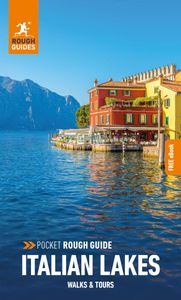
Find even more inspiration here

Planning your own trip? Prepare for your trip
Use Rough Guides' trusted partners for great rates
written by Rough Guides Editors
updated 26.04.2021
Ready to travel and discover Italy?
Get support from our local experts for stress-free planning & worry-free travels.
- Where to stay
- Travel advice

The Perfect One Week In Umbria Itinerary
Looking to plan a trip to Umbria? This one week in Umbria itinerary is the perfect way to experience the “green heart” of Italy’s landlocked region, which remains largely untouched and dotted with medieval towns and fortifications.
Umbria’s stunning landscapes boast lush green farmlands, fields of sunflowers, and forested mountains, much like those depicted in Renaissance-era frescoes by artists like Giotto.
This makes Umbria an ideal destination for a road trip that allows you to fully appreciate the region’s natural beauty.
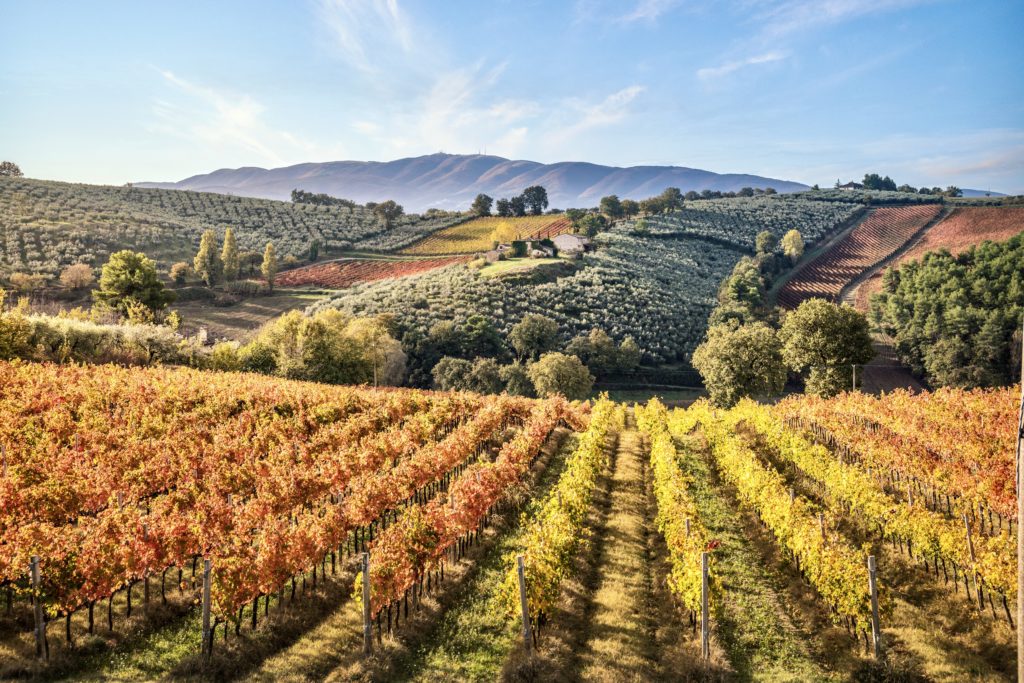
Ancient Umbria looks a lot like Tuscany did before it became, understandably, overcrowded with tourists.
Umbria is becoming more well know. But It’s a still somewhat off the beaten path region of Italy filled with idyllic towns you’ll have all to yourself, or mostly to yourself. Except in summer.
To help you have the best experience, I’ve put together a step-by-step one week in Umbria itinerary.
Umbria is not a large area. It’s just over 3,000 square miles, smaller than Connecticut. But seeing all the highlights requires some careful planning.
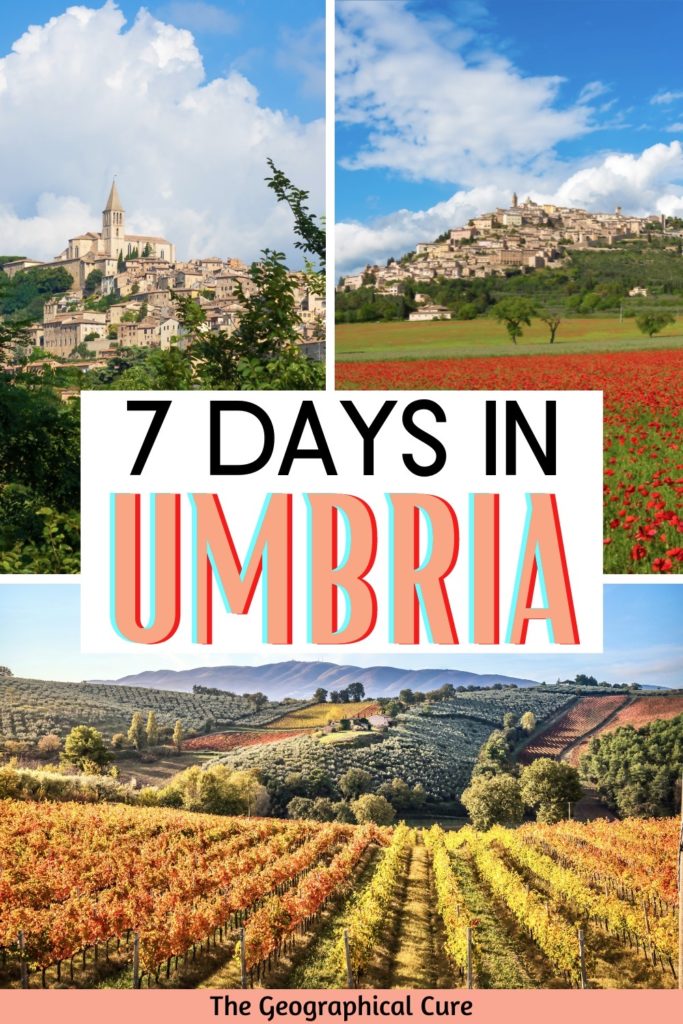
Overview Of One Week In Umbria Itinerary
Here’s a quick snapshot of what you’ll see on my recommended 7 days in Umbria itinerary.
- Day 1 : Perugia
- Day 2 : Gubbio
- Day 3 : Assisi + Spello
- Day 4 : Bevagna + Montefalco, and/or Deruta
- Day 5 : Todi + Spoleto
- Day 6 : Orvieto
- Day 7 : Orvieto, Civita di Bagnoregio, and/or Narni
This Umbria itinerary assumes you have 7 full days in the region. Plan to arrive at your accommodations the evening before, so you can get settled be ready to go the next morning.
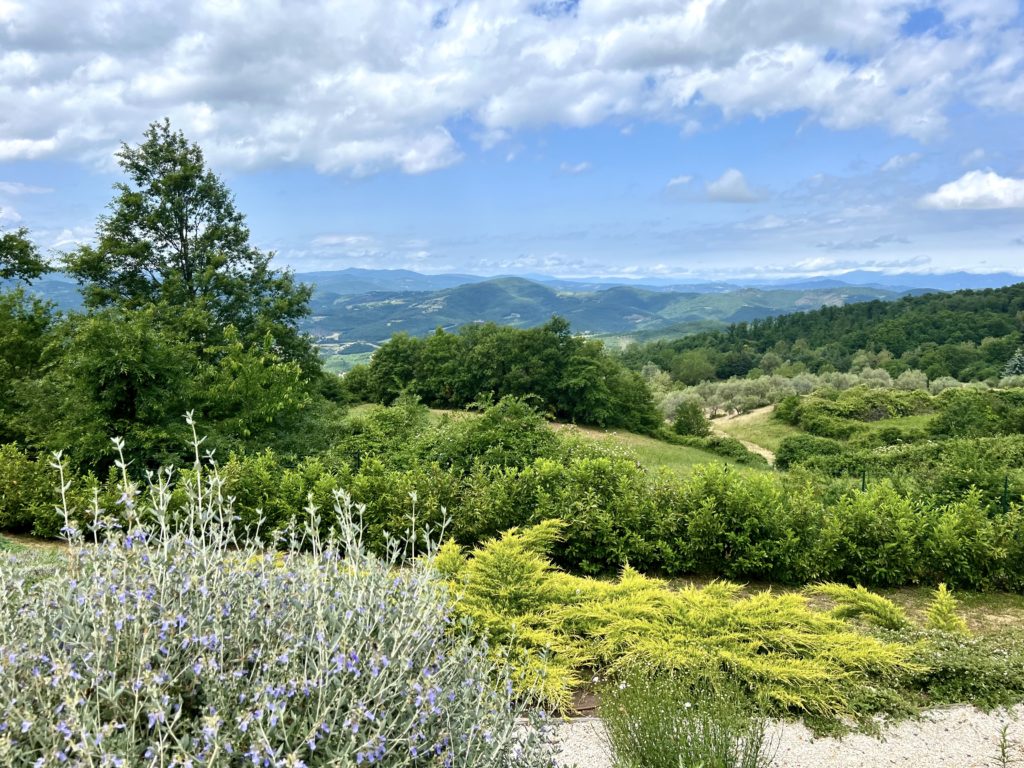
This itinerary goes from northern to southern Umbria. But you can rearrange the order of days based on where you’re staying.
As with all of my suggested itineraries, I recommend that you use this one week in Umbria itinerary as a guide. You can tailor it to suit your individual interests, needs, and pace of travel.
You may want to take a day off mid-trip just to relax. Or extend this one week in Umbria itinerary into a 10 day or two week itinerary.
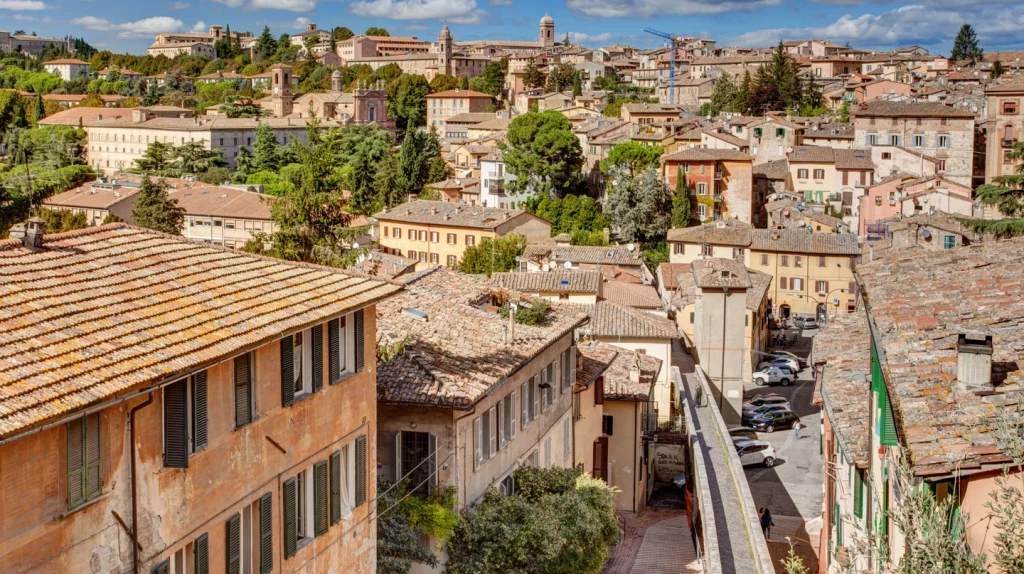
Tips & Logistics For Spending One Week In Umbria
But, first, let’s get into some tips for visiting Umbria.
1. How To Get To Umbria
The best way to reach Umbria is by car. You will really need to rent a car to get around Umbria properly and explore all its adorable towns. Here are my tips for renting and driving a car in Europe .
If you fly into Rome Fiumicino Airport, it’s just over a 2 hour drive to Perugia, the capital of Umbria. Or you can book a private transfer from Rome to Perugia.
You can also take the high speed train from Rome to Perugia (3 hours) and pick up your car in Perugia. Alternatively, you can take the train from Rome to Orvieto and start in southern Umbria.
If you’re coming from Florence, the drive takes 2:20.
Using public transportation in Umbria can be tough and tricky. Many of the hill towns don’t have train stations.
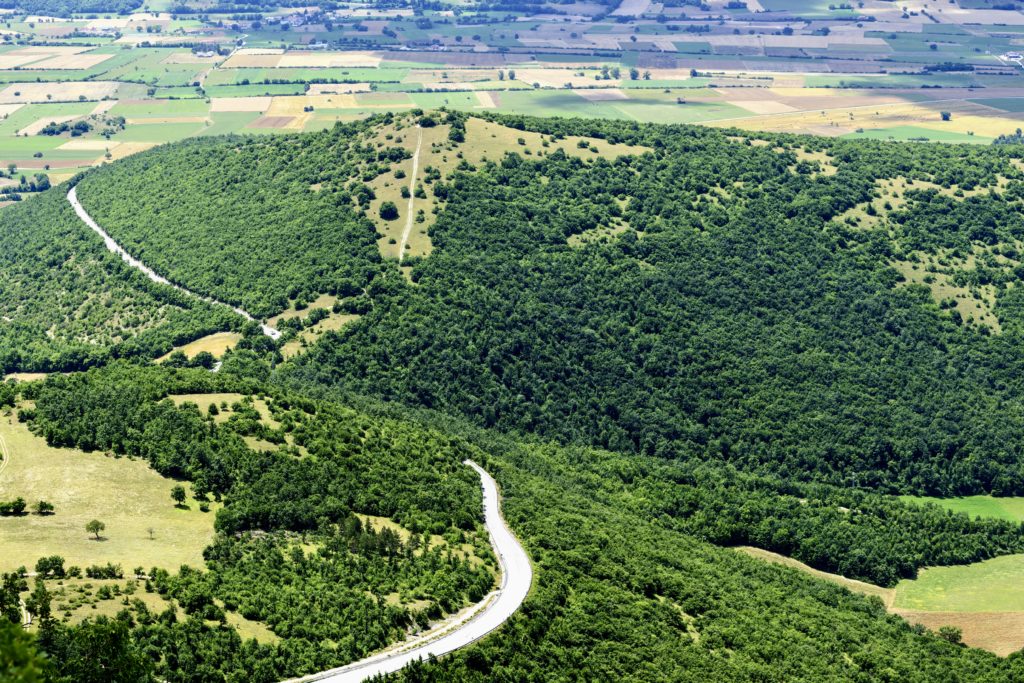
Or you may have to switch trains to get to your destinations and then have a hike into town. Or you may need to use train + bus to get there.
All that eats into valuable sightseeing time. So I highly recommend driving.
2. Driving In Umbria
I thought driving in Umbria was fairly easy, though the roads in Umbria aren’t as well paved or maintained as in Tuscany. With Umbria’s mountains, they can also be windy.
Our GPS worked well and we only took a few wrong turns, which you would expect in Europe.
It can be difficult to drive in Umbria at night, as the roads aren’t well lit. But we drove at night a few times and managed fine.
Try to get a compact car. The roads are narrow and parking places can be tight to get into.
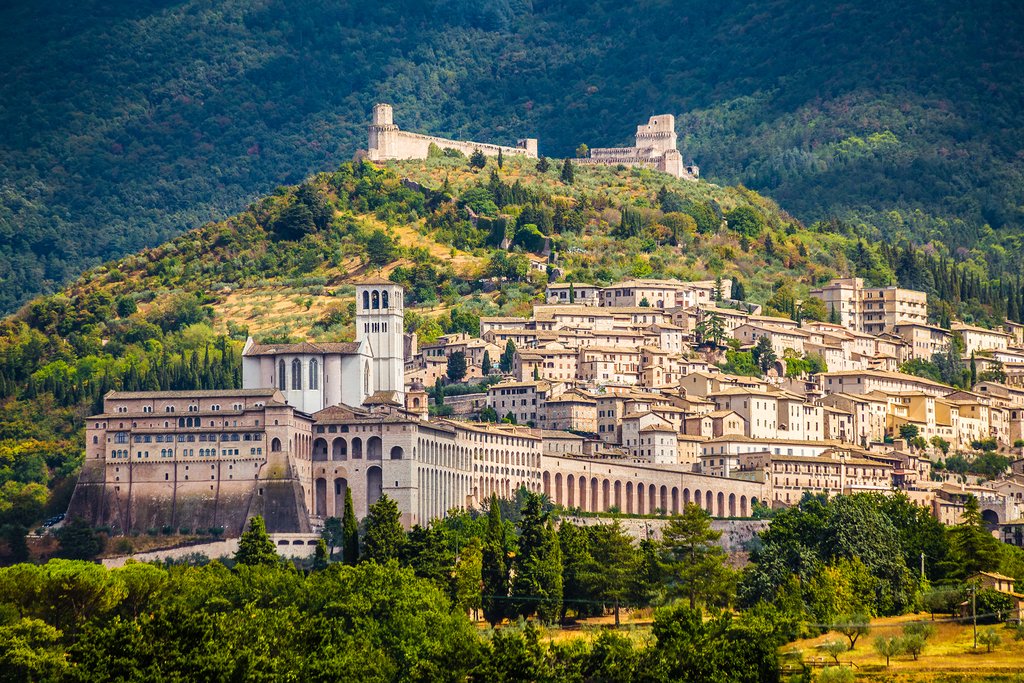
There are some toll roads, called the autostrade , though most roads aren’t.
You may want to get a telepass from your rental car agency to help you speed through the tolls. Otherwise, when entering the toll area to pick up your ticket, head to the lane marked “biglietto.”
You then pay when you exit the toll road. There are separate lanes for paying with cash and credit cards.
The booths won’t be manned. There’s a different slot for entering your ticket and for your cash or credit card.
If the Italians are driving faster than you, just pull over and let them pass. There are quite a few speed cams, and you don’t want to get a ticket.
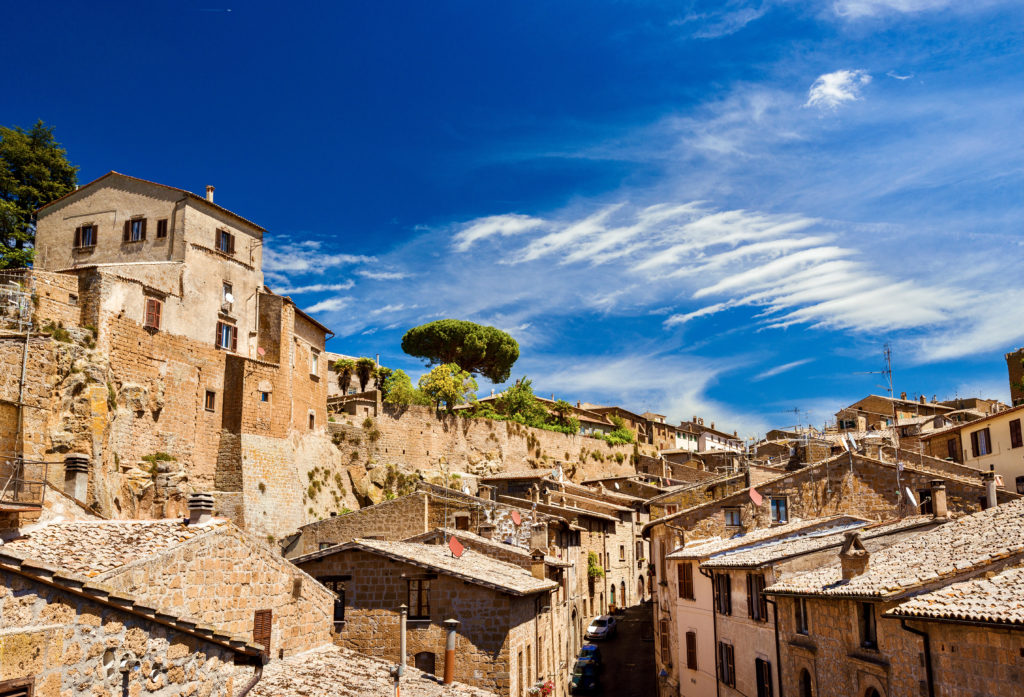
3. Where To Stay In Umbria: What Base?
The best option is to rent a secluded villa in the countryside for one week in Umbria and use that as your base.
You’ll have to do some driving to get to your day trip destinations. But I think it’s worth it to come home every night to your own place.
You don’t have to to move around and pack and unpack. Plus, you won’t have to eat out every meal.
If you want to rent a villa, I would recommend looking for something in central Umbria. You may want to stay near Bevagna, Montefalco, Spello, or Assisi. These are all fairly centrally located for sightseeing.
Another option is to pick a couple different hotels or house rentals to use as your base. You could split your time between northern Umbria and southern Umbria.
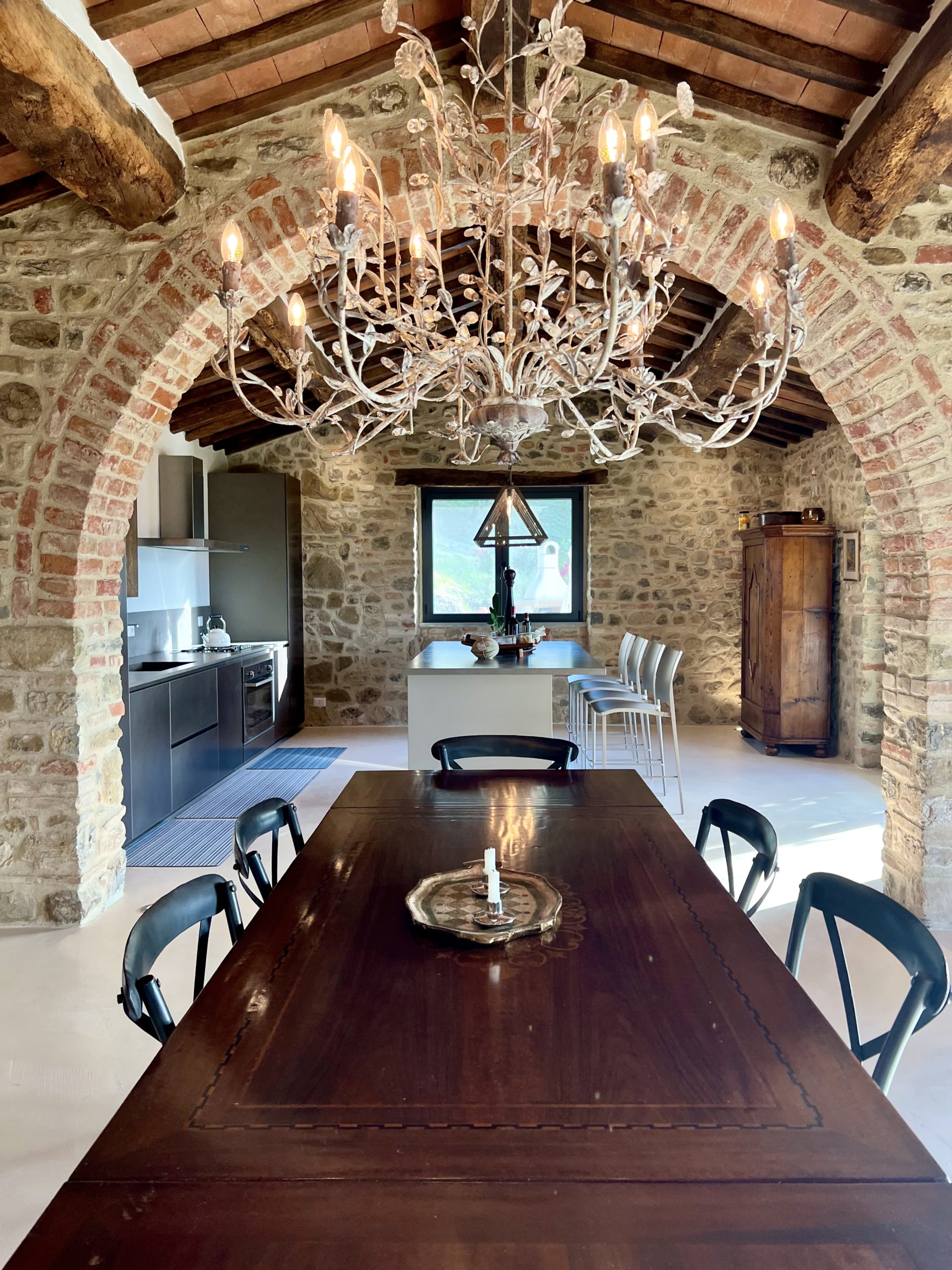
In northern Umbria, you could pick something north of Perugia. In southern Umbria, you could stay near Todi or Spoleto.
On my recent visit, I stayed near Umbertide (north of Perugia) for a week, mostly because I was enamored with this lovely villa . I had no problem day tripping to where I wanted to go, though visiting southern Umbria was a long day out.
Northern Umbria also has the advantage of allowing you to take a day trip to Tuscany’s gorgeous Val d’Orcia region, which is just across the border.
For example, you could easily visit both Montepulciano and Pienza , which I did one day.
READ : One Week In Tuscany Itinerary
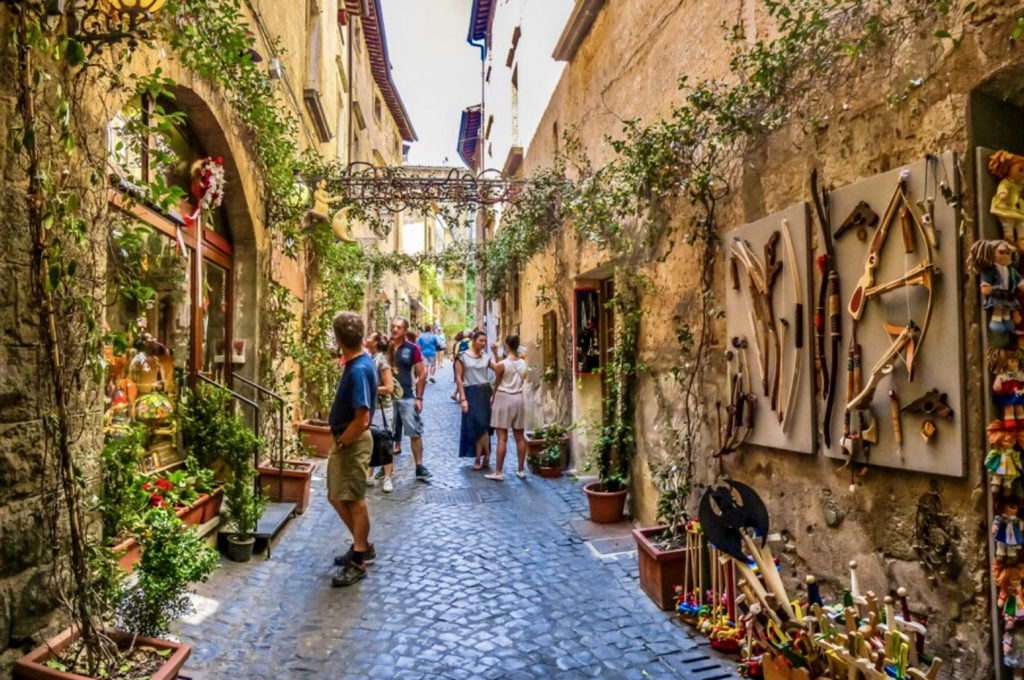
Make sure you’re not too far afield from a town, so that you can go to the town’s conad (grocery store). In the hill towns, the conads are usually in the lower and more modern part of the town.
You can typically pick up produce, cured meats, cheeses, and pasta in the historic centers.
If you’re more of city person, you could opt to stay at hotels in Perugia ( Locanda della Posta Boutique Hotel or Castello di Monterone ) and/or Orvieto ( Palazzo Piccolomini or La Badia di Orvieto ).
Some other lovely hotels in Umbria that you might want to consider are:
- Palazzo Bontadosi Hotel & Spa (Montefalco)
- Borgo della Marmotta (near Spoleto)
- Castelo del Reschio (near Umbertide)
- Nun Assisi Relais & Spa (Assisi)
- Borgo dei Conti Resort Relais & Chateaux (near Perugia)
- Valle di Assisi Hotel & Spa (near Assisi)
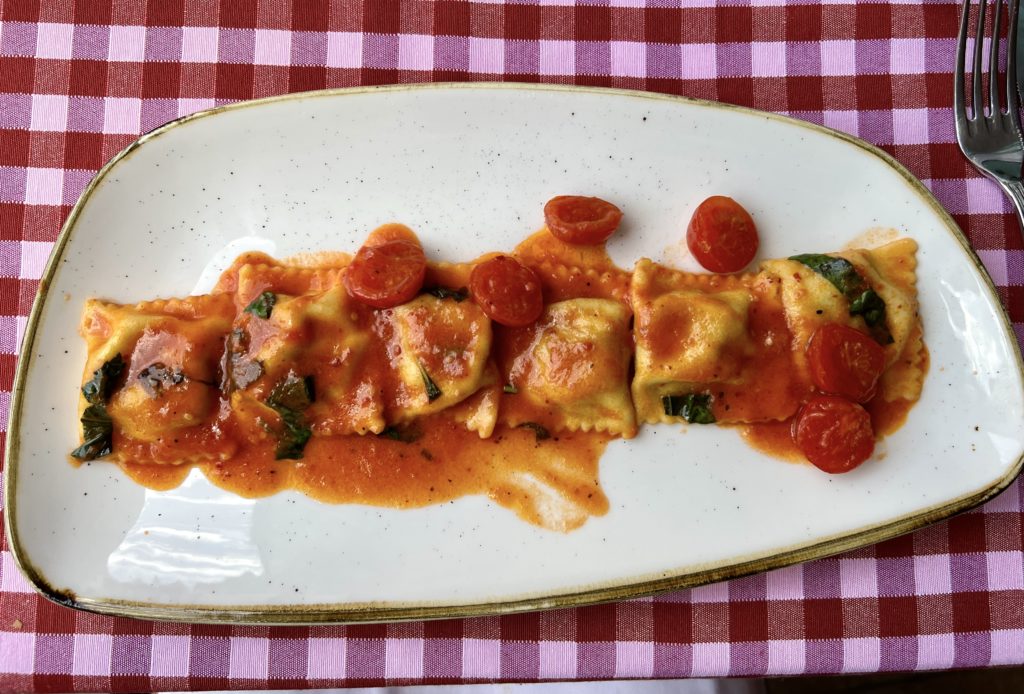
4. What To Eat In Umbria
Umbria is one of Italy’s best culinary secrets, specializing in farm to table cuisine. The region is not known for elegant dining.
Instead, it’s simple, honest, and tasty. You’ll find some amazing traditional trattorias.
You can sample gold-green olive oil, rich red wines, roasted pork, diverse grains, and unmatched salumi. Many dishes involve precious ingredients like black truffles from Norcia, which are lavishly used in season.
The classic Umbrian dish is porchetta, which is a juicy roast of pork tightly rolled around garlic and herbs and cooked on a spit.
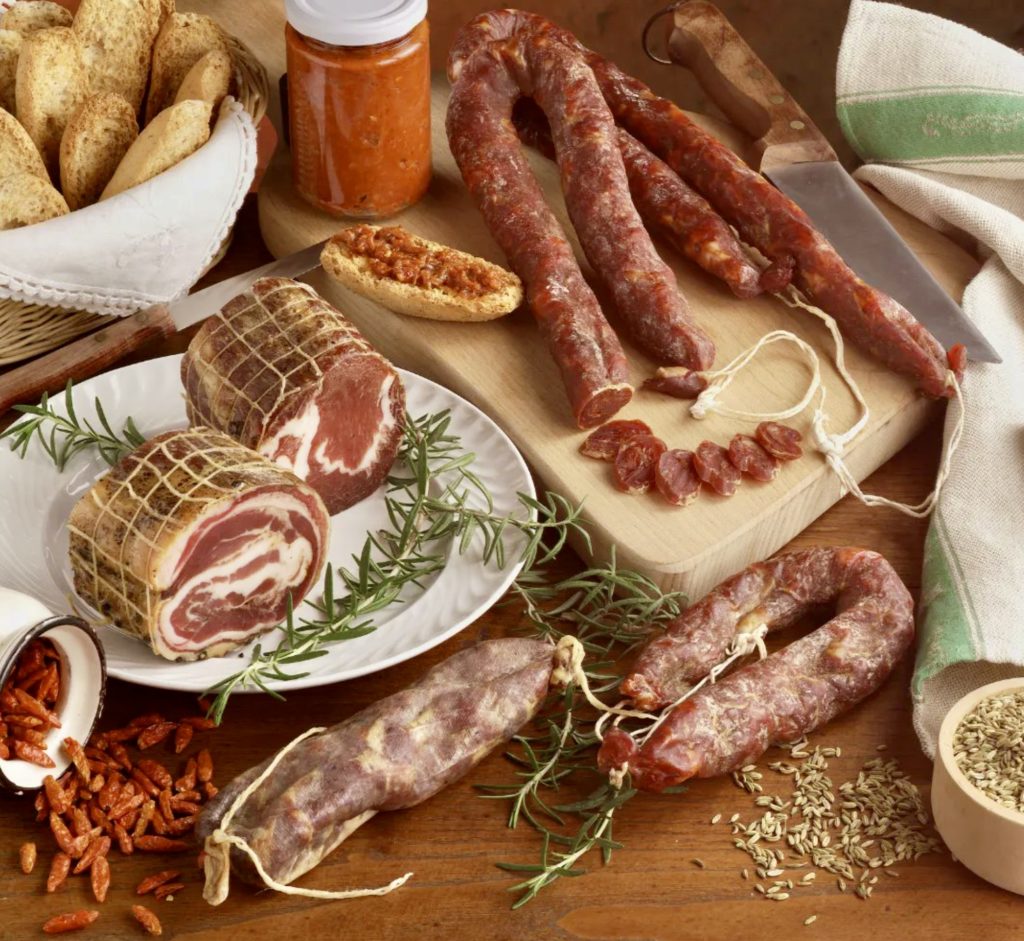
In Umbria, fresh pasta is made of nothing more than flour and water. Even without the eggs, the past is tender and springy. The different types include ciriole , strangozzi , umbrici , and picchiettini .
The best wines in the region are the Montefalco Sagrantino and the Forgiano Rosso Reserve.
5. When To Visit Umbria
July and August are the busiest months in Umbria. I wouldn’t go then. It’s also ungodly hot in the summer with temperatures over 100 degrees.
Try to visit in the shoulder season — April, May, Or October. I was just there in May and it was already in the 80s by mid day. I also didn’t have a drop of rain.
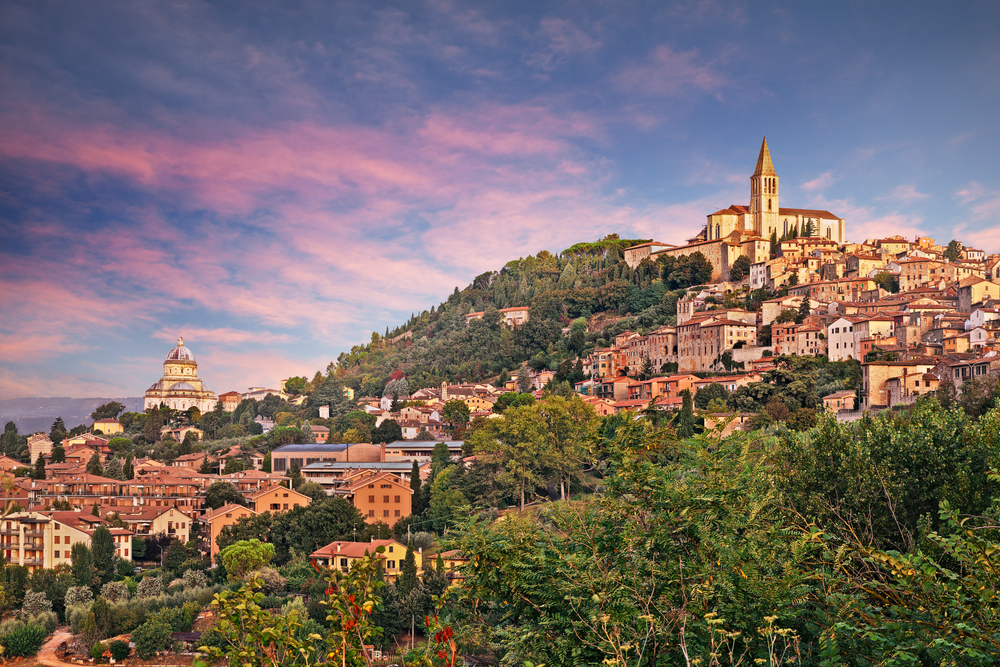
One Week In Umbria Itinerary
Now, with that preamble, let’s get down to business.
Here’s how I suggest spending one perfect week in Umbria. I also give you tips on where to eat and where to stay (other than the hotels mentioned above).
Day 1: Perugia
Begin your Umbria vacation in the historic town of Perugia, the capital of the region and the only city in Umbria.
Perugia has a rich history dating back to the Etruscan era and is often overlooked as a tourist destination. Despite this, it is one of Italy’s most vibrant and fascinating cities.
To access the ancient underground city of Perugia, take the modern-day escalators from Piazza Partigiani to Piazza Italia. Perugia sits atop a steep hill, and its streets resemble long stairways.
The medieval Baglioni district, which is car-free, is completely underground and is a must-see destination for anyone visiting Perugia.
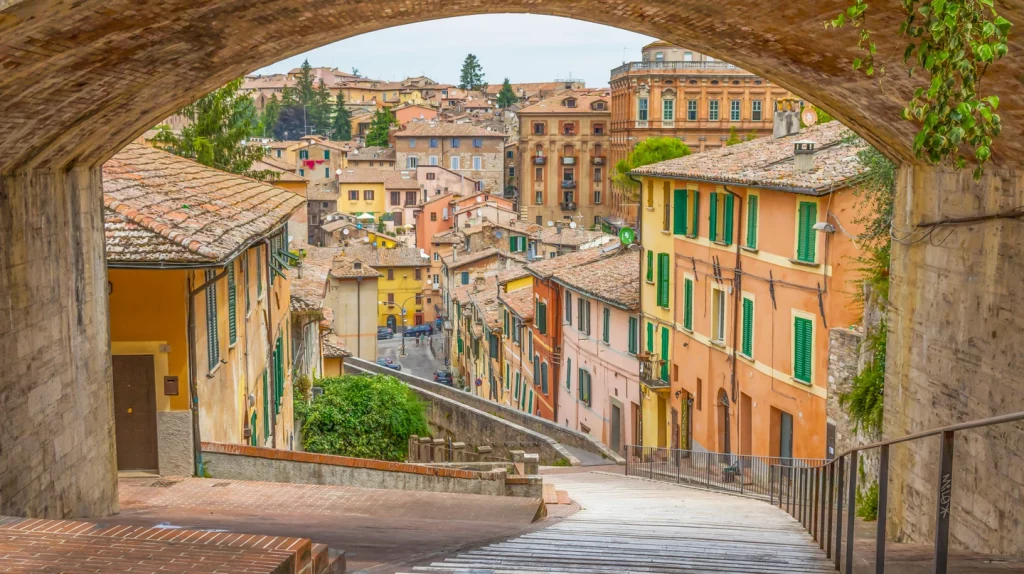
Piazza IV Novembre is Perugia’s lively main square, home to Perugia Cathedral and the Palazzo del Priori. The 13th century fountain is a masterpiece with carvings described as “one of the most powerful medieval representations of human life.”
For a nice view of the square, hang out on the steep steps of Perugia Cathedral. The interior of the church isn’t all that interesting. But the complex houses a museum with masterpieces by Luca Signorelli and Arnolfo di Cambio.
The Palazzo del Priori is a magnificent building between the Piazza Novembre IV and Via Vannucci, Perugia’s main drag. It houses the Town Hall and the National Gallery of Umbria (on the third floor).
You can admire late 13th century frescoes in the notaries’ chamber of the palace. The chapel, the Capella dei Priori , was frescoed by Perugino, Perugia’s native son. He was the teacher of Raphael , who would later work in the Vatican Museums .
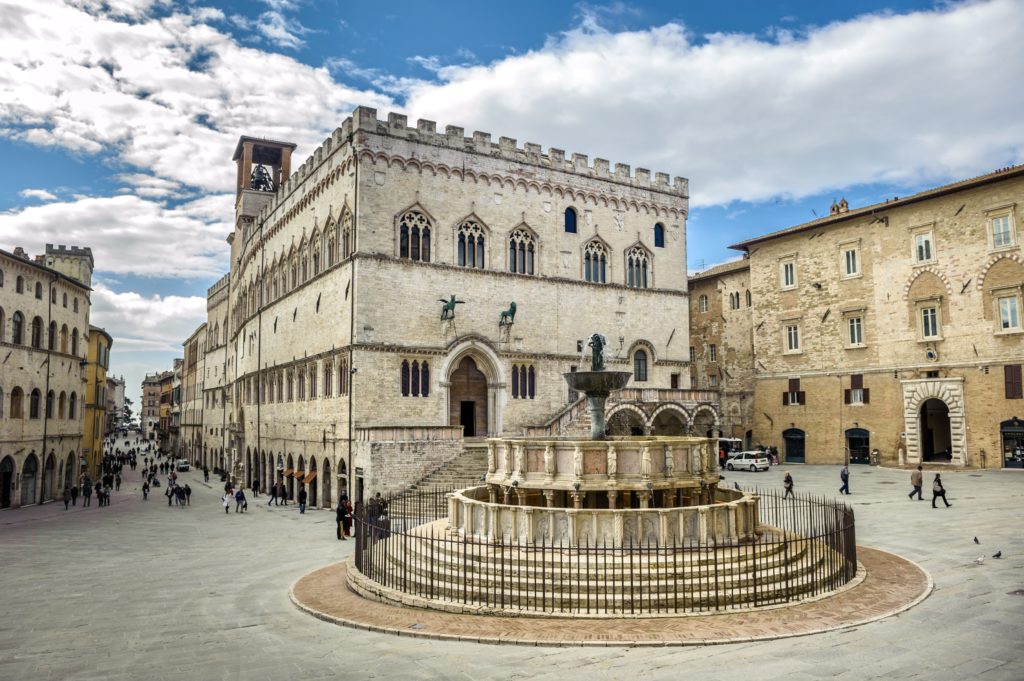
The National Gallery is the best museum in Umbria. It may be the least known of Italy’s best museums .
The museum houses works from the 13th to 19th centuries. You’ll find works by such luminaries such as Duccio, Pisano, Arnolfo di Cambio, Perugino, and Pinturicchio.
After you get your art fix, take a stroll down Corso Vannucci. It’s Perugia’s busiest and most elegant street.
Like so many Italian destinations, Perugia is home to a handful of beautiful churches besides the cathedral that are worth a visit.
South of the centro storico is the atmospheric 10th century Basilica of San Pietro complex. The entrance courtyard is dominated by a Gothic-Renaissance campanile.
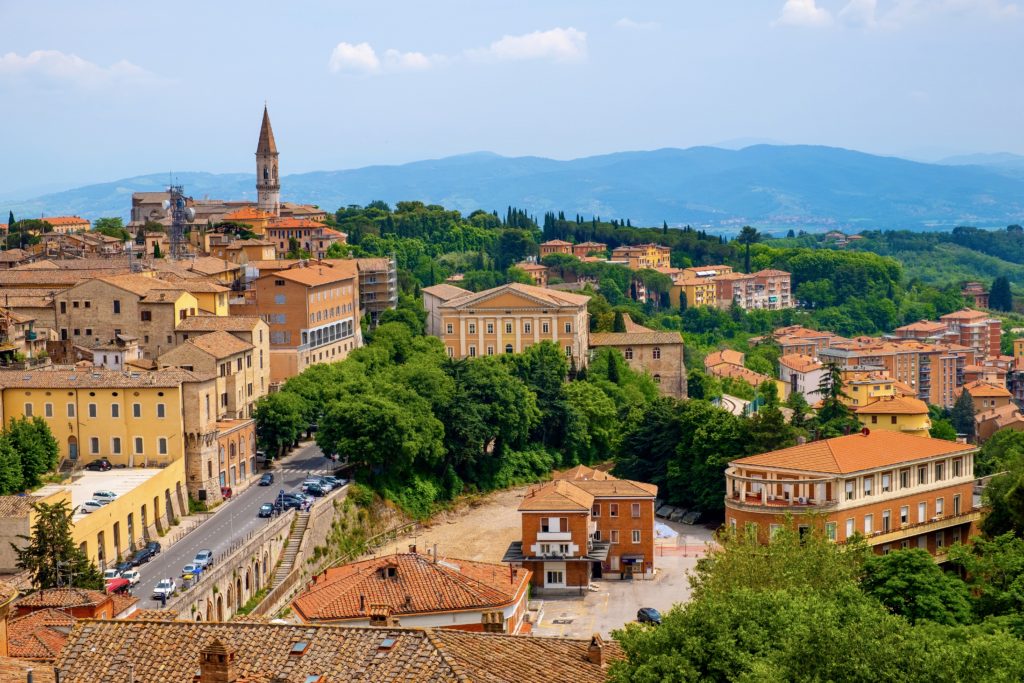
Inside, you’ll find a 16th century coffered ceiling, a richly carved wooden choir, 5 paintings by Perugino, and works by Guido Reni.
If you’re a history buff, you may want to visit Perugia’s Archaeological Museum. This delightful little museum is located in the Piazza Giordano Bruno in the old convent of San Domenico.
The entrance is to the left of the church. The museum has two sections, the Etruscan-Roman section and another dedicated to prehistorical artifacts.
One notable piece is the bronze statue of the Roman general Germanicus from the 1st century.
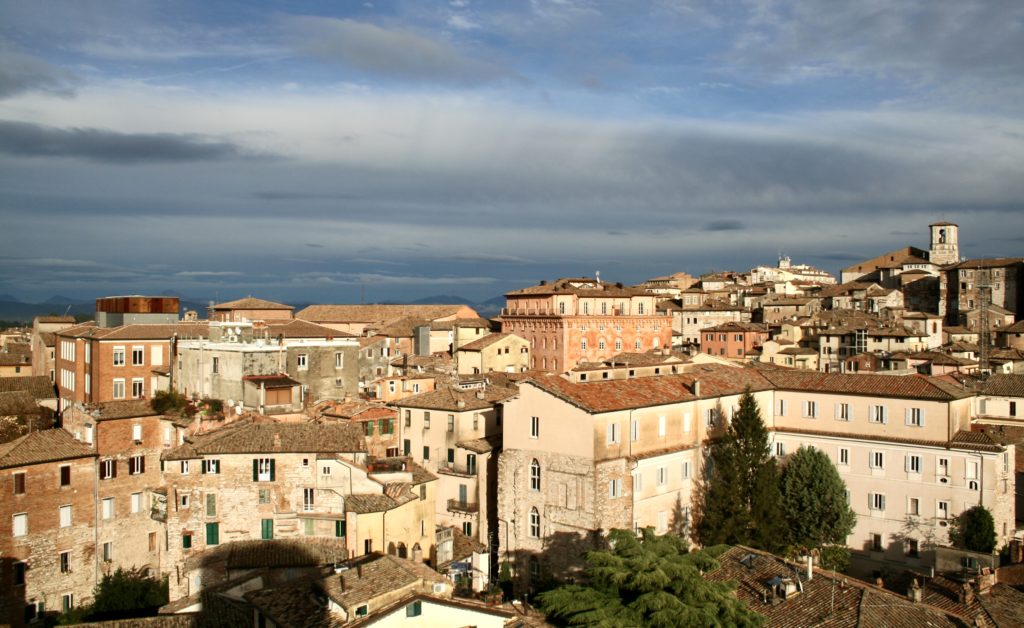
If you want a climb, head to the Sciri Tower. It’s the only medieval tower in Perugia and you’ll have fine views from the top.
For restaurants in Perugia, check out Osteria a Priori or, for a splurge, the Michelin-starred restaurant Casa Vissani .
While you’re in Perugia, you can take a guided walking tour to learn about Perugia’s history and attractions. You can also book a guided food tour or take a market tour and cooking class .
Perugia is known for its beloved chocolates and pastries. Those with a sweet tooth can tour the Perugina Chocolate Factory just outside the city. It produces the famous silver wrapped chocolate and hazelnut candy known as “Baci” (which means kisses in Italian).
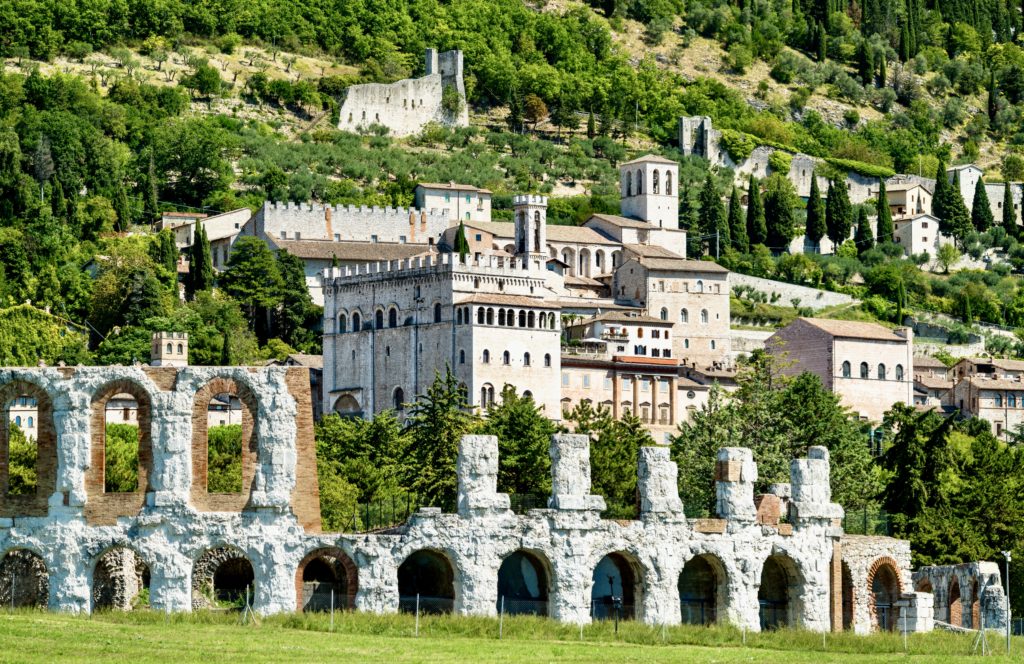
Day 2: Gubbio
Gubbio is a gorgeous medieval town with a spectacular setting in northeast Umbria. It’s a must visit destination with one week in Umbria.
The stony town is practically carved into the side of Mount Ingino. I just loved it!
Gubbio seems trapped in the Middle Ages, with block after block of pinky-beige Romanesque and Gothic architecture.
The town is famous for its Roman ruins, beautiful Piazza Grande, Palace of Consuls, and the thrill-inducing funicular ride up to the Basilica of Saint Ubaldo.
The Roman Theater was built in the middle of 1st century B.C. The theater is the second largest surviving Roman theater in the world. It’s still used today as a concert or performance venue, seating almost 6,000 people.

You can visit the ruins for 3 euros. You’ll get a token to put in the turnstile for entry. There are also public restrooms around the corner from the ticket office.
Piazza Grande is Gubbio’s beautiful showpiece square. This “suspended square” was the result of an ambitious 14th century urban development plan.
It was conceived as a monumental churchyard, connecting the Palazzo dei Consoli with the Palazzo del Podesta.
On the south side of the piazza, you have a panoramic views over the lower town and valley beyond. On the other side, you’re ushered in to the Gubbio’s charming cobbled streets.
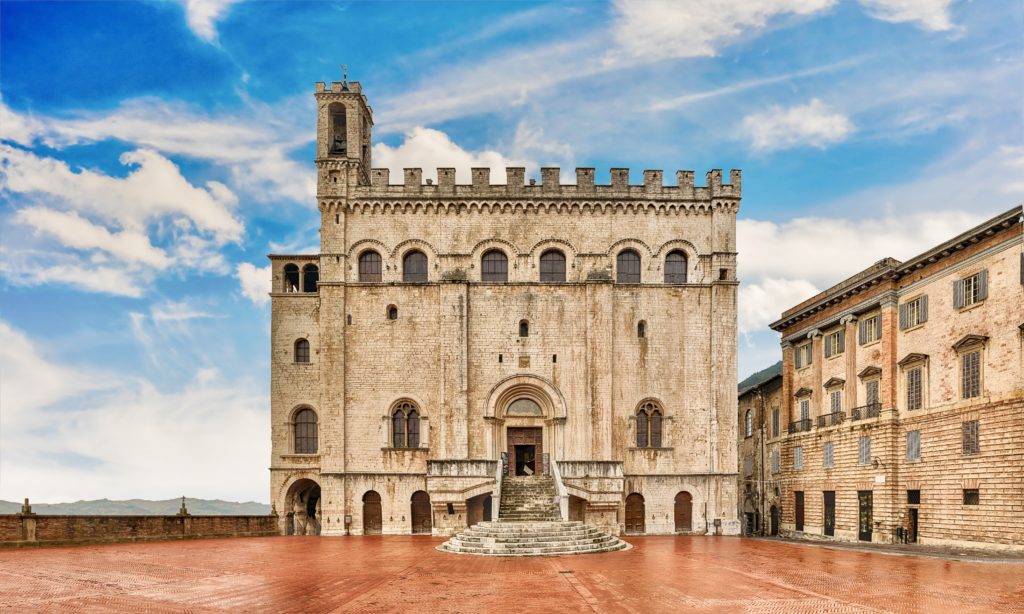
You should definitely visit the 14th century Palace of the Consuls . It’s a striking and well preserved medieval civic building designed by Angelo da Orvieto.
In the Middle Ages, the palace was the seat of the courts and the consuls who governed the city. Today, the palace houses the town’s Civic Museum.
The most significant pieces in the collection are the 2nd century B.C. bronze Iguvine tablets. They’re effectively the Rosetta Stone of Umbria’s ancient language.
Don’t forget to step out on the viewing terrace for lovely panoramic views. The museum is open from 10:00 am to 6:00 pm. The ticket price is 7 euros.
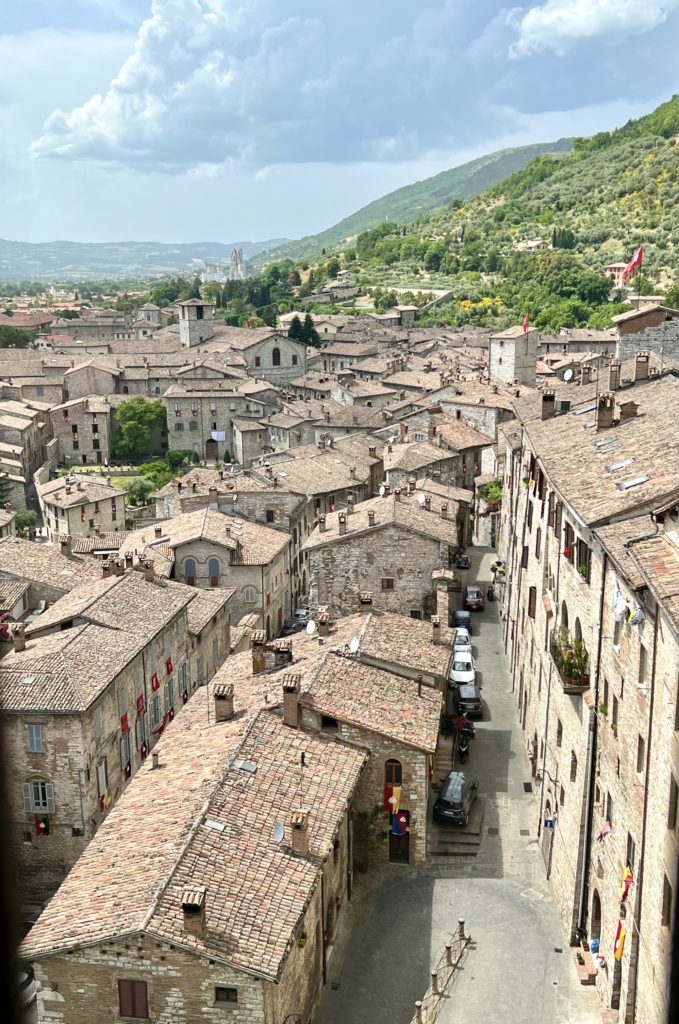
While in Gubbio, don’t miss the chance to explore the town’s impressive collection of churches, including Gubbio Cathedral, the Basilica of St. Francis, and the Church of St. John the Baptist.
For a breathtaking view of the town and surrounding countryside, take a ride on the funicular up to the top of Mount Ingino. However, be aware that the iron bird cage that carries you up the hill can be intimidating for those with a fear of heights.
Once at the top, you can visit the Basilica of Sant’Ubaldo, dedicated to the town’s former bishop and patron saint. Take your time to enjoy the stunning panoramic views before making your way back down to town.
To get the full scoop on Gubbio’s must see sites, you may want to book a guided walking tour .
If you want to stay in Gubbio, a excellent option is the Park Hotel ai Cappuccino . It’s a small luxury hotel that is just beyond the city walls. Gubbio’s Hotel Relais Ducale is another option, set inside the ducal palace.
Day 3: Assisi + Spello
On day 3 of your 7 days in Umbria, you’ll visit Assisi and Spello. The towns are only 7 miles apart. So, if you start early, you should be able to see both easily.
The pilgrimage town of Assisi is probably the best known town in Umbria. It’s a beautiful UNESCO-listed town perched on Mount Subasio. The centro storico is off limits to vehicles except for residents.
The best parking places are at the Port Nuova or Matteotti lots. You’ll see signs as you approach the city.
Assisi is home to Roman ruins, frescoed churches, sun-bleached piazzas, and a craggy lookout fortress. Assisi has a perfectly preserved medieval quarter where bougainvillea vines tumble over limestone.
Assisi is famous as the birthplace and home of Saint Francis, a medieval monk and mystic. He is Italy’s most penitent saint, a man who dedicated his life to poverty, humility, simplicity, and anti-materialism.
Upon Francis’ death, a great basilica was built in his honor. It’s the top attraction in Assisi.
Visiting the Basilica of St. Francis of Assisi is a must do and is absolutely free. But you have to have your arms and knees covered. They will, however, give you a disposable cloth to cover yourself if you’re in shorts.
You can visit the crypt (where St. Francis is buried), the lower basilica, and the upper basilica.
The church is spectacularly covered in vibrant frescos by some of the most famous artists of the early Renaissance — Simone Martini, Pietro Lorenzetti, Cimabue, Pietro Cavallini, and (possibly) Giotto.
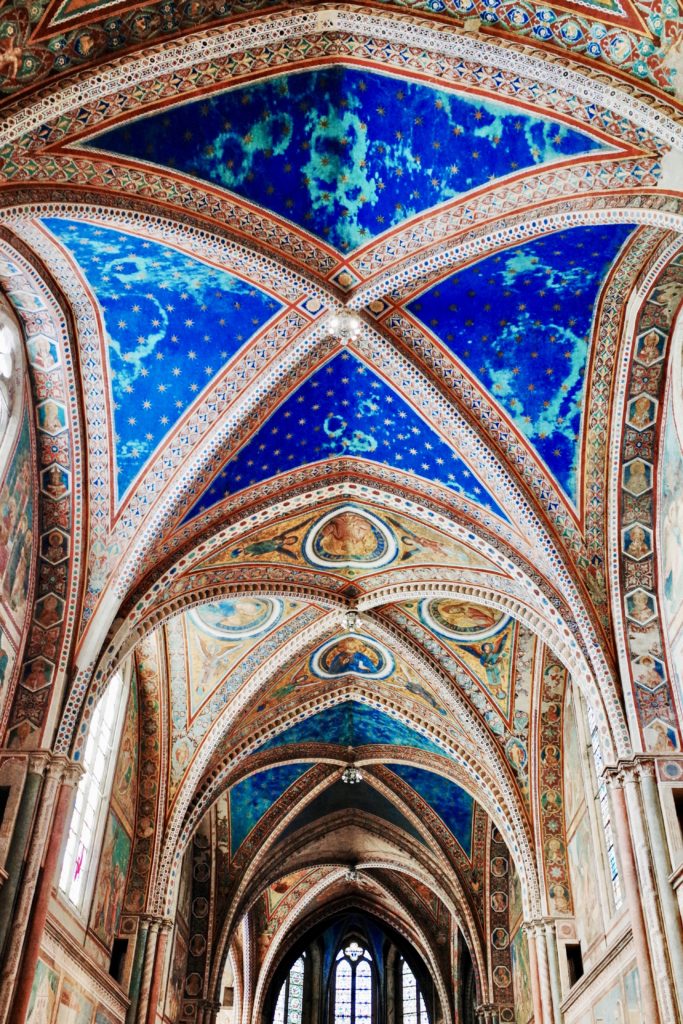
Here’s my complete guide to the Basilica of St. Francis of Assisi . Aside from the beautiful basilica, Assisi has loads of other attractions.
Piazza del Commune is Assisi’s main square. It’s a bustling hive of activity, filled with cozy restaurants, panini shacks, ceramic shops, and the smell of roasted chestnuts. You’ll also find huge caches of Franciscan knick-knacks, if you need a souvenir.
The piazza is home to the Temple of Minerva, ruins of the Roman Forum, and the Palazzo del Capitano del Popolo and its tower.
The temple was once the centerpiece of Assisi. It dates from the 1st century B.C. and dominated Assisi’s Roman Forum.
It was likely dedicated to Caster and Pollux. The temple has six massive Corinthian columns at the front that rest directly on the steps.
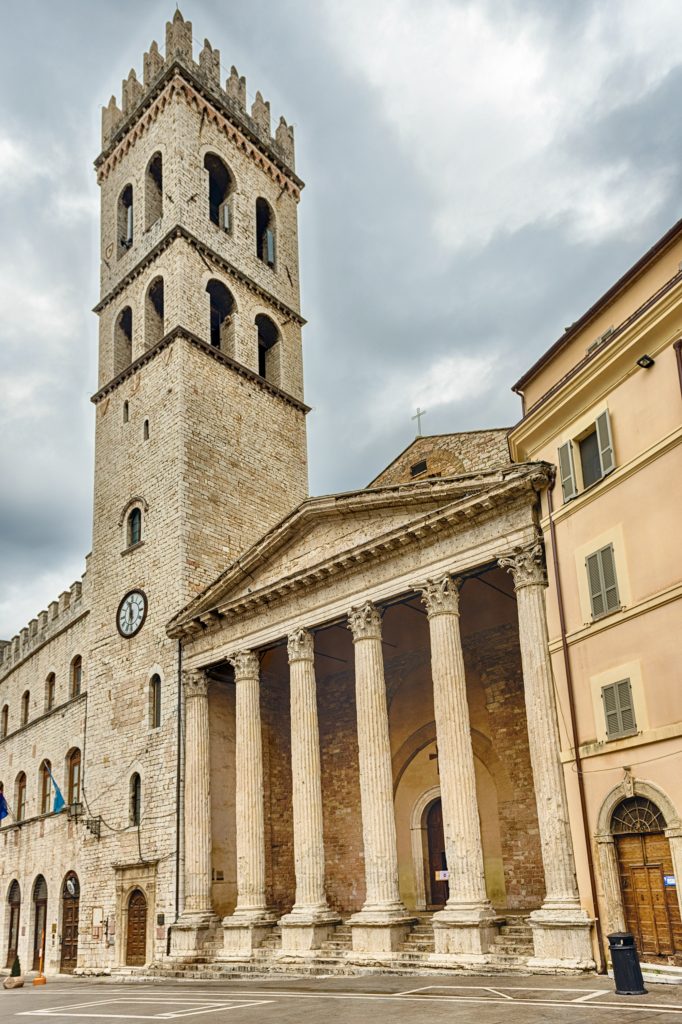
The ruins of Assisi’s Roman Forum are under the Piazza del Commune. The forum was once the hub of the social, economic and political life of ancient Asisium.
The central part of the forum contains the remains of a tribunal and podium, where speeches were given.
You’ll also find a monumental cistern, a small temple dedicated to Castor and Pollux, a monumental fountain, the remains of a few shops, and some ancient statues.
Assisi’s Duomo is the Cathedral of San Rufino. It’s where St. Francis and St. Clare, his female cohort in spreading the Franciscan word, were baptized.
Inside, you can visit the crypt where St. Francis once prayed. And you should definitely climb the bell tower for great views.
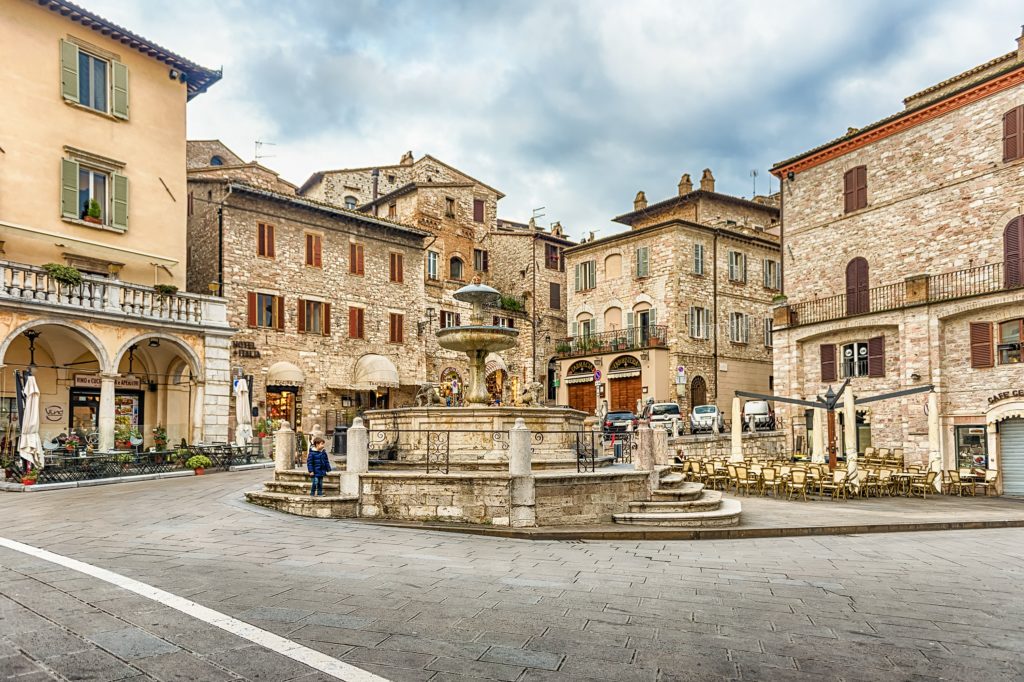
Then, head over to the Basilica of St. Clare. The church is made of pretty pink and ivory marble.
Inside, the church is dark and decorated with Giotto-esque type frescos. You can also visit Clare’s tomb.
No visit to Assisi would be complete with out a hike up to Rocca Maggiore. It’s a craggy castle begun by Charlemagne in the 13th century. There are plenty of places to get lost, tunnels, and a claustrophobic turret to climb.
To get there, you’ll have a steep hike. But it’s worth it for the majestic views of Assisi, its churches, and the Spoleto valley.
The fortress closes at 4:00 pm, so keep that in mind when planning your Assisi day trip.
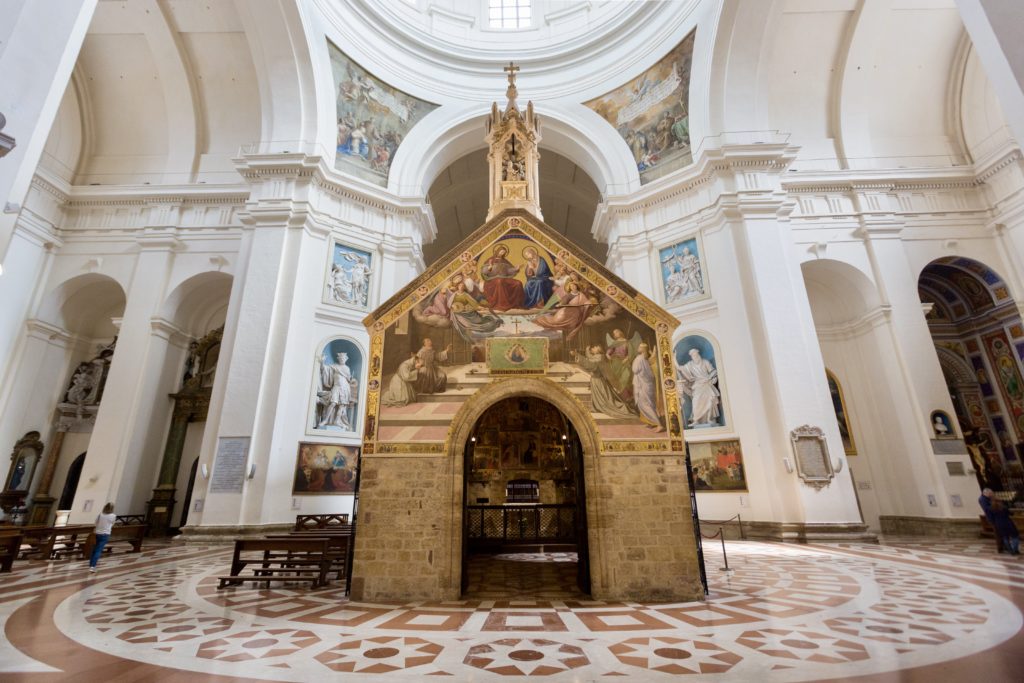
Just outside the centro storico of Assisi is another St. Francis site — the Porziuncola. It’s a tiny stone chapel on display inside the Church of St. Mary in Assisi. It’s the place where St. Francis launched his religion.
If you want to grab lunch in Assisi, Il Vicoletto is a cozy spot located down a tiny lane with great food. Locanda del Podesta is a quaint restaurant with old world charm near the Basilica of St. Francis.
When I visited Assisi, I booked this 2.5 hour private Assisi tour , which was fantastic. The guide was a fount of knowledge about Assisi and its history. You can also book a 3 hour small group walking tour .
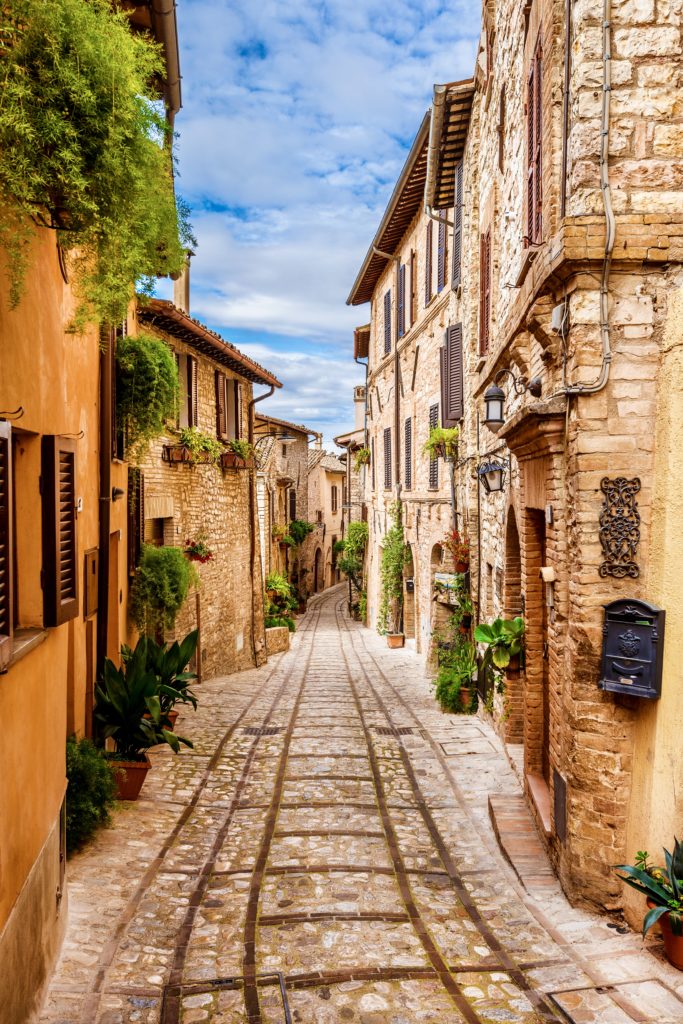
Spello is about 15 minutes from Assisi.
It’s a stunning village with pink limestone buildings, cobbled streets, and flowers galore. It holds the official designation of one of Italy’s most beautiful villages.
You enter the town through the Roman Porta Consolare. The town seduces with winding medieval streets, crumbly old churches, and Roman ruins. Every street in Spello is a postcard perfect feast for the senses.
You’ll be dazzled by rose-colored stone walls, bright terracotta roof tiles, stone pathways, and weathered wooden doors.
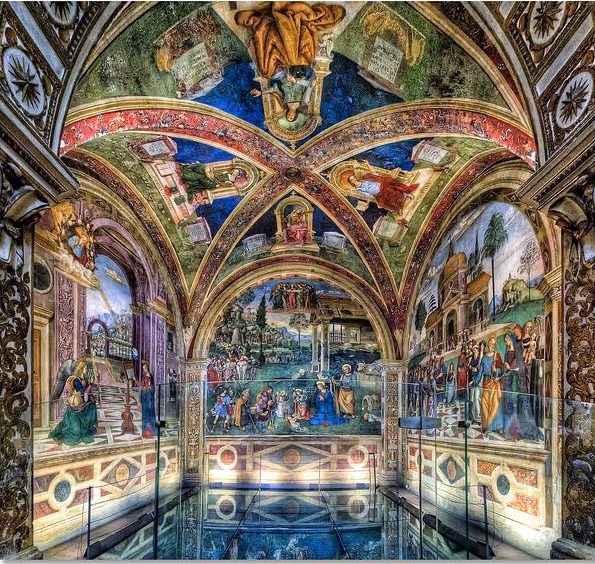
The Church of Santa Maria Maggiore is the top attraction in Spello. It houses a Madonna and Child and a Pietà by Perugino.
You can also visit the spectacular Baglioni Chapel. It closes at 4:00 pm, so make sure you arrive in Spello before then and make it your first stop.
The chapel is famous for its 16th century Renaissance frescos by Pinturicchio, telling stories of the life of Mary and Jesus. The chapel also has a pavement of Deruta ceramics.
You should also visit the Villa of Mosaics. Discovered by chance in 2005, it’s one of the most important archaeological discoveries of the last 20 years.
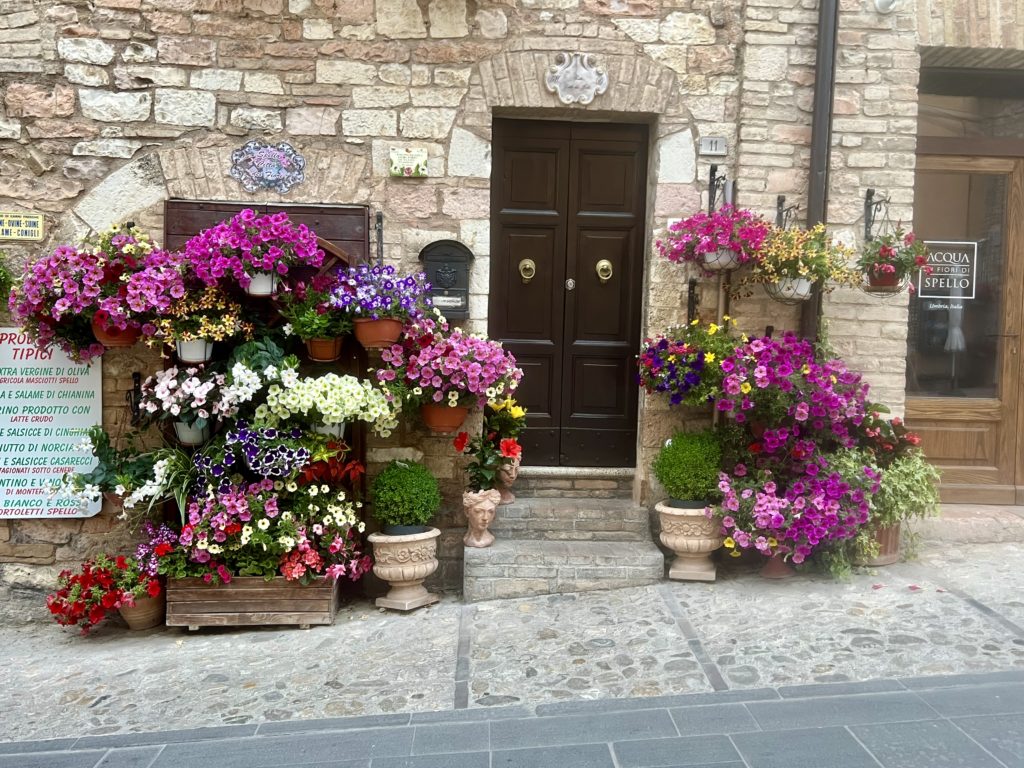
After excavation, the museum opened 2018. There’s a series of rooms named after their mosaic decoration.
You can book a guided walking tour in Spello to learn about the town’s Roman mosaics and Renaissance masterpieces.
If you want to stay in Spello for dinner, check out La Cantina di Spello or Il Pinturicchio . If you want to overnight in Spello, check out La Bastiglia .
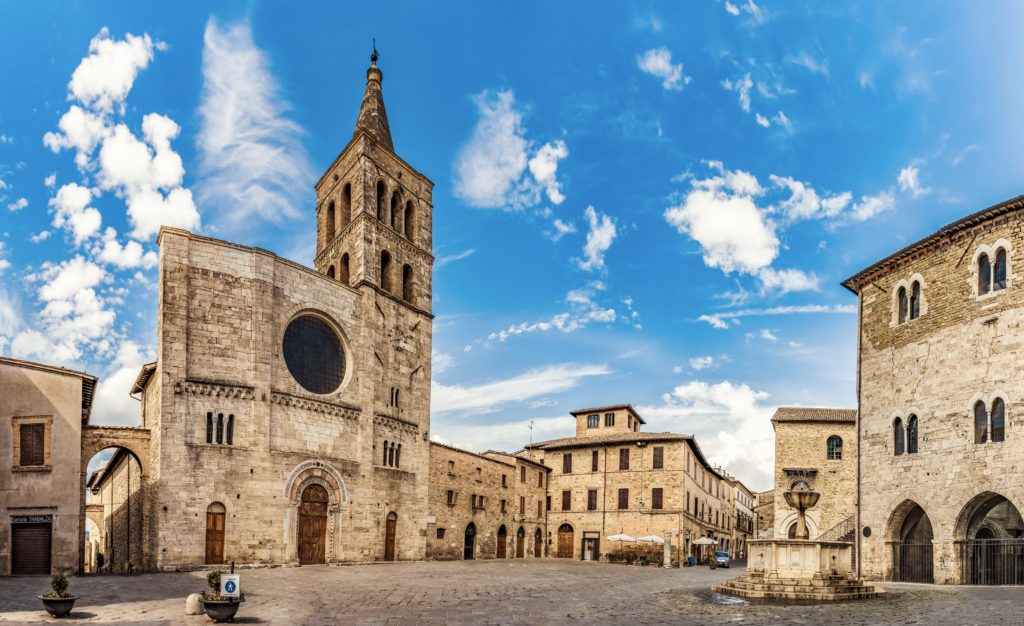
Day 4: Bevagna + Montefalco
On day 4 of your one week in Umbria itinerary, visit the towns of Bevagna and Montefalco. The towns are only 10 minutes apart. These off the beaten path towns will give you a taste of authentic Umbria.
Bevagna is a beautiful medieval village that still bears signs of its Roman origins. In the 1st century, it was a Roman municipality on the Via Flamina.
A Roman arch, the Porta Foligno, beckons you into Bevagna’s cobbled streets . The quaint medieval town has Romanesque churches, Roman mosaics, a cinema ready piazza, and excellent trattorias.
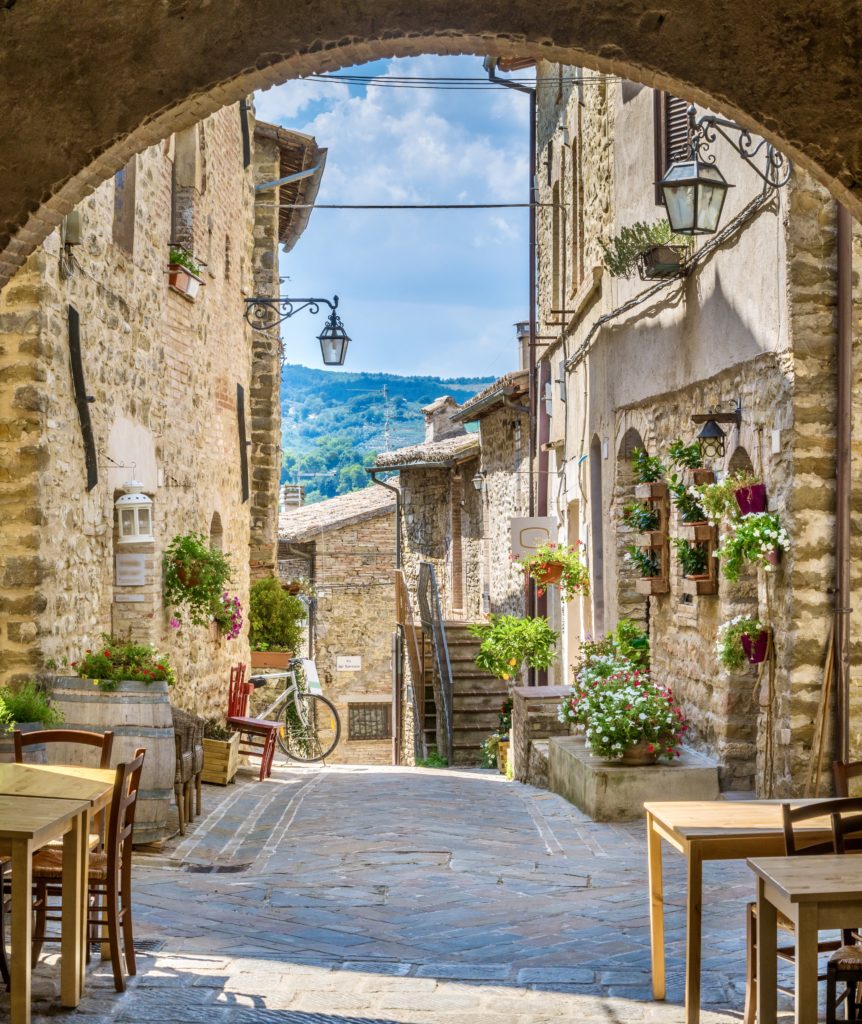
Piazza Silvestri is the town’s central medieval square. It’s home to the 12th century Palazzo dei Consoli, the Collegiate Church of S. Michael, and the 19th century Teatro Torti.
The most important Roman landmarks in Bevagna are the Roman Theater and the Roman Temple. The temple is where you’ll find black and white mosaics dating from the 2nd century mosaics depicting sea creatures.
A good place to eat in Bevagna is La Bottega di Assù . You can also book an olive oil tasting tour , to try out Umbria’s “green” olive oil. Or, take a combination biking and food tour .
Just 5 minutes from Bevagna is the adorable town of Torre del Colle. You could also pop in there for lunch at Serpillo on your way to Montefalco.
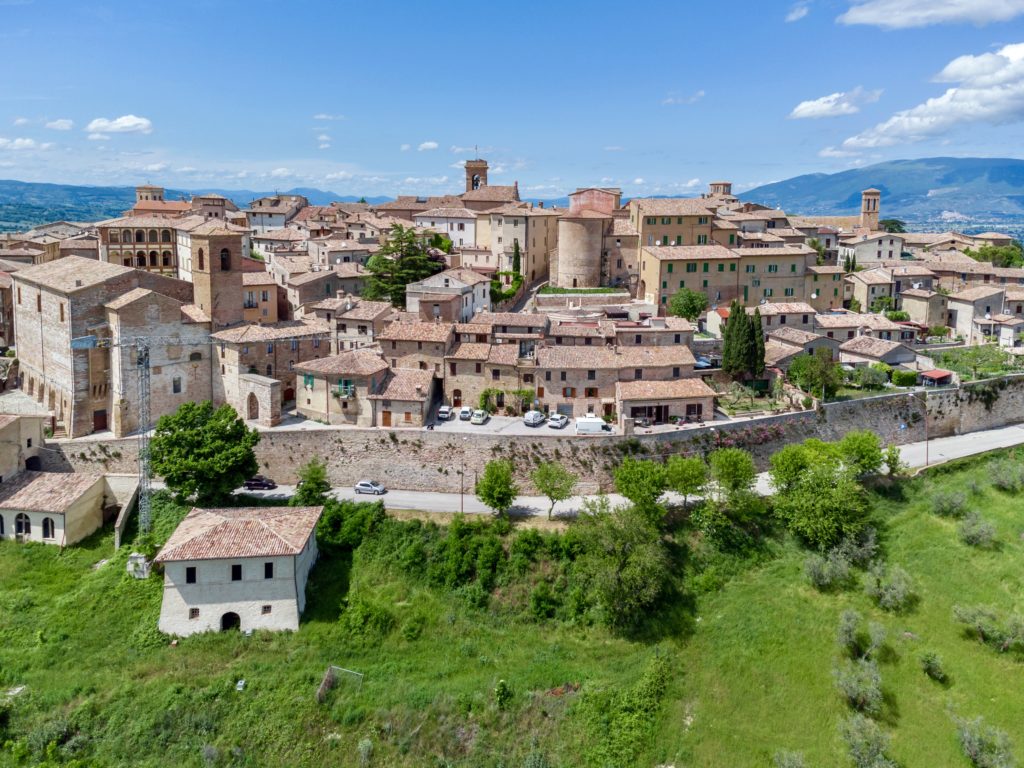
After a satisfying lunch, make your way to Montefalco. This charming village, perched atop a mountain in the Clitumnus Valley, is often called the “Balcony of Umbria” for its stunning vistas.
From within the walls of this 14th-century town, you can gaze out for miles, taking in views of Perugia to the north and Spoleto to the south. For the best view, head up the arduous climb to the Torre Communale. Trust me, the effort will be worth it.
Once you’re back on solid ground, take a stroll through Piazza del Communale, the village’s central square. Surrounded by magnificent palaces dating back to the Middle Ages, such as Palazzo Langeli and Palazzo Comunale, the piazza is also dotted with coffee shops and wine bars.
Seven streets radiate out from here, so take your pick and explore to your heart’s content.
No visit to Montefalco would be complete without stopping at St. Augustine’s Church. This massive Gothic structure boasts faded frescoes from the 14th to 16th centuries and is a true treasure.
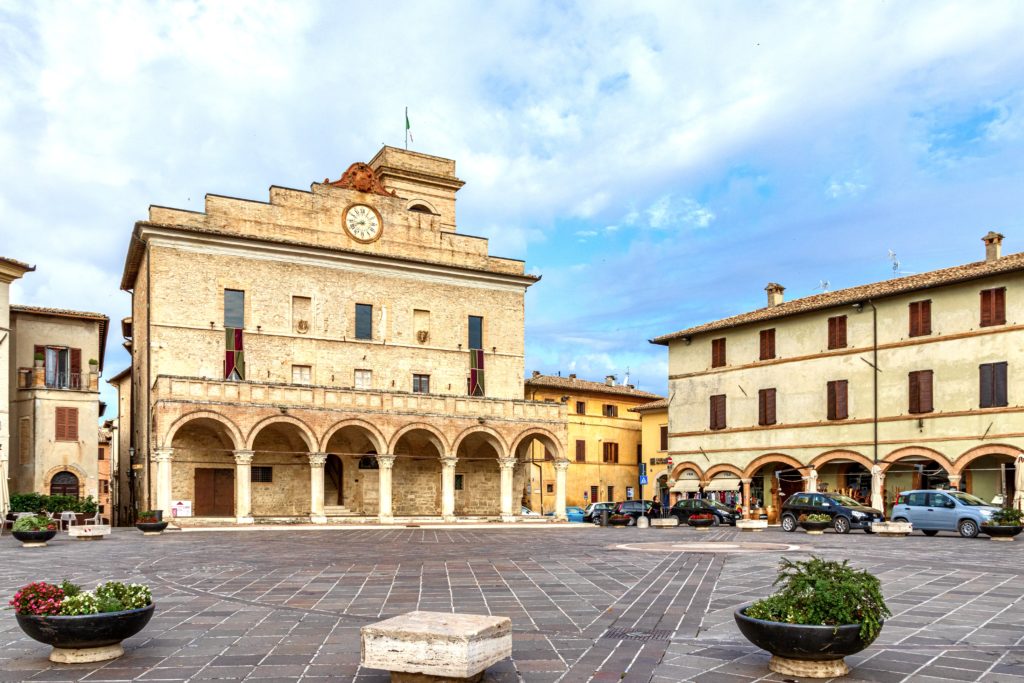
Montefalco also has a rather good museum for its diminutive size, the Museo di San Francesco. It’s housed inside a former 14th century Franciscan church.
You’ll find important work by Benozzo Gozzoli and Perugino. For example, Gozzoli painted scenes from the life of St. Francis and St. Jerome.
You may want to book a guided walking tour of Montefalco’s top medieval attractions.
If you want to grab dinner in Montefalco, L’Alchimista is a good restaurant on Montefalco’s main square. Ristorante Il Coccorone also offers up traditional Umbrian cuisine in an elegant setting.
Be sure to sample a glass of the town’s wine, Sagrantino. You can also book a wine tasting tour at a winery .
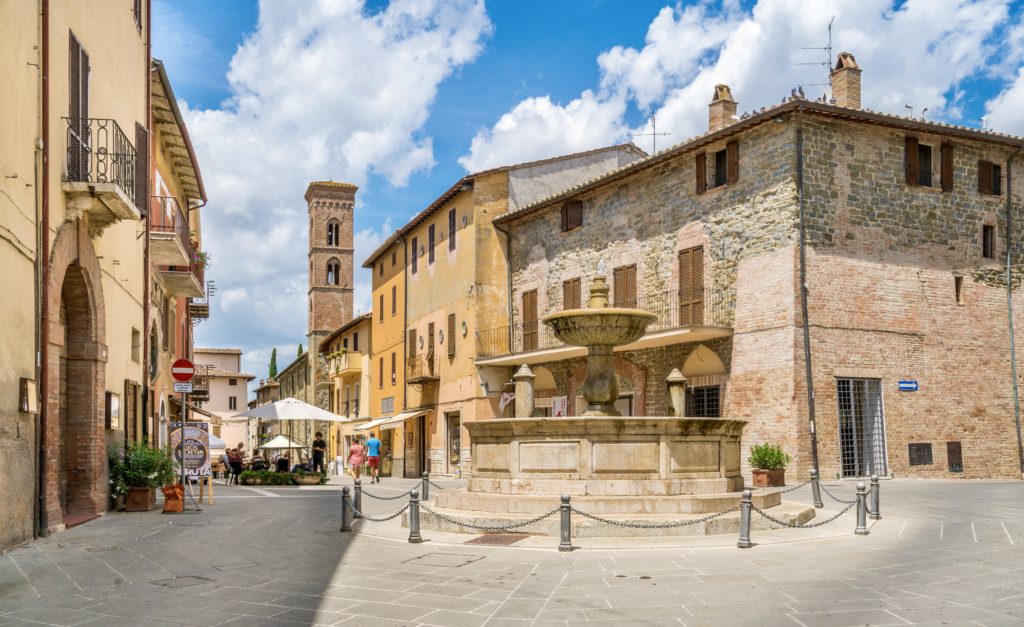
If you love ceramics, you might consider adding in a side trip to Deruta. It’s about a half hour drive from Montefalco.
Since the 14th century, Deruta has been a major ceramic center with astonishing output.
Deruta pottery dates from 1290. The pieces are characterized by a unique mother-of-pearl metallic luster.
They are decorated with floral or grotesque patterns. At first, the pottery was green and brown. But, over time, the dominant colors became yellow, orange, and blue. (Though I just purchased pasta bowls in a red peacock style.)
Most of the ceramic shops are on Via Tibernia, the main Street in the lower town. You can also visit the Museo Regionale della Ceramica .
It’s housed in the former monastery of the Church of San Francesco. Over 6,000 pieces are on display.
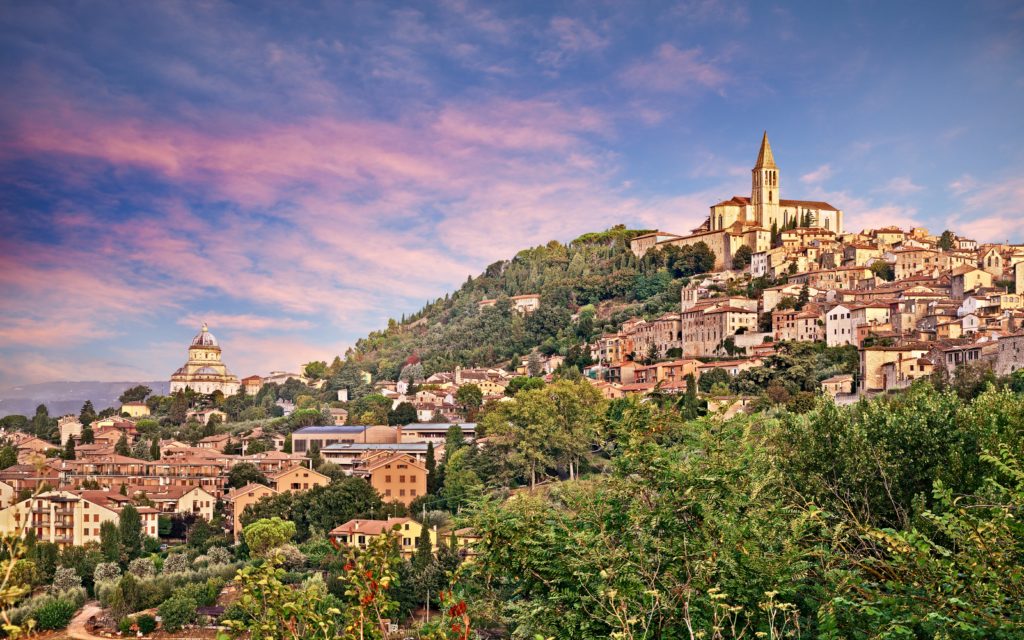
Day 5: Todi + Spoleto
On day 5 of your one week in Umbria, you’ll visit the enchanting towns of Todi and Spoleto. The towns are about 45 minutes apart.
Perched on a shelf-like hill, Todi is a beautiful town in Umbria that was once overlooked. But now it’s become quite fashionable, especially for a villa getaway.
Todi is a collage of stone houses, palazzi, and steep cobbled streets pasted onto a hillside. Much of the town dates from the Middle Ages, but there are also a few Renaissance palazzi.
Few towns are as picturesque as this warren of narrow medieval streets twisting and plunging off at every angle. Every corner is spectacular, often filled with bright red geraniums. Streets end with iron railings, offering up panoramic vistas across the valley.
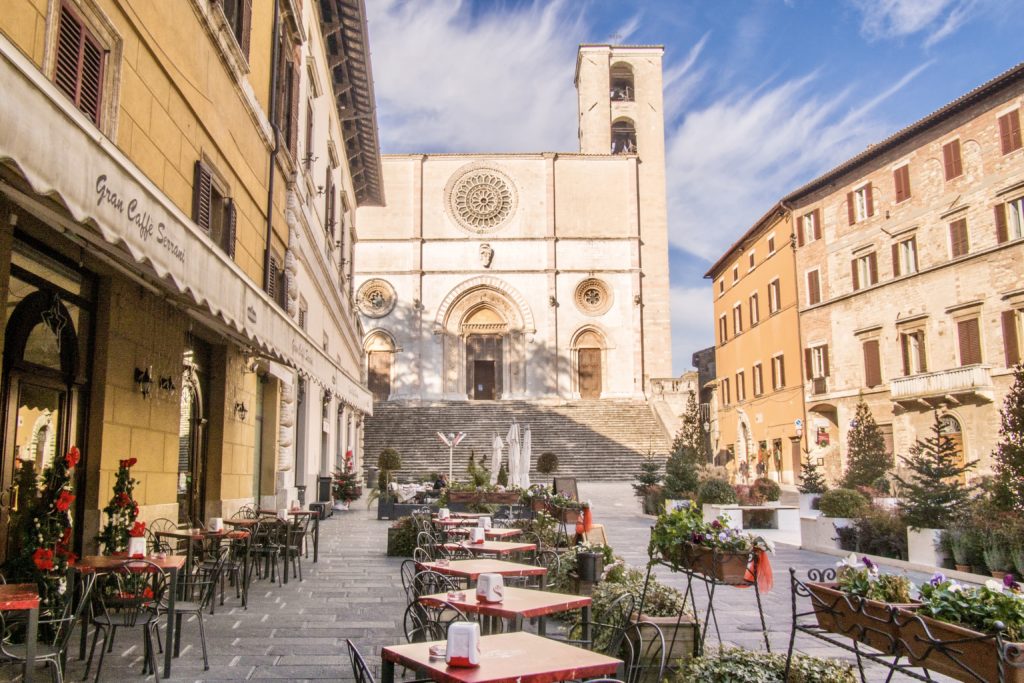
The beautifully austere Piazza del Popolo is Todi’s main attractions and one of Umbria’s prettiest squares. It’s flanked by palazzi, a duomo, and an art museum. It’s a place to sit outside with an espresso or ice cream.
The 13th century Duomo sits at the top of a broad staircase, dominating the town’s heart.
Another church to visit is the massive Franciscan shrine of San Fortunato. Inside, you’ll find rare frescoes by Masolino. You can also climb the 14th century bell tower for stunning views.
Just outside the town is the Church of Santa Maria della Consolazione, built between 1508-1609. Some historians attribute it to Roman architect Donatao Bramante and the structure does indeed have his classicizing style. The church is also a good place to park when you’re visiting Todi.
If you visit Todi, you may want to book a 2 hour walking tour or take a wine tasting class .
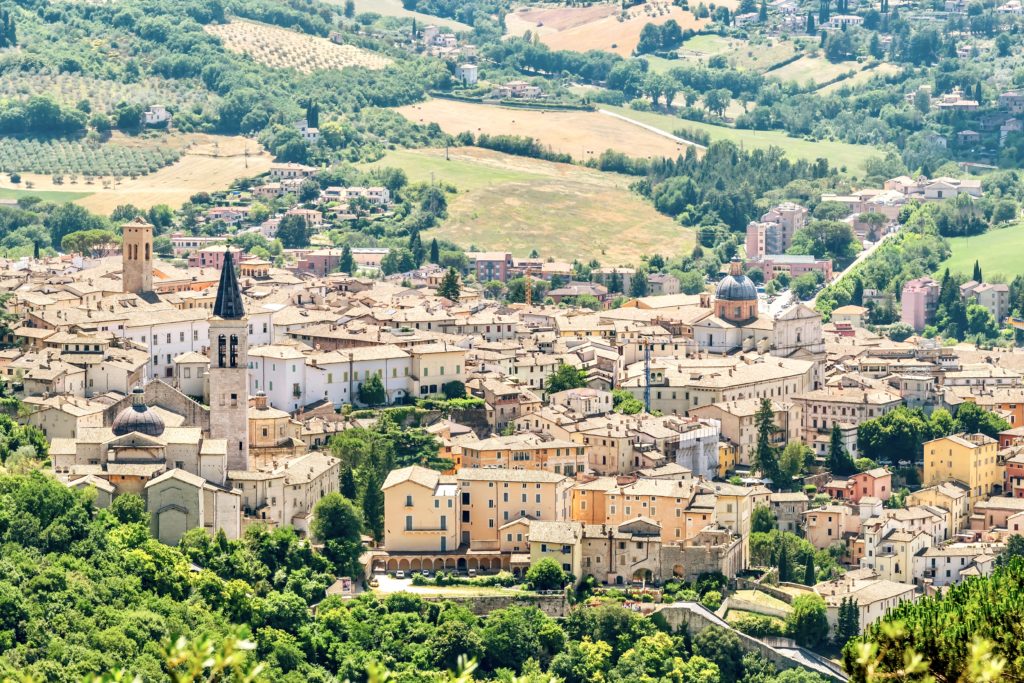
Then, drive over to beautiful Spoleto. It’s a gorgeous and endlessly intriguing Umbrian hill town. Presided over by a formidable medieval fortress and backed by the broad-shouldered Apennines, Spoleto is visually stunning.
The Etruscans and Romans each left their tangible ruins — a Roman amphitheater, a 4th century house, a simple 6th century Roman church.
Spoleto’s pale stone Duomo is photogenically set on a graceful hillside piazza. The exterior is a mix of Romanesque and Renaissance styles.
The interior received a 17th century Baroque facelift. You’ll see a beautiful Cosmati marble floor and frescoes by Pinturicchio and Fra Lippo Lippi.
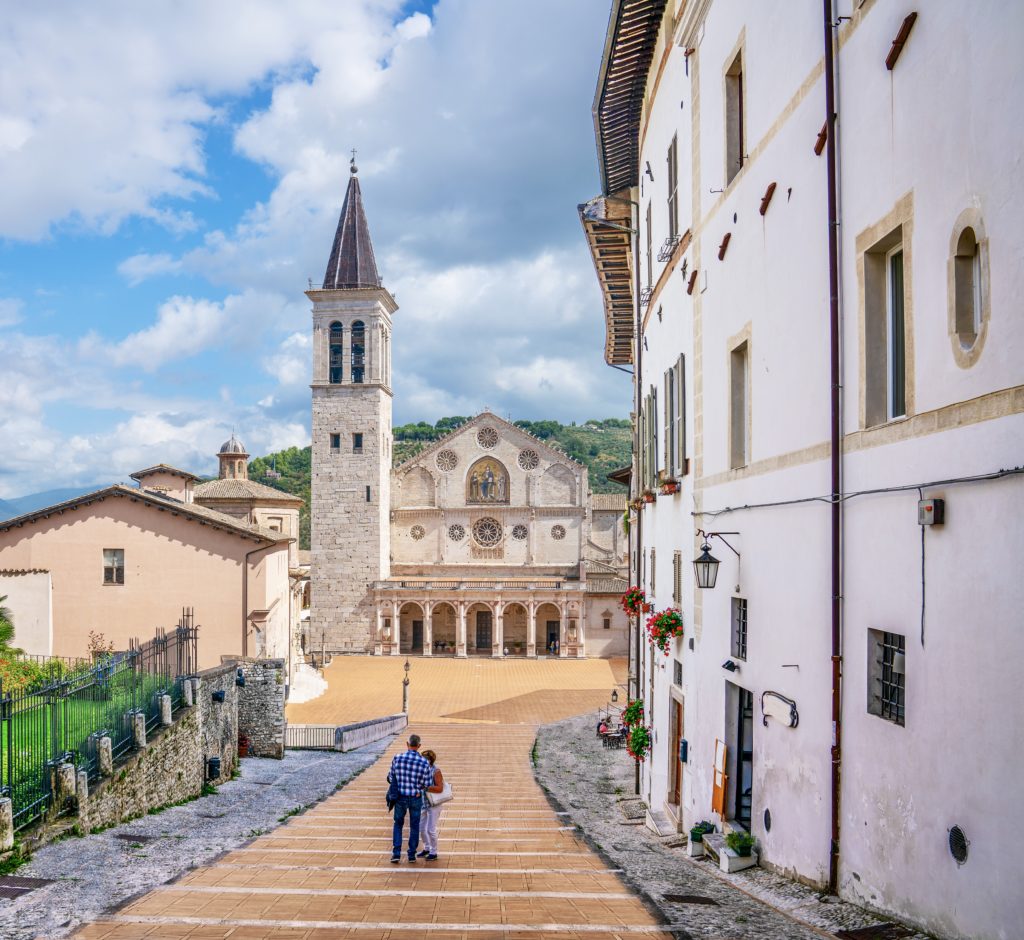
The other attention grabber in Spoleto is the Ponte delle Torri. It’s a 10 arch bridge that spectacularly spans a steeply wooded gorge.
Spoleto is famous for its F estival dei Due Mondi , Spoleto Festival. It’s one of Europe’s most beloved carnivals with contemporary music, art, dance, and theater.
There are stunning online photos of some 15,000 or so attendees crammed into the piazza in front of the Duomo. But this is a spectacle I have seen only on postcards.
For dinner in Spoleto, head to Ristorante Il Tempio Del Gusto . The local pasta is a wide-cut pasta called strangozzi .
If you want to overnight in Spoleto, check out Palazzo Leti Residenza d’Epoca or Palazzo Sant’Angelo Boutique B&B .
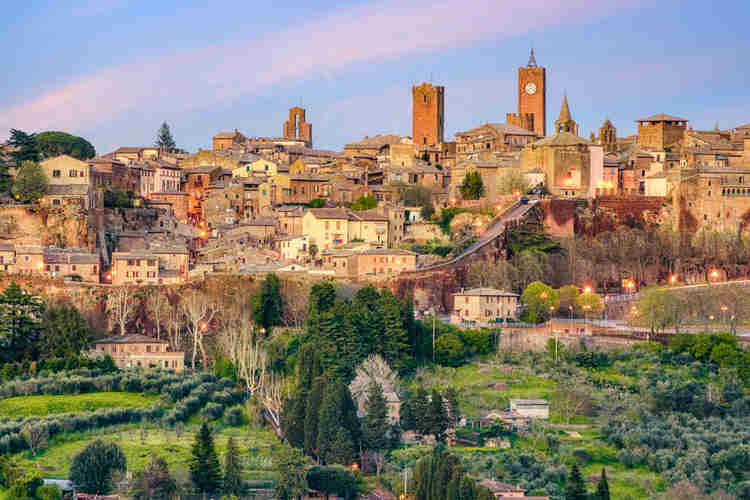
Day 6: Orvieto
Your next destination on this one week in Umbria itinerary is the stunning town of Orvieto. Perched on a volcanic tufa plateau, Orvieto boasts an impressive architectural and historical heritage that’s well-preserved.
This “island in the sky” city will enchant you with its gorgeous Romanesque, Gothic, and Renaissance buildings in honey-colored hues. As you wander through the ancient streets, you’ll be greeted by colorful flowers and charming ceramic shops.
The star of the show in Orvieto is undoubtedly the grand cathedral, one of the most breathtaking churches in the world. You’ll also find countless noble palaces, monumental churches, and museums with collections of treasures.
Here’s my guide to spending one day in Orvieto , which covers all the town’s top attractions actions. It also give you tips on where to stay and where to eat in Orvieto.
I started my visit to Orvieto with a 2.5 hour guided private walking tour . My guide was Emma and she was excellent, making the cathedral and its beautiful art works come to life.
You can also book a 3 hour small group walking tou r that includes the cathedral, the old town, and Orvieto’s underground.
If you haven’t booked a tour, the first thing to do in Orvieto is make a beeline to the magnificent Orvieto Cathedral . The church has one of Italy’s most beautiful facades.
It’s a glittering confection of spires, spikes, golden mosaics, statuary, stained glass, and black and white striped marble.
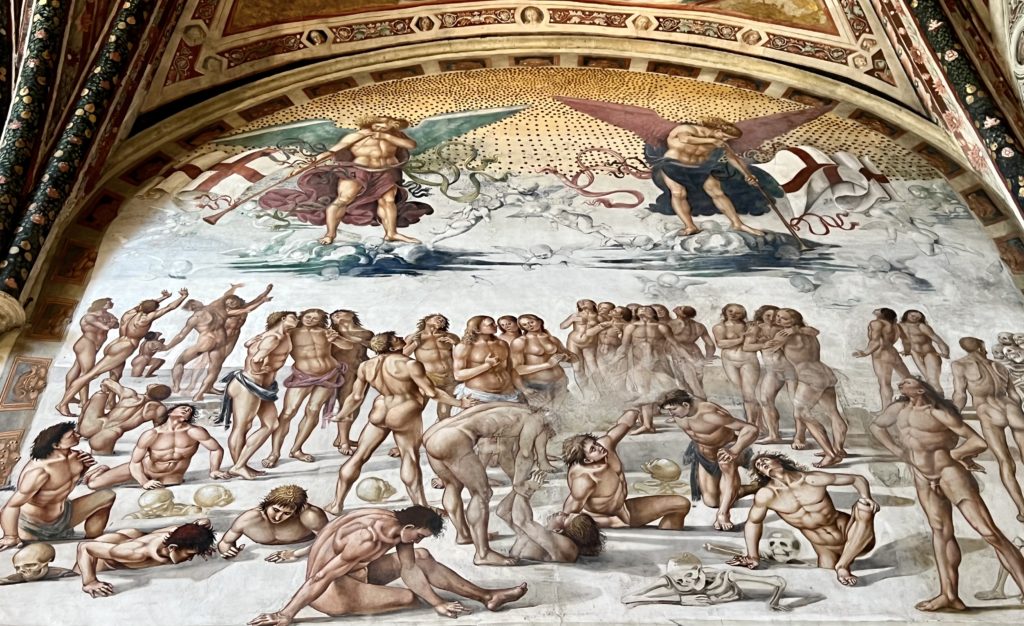
Inside, there’s a chapel containing a holy relic and another famous one covered in stunning early Renaissance frescos painted by Luca Signorelli.
The frescos are considered Signorelli’s masterpiece, his greatest and most complex work. With brilliant colors and sweeping designs, they’re one of the most ambitious and inventive depictions of the apocalypse and last judgment in Italian Renaissance art.
When you’re done admiring the cathedral, pop into the cathedral museum, the Museo del’Opera del Duomo. It’s included in your Duomo ticket.
It holds important pieces of painting and sculpture from the Duomo dating from the 13th to 17th century. There are works by Simone Martini, Andrea Pisano, and Signorelli.
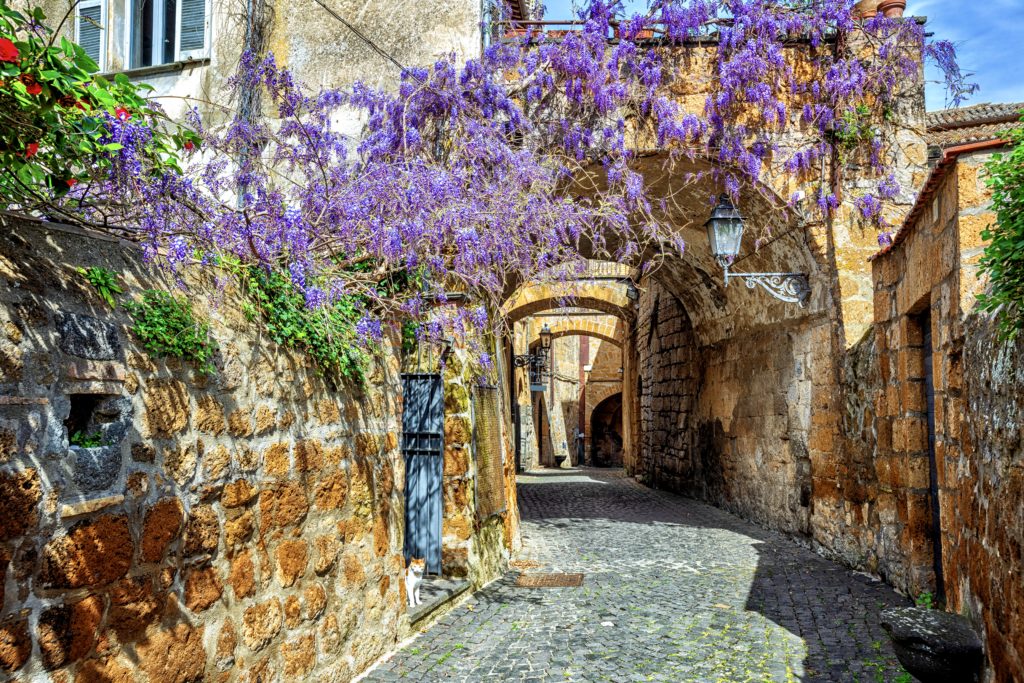
Day 7: Orvieto, Civita di Bagnoregio, And/Or Narni
You have several options for the last day of your one week in Umbria.
You could continue sightseeing in Orvieto with an afternoon jaunt to Civita di Bargnoregio. Or, combine Orvieto or Civita with the charming hidden gem of Narni.
Orvieto is a town that’s usually visited on a day trip. But you may enjoy it more if you take your time and spread your visit over 2 days.
On your next morning, explore Orvieto’s fascinating underground. You can start with a visit to Saint Patrick’s Well. The seemingly bottomless well is a masterpiece of engineering. It’s 175 feet deep and 45 feet wide.
The well was built by Antonio da Sangallo the Younger for Pope Clement VII. The pope often sought refuge in a fortified Orvieto after the Sack of Rome.
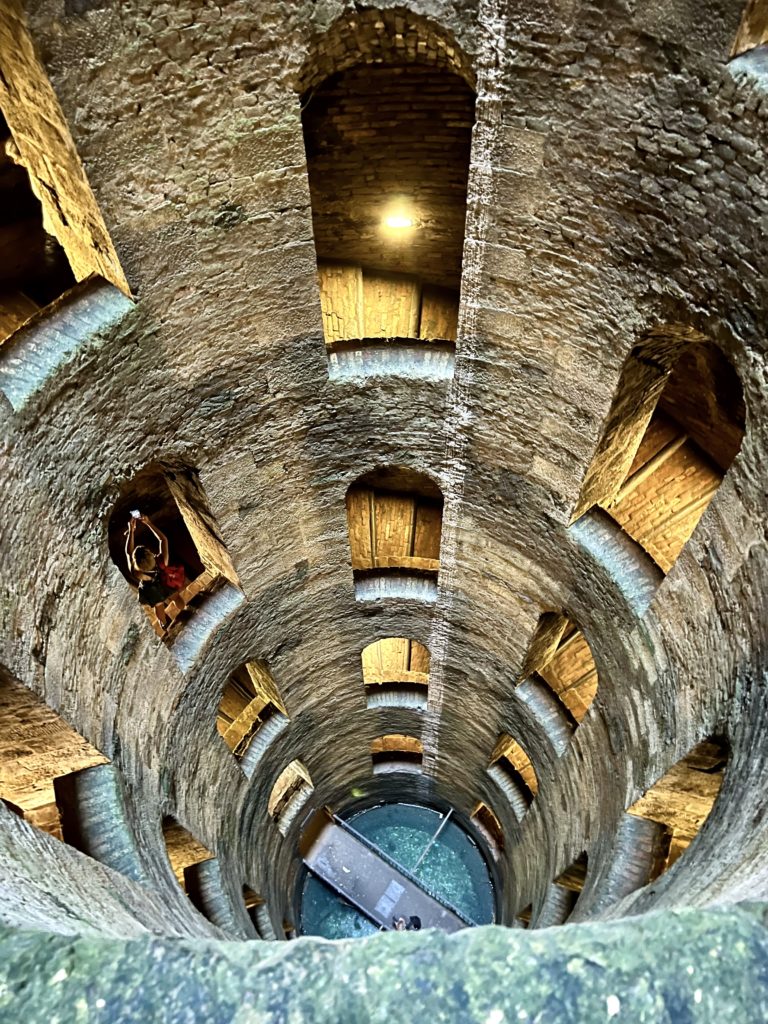
If you want to hike up and down, the round trip is 497 steps (some are uneven).
The Pozzo della Cava is one of the town’s most important archaeological sites centered around a deep well. The Pozzo itself is 118 feet deep.
The complex adjacent to the well includes dozens of caves, rooms, Etruscan tombs, pottery, shafts, etc. You may want to book a guided walking tour to have a guide “read” the grotto-like rooms for you.
The necropolis, the Crocifisso del Tufo, is a small “city of the dead” located outside the city walls. It dates from the 8th to 3rd century B.C.
Civita di Bagnoregio
After visiting Orvieto, take a short 30 minute drive to the charming village of Civita di Bagnoregio. Of all the picturesque hill towns in Italy, Civita di Bagnoregio is perhaps the most surreal and dreamlike.
This tiny village appears to be suspended in midair, like an architectural masterpiece on a tufa hilltop in a vast canyon.
To reach the village, you must cross a dramatic cantilevered bridge that rises steeply to meet the village walls. The bridge adds to the village’s mystique and is a breathtaking sight in itself.
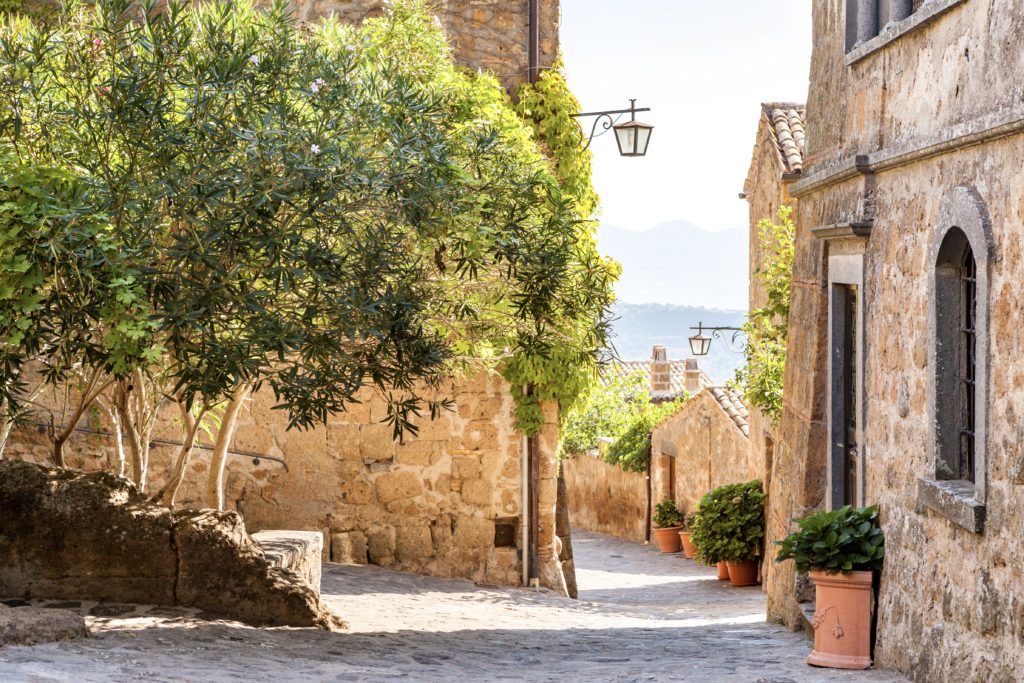
Once inside the village, the charms of Civita are subtle. There’s nothing special to do but wander around in this step-back-in-time rural village. It’s just romantic and unadulterated old world Italy.
Stroll aimlessly down charming lanes, where every nearly every inch of space is festooned with flowers.
Have a seat on the steps of San Donato Church. Admire the flowerpots and warm stone walls that glow in the sunshine.
Here’s my complete guide to visiting Civita di Bagnoregio .
If you’d like a guided tour of the town’s sites and history, you can check out this 1.5 walking tour .
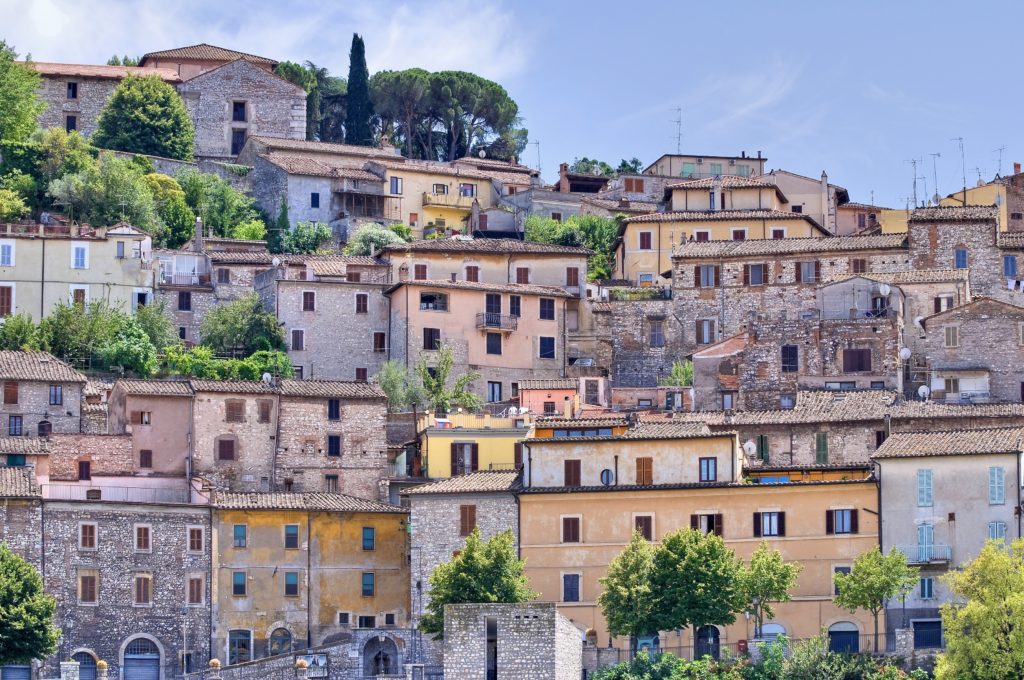
If you decide to visit Narni, the drive down south to the town is stunning.
Narni is a tiny hamlet, tucked away in a lush, almost wild, landscape. It was built on a rocky spur overlooking the Nera Gorge.
The town’s medieval heritage is entirely intact. You can wander through the charming squares and narrow streets and climb the stone steps.
Narni Fortress, the Rocca , dominates the whole town. It was built by Cardinal Albornoz as a symbol of papal power.
The central square is Piazza Garibaldi. This is where you’ll find the Narni’s 11th century Duomo. It has a simple facade with an elegant arched portico.
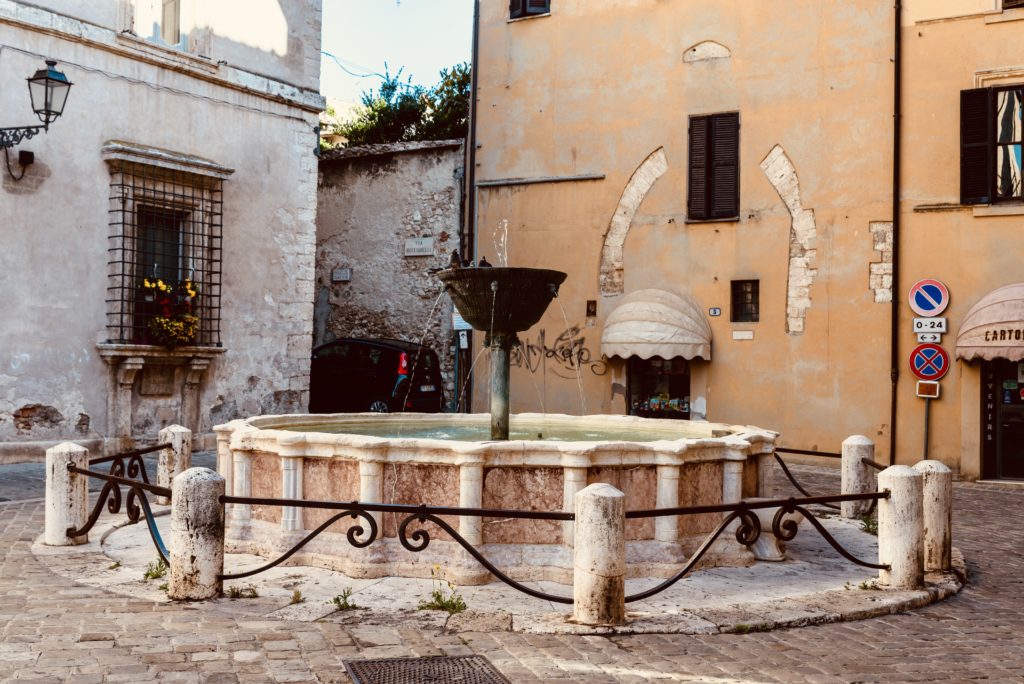
The Piazza dei Priori is home to both the Palazzo dei Priori and the Palazzo del Podesta (the Town Hall).
Like Orvieto, Narni has a network of underground sites, Narni Sotterranea . It was only discovered in 1979.
You can see a 12th century chapel smothered in frescos, secret tunnels, an Inquisition torture room, and a prison cell covered in graffiti.
If you’d like to book a walking tour, this 2 hour guided tour covers Nani’s history and attractions.
If you need to grab a meal in Narni, try Rustico or Osteria Monte del Grano .
And that’s a wrap. I hope you’ve enjoyed my one week in Umbria itinerary. You may enjoy these other Italy travel guides and resources:
- 5 day itinerary for Rome
- Hidden gems in Rome
- 1 day itinerary for Vatican City
- 3 day itinerary for Florence
- 2 day itinerary for Venice
- 1 day itinerary for Milan
- 1 day itinerary for Siena
- 10 day itinerary for Tuscany
- 10 day itinerary for Italy’s classic cites
- 11 ways to spend 1 week in Italy
- 30 beautiful towns in Italy
If you need a 1 week in Umbria itinerary, pin it for later.
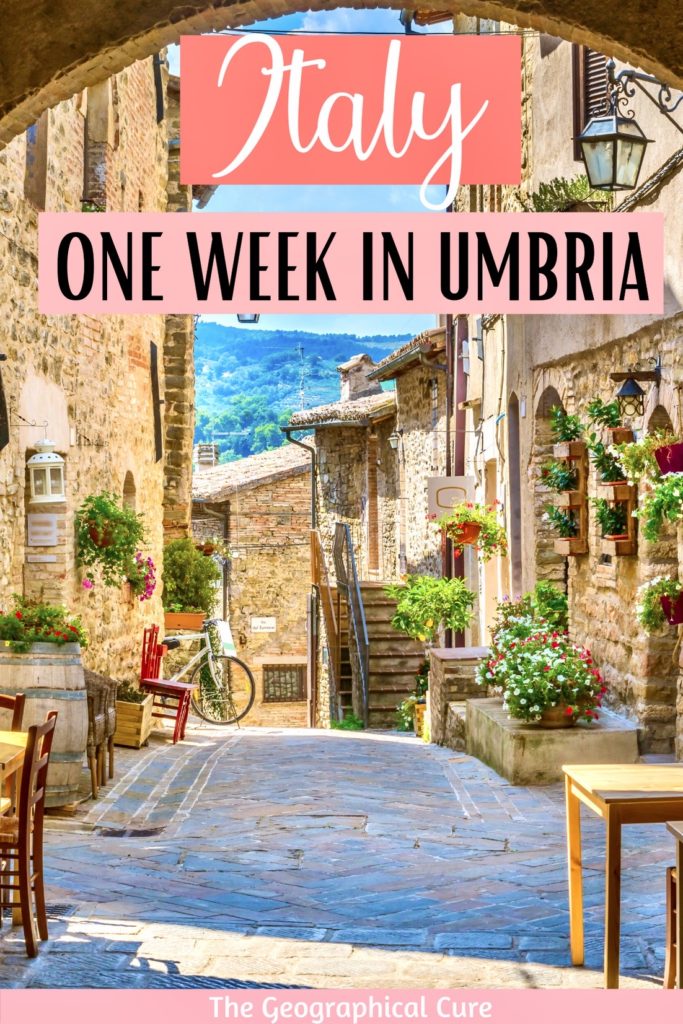
6 thoughts on “The Perfect One Week In Umbria Itinerary”
Really great article. One omission I’d love you to add is a section on “Parking in these towns”. I have heard parking can be hard or impossible…some places like Assissi don’t allow cars. So how on this driving itinerary should I think about parking? Thanks!!
There are parking lots on the outskirts of all the towns. You’ll see them as you approach. Park there and walk into the centro storico. For Assisi, the best parking places are at the Port Nuova or Matteotti lots. You’ll see signs as you approach the city. Here’s my article on Assisi: https://www.thegeographicalcure.com/post/things-to-do-in-assisi . I have articles on Oriveto and Gubbio too.
thanks a lot for your recommendations , will use it coming June
You’re welcome! Enjoy Umbria!
Hi Great article. One question how is the driving to get from town to town? Are the roads windy, hilly narrow and scary to drive on? Steep cliffs on the road ?
Mostly, it’s perfectly fine as long as you park outside the historic center of a town and walk in. Some of the roads are a bit hilly and winding, but nothing that really bothered us driving. There are no steep cliff drop offs at all that we encountered. The one thing is that it can be quite dark driving at night.
Leave a Comment Cancel reply
Save my name, email, and website in this browser for the next time I comment.
Last Updated on October 20, 2023 by Leslie Livingston
Umbria Tourist Guide

What to see and where to stay in Umbria, Italy
Umbria tourist guide and travel information.
The cities of Umbria all have a Tourist Information Office near the centre of the city. In smaller towns, look for the ProLoco Office which is manned by volunteers and serves the same purpose. All of these offices provide maps and a range of brochures describing local sights of interest and bus routes.
What to see and do in Umbria
Umbria is a Region (the Italian equivalent of a US State or UK County) in central Italy is essentially rural and characteristically presents vistas of verdant green countryside dotted with hilltop towns, and is packed with interesting things to see and do. The not-to-be-missed towns of Umbria are Perugia (population about 170,000 and the largest town in Umbria), Assisi , Orvieto , Gubbio , Todi , Spoleto and Norcia . Each has enough to keep you busy for a day or more, and none is more than a few miles from the next, making Umbria manageable and straightforward to explore. Smaller and very rewarding towns and villages of Umbria include Montefalco , Bevagna , Spello , Trevi , Narni , Bettona , Città di Castello , Città della Pieve .
Umbria is well-known for its many churches, a few of them going back to Roman times (notably in Assisi , home of Saint Francis), many of them Romanesque, many of them with beautiful frescoes or sculpture. The frescoes by Giotto in the Basilica di San Francesco in Assisi mark a turning point in the history of Western art. Roman remains are far more common in Umbria than in neighbouring Tuscany, due, obviously, to the greater proximity to Rome and to the presence of the via Flaminia running from Rome through Umbria to the Adriatic at Rimini. Roman remains include some fine bridges, the Roman bridge at Narni being the largest Roman bridge ever built.
The pastoral scenery of Umbria – the olive groves, vineyards and cypress forests – and the high mountain landscapes such as the Monti Sibillini are a major part of the appeal of Umbria to visitors from abroad.
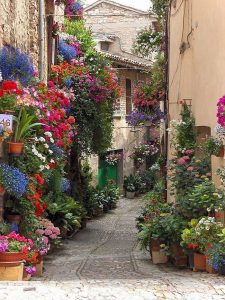
When to visit Umbria
Much of the countryside of Umbria is at its best in May, when the wild flowers are out and the weather is already warm. The exceptions are the mountains in the east, where the weather during May can be cooler and the Monti Sibillini are often still streaked with snow. We recommend early June for a hill country hike or see to the famous wild flowers of Sibillini and the Piano Grande, a vast upland plain above Norcia.
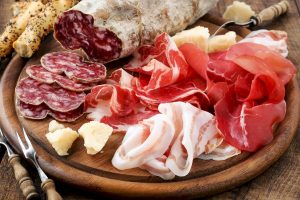
Where to stay in Umbria
It’s often a good idea to decide on the kind of location and what type of vacation accommodations you prefer before booking and certainly before visiting Umbria, to avoid consuming your valuable vacation time searching for a place to stay. Booking in advance has the same advantage: making the decision to find a place while you’re travelling can definitely waste a huge amount of time. In a similar vein, it’s recommendable to select a base and stick to it. Changing your accommodation every 3-4 days can wipe out a whole day with each change.
The types of holiday accommodation offered all over Italy are well described here – in summary: hotels, villa hotels, villas, farmhouses, apartments and rooms, including B&B rooms. There is sometimes confusion about what constitutes a “villa” in Italy – this subject is clarified here . but, in brief, a true villa is a large structure with numerous rooms, while a family-sized, stand-alone house is basically going to be a farmhouse, a casa colonica . What type of accommodation you pick for your stay in Umbria basically hinges on how many of you there are, on whether you want a swimming pool and/or garden or not and on your budget.
Location, aside from the town you want to be near, is basically a choice between town or countryside (there are no beaches in Umbria!). Your mode of transport will play a role in this decision, as will whether you plan to eat and spend your evenings where you are staying or to be out and about.
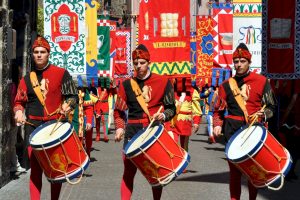
All about Umbria Italy – what to see and do when you visit Umbria.

- Bologna, Modena, Parma
- Tour Calendar
- Travel in Italy
- Why Tour with Us
tour umbria – italy’s green heart
SMALL GROUP UMBRIA TOURS
Tour Umbria with Untold Italy and discover this beautiful land of quiet contemplation, Medieval hilltop towns and a rustic soul.
Known as Italy’s “green heart”, the central Italian region has no coastline or international border, which may explain why many of its ancient Etruscan traditions endure there to this day.

Upcoming Small Group Umbria Tours


In Spring and early Summer our Umbria tour guests experience the emotion and community spirit of Spello’s Infiorata flower festival or the Bevagna Medieval Fair.
There’s a different atmosphere in Fall when the leaves are turning and a chill in the air lends itself to tasting local red wine and the hearty winter dishes of the region.
No trip to Umbria would be complete without admiring the city Assisi, dedicated to St Francis. We make a stop here and to the capital Perugia too in both seasons.
Our gastronomic and sightseeing adventures are paired with local wines and understanding of the rich Umbrian history and culture. By the time we say farewell, you’ll be dreaming of returning to this hidden paradise not far from Rome as soon as you can and ordering Sagrantino and Grechetto wine like a local.
What Our Guests are Saying About Untold Italy Tours

Magical! Beautiful! I’m a bit of a dreamer and I just got lost there last night. Lost in this beauty.. Magnificent! I just loved it – view video

We have been to Italy several times, but never like this. It has been a wonderful experience – view video

Aside from every little surprise around every corner, I’ll remember Cosimo and the genuine excitement and pride that come out of him and his storytelling – view video
Discover Umbria
We’ve fallen head over heels with Umbria’s towns, villages, food and wine. Tucked in between Rome and Tuscany, this delightful region of Italy has been hiding in plain sight, just waiting to be discovered and enjoyed by those who appreciate tradition, history and respect for the land.

Umbria Travel Guide
Uncover the highlights of the region

Dishes from Umbria
Tastes of Umbria to try on tour
Stay in touch
Keep up to date with our latest tours and upcoming departures
- Why Tour With Us
- Our partners
- Terms and Conditions
Farmhouse Ai Prati
Santa felicita paterna, hotel gallano, wine cellar vini di filippo, brewery monastero di san biagio, la tavola dei cavalieri, "acciaccata" festival 2016.
- May 16, 2016
- webmasterpiramedia
"Ciaccia Fritta" Festival
- September 12, 2016
"Do the right thing! " - Exhibition of sustainable lifestyles
- September 23, 2015
24° edition Eurochocolate
- September 19, 2017
Typical products
- FARM HOLIDAYS
- Città di Castello
- felicitapaterna
- HotelGallano
- vinidifilippo
- WINE CELLAR
- Nocera Umbra
- monasterosanbiagio
Basilica di Santa Chiara
- October 4, 2018
Orvieto Cathedral
Basilica of Santa Rita
Basilica of St. Francis
Exhibition 100 Tables and Other Stories. Ulisse Ribustini in Perugia…
- February 2, 2023
International Journalism Festival 2023
Username or Email Address
Remember Me
Lost your password?
SIGN INTO YOUR ACCOUNT
Where to fly on a budget this summer
Airfare experts share their forecasts for summer vacation destinations that won’t break your budget.

This summer is shaping up to be another scorcher , and the demand for summer travel is piping hot, too. If early 2024 trends are any indication of what’s to come, “it’s looking to be busier than 2023,” said Katy Nastro, spokesperson for the flight booking site Going . Recent airport passenger volume numbers have regularly exceeded last year and pre-pandemic levels.
Jeff Klee, CEO of CheapAir.com , says airline capacity has rebounded from pandemic complications, but strong travel demand means summer flight prices can be high, depending on when you’re hoping to go. Flying in June, July or early August will be more expensive than later in the season, according to the company’s summer forecast .
“And it’s not just the airfare,” Klee said in an email. “Expensive hotel rates and crowds everywhere make Western Europe tricky for the summer.”
Despite the price tag, “people are going to go,” said Melanie Fish, the head of global public relations for all Expedia Brands, including Vrbo, Expedia and Hotels.com . “When we look at searches for destinations, they are definitely up year over year.”
For popular destinations like Europe , Klee and Fish say to push trips later into August, September or even October. Not only will prices soften, but you’ll alleviate some of the strain of overtourism .
“My number one tip is go ahead and take that summer vacation, but maybe hold on to take that big, big trip in September,” Fish said.
According to Expedia’s summer 2024 travel outlook , we’re currently in the sweet spot for shopping for early summer flights at the best rates, as Fish says lower fares tend to pop up 21 to 60 days out. It doesn’t hurt to start your search even earlier, setting up price alerts to flag when airfare drops. If you can swing it, look to fly on a Monday for international trips or a Tuesday for domestic trips to save up to 15 percent on fares, Fish added.
It’s not impossible to find good deals on airfare, whether you’re looking for a tropical beach trip , a mountain adventure or a vibrant city. Here are places that are trending cheaper — and the destinations you’ll want to avoid.
Go to Mexico
Sun, surf, culture, chilaquiles — Mexico is always a good idea , but particularly so this summer. With the opening of the new airport in Tulum , U.S. airlines have been adding gobs of new flights to Mexico, particularly to beach regions. “We’ve seen a healthy amount of deals down to Mexico resort areas like Cancún,” Nastro said.
Laura Lindsay, global travel trends expert at Skyscanner , says three Mexican cities — Cancún, San José del Cabo and Puerto Vallarta — are among the top 10 destinations offering travelers the best bang for their buck in 2024.
To escape the summer heat, Phyllis Stoller, president of the Women’s Travel Group , recommends high-altitude destinations like Mexico City or Ixtapan de la Sal, a town near Mexico City with thermal springs.
Avoid European port cities
If you’re considering a visit to a popular European city that’s also a cruise hub, beware. Not only will you be battling the usual summer crowds, you’ll be joined by thousands of day-trippers flooding into the ports — meaning Barcelona, Venice , Athens and Santorini.
Sandra Weinacht, who co-owns the tour company Inside Europe Travel Experiences , says you can avoid some of the madness in these hot spots by staying in neighborhoods away from the typical tourist zones. You can also visit top sites in the late afternoon or evening, after cruise travelers have returned to their ships.
Better yet, wait to visit until the shoulder season
Go to Colorado
Epic hiking, breathtaking nature and more craft beer than you could ever try in a lifetime: The Centennial State is a domestic gem. Ashlee Collins of Inspirato , a luxury travel and lifestyle subscription service, says Vail is popular among members this summer. Not only is the ski resort beautiful sans snow, it’s drivable for many, cutting a significant cost for travelers.
Airfare to Colorado is looking more reasonable than other domestic vacation hubs. Nastro recently spotted a Miami-to-Denver, round-trip fare over the July Fourth holiday for just $199. She says an average round trip from major U.S. cities is running between $173 and $250, but those prices are expected to climb upward of $350 the closer we get to summer.
Avoid places at risk for wildfires
Wildfires have become an unfortunate fixture of summers in the Northern Hemisphere. Last year’s fires in Europe — including those in Cyprus and Greece — were among the worst so far this century, the European Commission reported .
Stoller says fire risk has been a factor in her summer travel planning; she nixed a New England cruise after remembering how bad smoke was last year because of the fires in Canada . “None of us can predict everything, but that would be something I would be aware of,” she said.
Extreme heat is also an issue. Last July, Southern Europe experienced excessively high temperatures from a “heat dome.”
“There’s a concern about heat,” Stoller said. “Last summer was really painful.”
Go to the Caribbean
The Caribbean has its peak tourist season during the winter, when Americans flock to warmer waters. That means summer trips to the region tend to be quieter and cheaper.
“You can go under $300 to pretty much all of the islands: Puerto Rico, Jamaica, Aruba, Dominican Republic,” said Lindsay Schwimer, a consumer travel expert at Hopper . She’s seen similar price point flights to Colombia.
Lindsay of Skyscanner also said Puerto Rico and the Bahamas offer some of the most affordable flights from the United States this summer.
Avoid Paris
Unless you’re going for the Olympics , skip the French capital this summer.
“Paris is always a top destination in the summer, but this summer … it’s going to be on another level,” said Madison Pietrowski, head of U.S. brand at GetYourGuide .
Not only are hotel prices high, “we’re seeing that some of the top attractions like the Louvre have raised their ticket prices,” Pietrowski said.
Nastro says the crowds are going to be “bananas” during the Games, and not just in Paris. Olympic travelers are likely to add on other French destinations to their trip, like Nice — which will host soccer games — or the Côte d’Azur, which already gets popular in the summertime.
Even if you try to get ahead of the rush by visiting before the July 26 start date, you may still have some Olympics-related headaches in the French capital. As the city races to finish prep, “you might find that there’s going to be eyesores and scaffolding and loud noises early in the morning,” Nastro said.
Go to rural Europe
Interest in Western Europe has not slowed down, and Americans are expected to surge back en masse this summer. If you’d like to avoid them, put rural European destinations on your radar.
Weinacht is bullish on Spain’s Rioja region , the Basque countryside and the central Italian region of Umbria, which borders Tuscany but does not see the same levels of tourism. She’s also a fan of Carinthia, the least-populated state of Austria. “It is castle- and lake-dotted, doesn’t get too hot, and oh, the food and stories the cities and villages can tell,” Weinacht said in an email.
Weinacht says she’s been getting more requests from Americans for trips to her homeland, Germany. The country is easy to navigate with its high-speed trains, and offers a mix of small and big cities spread across powerhouse wine regions, UNESCO World Heritage sites and many food festivals . According to Skyscanner, airlines in the United States have been increasing their flights to Germany — namely, Frankfurt, an international business hub — meaning you may be able to find more deals.
Avoid Sicily and Amalfi
If your dream Italian destination has been featured on TV lately, that’s a red flag. The last season of “The White Lotus” spurred an interest in already popular Sicily ; the same is happening to the Amalfi Coast thanks to the new Netflix miniseries “Ripley.”
“They’re really going to be the most expensive and they’re going to be pretty crowded for the summer,” Schwimer said.
Where to go
Our favorite destinations: These 12 destinations are at the top of our wish list for where to go this year, without crowds. In 2023, we explored an Alaskan bear paradise, Brooklyn’s famous pizzerias and a hidden gem in Italy, among other highlights .
Travel like a local: Residents share their favorite places in our top city guides: New Orleans , Rome , Tokyo and Mexico City .
National parks: This comprehensive guide has details on all 63 U.S. national parks. For a deep dive into five of the most well-known, you can listen to the Field Trip podcast . Then explore tips from locals for visiting Yosemite , Glacier and Everglades .
Tales from the road: Dolly Parton has opened a new resort at her theme park complex in Tennessee, while “Fixer Upper” stars Chip and Joanna Gaines have a new hotel in Waco . Road-trippers may be just as excited to see the cartoon beaver at Buc-ee’s , and bargain-hunters should consider a stop at the Unclaimed Baggage store in Scottsboro, Ala.


IMAGES
COMMENTS
Find out everything you need to know about tourism and holidays in Umbria, the Green Heart of Italy. Explore its landscape, culture, sports, food and wine, handicrafts and spirituality with travel proposals, events, offers and news.
So, here are the best things to do in Umbria that will help you make the most of the region. 1. Visit Perugia, the capital of Umbria. Piazza IV Novembre in Perugia. In the centre of Umbria, Perugia is the region's main town. It boasts an impressive cultural history, with roots in its Etruscan past.
Italy, Europe. Italy's green heart, Umbria is a land unto itself, the only Italian region that borders neither the sea nor another country. This isolation has kept outside influences at bay, ensuring that many of Italy's traditions survive today.
For your awesome experience in the region, here's our guide to the best things to do in Umbria, Italy. 1. Spend a day or two in Perugia. Perugia, the Umbrian capital, is located in the heart of the region and is a popular tourist destination — a must when you visit Umbria. Rocca Paolina, Italy's largest fortress, towers over this Etruscan ...
Umbria is located in Central Italy and borders Tuscany, Lazio, and Le Marche. Whilst it's a landlocked region, there are many beautiful lakes to discover including the best known Lake Trasimeno. It's south of Florence, Milan, and Venice and north of Rome. By car, it takes just under two hours to reach the capital, Perugia, from Florence and ...
10. Tili Vini Societa Agricola. The Tili Winery is a family organic farm, located in Umbria, the green heart of Italy, on the sunny and stony hillsides of Mount Subasio overlooking the near town of Assisi; and it produces high quality organic Wines "Assisi DOC" and "Umbria IGT" and Extra Virgin Olive Oils.
The enormous domed church you see as you approach Assisi along the Tiber valley is the 16th-century Basilica di Santa Maria degli Angeli, some 4km beneath…. 1. 2. 3. Discover the best attractions in Umbria including Basilica di San Francesco, Duomo, and Funivia Colle Eletto.
4. Visit Spoleto: Top Thing to do in Umbria. Spoleto is often thought of as one of the most beautiful cities in Umbria, and it's hard to argue! The typically Italian town sits among rolling hills and has an eye-catching icon: the beautiful aqueduct named Ponte Delle Torri. The bridge is 80 meters high and 230 meters long and is an impressive ...
From Assisi to Perugia, via Gubbio, Lake Trasimeno and Marmore Falls: Umbria is a truly enchanting tourist destination. Peaks covered in lush forests and large valleys outlined by rivers, lakes and waterfalls; sorrounded by villages and castles, crossed by paths steeped in history, art and culture, in a natural environment that helps to restore ...
3. Perugia. Nestled within central Umbria, Perugia is the region's thriving capital. This picturesque Etruscan town is charmingly medieval, with a backdrop dominated by Italy's largest fortress, the Rocca Paolina. Believed to be older than Rome, Perugia definitely lives up to its steadfast reputation.
Italy is generally a safe place to visit, and Umbria quite follows the trend. In fact, considering crime rate, Umbria falls among the top 5 safest Italian regions. Where present, crime tends not to affect tourism in Umbria, with the worst scores usually referring to drug-related crimes and bribery/corruption.
Visit Mount Sibillini National Park. For more trekking and outdoor activities, drive to Monti Sibillini National Park and roam around the highest mountains in Umbria. Monte Vettore reaches 8132 feet above the sea, yet the area exudes a mellow atmosphere more suited to gently rolling hills.
In the most beautiful roads of Umbria you can find, between spirituality and nature, several sacred and secular ideas, which are always exciting Explore the region Peaks, not very high, covered by luxuriant woods and large valleys designed by rivers, lakes and waterfalls; hills often surrounded by villages and castles, crossed by paths full of ...
About Umbria. Centrally located Umbria's principal cities include Spoleto, Assisi, and Terni. The capital, Perugia, is famed for its chocolate. Take a tour bus or prepare for daredevil Italian drivers if you opt to rent a car. Assisi's Basilica has a host of treasures, including works by Giotto.
MORE TIME TO TRAVEL. 23. Note: This is a revised and updated version. of a story that I previously wrote for Forbes.com. # Assisi # Gubbio # Italy # Orvieto # Perugia # Spoleto # Umbria. Here are five of the best places to visit in Umbria, as suggested by the owners of Fuoritinerario, a boutique Italian tour company.
Umbria is a green, agricultural region with no coastline but rich in history and culture. Explore its capital Perugia, the Etruscan city of Orvieto, the medieval hill town of Assisi, and the scenic Lake Trasimeno. Find out how to get there, where to stay, and what to do in this guide.
Rough Guides® is a trademark owned by Apa Group with its headquarters at 7 Bell Yard London WC2A 2JR, United Kingdom. Plan your visit to Umbria, Italy: find out where to go and what to do in Umbria with Rough Guides. Read about itineraries, activities, places to stay and travel essentials and get inspiration from the blog in the best guide to ...
Gubbio is a gorgeous medieval town with a spectacular setting in northeast Umbria. It's a must visit destination with one week in Umbria. The stony town is practically carved into the side of Mount Ingino. I just loved it! Gubbio seems trapped in the Middle Ages, with block after block of pinky-beige Romanesque and Gothic architecture.
Umbria is a Region (the Italian equivalent of a US State or UK County) in central Italy is essentially rural and characteristically presents vistas of verdant green countryside dotted with hilltop towns, and is packed with interesting things to see and do. The not-to-be-missed towns of Umbria are Perugia (population about 170,000 and the ...
SMALL GROUP UMBRIA TOURS. Tour Umbria with Untold Italy and discover this beautiful land of quiet contemplation, Medieval hilltop towns and a rustic soul. Known as Italy's "green heart", the central Italian region has no coastline or international border, which may explain why many of its ancient Etruscan traditions endure there to this day.
Scopri l'Umbria, il Cuore Verde d'Italia, tra natura, cultura, sport e avventura. Trova le migliori offerte, eventi, itinerari e attrazioni per organizzare il tuo viaggio in Umbria.
Holidays in Umbria - Hotel, Farm Holidays, Restaurants, News, Religious Tourism. Also a wide selection of products from Umbria to buy online
Umbria tourism, Perugia, Italy. 107,999 likes · 459 talking about this · 88 were here. Pagina ufficiale del Turismo dell' 퐔퐦퐛퐫퐢퐚 - Italy @umbriatourism
Sandra Weinacht, who co-owns the tour company Inside Europe Travel Experiences, is bullish on Spain's Rioja region, the Basque countryside and the central Italian region of Umbria, which borders ...